Busan, Korea
Exploring Korea’s second largest city for a couple days.
Busan is the 2nd largest city in Korea with 3.5 million people
Located on Korea’s southeastern shore, it’s best known for its seaport and beaches
Traveling to Busan was a long time coming for me. I had lived in Fukuoka, Japan, just a short boat ride away but for some reason never made the trip.
I finally visited during my second trip to Korea in 2019.
Things to know
Google Maps isn’t as useful - locations are scarce, often don’t translate from Korean, and don’t contain detailed information
There’s a lot of walking - Escalators in train stations are limited, blocks are big and main streets are wide
How to get there
A lot of people, like us, will be flying in and out of Seoul and making Busan a mini-trip. Busan is only about a 3-hour train ride on the Korail KTX. You can reserve tickets online here, but just know that the site is not mobile-friendly and overall isn’t that good.
If you print out your tickets, you can bypass the ticket office and just go to board your train. It’s all reserved seating and our tickets were never actually checked or used.
Busan is also a short boat ride from Fukuoka, Japan. The JR Beetle is a hydrofoil that sails between Hakata and Busan in about 3 hours. You can purchase tickets here or on their Japanese site. They also have a higher end JR Queen Beetle set to start sailing in July 2020.
Where we stayed
Only spending two days and one night in Busan, we prioritized location and cost. We decided on the Brown Dot Hotel Seomyeong, probably a converted former love hotel or motel, conveniently located near Seomyeong and only a couple minutes from the station.
The hotel was fine for a short stay. The one issue was the toilet and shower area as the toilet is immediately next to the shower in a way that the toilet can get wet. This isn’t a hotel-specific issue, it seems that’s it’s a pretty common setup in Korea. They provided a range of amenities as well as access to take as many bottles of water as you needed.
From here, we went out and explored the city.
Seomyeong
Busan’s central area for shopping and eating out, and it was a short walk away from our hotel.
The Lotte Department Store is at the center, and there’s a bunch of terraced seating on the food court floor that featured tables and charging ports - great at providing a place to rest.
Food vendors open shop at night on the streets to the east of the department store. While we didn’t eat any of the street food, this is where we walked around to get some delicious meals (bottom).
Gamcheon Culture Village
One of the most photogenic spots in Busan. Sometimes nicknamed things like the “Santorini of Korea,” the hillside homes are covered with colorful pastels.
The area was built in the 1920s as housing for poor port laborers. After paining the neighborhood, Gamcheon transformed into an area of art and is one of the most popular tourist destinations.
We caught the #2 bus, one of a few that go up to the village, from near Jagalchi metro station (around here) up the hillside to the main stop (around here).
There’s a main street that goes through the village with cafes and touristy photo spots, but I recommend walking through the narrow alleys and stairways - it’s a lot more interesting and it puts you right at real residents’ front doors (obviously don’t be loud or disruptive).
Jagalchi Fish Market
Looking to eat some fresh fish in this port city, we went to check out Jagalchi Fish Market, the biggest in Korea. It’s located to the southeast of Jagalchi metro station - but anyone can just follow their nose!
There are numerous, old fish stands outside on the streets, and in the main building, aisles of sellers with tanks of all sorts of live seafood for sale. You can see and buy everything - eels, octopus, shellfish and everything in between.
We found a vendor and bought 2 fish for ₩400,000 (about $33 USD). They’re killed and cleaned right there, definitely not for the faint.
We were then led up to the second floor eating area where our fish were prepared into Korean-style sashimi and a hot pot. The cooking/seating fee plus a beer was an additional ₩19,000 (about $16 USD).
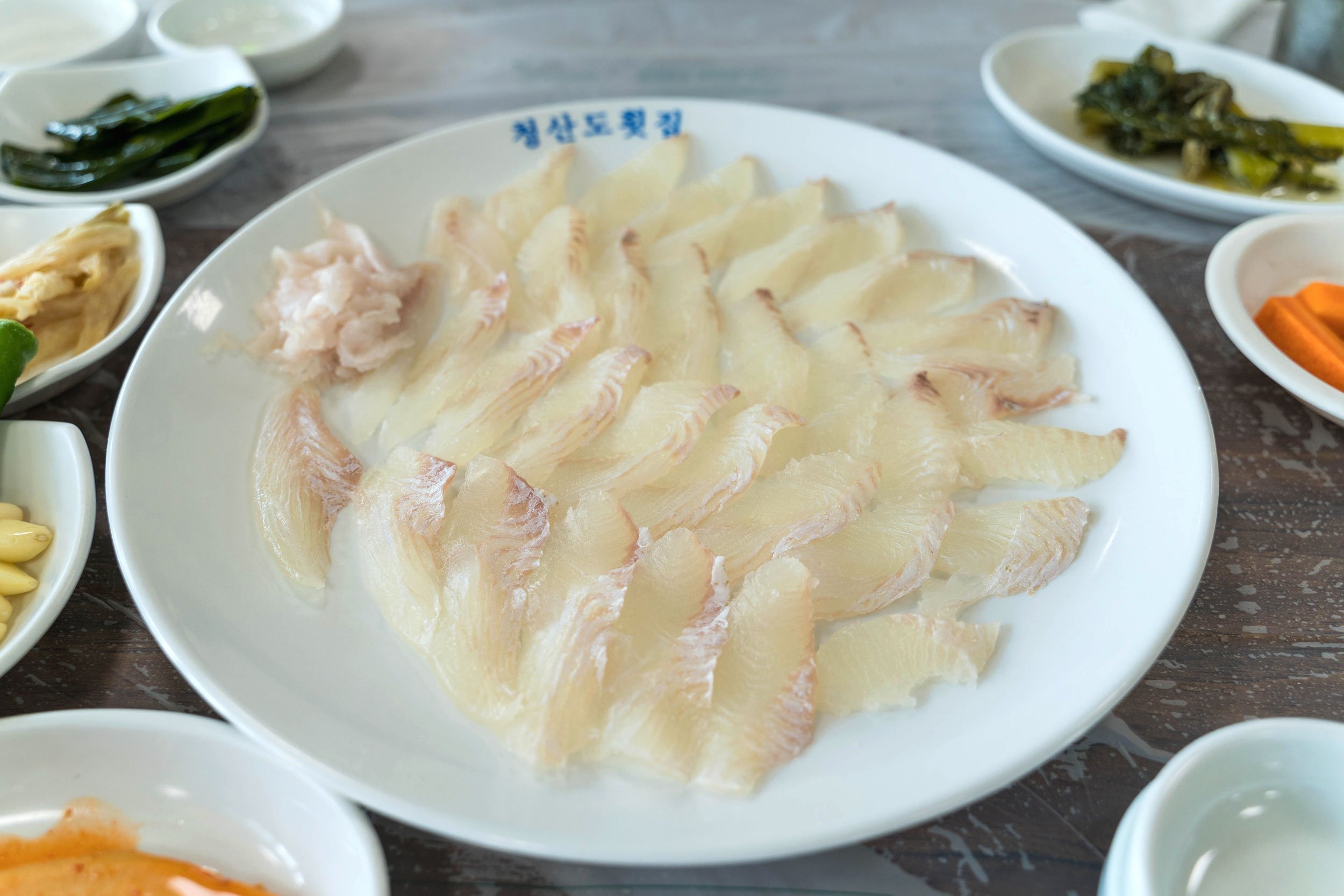
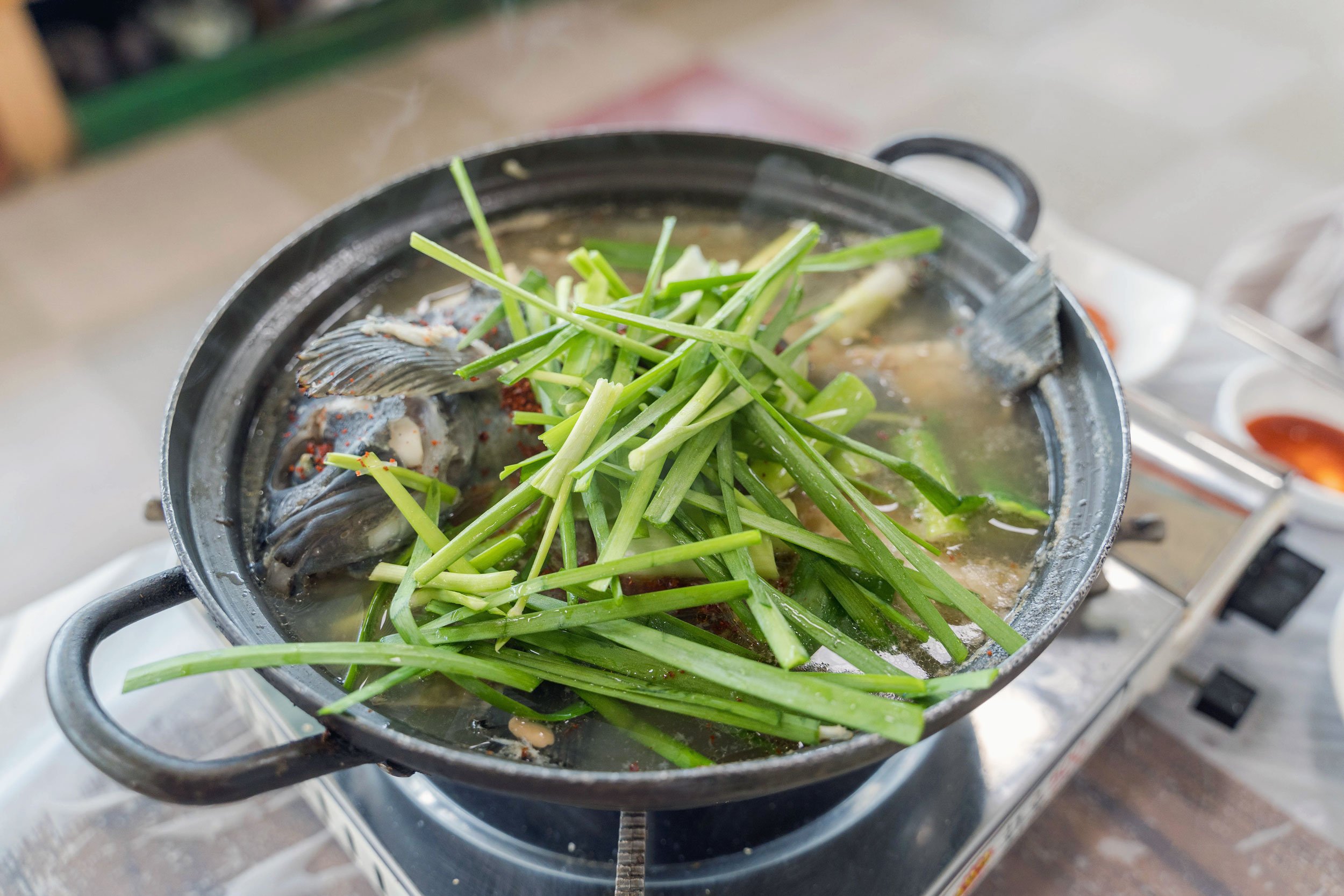
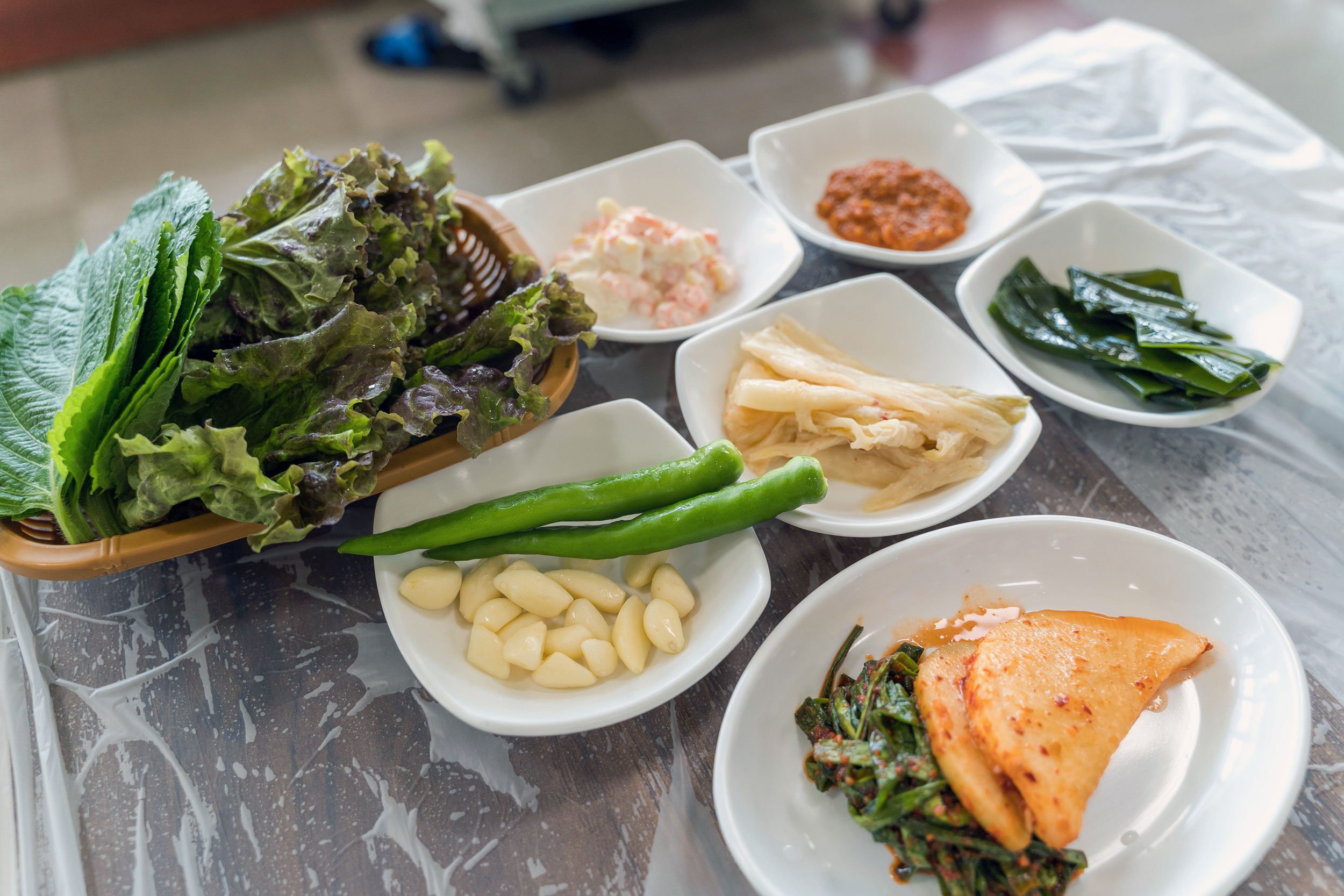
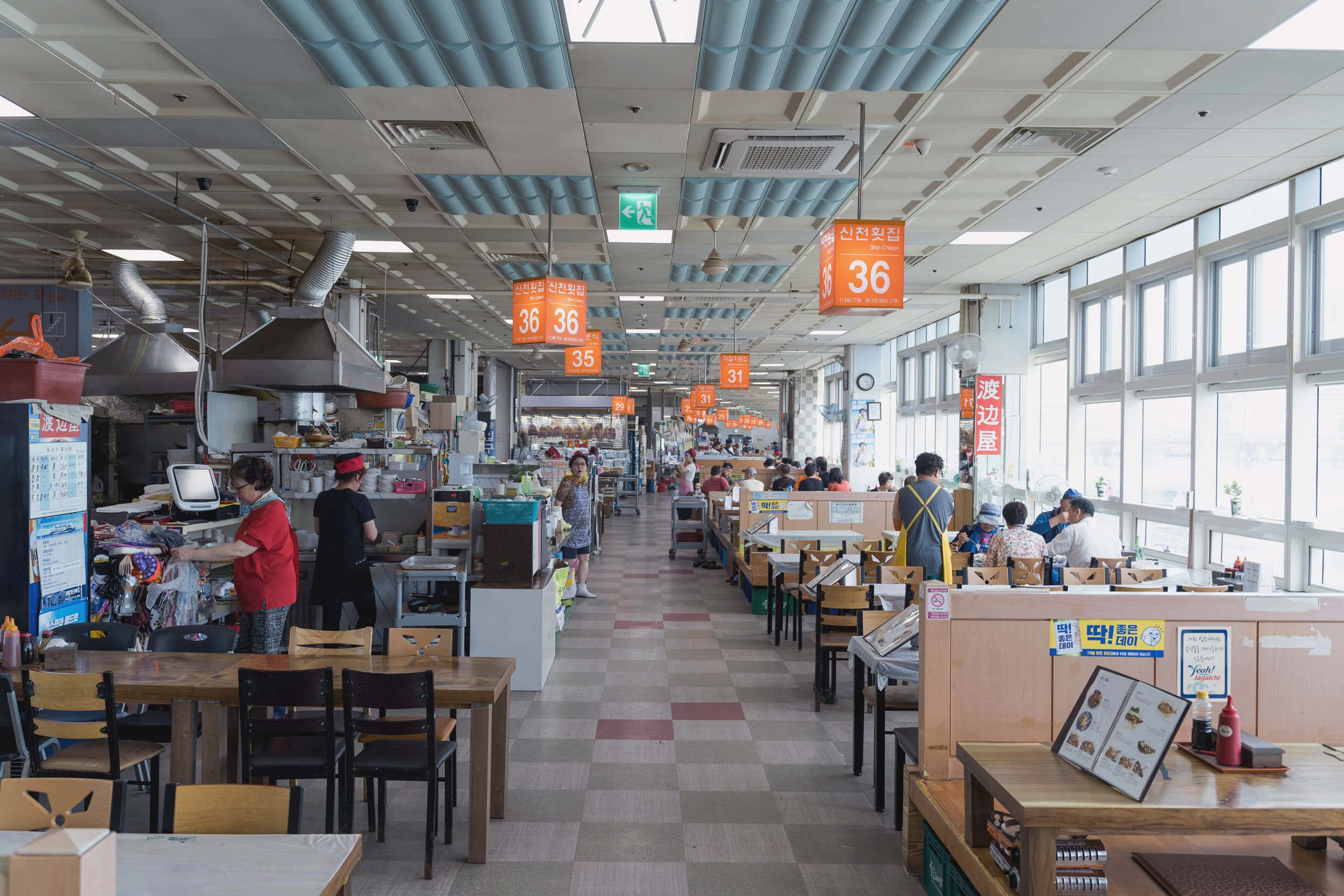
Gukje Market
Also known as Nampodong International Market, Gukje Market is right to the north of Jagalchi Fish Market and Jagalchi metro station.
The market started when refugees fled the Korean War and tried to make a living. It’s one of Korea’s largest markets, featuring alleys of souvenir shops and daily items, as well as street food stalls where you can pull up on a plastic stool for a bite.
While we didn’t do any shopping, it made for a very photogenic and immersive experience as we walked up to our next destination.
Bosu Dong Book Street
Books, books and more books. Bosu Dong Book Street started after Japanese occupation and during the Korean war. Books left behind by the Japanese were sold, and during the war, people sold their possessions for money. It continued to evolve until it’s become what it is today.
The area isn’t that big, but it is packed with small shops completely packed with books with the shop owner somehow fitting inside. For some shops, any more books may trap their owner. There’s even a shop that is only for photoshoots with books (there was a line, too), but we managed to take enough pics in the actual shops.
Finishing up our Busan trip here, we went back to Busan Station to head to our next stop: Seoul.
Gaemijip
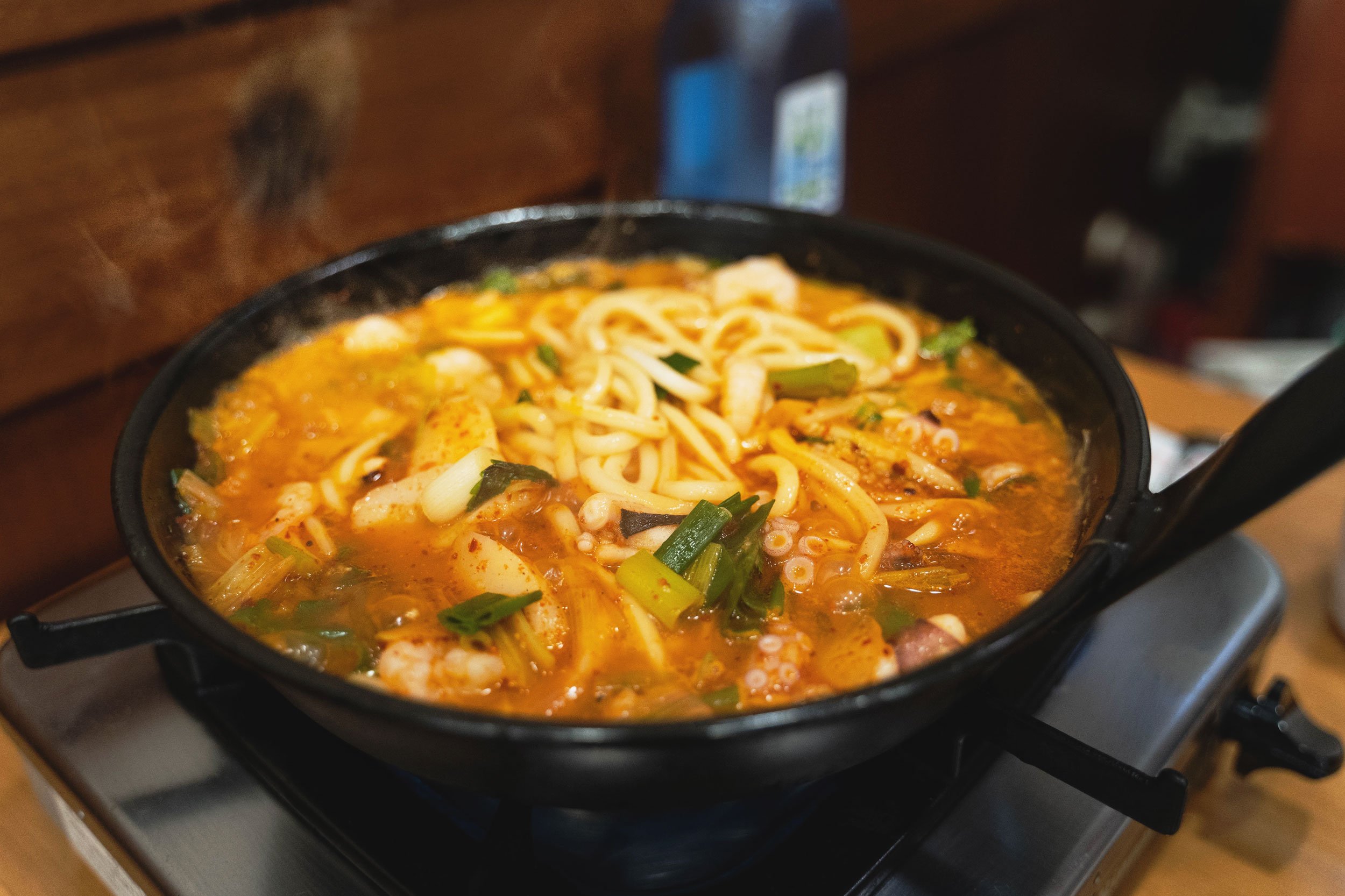
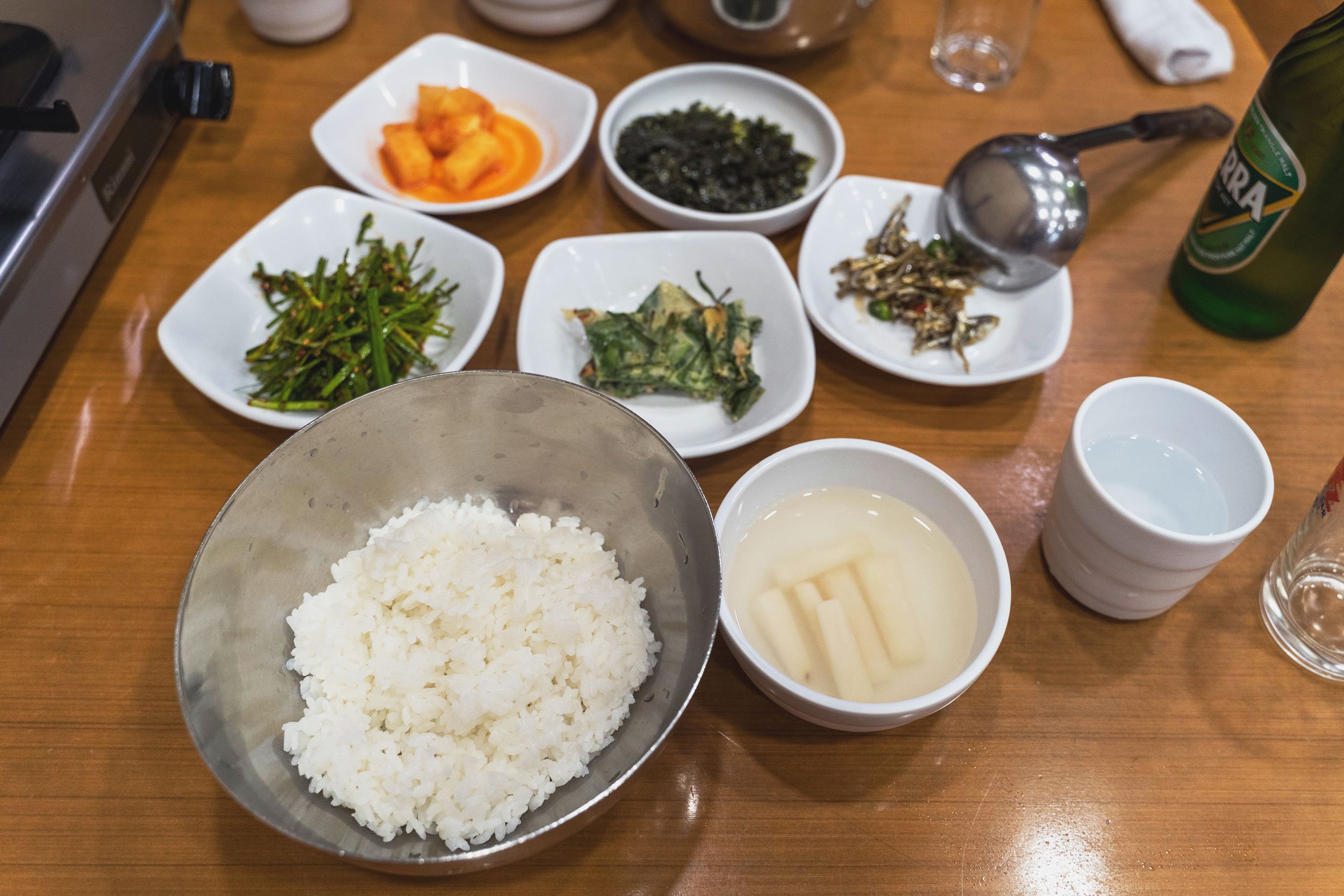
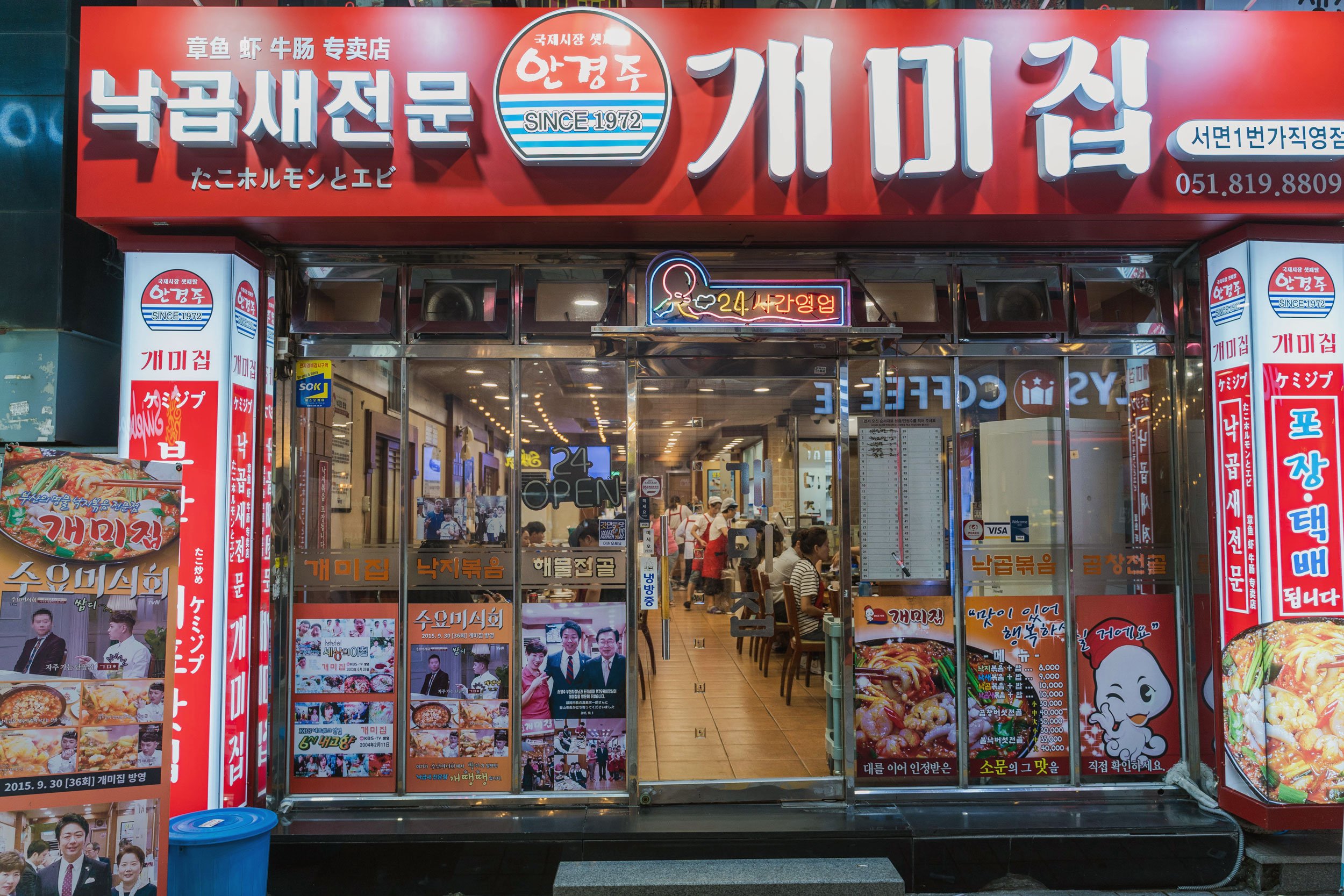
The flavor packed into this pot was nothing short of incredible. This was my favorite meal in Busan, and one of my favorites I’ve had in Korea.
Gaemijip is a 24-hour chain which makes it really convenient. We went to the Seomyeong location for dinner, and it was pretty full - almost all Koreans, so we knew it had to be good.
The main course is a sort of seafood stew. We opted to get the octopus and shrimp option and added udon noodles. We heard that the food here tends to be really spicy, so we went with a mild level one and it was definitely enough. Absolutely delicious and reasonably priced.
Ssangdoongi Dwaeji Gukbap
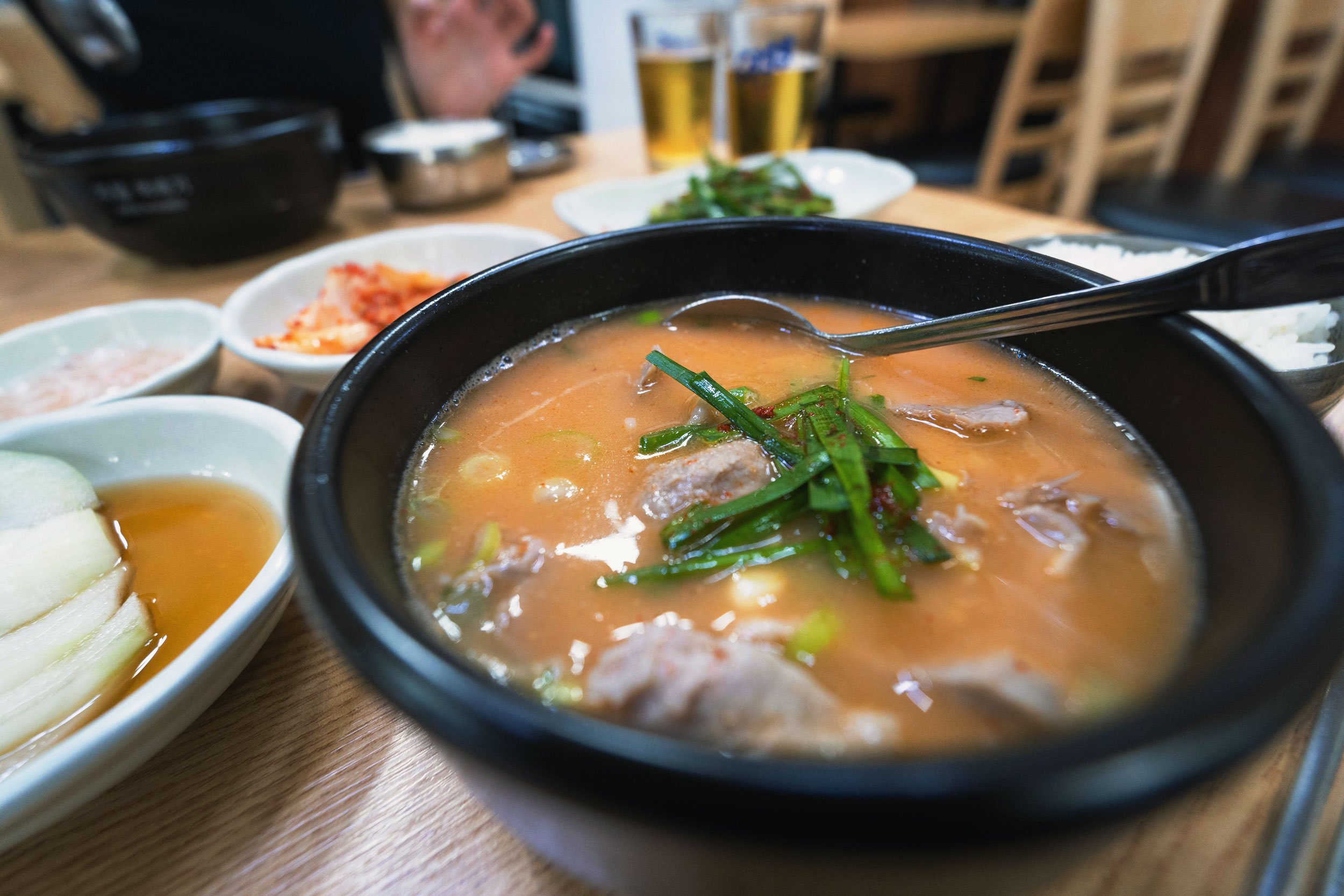
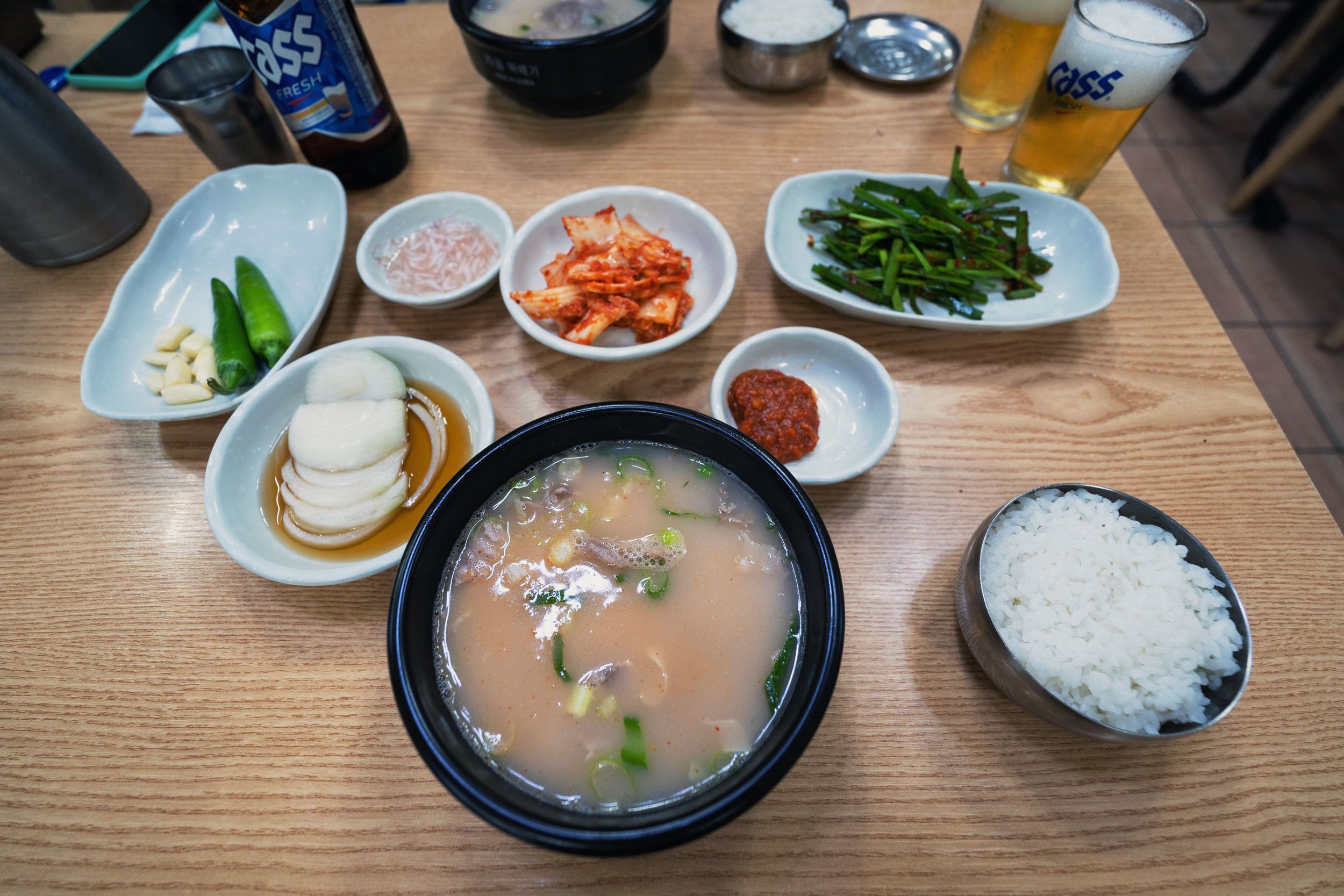
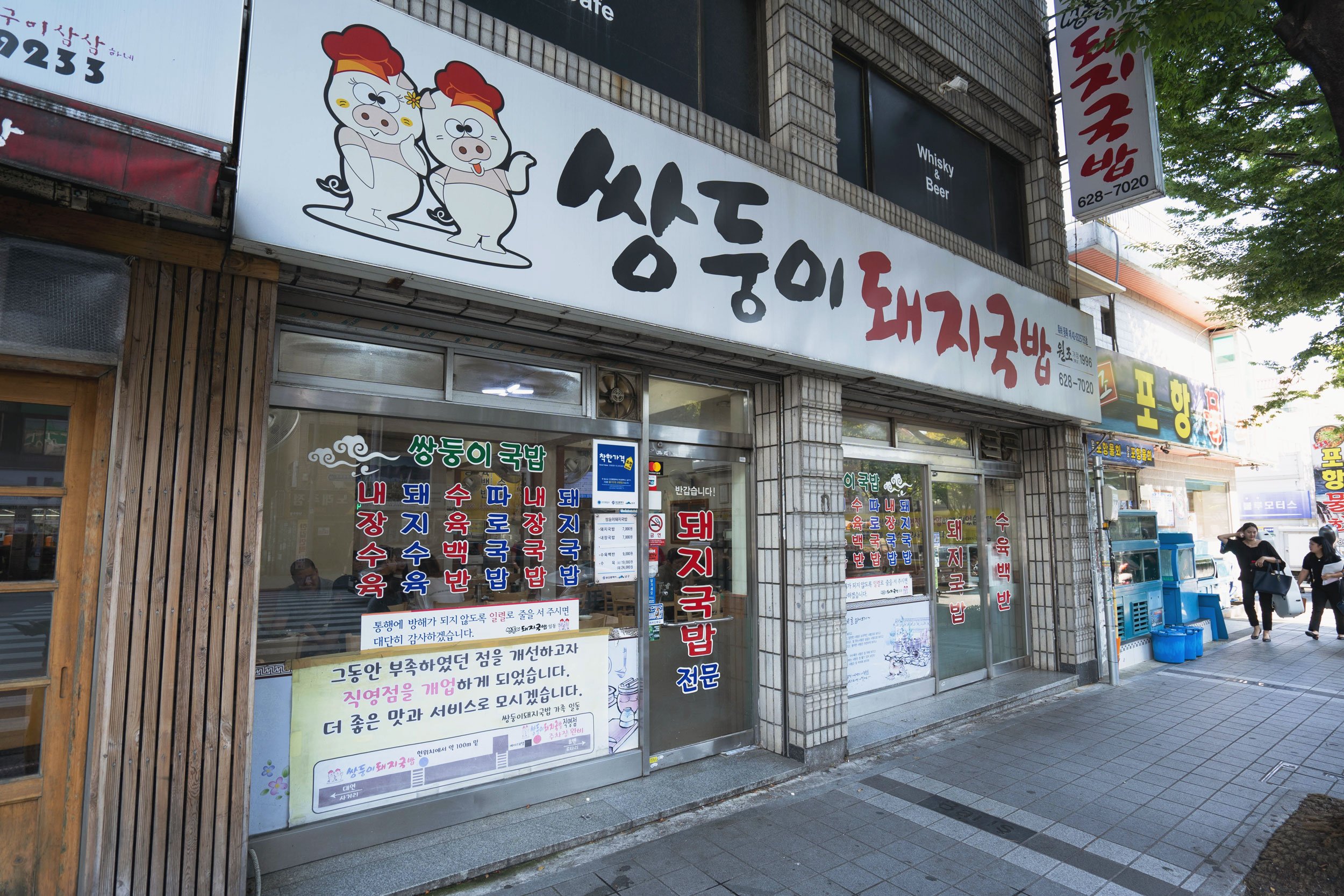
A pork soup spot that is regarded as one of the best in town. Ssangdoongi Dwaeji Gukbap is a few blocks from Daeyeon metro station and is a really local place.
We went for lunch, and got a nice, full bowl of pork soup with an array of all-you-can-eat kim chee and Korean pickles. The soup isn’t spicy at all, but there’s red pepper that you can add to taste and they give you garlic as well.
As expected at a reasonable, local spot, there’s not much English and service is nothing celebrate, but it’s good enough and they come to refill your dishes when you’re out. Nice lunch find for sure, or late night snack as they’re open until midnight.
Gijang Sonkalguksu
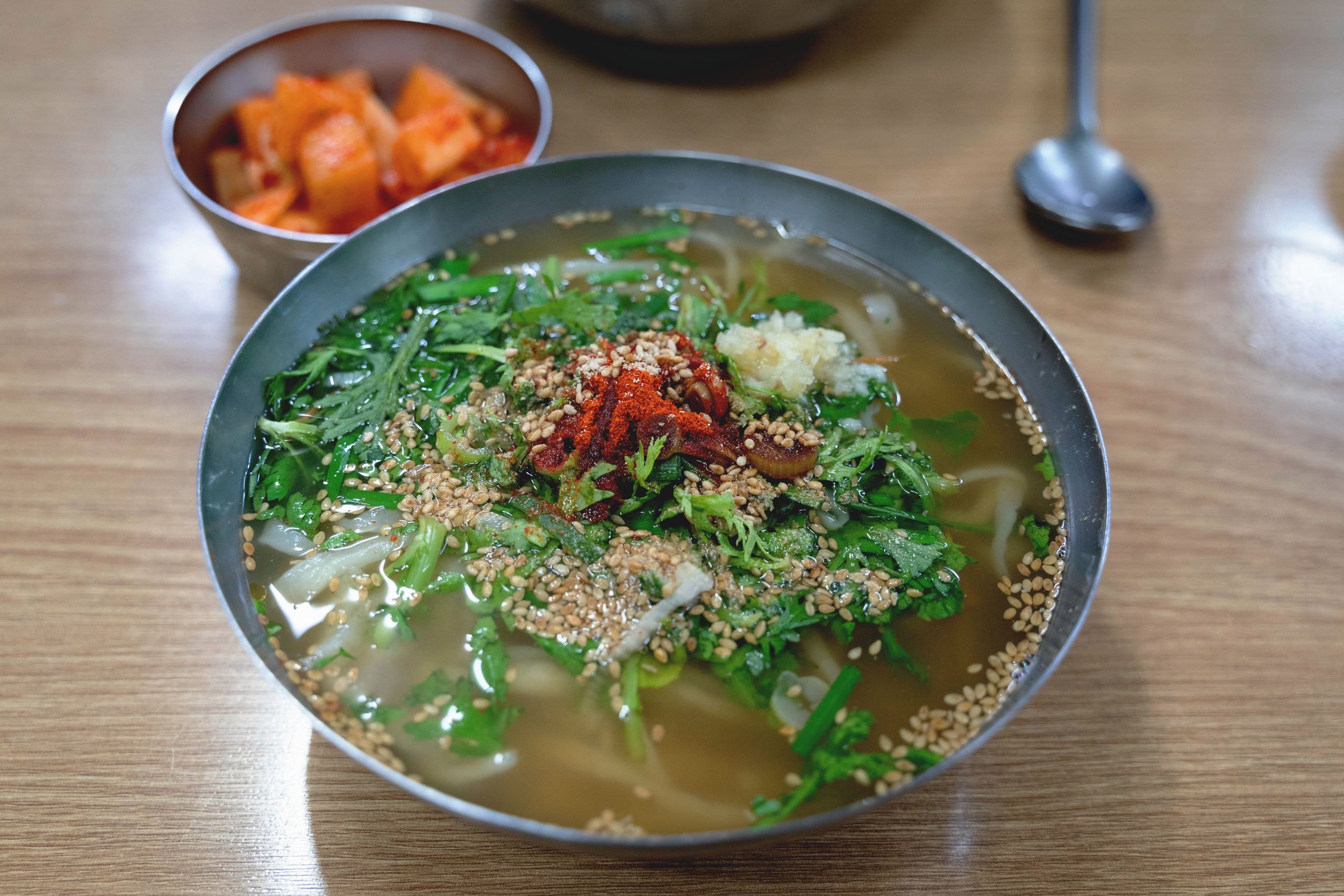
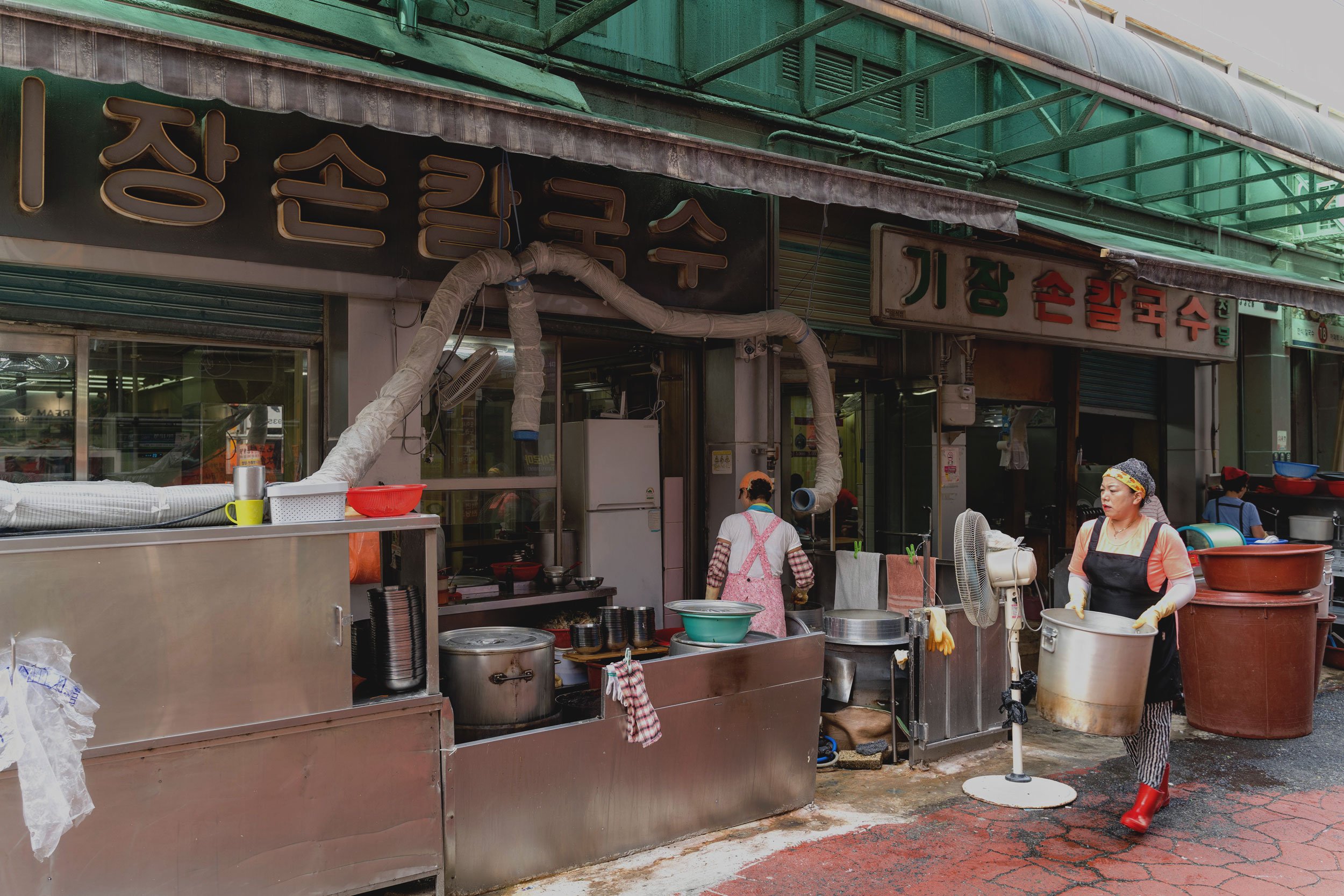
Homemade noodle soup in the heart of the Seomyeong area. This is a really basic, local shop that most likely won’t catch your eye.
The broth is thin and noodles similar to udon, just a little flatter. Women chefs prepare the soup outside, and that in itself is interesting to watch - the years of perfecting the craft going into every cut of noodle and every pour of broth.
Gijang Sonkalguksu opens at 9AM and closes at 9PM. We started our day off here - light yet filling. The only thing to watch out for is the garlic, but that just makes it even more tasty.
Keep in touch
Other travels
Suzhou, China
Dubbed the “Venice of the East,” Suzhou’s picturesque canals and alleys are a street photography dream.
Tonggui Bridge in Shantang Jie, Suzhou
Suzhou is known for its canals, bridges and gardens, and has been dubbed the “Venice of the East”
Founded in 514 BC, it has over 2,500 years of history and is one of the fastest growing cities in the world
The collection of gardens in the city is a UNESCO World Heritage Site
Suzhou was a one-day trip while traveling to Shanghai and honestly, I wish I had more time.
My sister’s husband’s family is originally from this area so I put it on the itinerary and I’m really glad I did. For anyone into street photography, it’s quite a dream.
Things to keep in mind
The internet that you know and rely on doesn’t exist - get a VPN to access any Google or Facebook related site amongst many others you don’t realize you need. We used Baidu Maps [CN] and Alibaba’s AutoNavi Maps [CN].
There’s not much English. Most staff can’t speak English so be prepared to have communication difficulties.
Mobile payments via WeChat or Alipay are the norm. Because a Chinese bank account is required, tourists can usually pay with cash or Union Pay credit card, but those transactions are seen as a hassle.
How to get there
Suzhou is about a 30-minute ride on the country’s high-speed train from Shanghai Railway Station [MAP].
You supposedly can buy tickets online here, but we had trouble and had to buy them at the station’s ticket office. Do know that the ticket office is actually in a building across the street, diagonally to the southeast [MAP].
Once you arrive at Suzhou station, you can get a one-day transportation pass at the ticket hut at the metro’s ticket gate. Shanghai’s SPTC card doesn’t work here.
Metro lines 2 & 4 go to most of the main destinations, but keep in mind that Line 4 is NOT shown on Google Maps.
Beisi Ta (The North Pagoda)
The first area we explored was the southeast side of Suzhou station. We caught Metro Line 4 to Beisi Ta station (北寺塔) [MAP] [Alibaba Map], which was the main hub.
This station puts you within walking distance from popular spots like The North Pagoda, Humble Administrator Garden, Suzhou Museum, Lion Grove Garden and more.
We had the unfortunate luck of traveling here during a Chinese national holiday, so we weren’t able to get into the most popular sights. They were booked for days and required prior reservations via WeChat. It does seem that they prioritize Chinese citizens over tourists.
After being bummed for a little, we decided to walk around and we came across some other amazing sights.
Couple’s Retreat Garden
The Couple’s Retreat Garden, together with the other Suzhou gardens, are considered a UNESCO World Heritage Site.
From The Humble Administrator’s Garden area, it’s a short walk to the southeast. It has canals on three of its sides and is build around a library annex and pond area. It’s a smaller but intimate garden that isn’t as overcrowded as some of the other more popular ones.
Making our way back to Beisi Ta metro station, we walked along the canal south of the Couple’s Retreat Garden, labeled Daxinqiao Alley.
Here’s some of the sights and local life that we saw.
From Belsi Ta metro station, we went back to Suzhou station and transferred to Metro Line 2 to Shantang Jie (山塘街) metro station.
Shangang area
The Shantang area is centered around the Tonggui Bridge (pictured at the top of this page), and features small streets and a bunch of memorial bridges arching over the canals below.
Along the main pedestrian streets are souvenir shops, restaurants as well as food cards that come out in the evening offering local bites to eat.
If you really want to see a more non-touristy side to the area, I recommend taking a stroll down the alleys surrounding the main area.
Here’s some of the sights we saw in those alleys.
Before we head back to Shantang Jie station, we walked through Beihao Long street, one of the main shopping streets for tourists.
We took a look at the market at Shangtang Jie metro station before going back to Suzhou station and heading back to Shanghai.
Our one day adventure exploring Suzhou was amazing, even though we weren’t able to get into the main gardens.
Here’s to hoping for a chance to be back again.
Qin
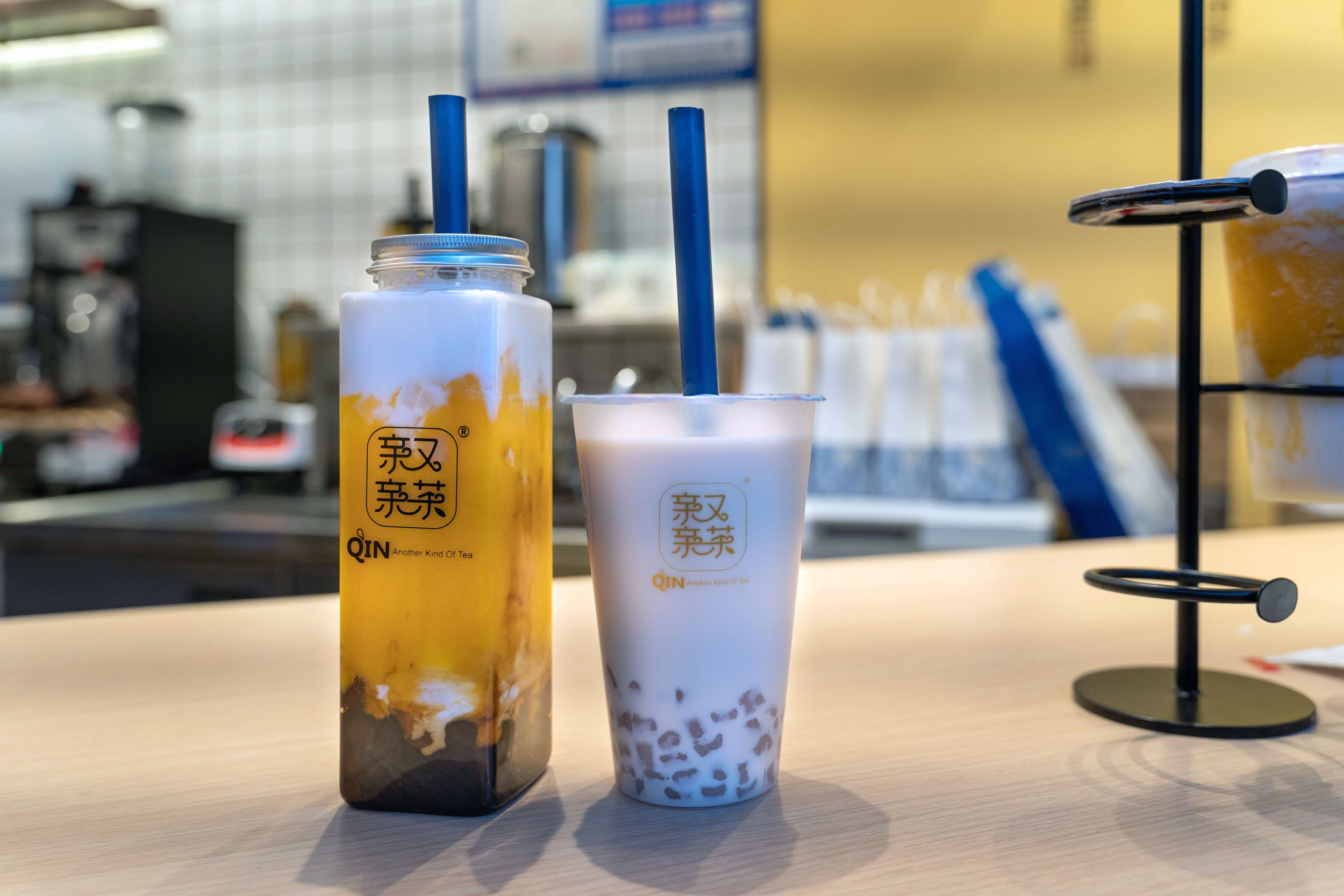
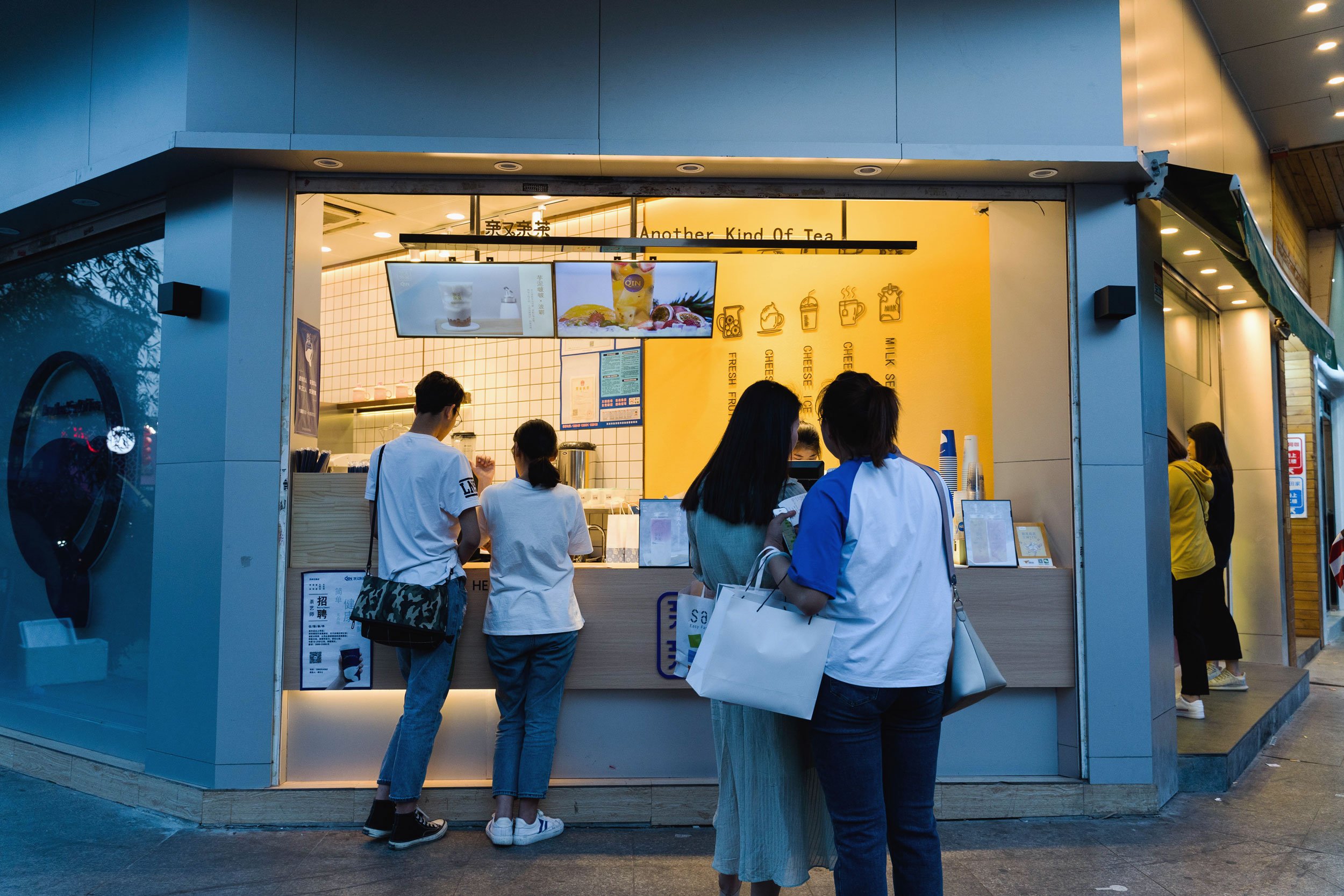
Great boba (tapioca) drinks here. Near the main Shantang area, it’s perfect for a refreshment while exploring.
I recommend any tea-based drink with the potato balls. It’s more of a mochi-like consistency than tapioca.
Keep in touch
More travels
Shanghai, China: Starbucks Reserve Roastery
A premier Starbucks experience at their third largest location in the world.
The third largest Starbucks in the world as of 2020 (second largest at the time of this visit), Shanghai’s Starbucks Reserve Roastery is an impressive coffee playground. It represents everything Starbucks is about and fits it into one location.
How to get there
Starbucks Reserve Shanghai Roastery is located on West Nanjing Road in a nice area full of fashion and high end shops from Chanel and Dior to Nike Kicks Lab and Levi’s. It’s right across the street diagonally from exit 11 at West Nanjing Road metro station (南京西路) on Line 13.
Starbucks has its fair share of critics, but it’s always around us no matter where we live. So when I had planned to be in Shanghai, I decided I had to check this location out.
Starbucks Reserve Shanghai Roastery is formerly the biggest Starbucks in the world before Tokyo’s Nakameguro location dethroned it in 2019. It is 2 open stories and 30,000 sq. ft. (2,787 sq. meters) big.
The first floor
At the center of the first floor is the bean roasting facilities, packaging station, and large Chinese-themed bronze cask that houses their nitrogen-infused tea drinks.
The gift shop area takes up a significant portion of the floor and is full of multiple variations of everything coffee-related as well as clothing and more.
There are 2 coffee bars on this level with one featuring chocolates. There’s also a bakery counter and deli.
The second floor
The stairs overlooking the packaging area will lead you to the second floor, with the first area being Starbucks’s tribute to tea - TEAVANA. It’s just as impressive as their coffee bars, rightfully so as it is in China.
Along with tea, the second floor has a cold brew coffee area, a pastries and bakery counter, another brew station and coffee bar as well as a roaster.
There’s a decent amount of seats on the second floor for people to sit and enjoy their drinks, sipping to the occasional sound of coffee beans being shot through the pipes above.
The menu
As expected, the Starbucks Reserve Shanghai Roastery’s menu is quite extensive. Different coffees, teas, cakes, pies, pastries, chocolates and everything in between.
We stuck with mixed drinks for the evening.
Amongst the mixed coffee drinks were the Emerald City Mule (Cold brew, ginger ale, burnt cinnamon syrup and lemon, finished with an apple slice) and the exclusive Shanghai Lane Romance (Cold brew, plum-flavored syrup and Chinese yellow rice wine and preserved plums infused with wine and coffee).
Tea mixed drinks had selections like Citrus Mint Mojito (citrus jasmine tea muddled and shaken with mint, Demerara sugar and lime, and tonic and sparkling water along with rum) and the exclusive Youthberry Prosecco (chilled Youthberry tea layered with bubbly prosecco, and vermillion sugar cubes).
These were just a few of the selections.
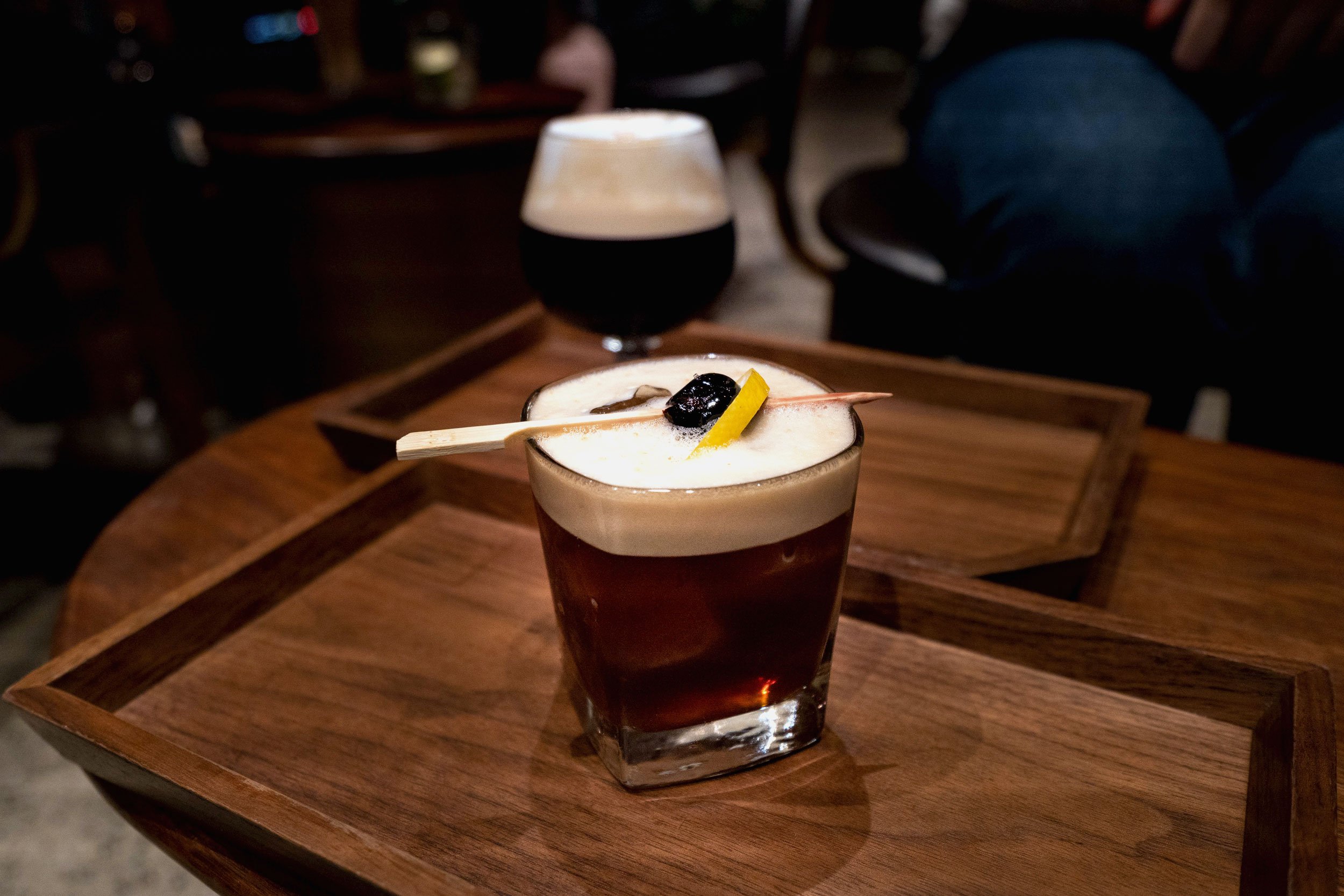
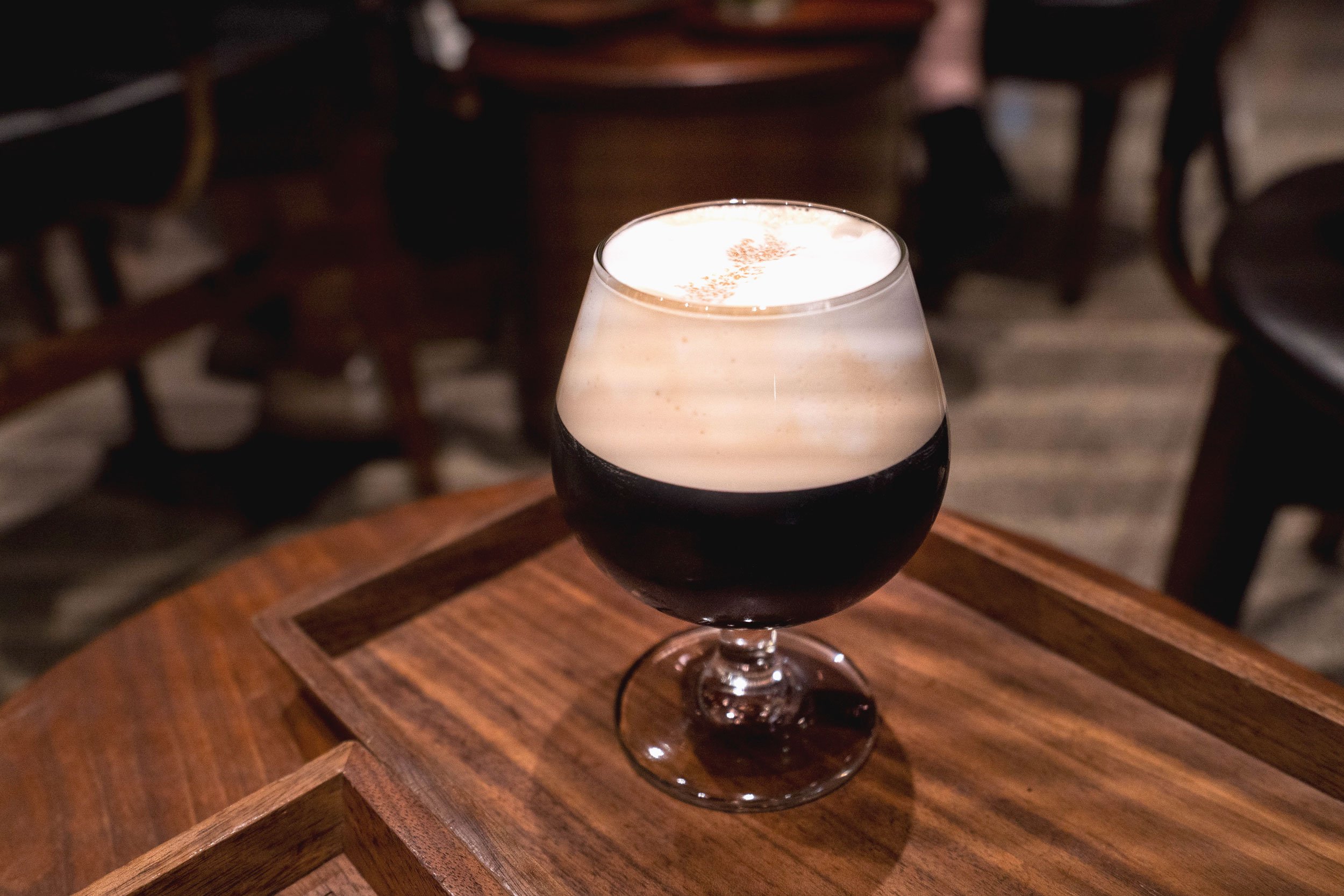
Everything here looked really good and it would be great to sit at the counter and learn about coffee from one of the baristas.
This is one of the prime showcases to how a global coffee chain still focuses on the craft while steering towards the future. Impressive and worth the visit.
Keep in touch
More travels
Shanghai, China
Traveling in Shanghai for a few days, an energetic city and one of China’s and Asia’s main hubs.
Shanghai is China’s most populated urban area with 26.3 million in its municipal area (2019)
The name Shanghai means “Above the Sea” and the area has history dating back to 4000 BC
Shanghai’s population has nearly doubled since 2000 and it also has the world’s largest metro system
Shanghai has been one of the cities at the forefront of China’s rise, and I wanted to see it for myself.
I had visited Shanghai on a previous trip in 2010 to see the World Expo, but I didn’t have time to explore the city at all. On this trip, I had 3 full days to explore it as much as possible.
China though, as you probably know, is pretty different and there are some things to keep in mind if you’re planning a first visit.
Things to keep in mind
The internet that you know and rely on doesn’t exist - get a VPN to access any Google or Facebook related site amongst many others you don’t realize you need. We used Baidu Maps [CN] and Alibaba’s AutoNavi Maps [CN].
There’s not much English. Most staff can’t speak English so be prepared to have communication difficulties.
Mobile payments via WeChat or Alipay are the norm. Because a Chinese bank account is required, tourists can usually pay with cash or Union Pay credit card, but those transactions are seen as a hassle.
Where we stayed
Preferring English-capabale staff, we decided to stay at an international hotel. The Andaz Xintandi by Hyatt was nice, cheaper than what you’d pay for this type of hotel anywhere else, and it put us in a really nice area conveniently located between 2 subway lines - Line 1 & 10.
https://www.hyatt.com/en-US/hotel/china/andaz-xintiandi-shanghai/shaaz
Because we flew into Shanghai from Beijing on a domestic flight, we landed at Shanghai Honqiao Airport (SHA) instead of Pudong (PVG), which is more common for international flights. The easiest way to and from the hotel is by subway for both airports.
For Pudong, Longyan Road Station [MAP] is the transfer point to go to and from the airport on the super speedy MagLev. I recommend getting an SPTC metro card, a prepaid, refillable card for subways, MagLev, buses and more.
Xintandi
Quite a great neighborhood to stay in. Xintandi is a bit upscale - the name itself translates to “New world/Heaven.”
The streets were clean and lined with modern lit shops with malls, with recognizable names like Harry Winston, Tiffany & Co., BO Concept and more in the area. There are a few higher-end apartment complexes here, including one that is literally called “Rich Gate.”
The highlight is Shanghai New World, an upscale-feeling outdoor mall area full of shops and outdoor bars and eateries.
With Xintandi as our base, here’s what we did on our full days in Shanghai.
Day 1
Nanjing Road Pedestrian Street
A major shopping area, the Nanjing Road Pedestrian Street is a wide road lined with malls and shops.
We visited here after eating soup dumplings at Jia Jia Tang Bao (info at bottom), just a short 15-minute walk east.
It was a Chinese holiday when we went, so I’m not sure how it compares to typical crowds, but the streets were packed to the point that Chinese military personnel had to direct traffic.
On a calmer day, it’s a good street to walk down if you’re heading to The Bund area.
Tianzifang
Built from renovated alleyways, Tianzifang is an outdoor mall area good for souvenir shopping, snacking on some light eats and grabbing a drink at divey bars.
It’s definitely geared to tourists, but it’s a neat environment to be in.
Starbucks Reserve Roastery
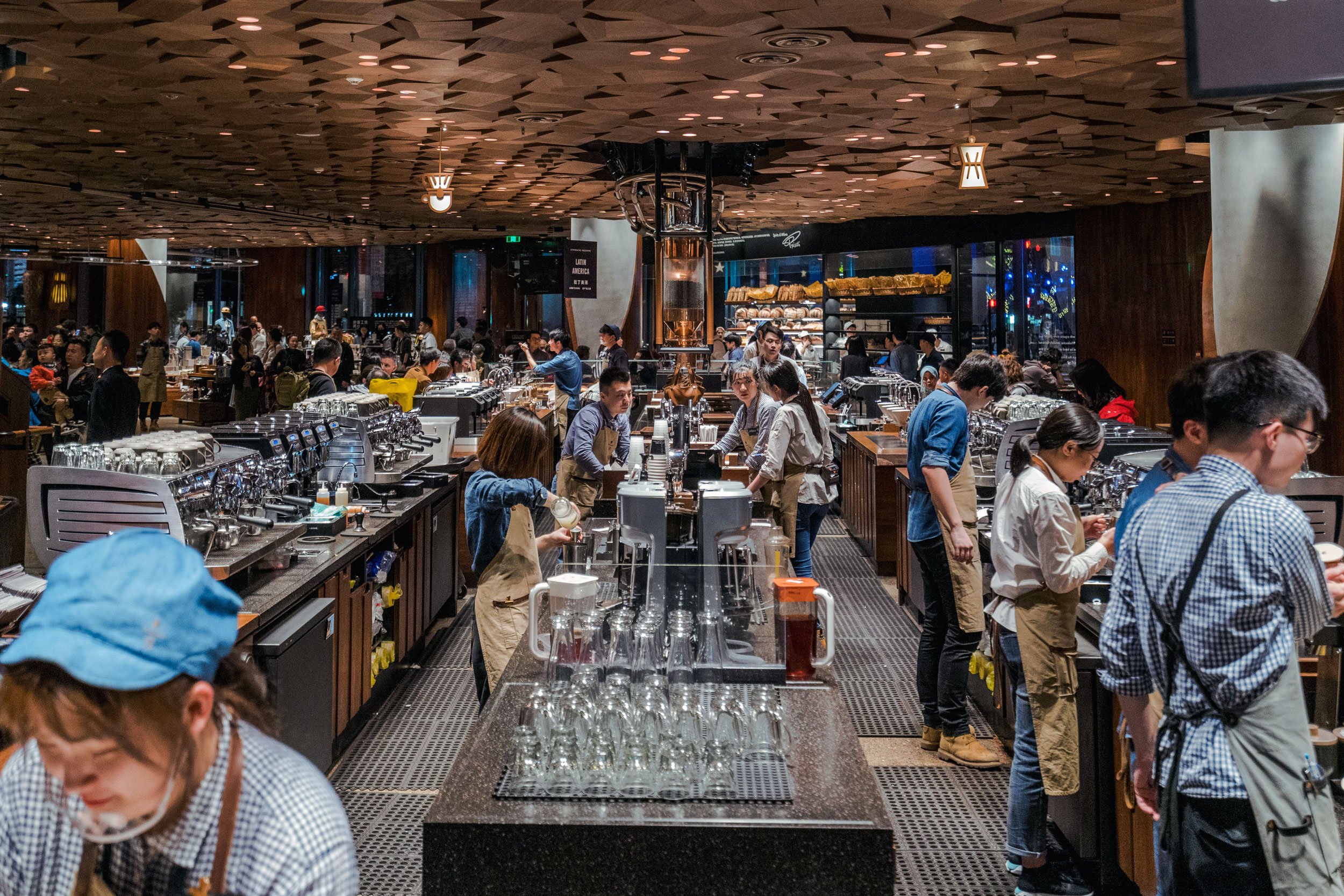

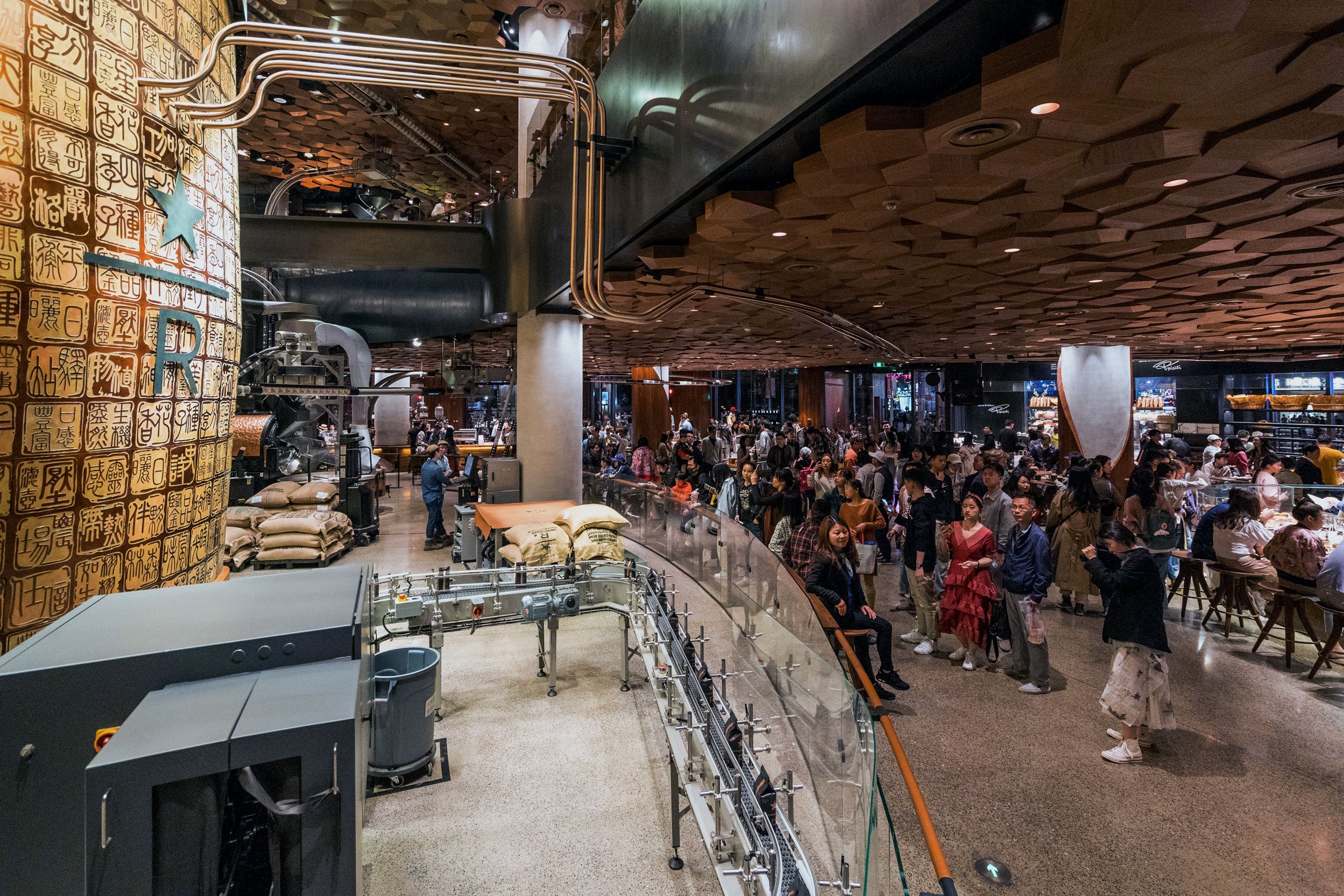

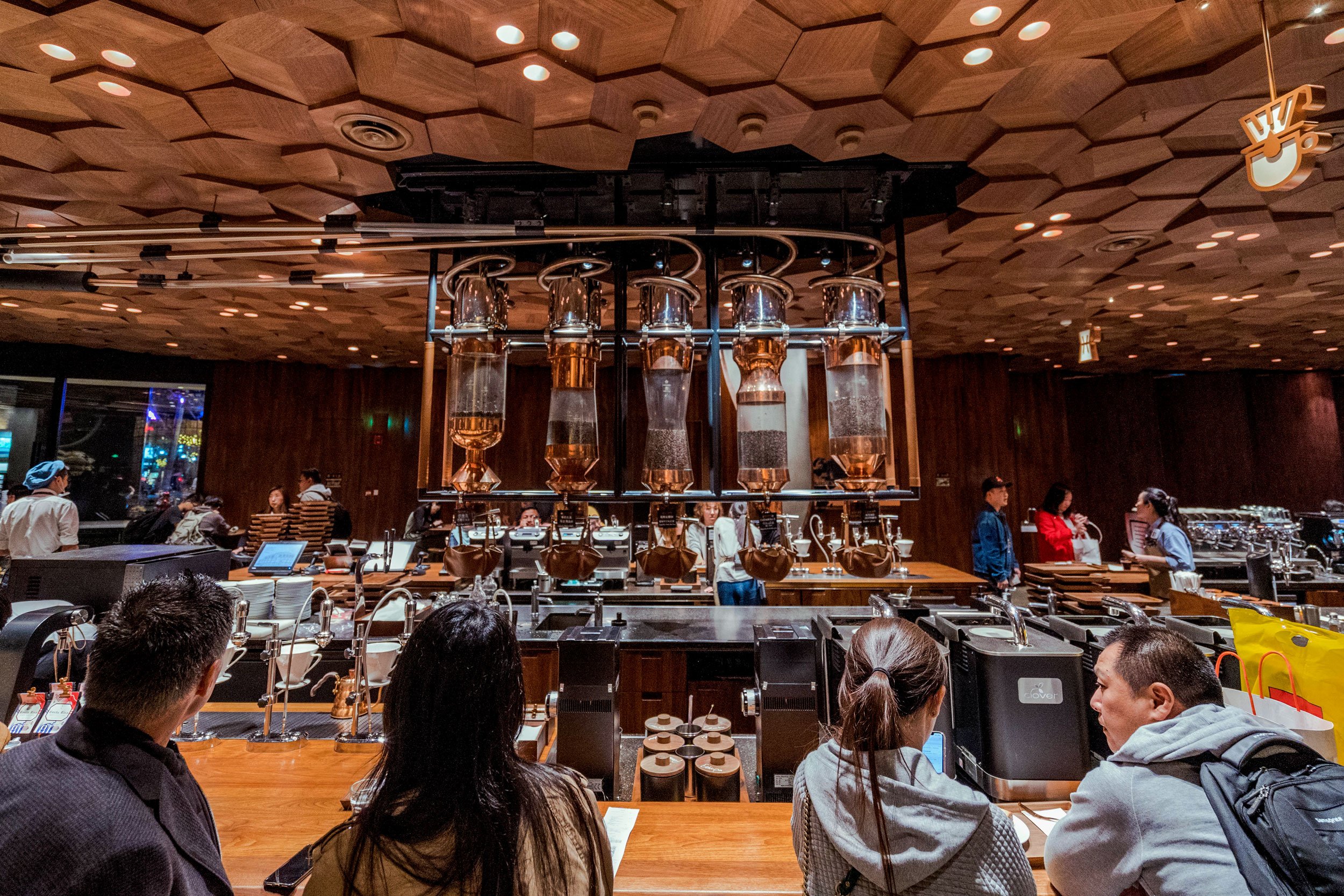
Formerly the largest Starbucks in the world before handing over the title to Tokyo’s, Starbucks Reserve Roastery Shanghai is huge. I knew if I was going all the way to Shanghai, I’d have to see it for myself.
Starbucks Reserve Roastery Shanghai is located just outside of the Nanjing West Road station in a nicer neighborhood. The location is a little off on Google Maps, so here’s the correct location: MAP
It’s a 2-floor, open-space that features everything from exclusive coffees to chocolates, teas at their TEAVANA area, a deli, patissier and coffee-included drinks at their bar, not to mention a huge array of tempting goods to choose from.
If there wasn’t so many foods to eat while on vacation, I could spend a full evening here.
Day 2
Shanghai Disneyland
Most tourists visiting Shanghai will want to check out Shanghai Disneyland. At 963 acres, the park is one of Disney’s largest.
1-day tickets were about ¥575 CNY (about $82 USD), and we got them online at the Shanghai Disneyland website. We were able to get it by showing the tickets on the phone.
The most popular rides at the time we went were Soaring Over the Horizon (hang gliding experience) and TRON Lightcycle Power Run (rollercoaster). The food wasn’t good, so try to sneak something in if you can!
Day 3
Suzhou
On the second full day staying in Shanghai, we caught the train and visited nearby Suzhou.
It’s amazing to say the lest, and a must for anyone who can fit it into their itinerary. Known for its gardens and canals, it’s been called the “Venice of the East” and the name is fitting.
This was definitely one of the highlights for me during my stay here and I wish I had more time.
Day 4
Soho Fuxing Square
The SOHO named buildings in China seem to be fantastic for anyone into modern design. After visiting Beijing’s Galaxy SOHO designed by Zaha Hadid and learning that this one was right down the street from our hotel in Xintiandi, I knew I had to check it out for myself.
SOHO Fuxing Square is a multi-use complex with shops, eateries and offices. After eating dim sum for lunch, we went to the building’s elevator hall where anyone looking for a cool photo can have some fun being transported to the future.
Yu Garden
Also known as Yuyuan Garden, the Yu Garden is one of the most popular and heavily visited cultural spots in Shanghai.
A short walk east from Yuyuan Garden subway station (metro line 10), the area is filled with breathtaking architecture, shops, as well as the 5-acre garden itself.
It was a bit crowded when we went, contrasting creator Pan Yuandan’s intentions of it being a peaceful garden for his father in his old age, but it was worth visiting. Not only is there a lot to see, we were able to be fully immersed in 1559 Ming Dynasty Shanghai.
The Bund
Our final stop was of course The Bund. No trip to Shanghai is complete without seeing its rapidly growing skyline, representative of how fast the city as a whole has been developing.
Shanghai’s skyline (pictured at the top of this page) is nothing short of amazing - its waterfront neon skyscrapers puts it right up there with Hong Kong’s.
The modern glow is contrasted with the French Concession buildings across on the westside of the Huangpu River (where we enjoyed the view from) providing a 360-degree breathtaking view.
Shanghai, as I thought, is a massive city on the modernization fast path, a bustling business hub, tourist hotspot and one of the key cities directing the direction of the world.
The most impressive thing wasn’t the modernization, it was the speed and scale that it’s happening.
Shanghai showed me that China isn’t coming, it’s already here.
Jia Jia Tang Bao
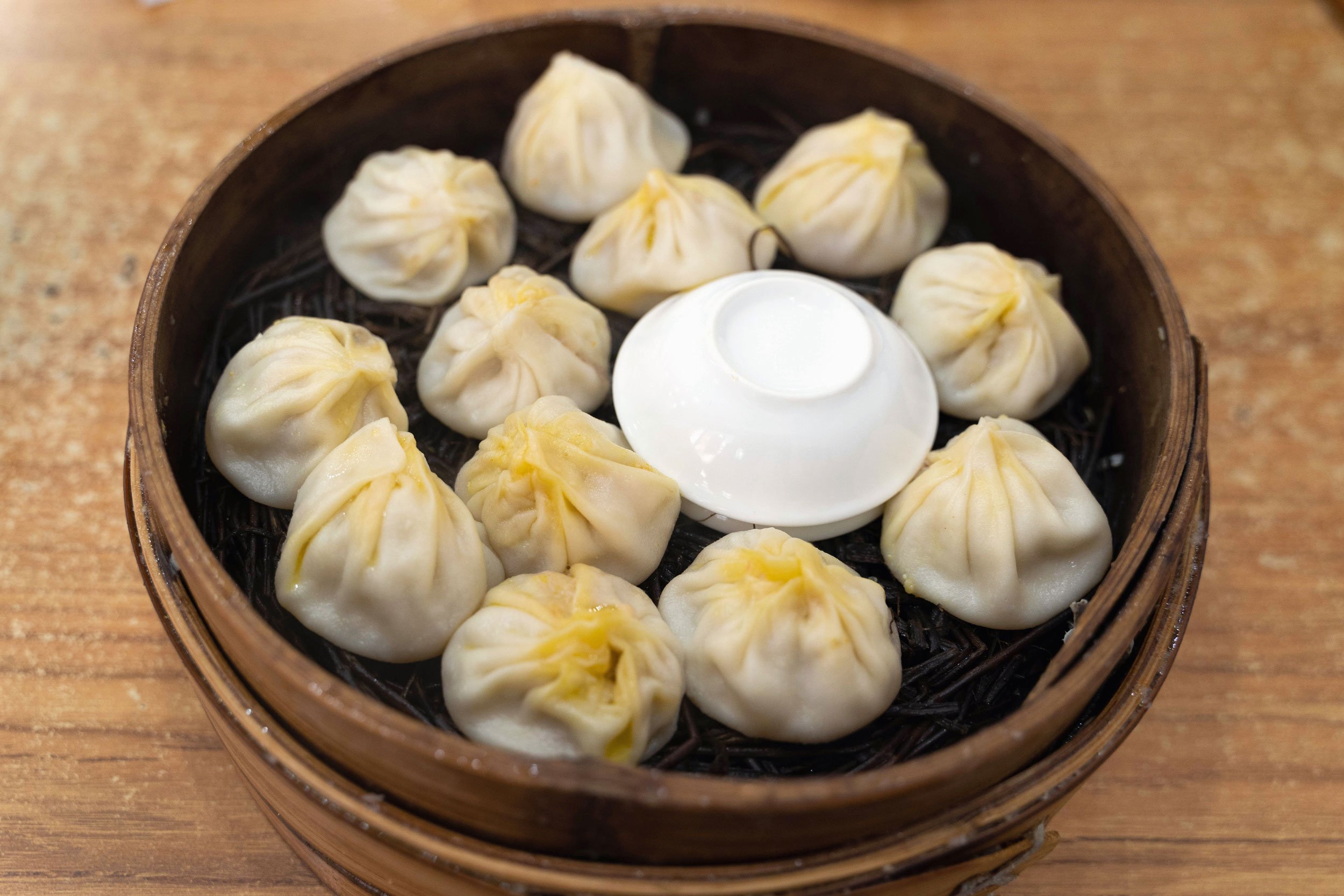
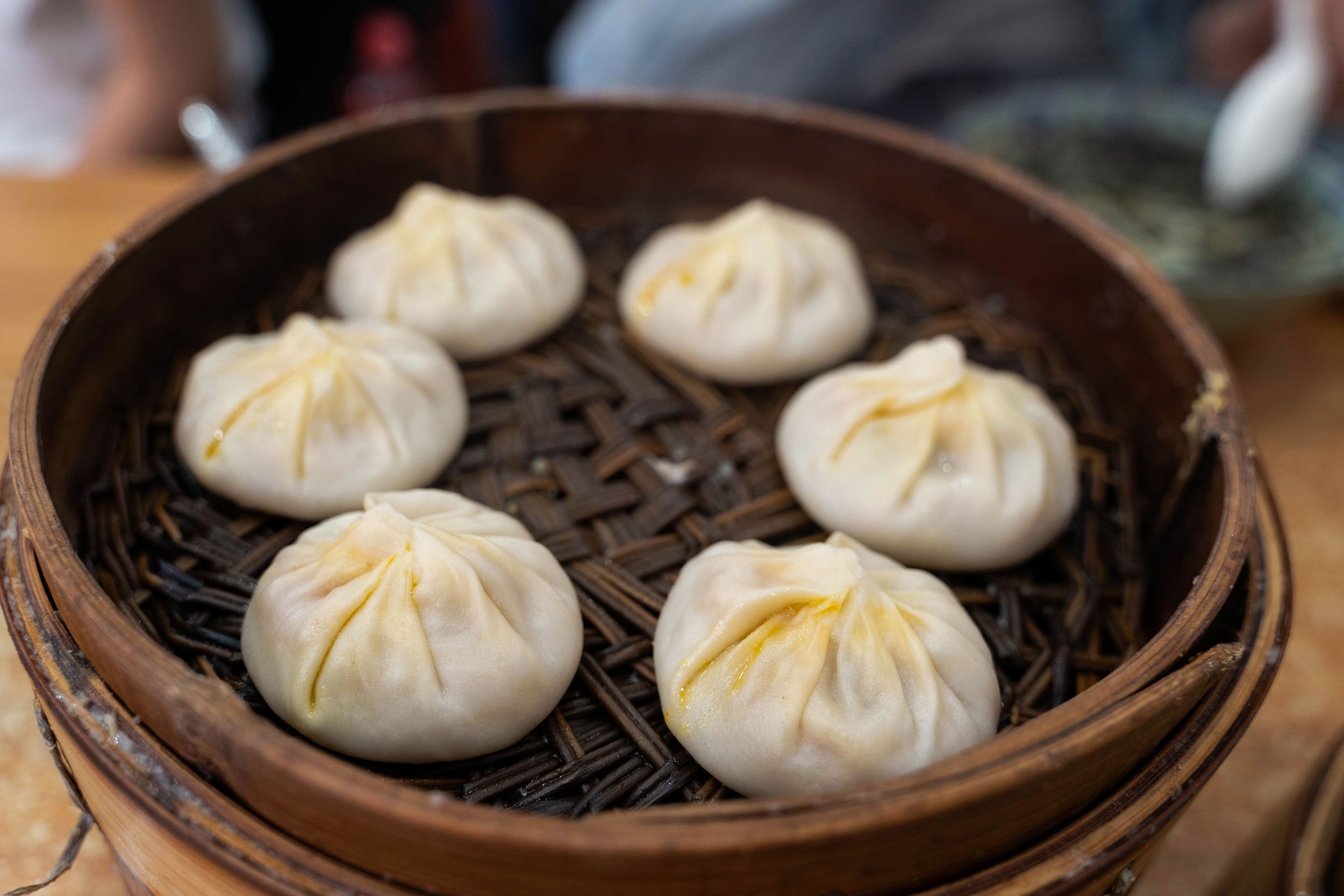
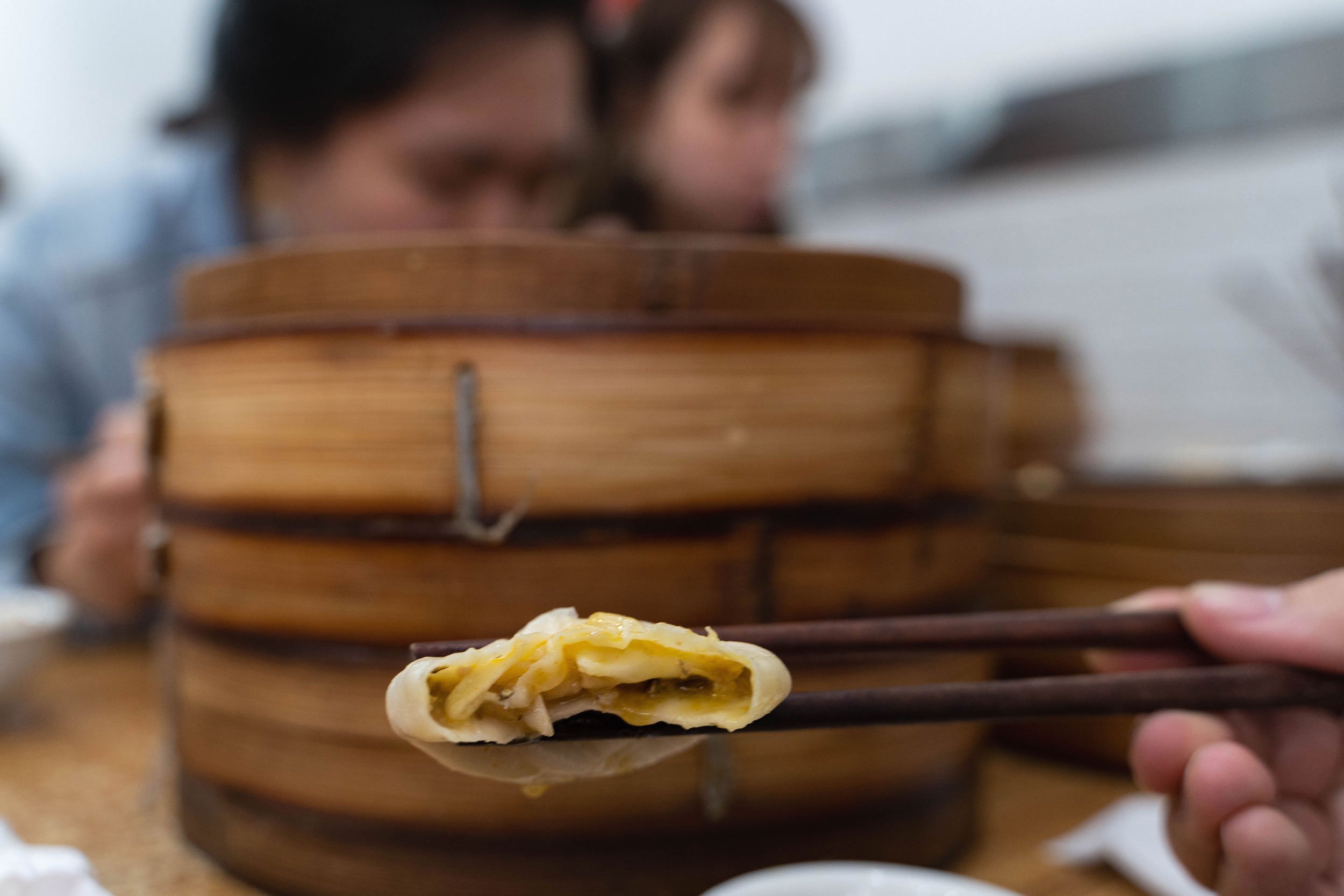
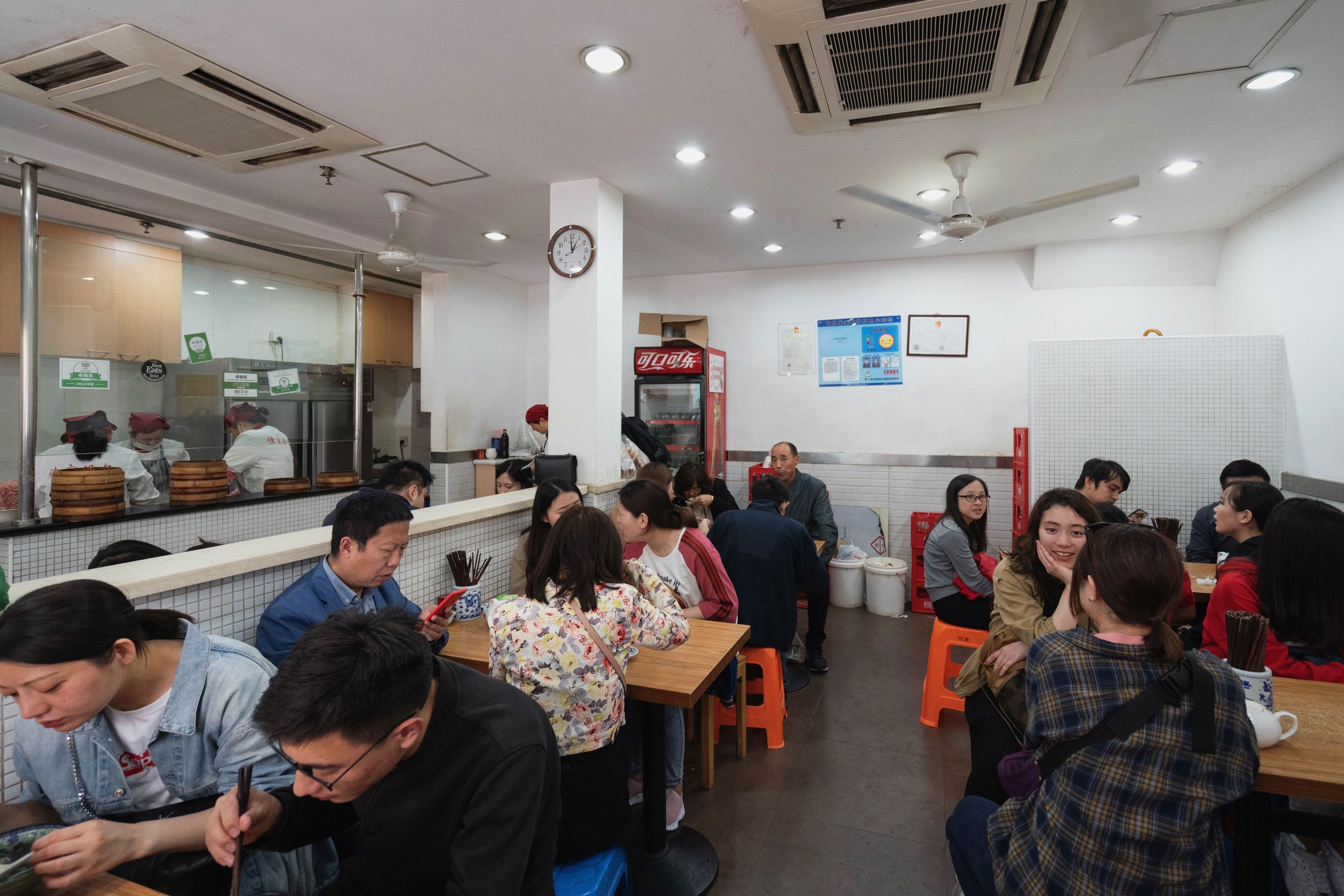
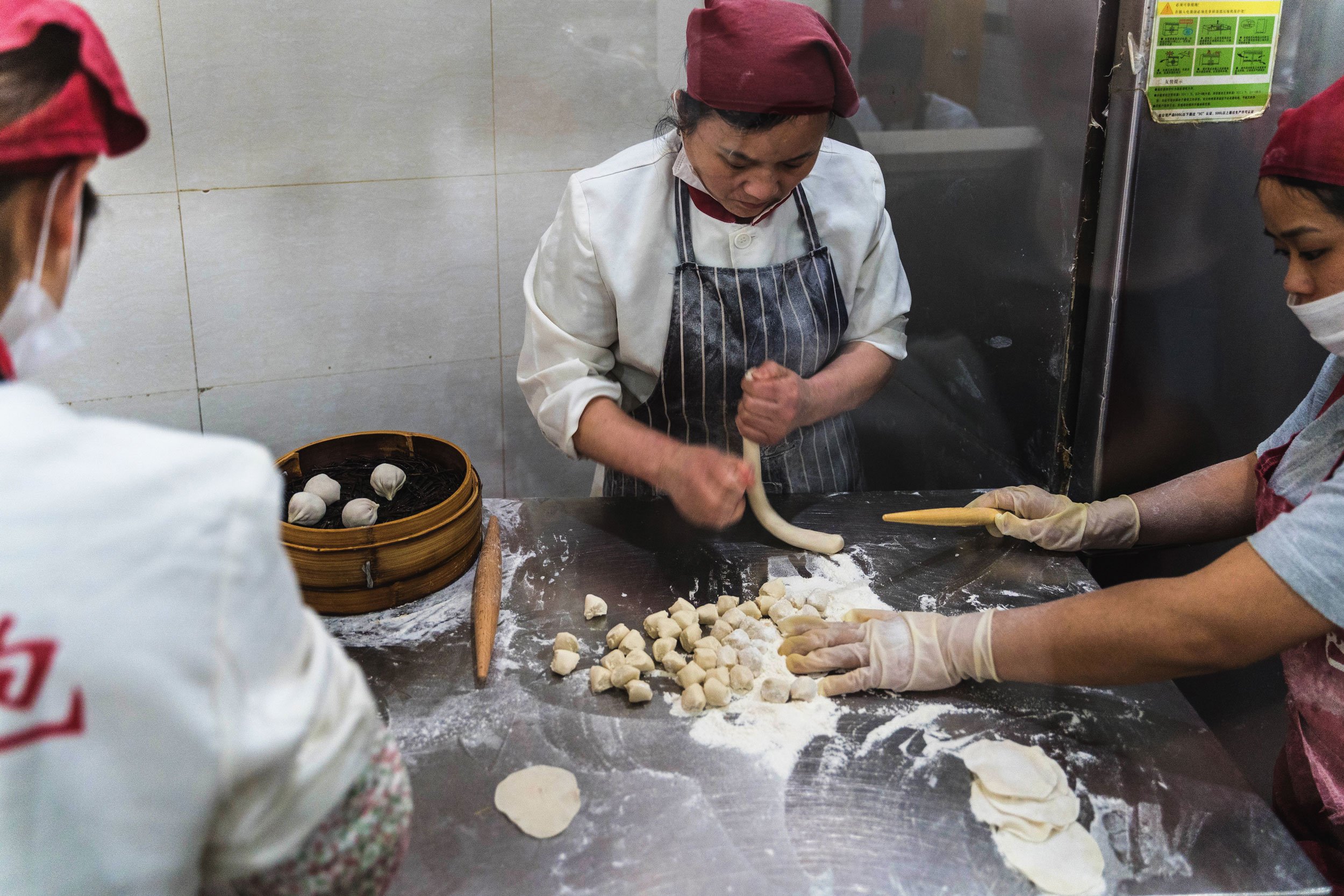
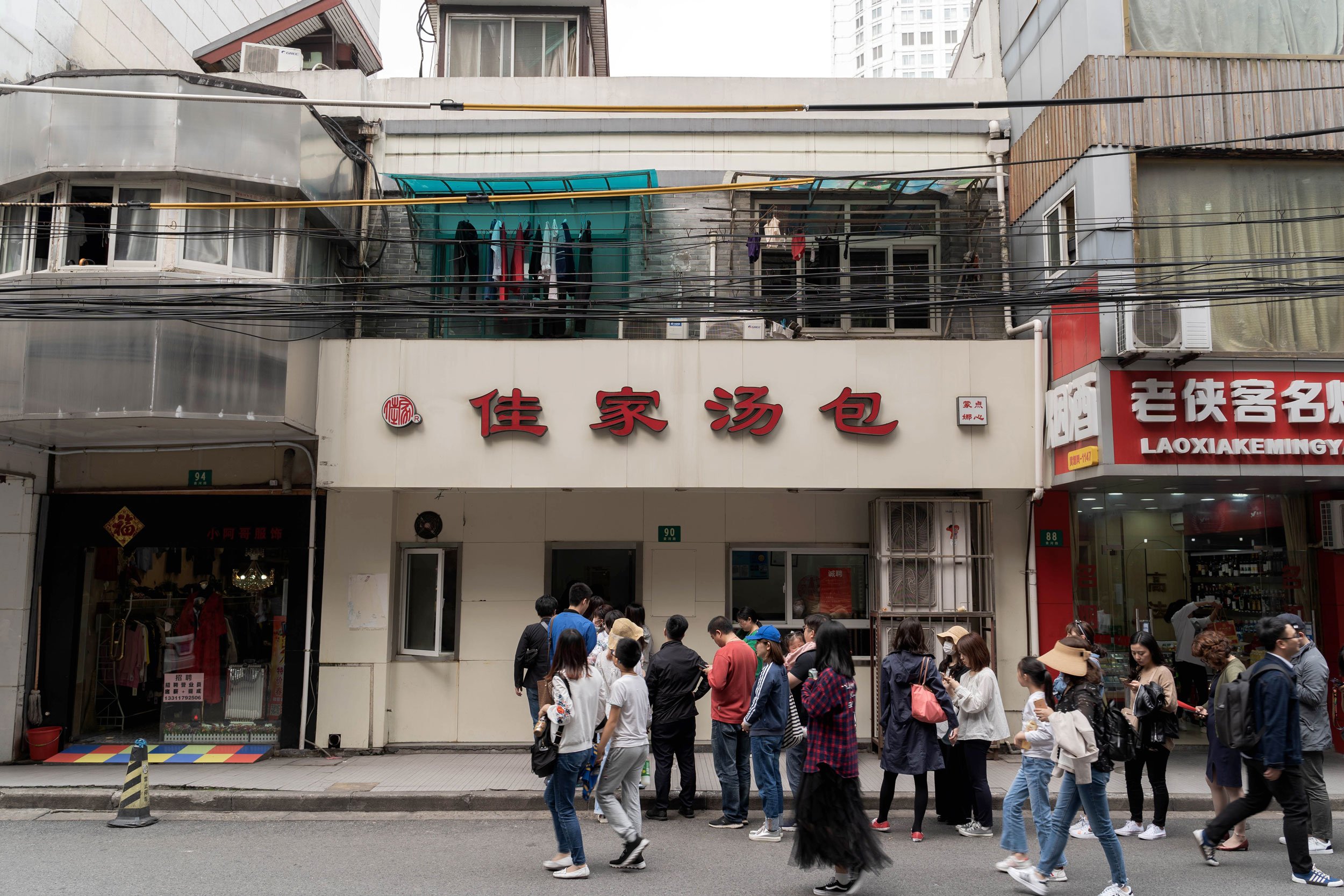
Arguably the most famous xiaolongbao restaurant in Shanghai and rightfully so. I first came across Jia Jia Tang Bao while watching Eat the World with Emeril Lagasse, so we made it our first lunch.
The soup dumplings are delicious - thin wraps and rich broth on the inside. We got two trays for two people and it was a good amount, costing only ¥138 CNY (about $20 USD). There was a wait - about 30 minutes at peak lunch time, but it’s worth it. Would love to go back for more.
zhUwUchuAncài
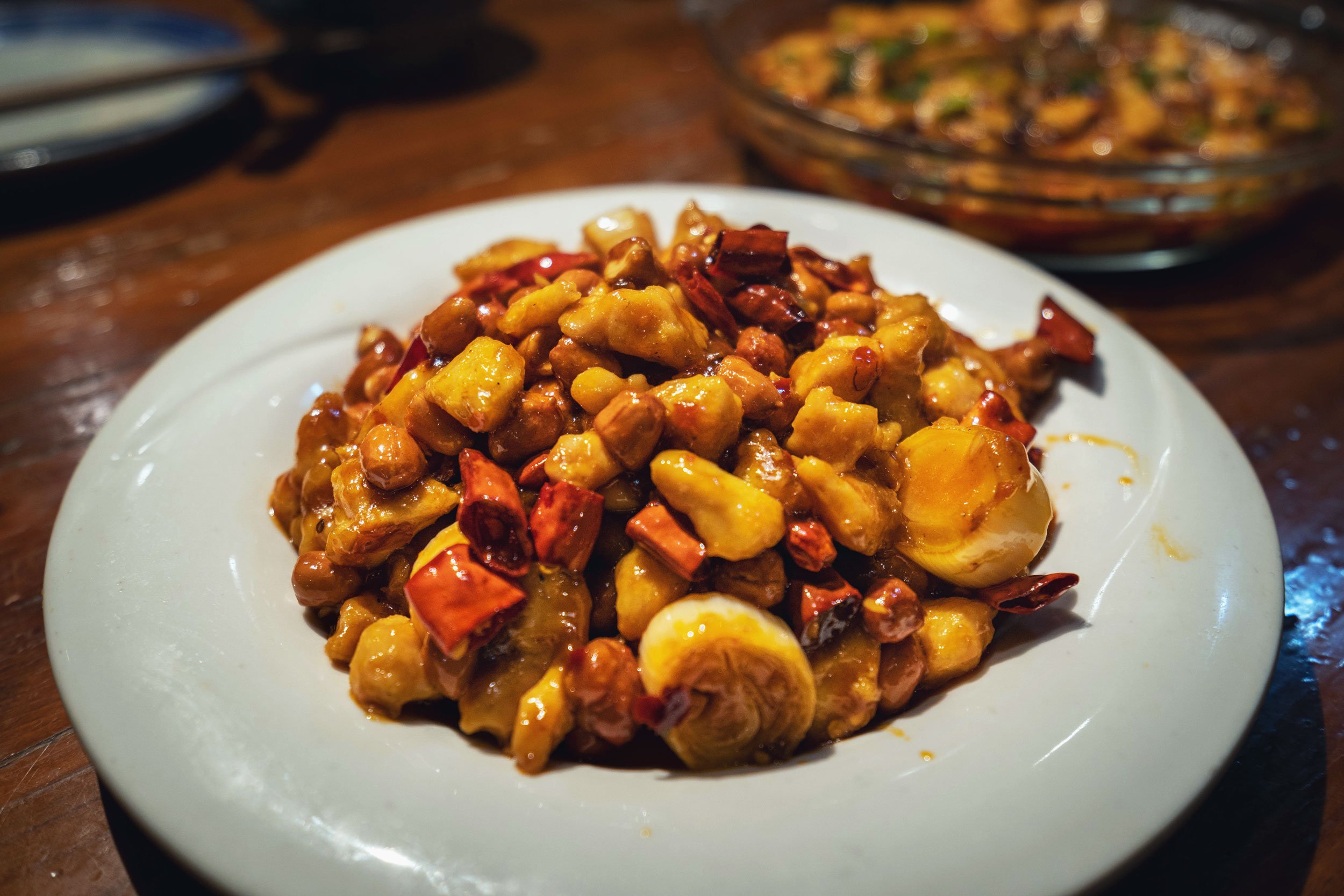
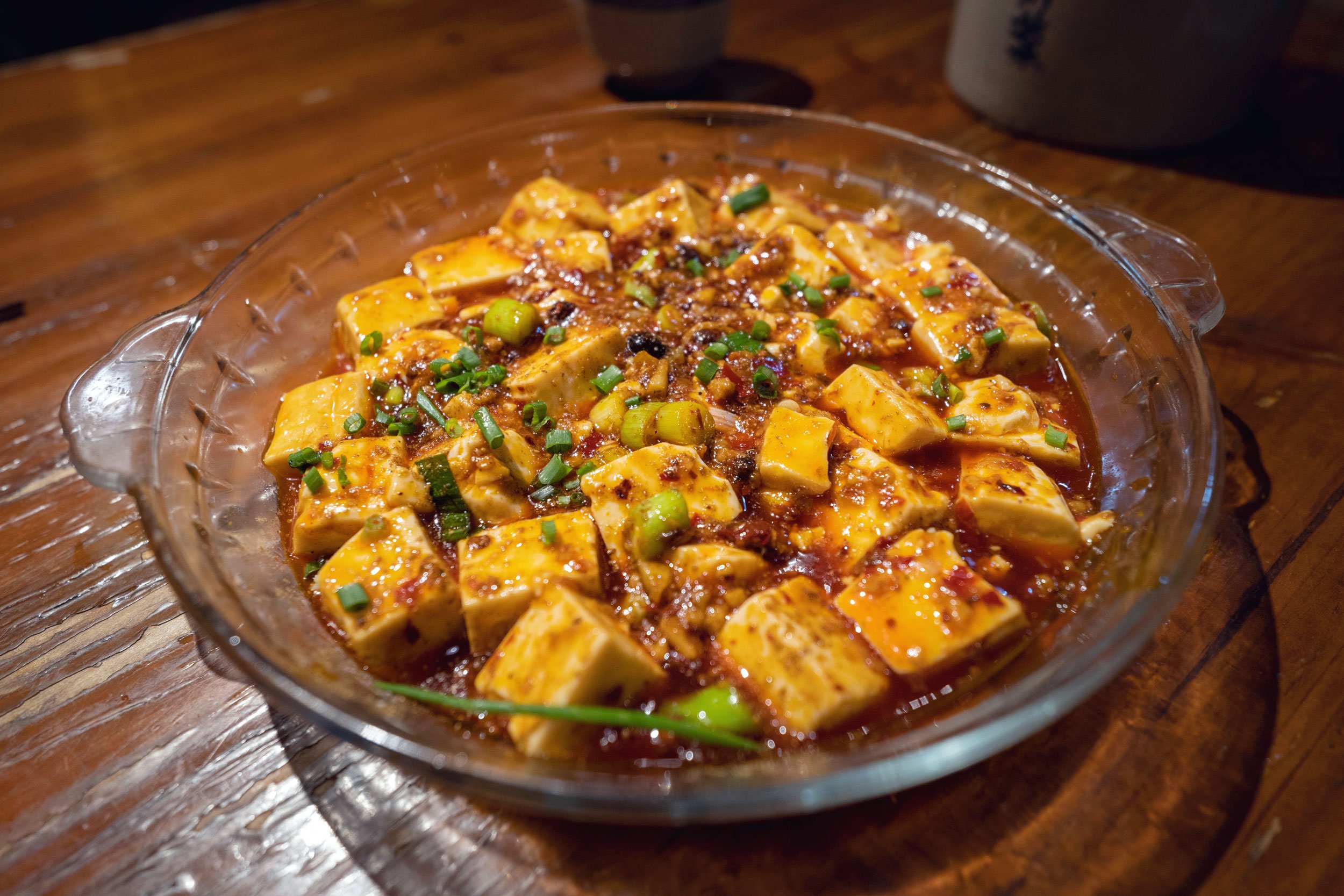
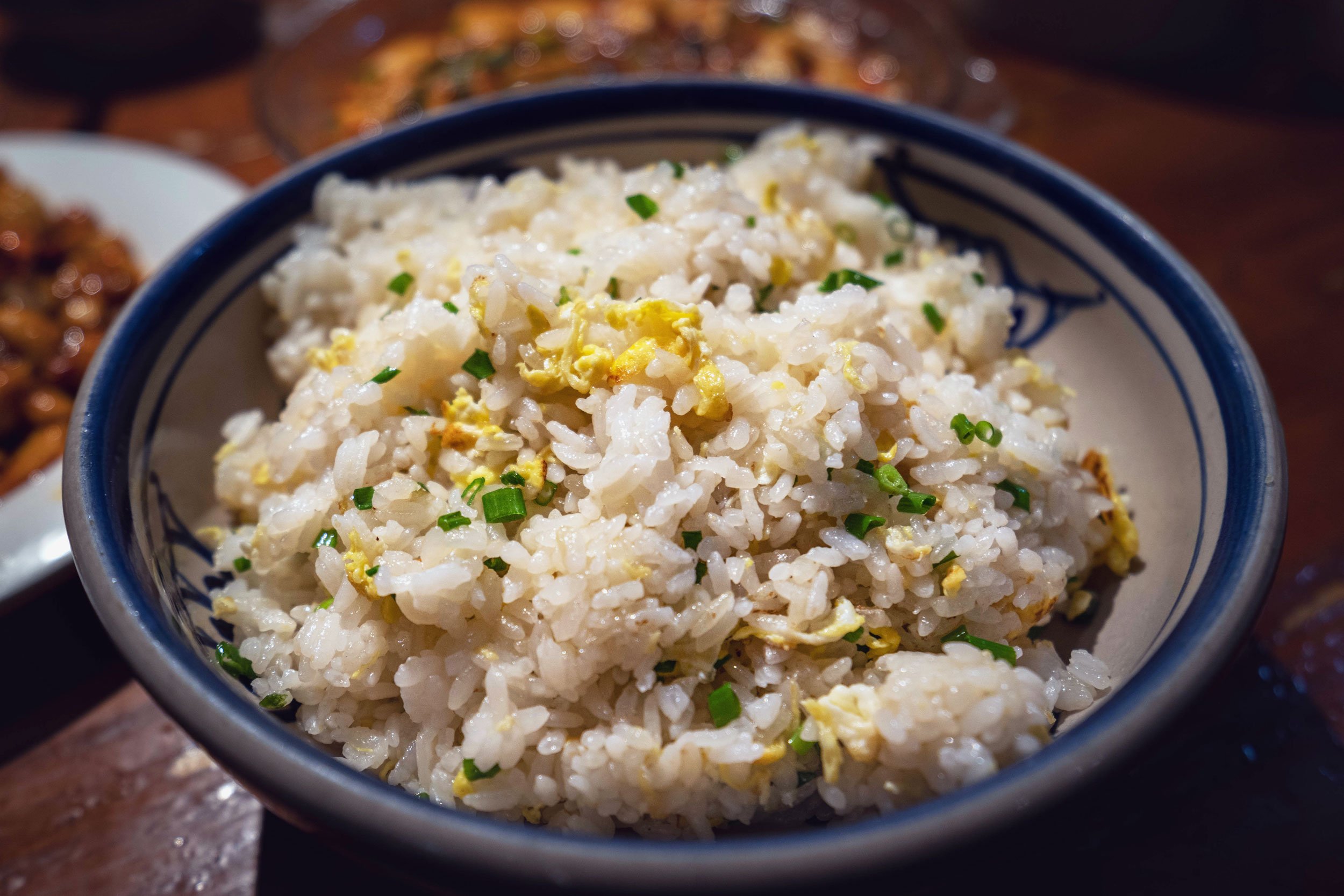
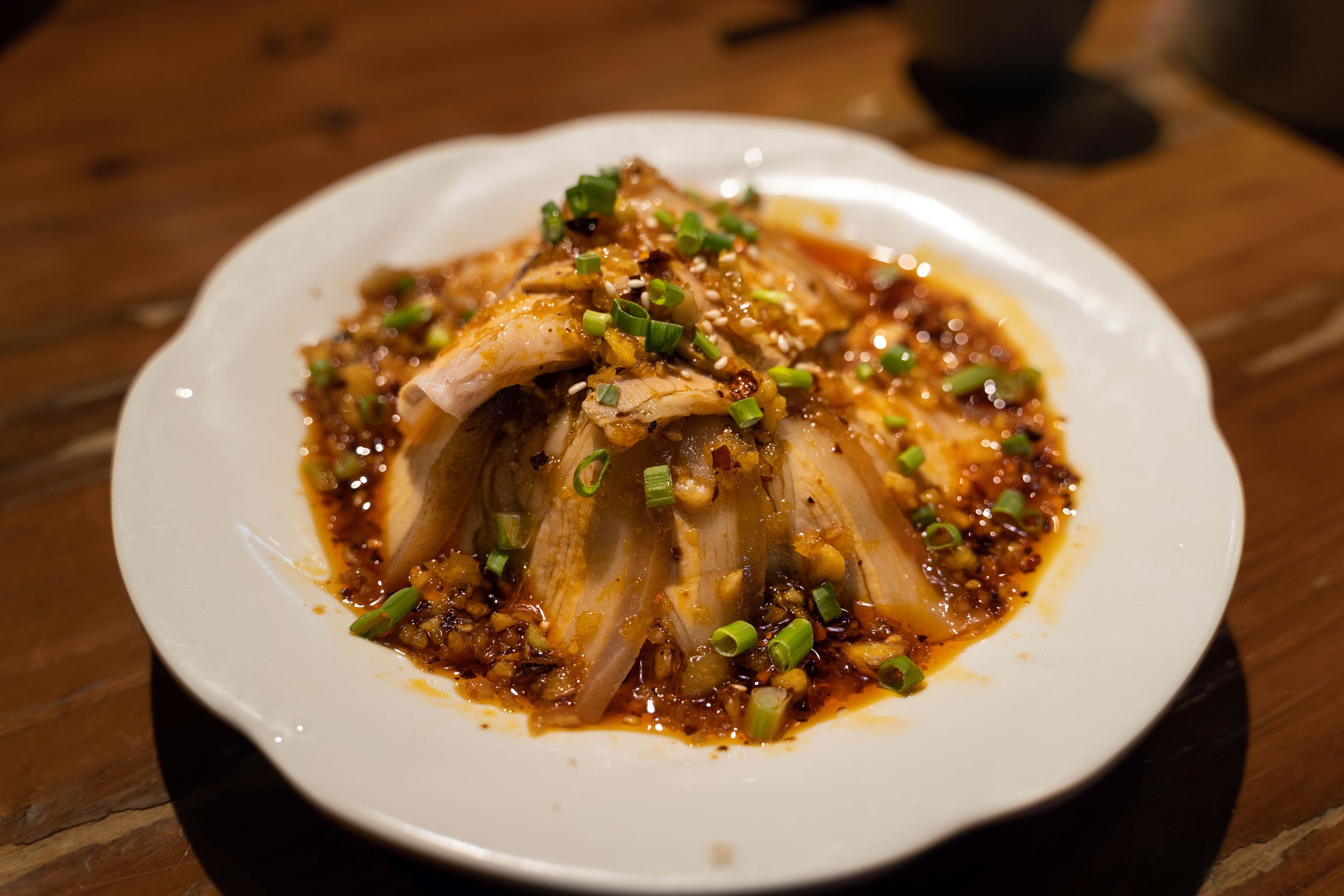
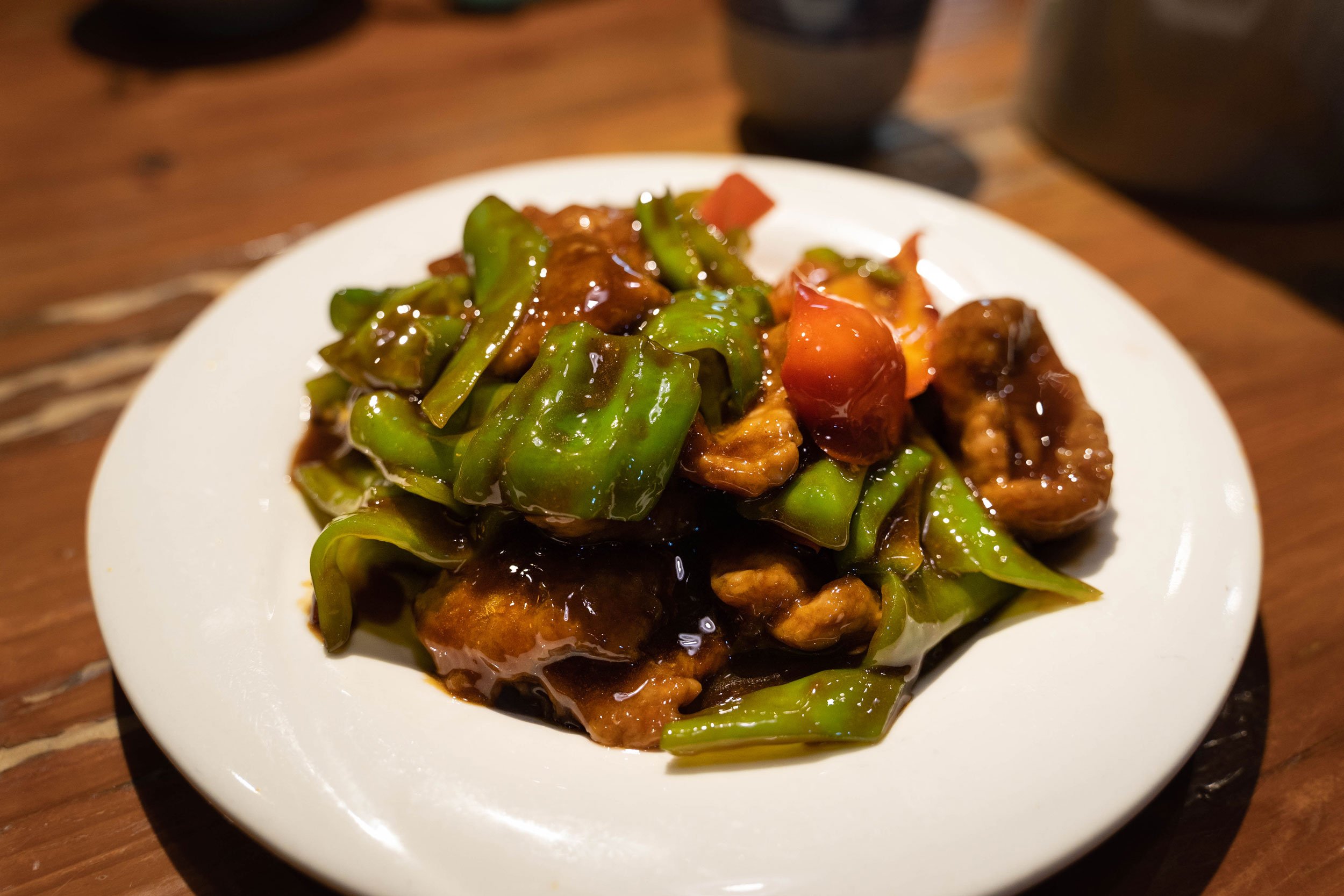
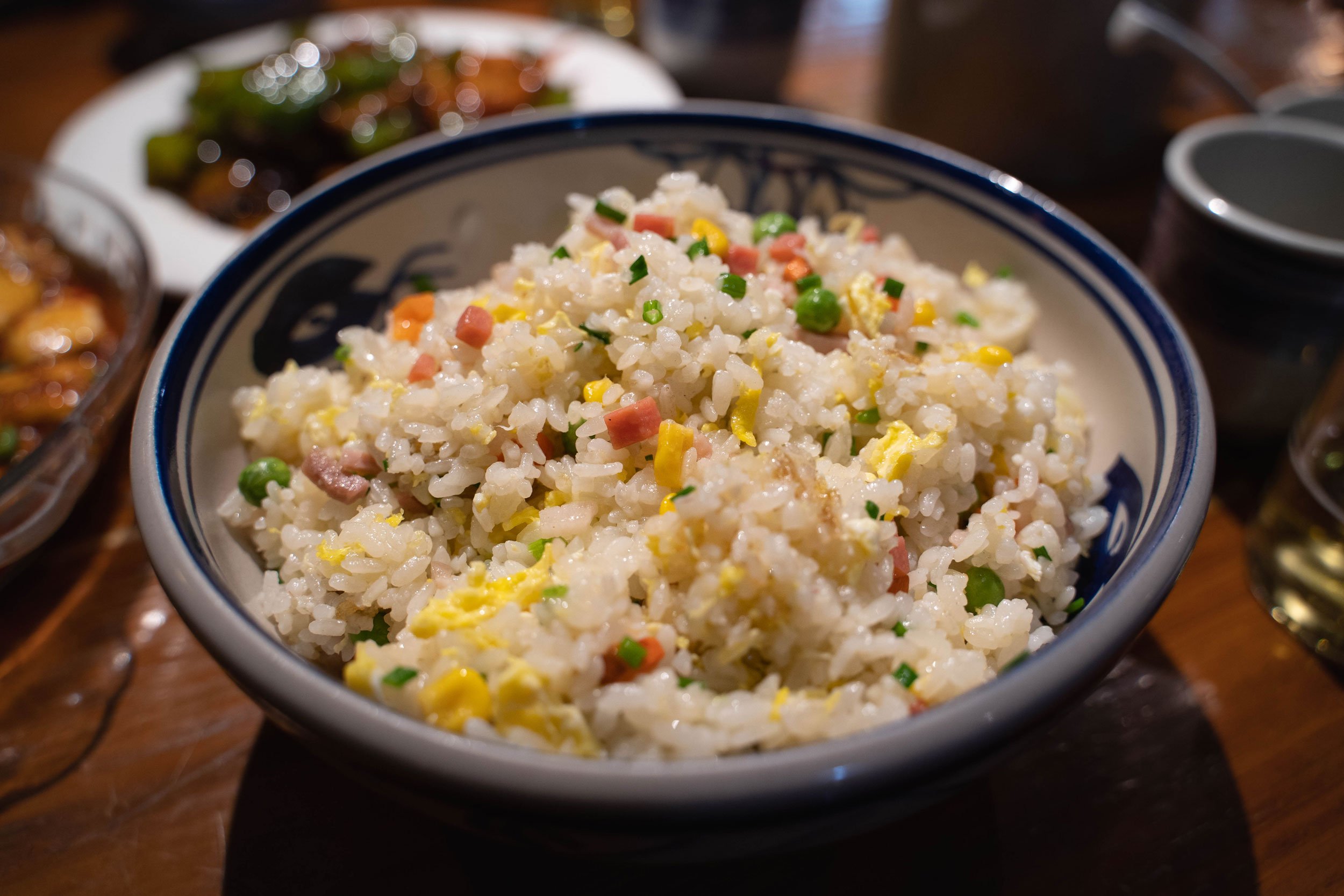
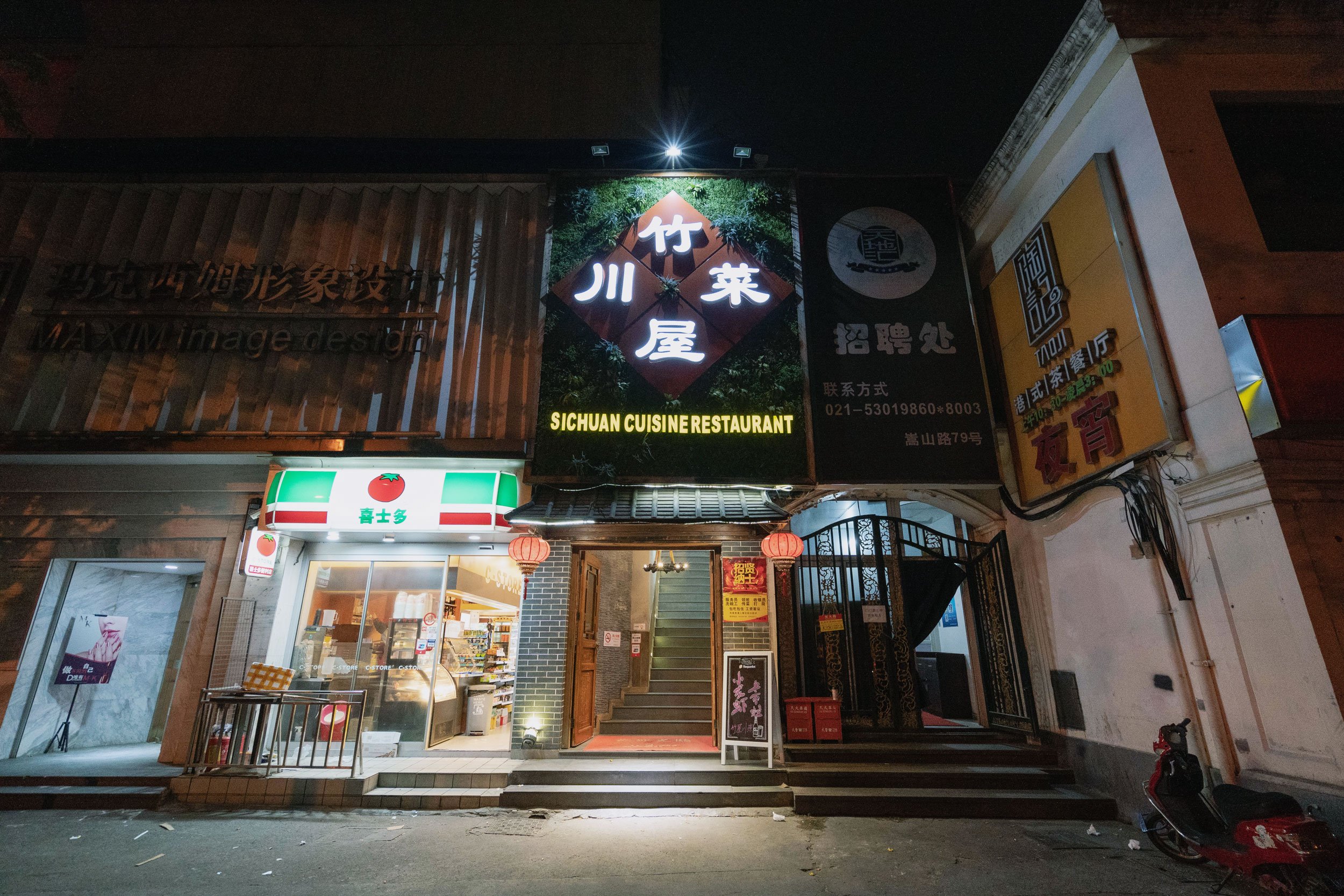
So delicious we had to go twice! This place (竹屋川菜) , which translates to “Bamboo House Sichuan Cuisine”, is great for anyone who likes Sichuan or spicier Chinese foods.
Everything we had was packed with flavor and the crowd was mainly locals - a good sign.
It’s conveniently located across the street from Andaz Xintiandi Shanghai, and prices are hard to beat. We were getting 3 dishes and beer - enough to get full for dinner - for $20-40 USD.
(Up the stairs above the convenience store) MAP
Alibaba Map
Henan La Mianguan
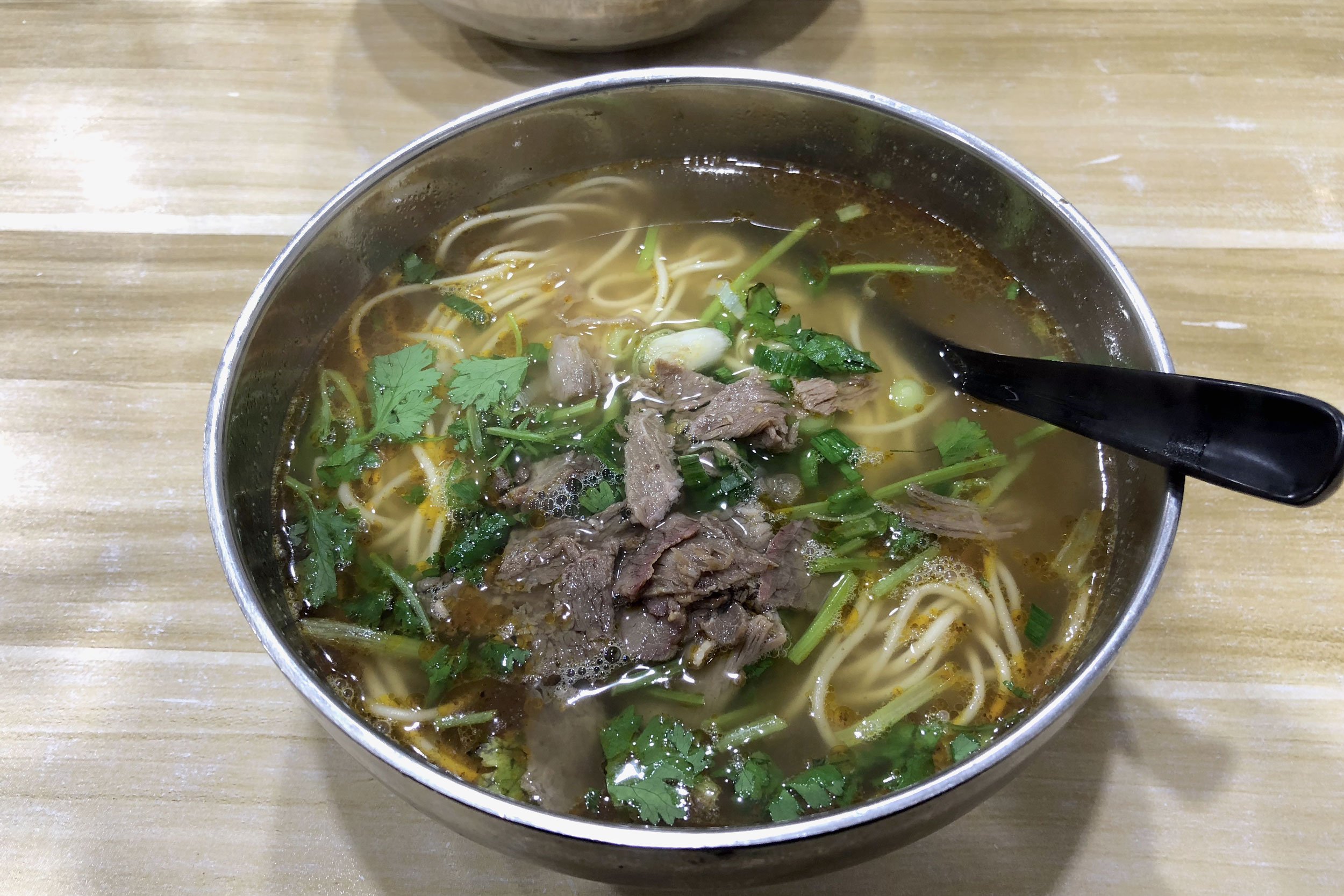
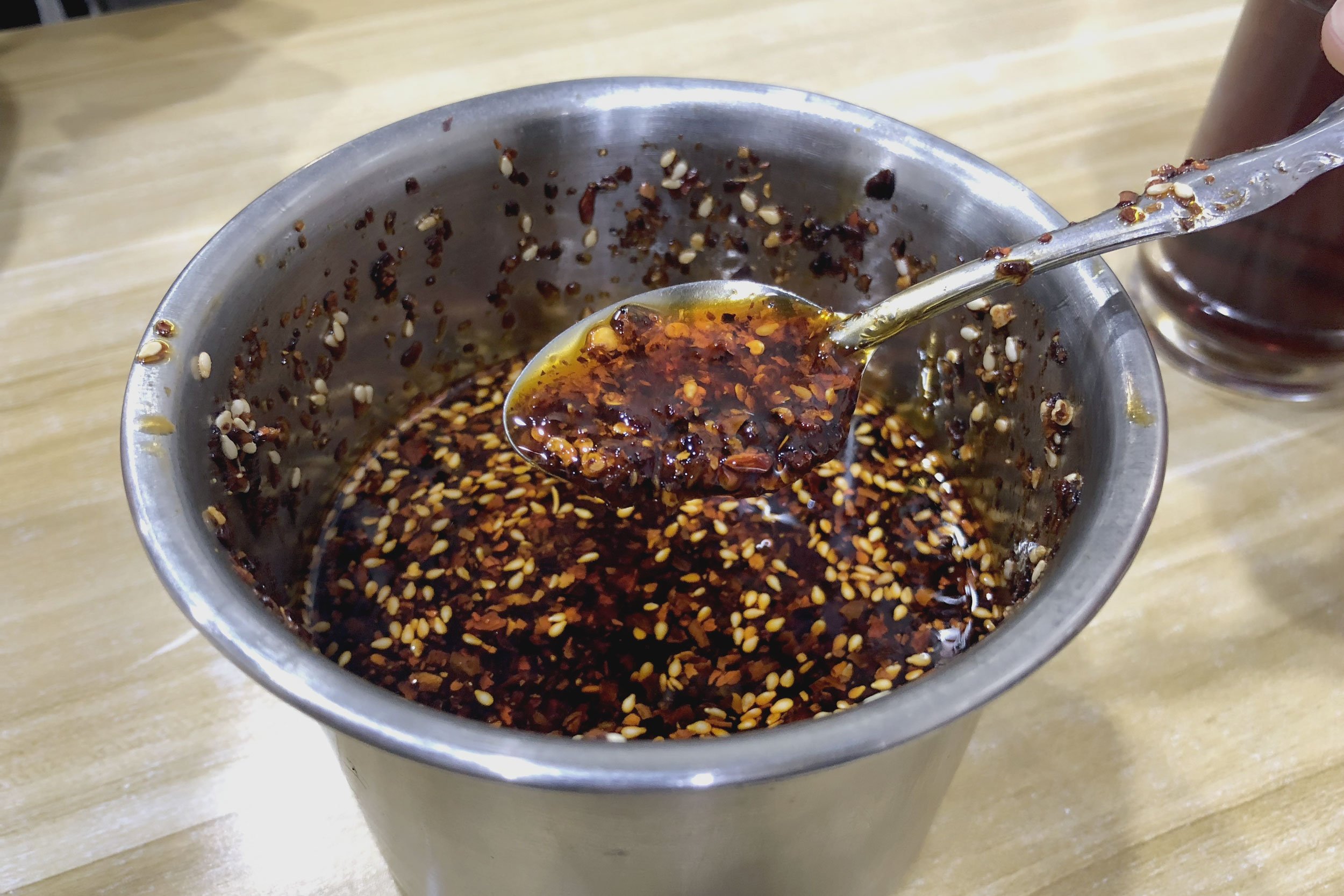


Sometimes it’s the hole-in-the-wall spots that are the best. This was one of those cases.
Henan la mianguan (河南拉面馆 (淡水路), which seems to roughly translate to Henan ramen museum, featured a variety of bowls with homemade noodles in a beef broth, topped with slices of beef and cilantro. This soup really hit the spot.
While everything was in Chinese, both locals and tourists alike were eating while we were there. The cost for a bowl was only about $3 USD.
Dahuchun
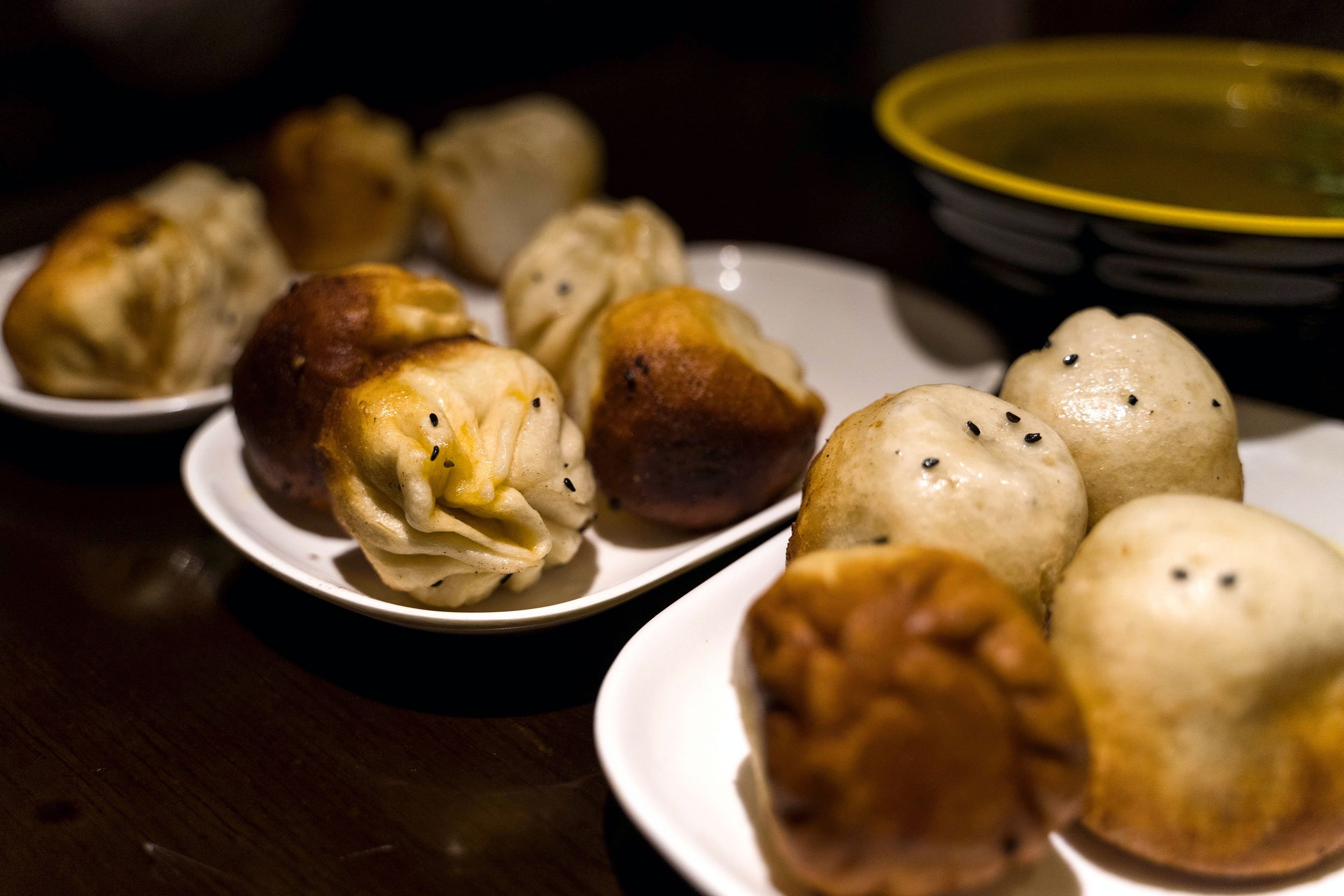
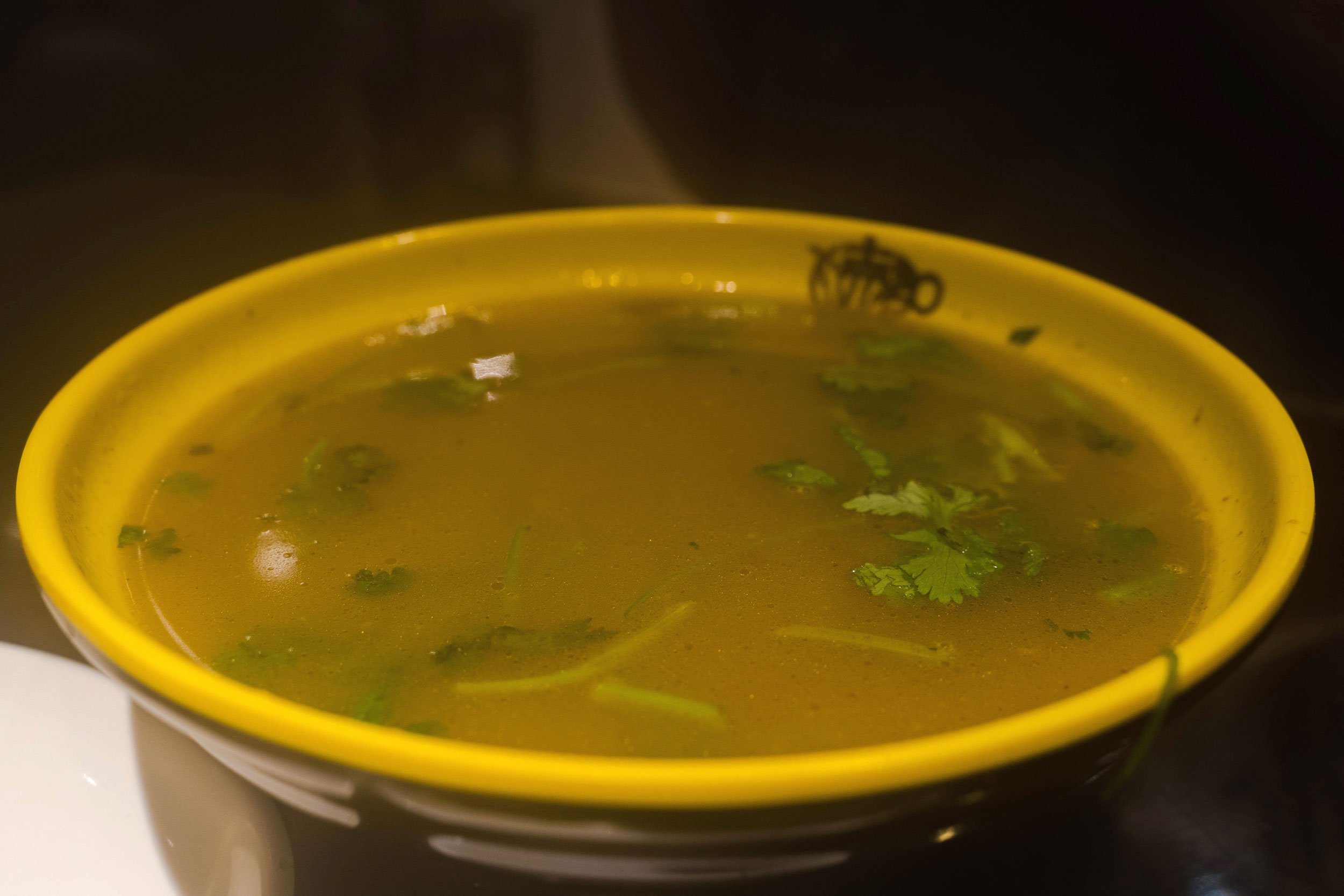
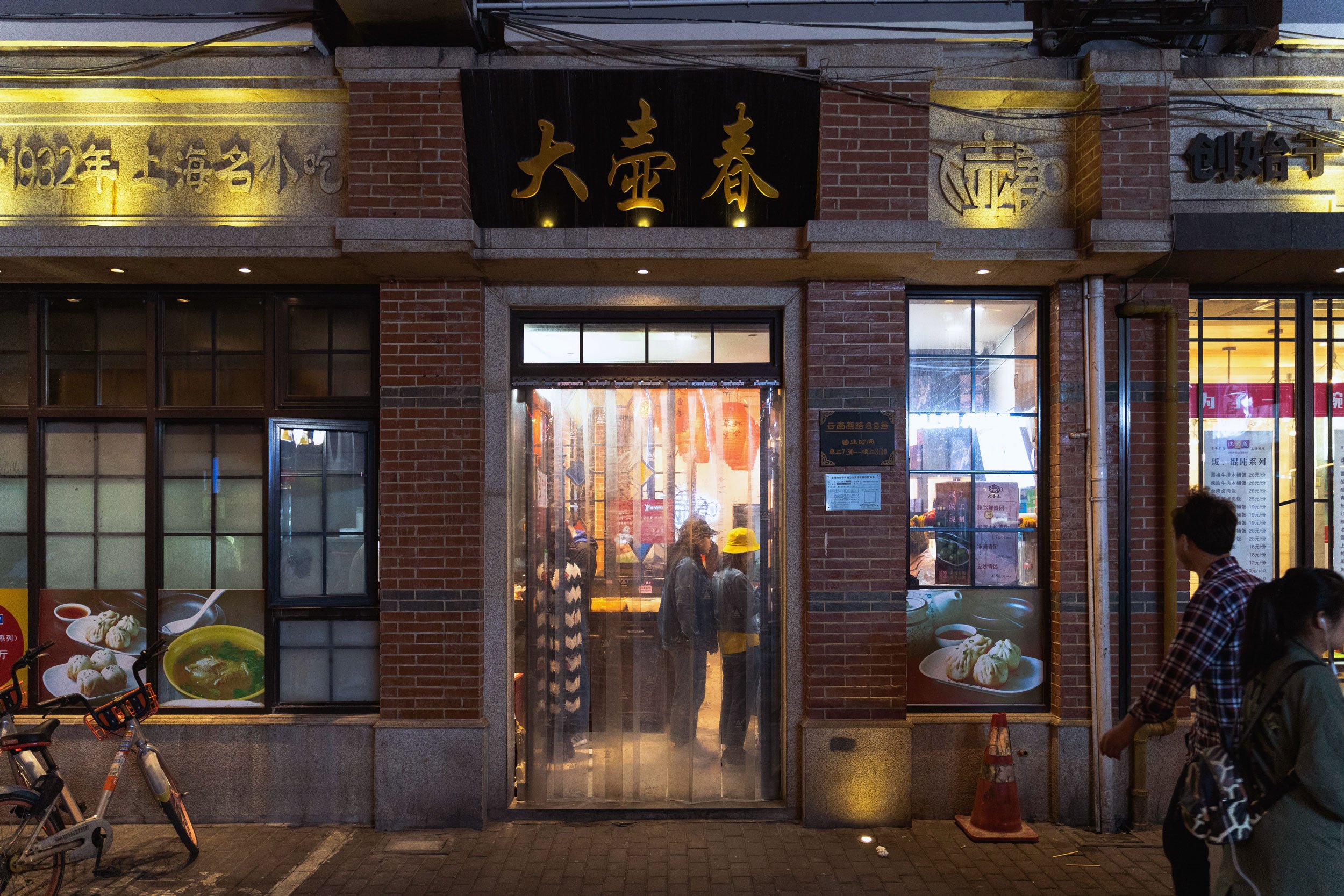
Fast food fried dumplings, good enough for Apple CEO Tim Cook to visit apparently, according to photos on the wall. Dahuchun was our first meal in Shanghai, a place that features something like deep fried xiaolongbao.
The wraps are bready, crispy and thick, and insides a refilled with juicy ground meats. The soup is simple with a taste that somewhat resembles curry.
The ordering area in the front was busy and tables were full, but because it’s somewhat of a fast food experience, we had no trouble getting a seat.
Keep in touch
More travels
Beijing, China
A few days exploring one of the oldest cities in the world, Beijing.
Beijing is the capital of China, a spread out city of over 21.5 million people
One of the world’s oldest cities, it is said to have been established in 1045 BC
It has 7 UNESCO World Heritage sites and houses the most Fortune Global 500 Companies in the world
There’s probably no better place that Beijing to see China’s incredible history while getting a glimpse of what the country has coming up next.
I made my second visit to Beijing in 2019, ten years after my first. During that time it was clear just from observing daily life that a lot had changed. Before anything else, here are some points to keep in mind if you’re planning a first visit.
Things to know
The internet that you know and rely on doesn’t exist - get a VPN to access any Google or Facebook related site amongst many others you don’t realize you need. We used Baidu Maps [CN] and Alibaba’s AutoNavi Maps [CN].
There’s basically no English. Most staff can’t communicate in English but some will try with apps if they have time.
Mobile payments via WeChat or Alipay are the norm. Because a Chinese bank account is required, tourists can usually pay with cash or Union Pay credit card, but those transactions are seen as a hassle.
Where we stayed
Looking for a comfortable place with English-speaking staff, we decided to go with an international hotel. We stayed at Hotel Jen, a Millennial-focused chain by Shangri-La, located in Beijing’s Central Business District diagonally across the CCTV building.
Rooms are spacious and with ample outlets (all universal!), and the modern interiors are carefully designed. It sits on top of the China World Trade Center complex which has a shopping mall, and in between two subway stations, so there’s good access to lines 1 and 10. They also have pretty delicious breakfast buffet.
Jen Skyline room at Hotel Jen Beijing
The cheapest and easiest way to the hotel from Beijing International Airport is by taxi.
Right outside the terminal is an area where everyone lines up and gets directed into a taxi. After some hesitation due to fears from our taxi looking different (nicer, black Volkswagen), we got in and gave the hotel info printed in Chinese - important to do. The driver ended up being very nice, unloading our suitcases for us while we waited under a roof as it rained, and charged us a normal $$ yuan.
One thing I realized was that Beijing is huge... like really huge.
It’s spread out layout and large blocks means that there’s a whole lot of walking. We were hitting just under 11 miles (17.5 km) of walking each day, and looking on a map, barely even covered a small little fraction of the city’s area.
Here’s what we did on each day.
Day 1
We visited the Great Wall, SOHO area and the Temple of Heaven.
The Great Wall - Mutianyu
At the top of everyone’s must-do list is the Great Wall. There are a few main entry points, and we chose to go to Mutianyu, where I visited in 2009. In addition to its hilly landscape, Mutianyu is known for its fun toboggan slide down after your trek.
I realized that between my trips here, Mutianyu became quite tourist-centric over the past ten years. There’s now a tourist center, shopping area and shuttles that hadn’t existed before.
Definitely go really early in the morning, we were at the Wall by 8AM, and there were huge crowds going up as we came back down.
This visit provided us quite a unique experience. It was an extremely foggy morning, so much so that visibility was maybe 20 meters. Sure, it was unfortunate to not be able to see the Wall go off into the distance, but being alone on the Wall on an early morning in the fog, overhearing someone playing traditional Chinese music in the distance felt like we were transported back in time rather than just seeing a tourist spot.
SOHO & Dafangjia Hutong
Soho actually covers a fairly large area, and we had visited The Place, a shopping mall, there on the first half day that we were in Beijing. This was where we had some amazing hot pot (see bottom).
On this full day 1, we ventured to a slightly different area of Soho to see Galaxy Soho, a futuristic-looking building designed by Zaha Hadid. While there’s not a whole lot to do there besides admiring the architecture, for someone who likes photography and design, the building alone is entertaining enough.
Contrasting Galaxy Soho’s Futuristic feel is Dafangjia Hutong right next door.
A hutong is an old neighborhood from the late 1200’s to early 1900’s comprised of alleys and courtyard residences. Many have been demolished or blocked off as Beijing makes efforts to modernize, but some remain. Dafangjia is one of them.
To step in this hutong for a moment, watch locals play mahjong under hanging laundry and lanterns as Galaxy Soho’s modern lines paint the background really sums up Beijing - a city of incredible culture and history skipping the present and stepping into the future.
Temple of Heaven
The Temple of Heaven, like many sights in a Beijing, is huge. The temple itself sits in a large park area that can be equally as interesting.
Local residents gather in the park to play Chinese board games, practice tai chi, exercise, sing, and everything in between. Just roam.
After exploring the area, we walked to get some Peking roast duck for dinner at Li Qun (see below). Tip: Try your luck at getting a taxi for this trip.
Day 2
We visited Tianamen Square and the Forbidden City, Wangfujin shopping district, Shichihai and Luogu Lane.
Tiananmen Square & The Forbidden City
Next to the Great Wall, Tiananmen Square and the Forbidden City (known as The Palace Museum) are icons of Beijing. One of the immediately obvious observations is that like a lot of the sights here, they are huge.
The biggest thing that I felt personally here, particularly around the Forbidden City is the architecture built to this impressive scale. It is overwhelming, and while other countries around Asia have monuments but not many, if any at all, can match the scale. Building after building, wall after wall, courtyard after courtyard… and it keeps going.
One of the best things to do is to get a good view of the area. We did this at Jingshan Park.
It’s a bit of a climb up a small mountain, but the view gives you a bird’s eye view of Beijing and looks right over The Forbidden City, letting you really understand its greatness and magnitude.
Wangfujin
After taking a break at Jingshan Park, we walked over to Wangfujin. Like most places, it’s a lot further than it looks but too close for a taxi and a bit of a hassle by train.
Wangfujin is known for its shopping and has stores like Apple, an official NBA store, Victoria’s Secret, newer, modern malls with international brands as well as older, more domestic ones. They’re all along the wide, Wangfujin Pedestrian Street, but most visitors are interested in the alley off to the side.
The Wangfujin Snack Street is an alley with stalls selling, well, interesting foods. More than a photo op than a place to fill your stomach, there’s everything from live scorpions on a stick to centipedes and squirting cow testicles. Interesting to see, but in the two times I’ve come here, I’ve never bought anything.
We then walked up to Dongsi station and caught the subway to Shichihai station.
Shichihai
Shichihai and Houhai Lake are just to the northwest of Tianamen Square and the Forbidden City. The area is full of character as it’s made up of old streets and stone buildings reminiscent of hutongs with a picturesque lake next to it.
Small shops of all kinds are around the town area - from fashion to sweets, tourist-focused souvenirs shops and everything in between. There are some cafes that line the lakeside area making this it a nice destination for dates, or simply hanging out, especially for young people which we saw a lot of.
Luogu Lane
A pleasant surprise of a destination to wrap up our Beijing stay. From Shichihai, we walked to the southeast for a tea break at Chénshēng fúyuán chāng tea house (?) [CN], known for their pua tea. Rested and rejuvenated, the sun had set and we decided to get some dinner nearby.
This is when we stumbled upon Luogu Lane, a lively walking street full of boutique shops, cafes, and takeout ranging from Peking duck burritos to boba milk tea to colorful, social media ready sweets shops.
Not touristy at all, this was a fun place to explore and I’d really recommend trying to visit, especially younger people.
Overall, Beijing was a great trip and amazing to witness this great city in its transition into the world’s spotlight. So much to see, people that likely beat your expectations, and delicious foods galore.
Would I visit there gain? Definitely, I’d love to.
CLICK for more street shots around Beijing
LIQUN Roast Duck
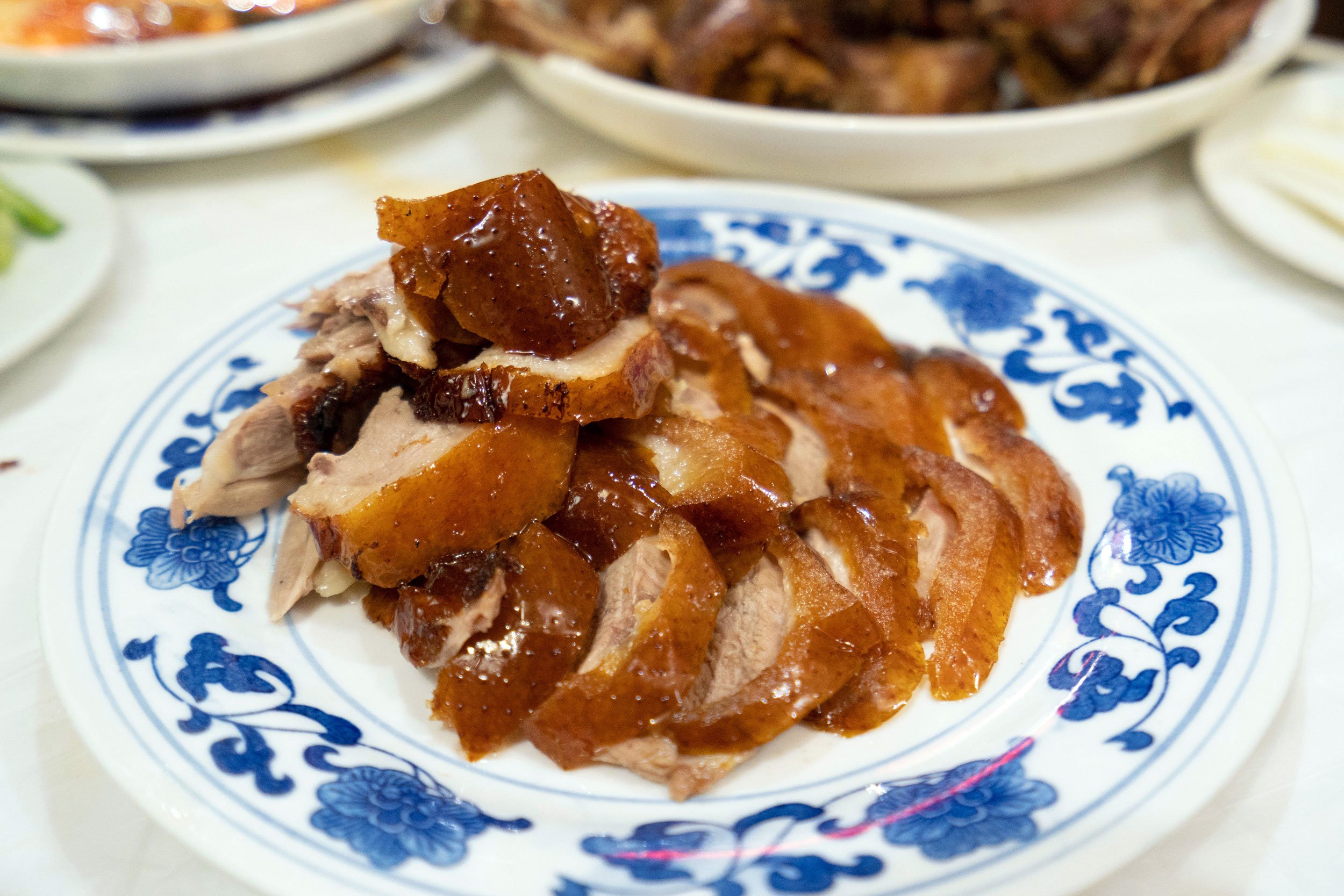
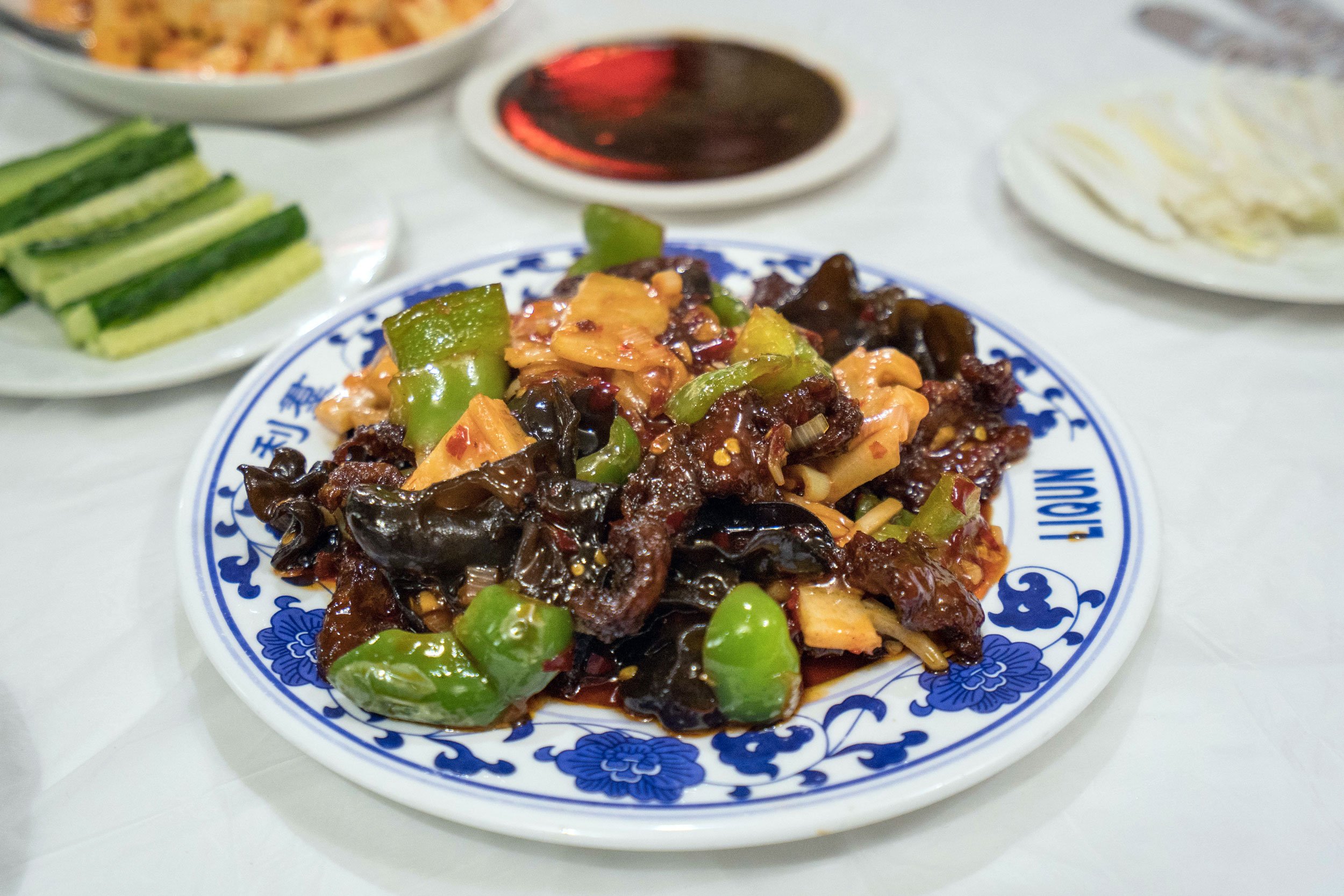
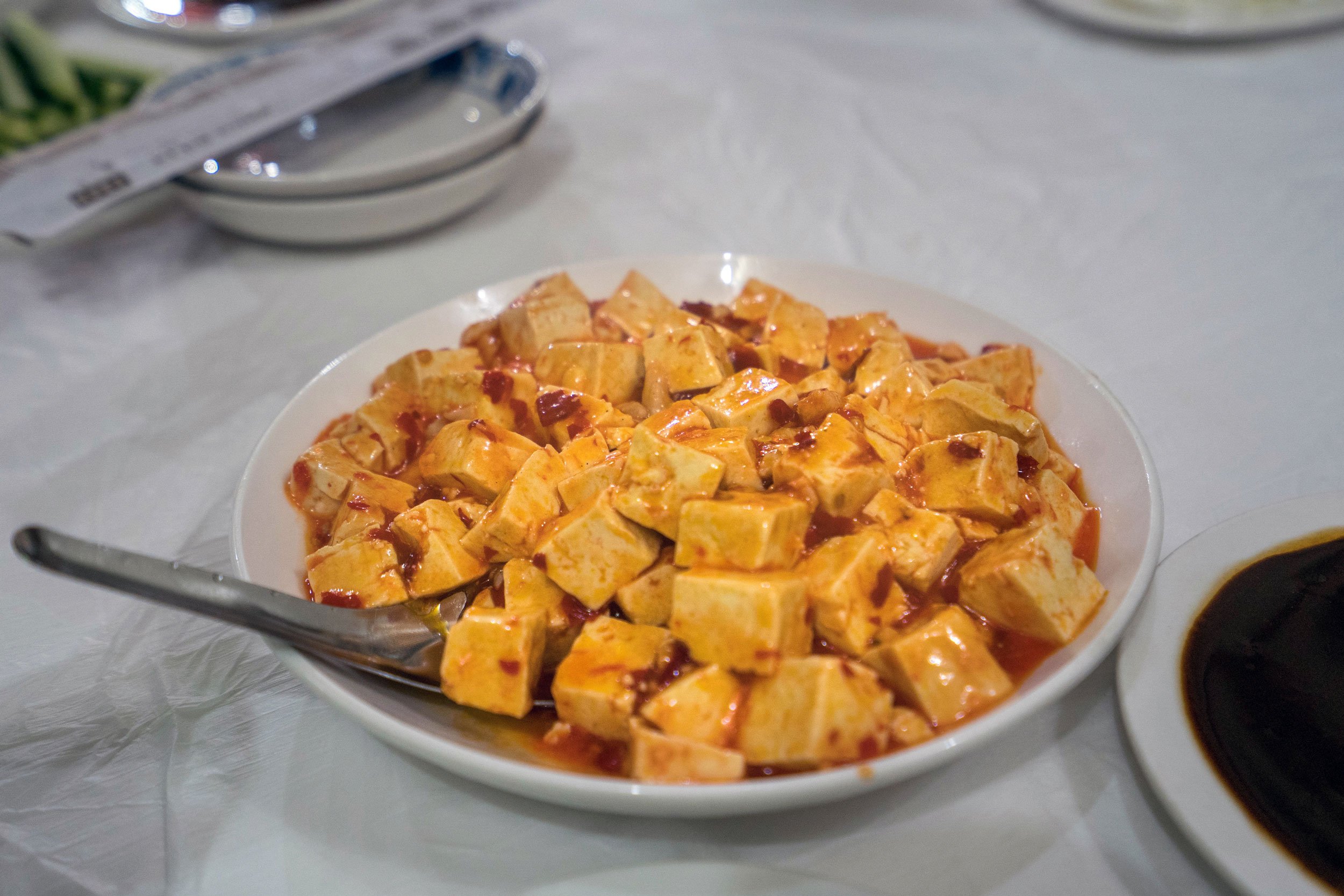
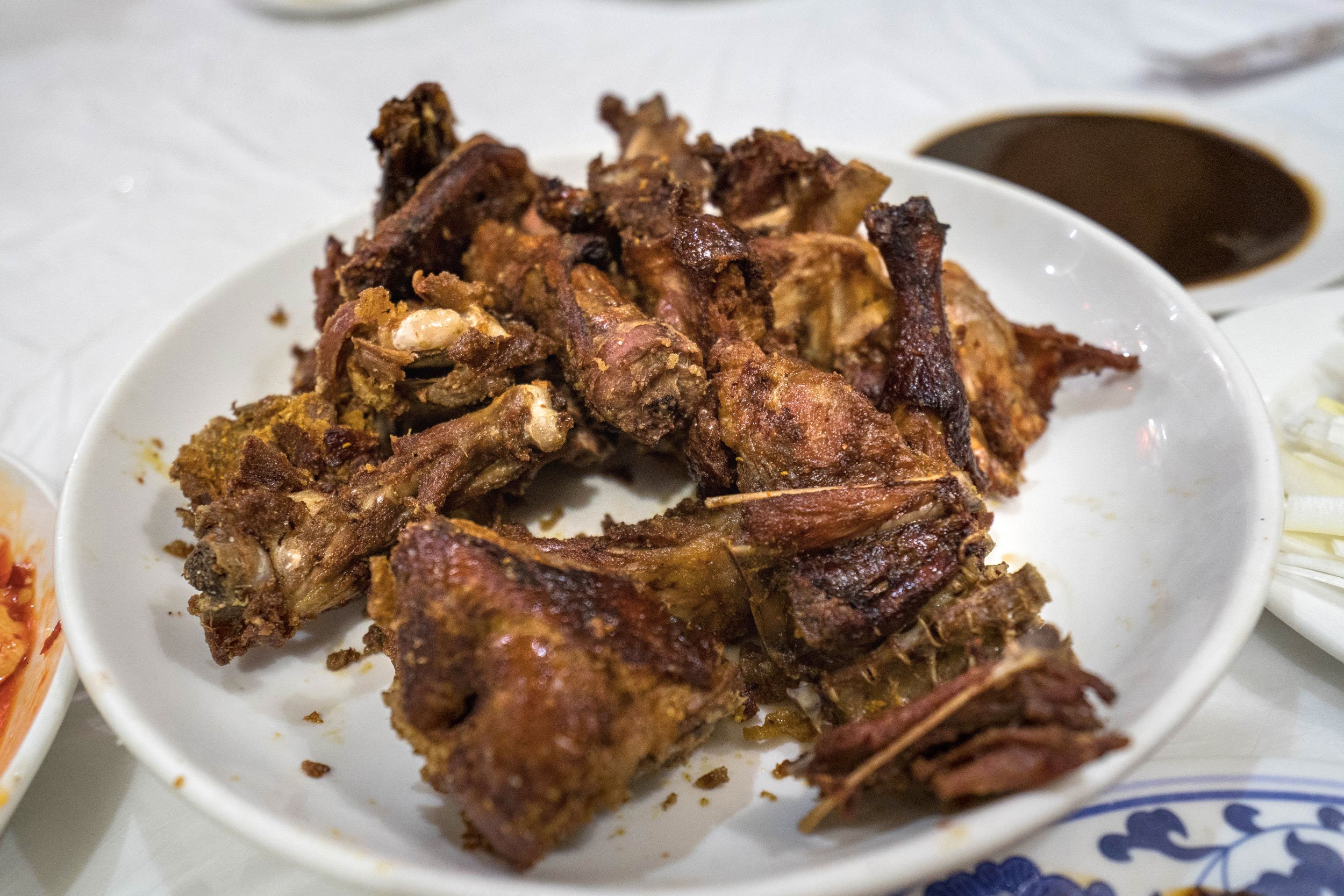
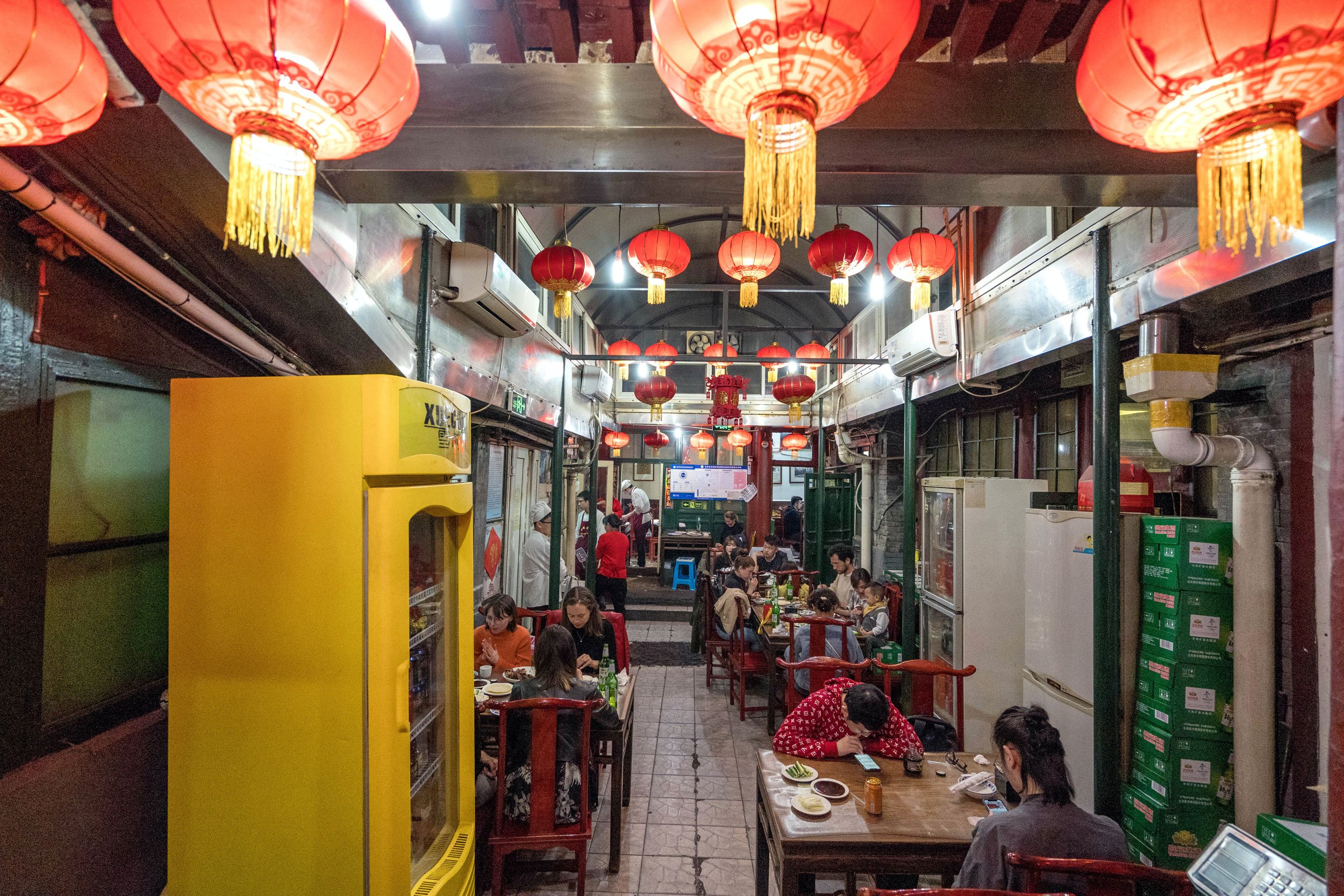

I got hooked on my first trip to Beijing and had to come back again. Liqun is a top 10 Peking Duck restaurant in Beijing according to various Chinese websites, and rightfully so. Founded in 1864 and located in a residential area, it gives a local, authentic type of experience.
In the hall to the dining area, you pass a the chef who is roasting all of the ducks in a brick oven. The smell is amazing.
The duck is flavorful, rich and oily. They have 3 different sets to choose from, we got the one that included fried duck as well. The set is less than USD $50 and feeds 2 very well. We ordered a couple more dishes and overate. Stick with the duck, you can’t go wrong.
Zhong Guo Lan Zhou Niu Rou La Mian
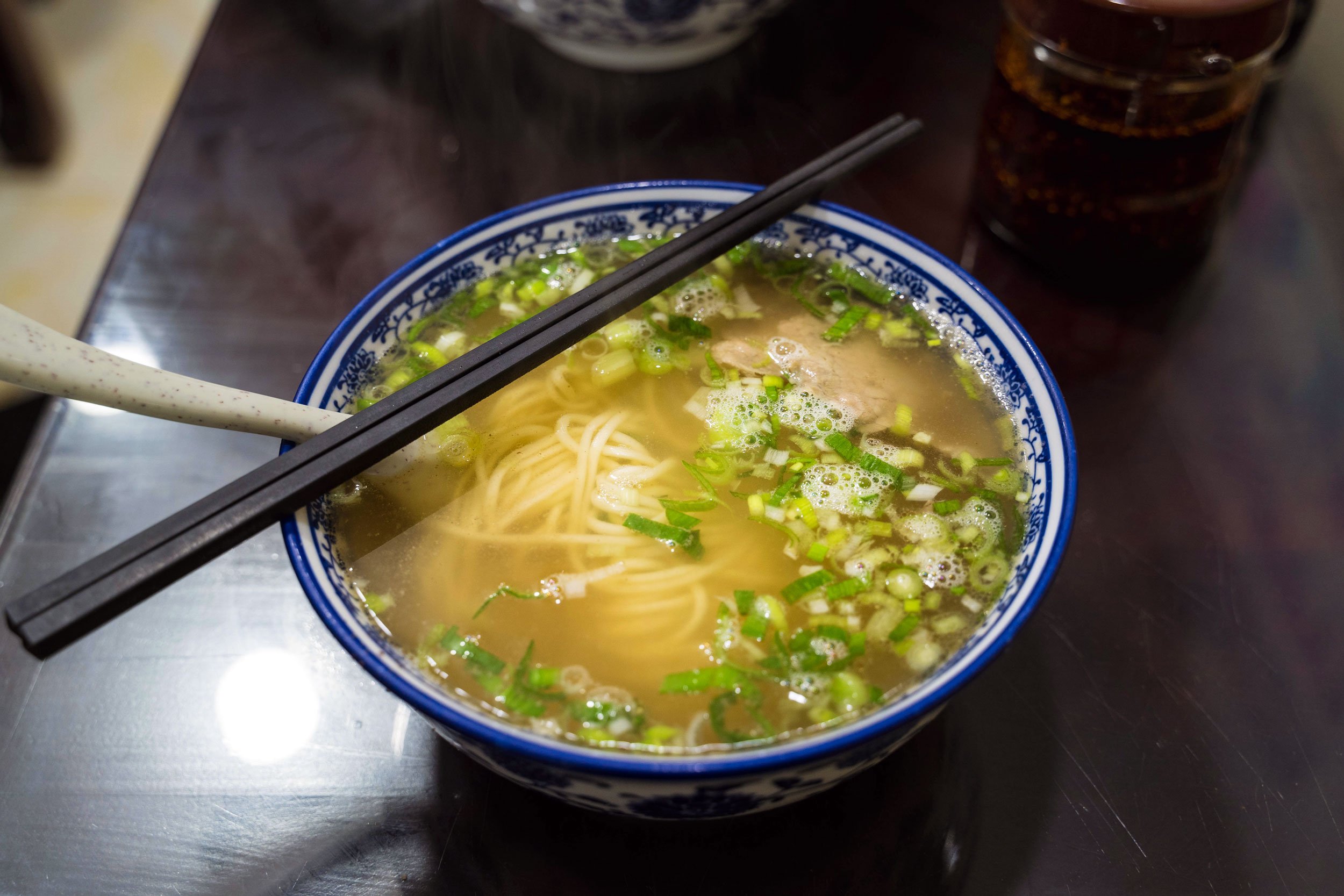
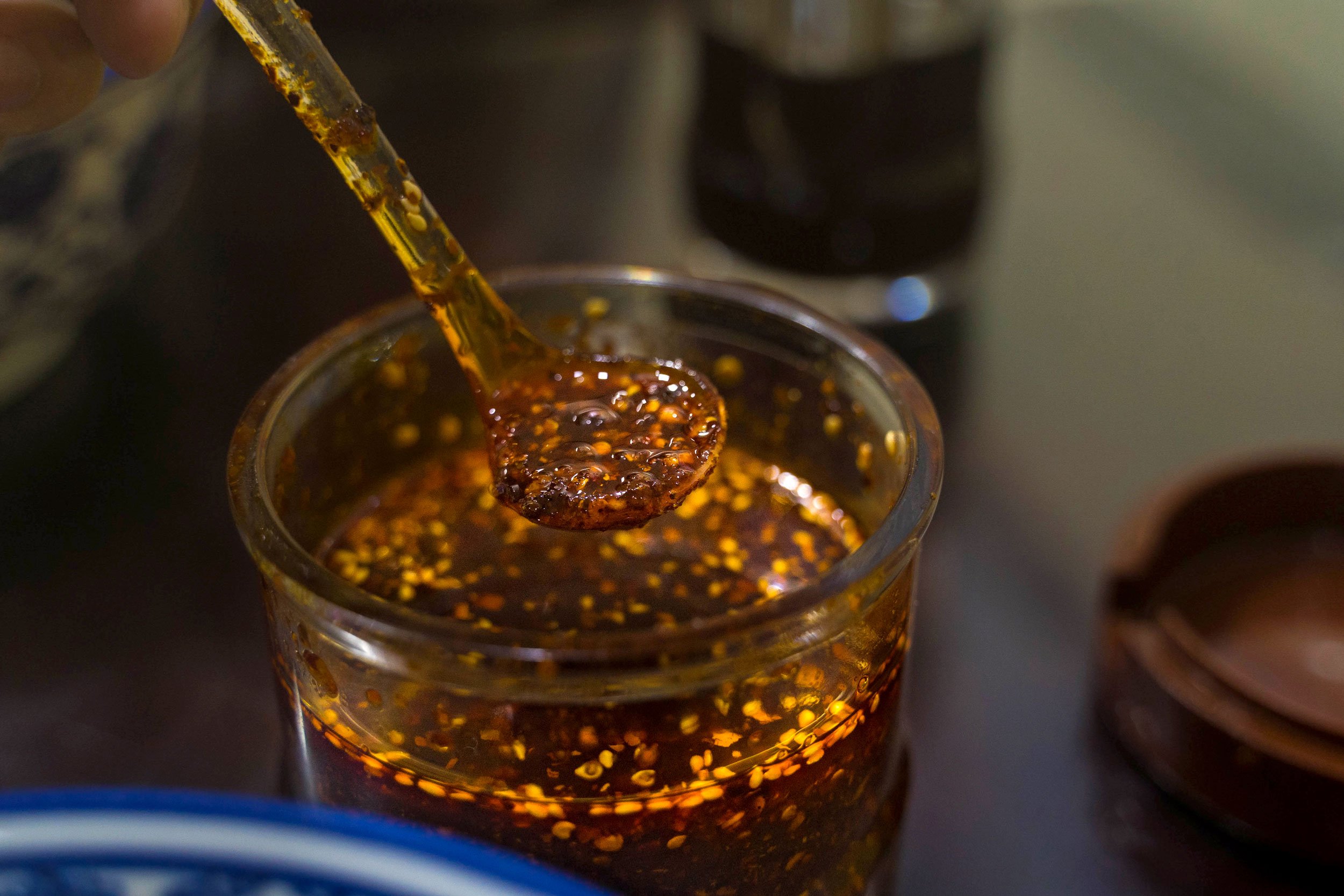

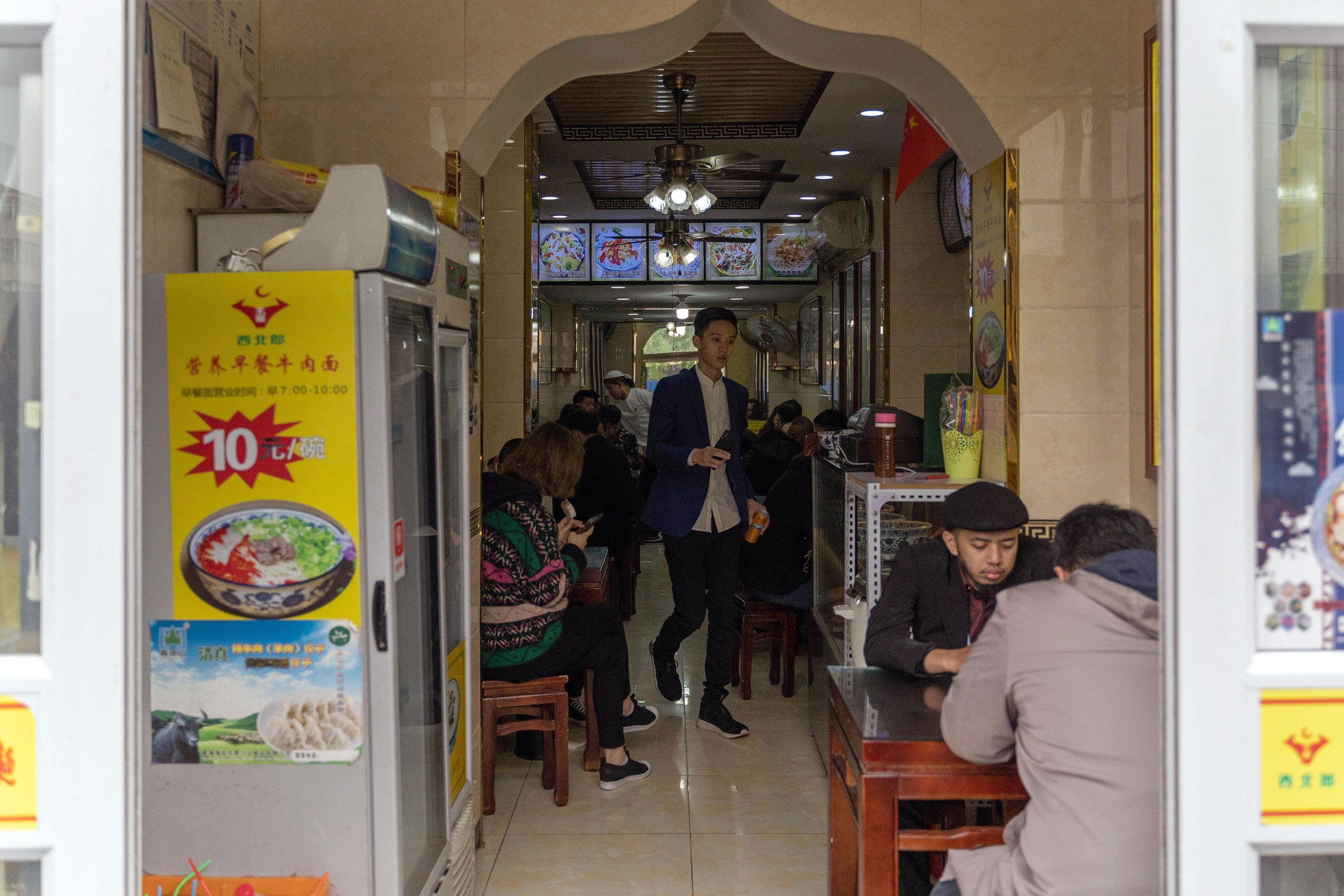

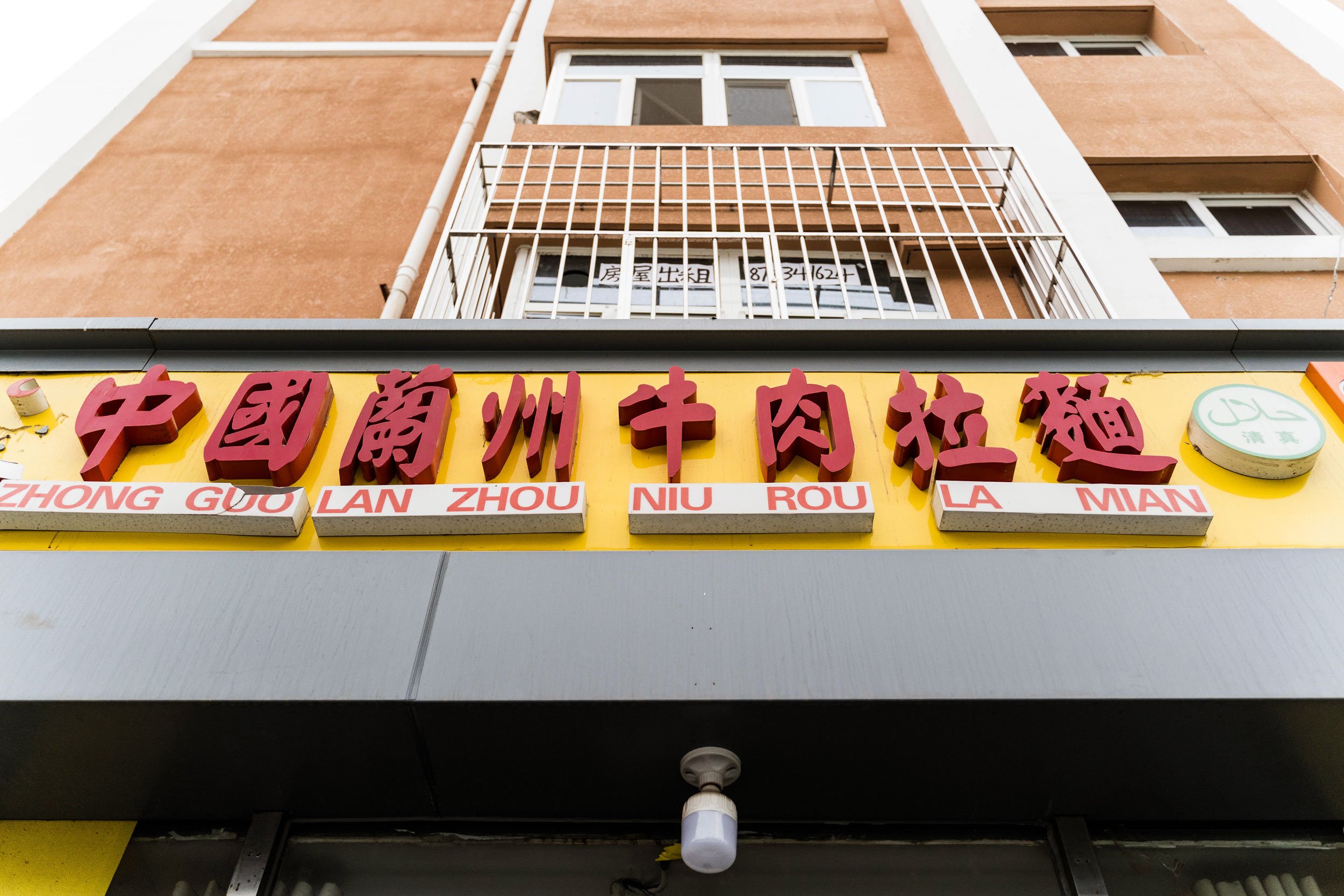

Taste that is several times better than it looks. What was a simple, noodle soup in a simple, average-looking shop, ended up being one my favorite foods in Beijing.
It’s a Halal dish using handmade noodles in a beef broth, topped with beef slices and garnished with scallions and onions. The broth is thin but full of flavor. To add to it, they have a chili oil that is one of the best I’ve ever tasted.
Even better, it’s only a few dollars for a filling bowl.
Du Niang Hotpot
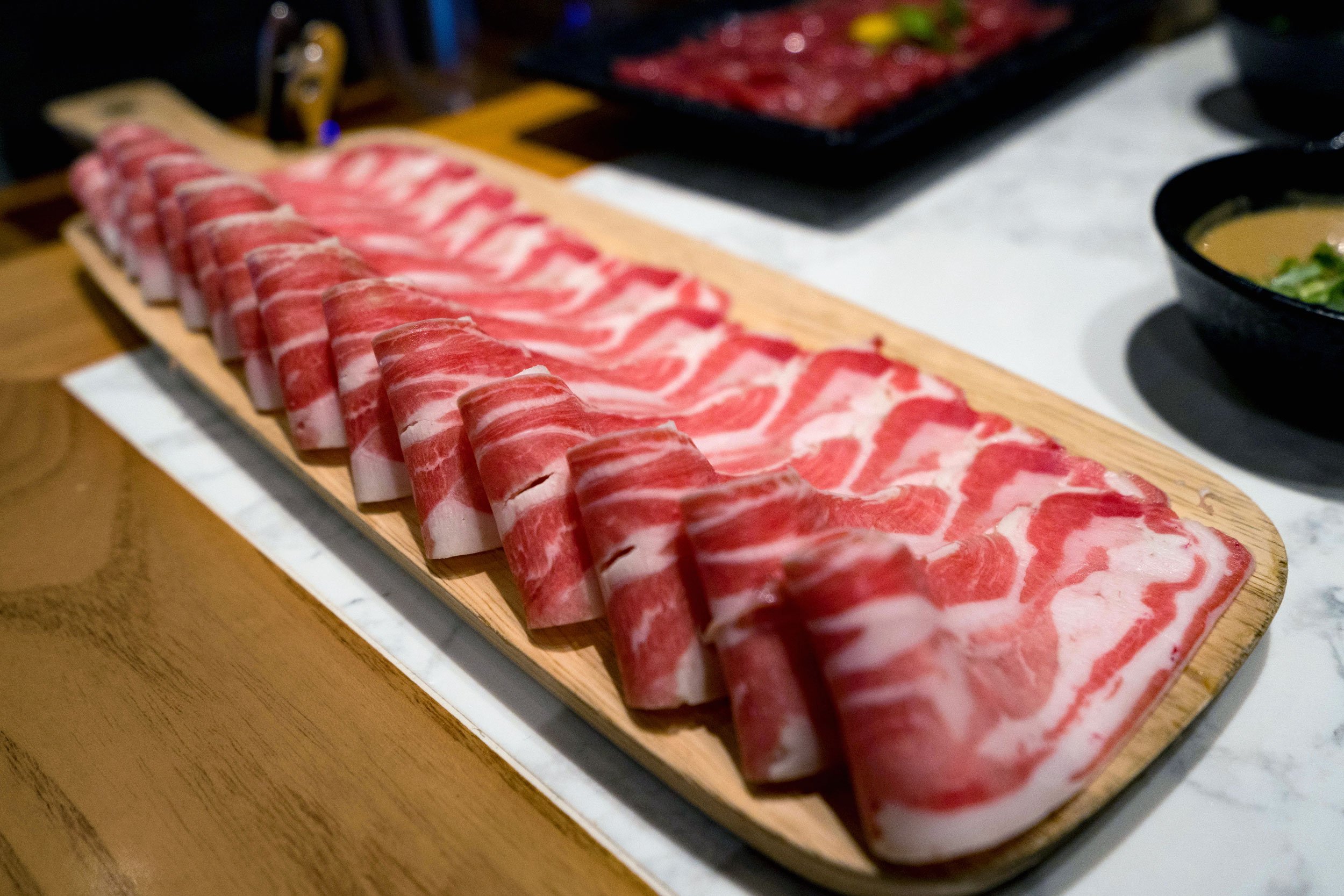
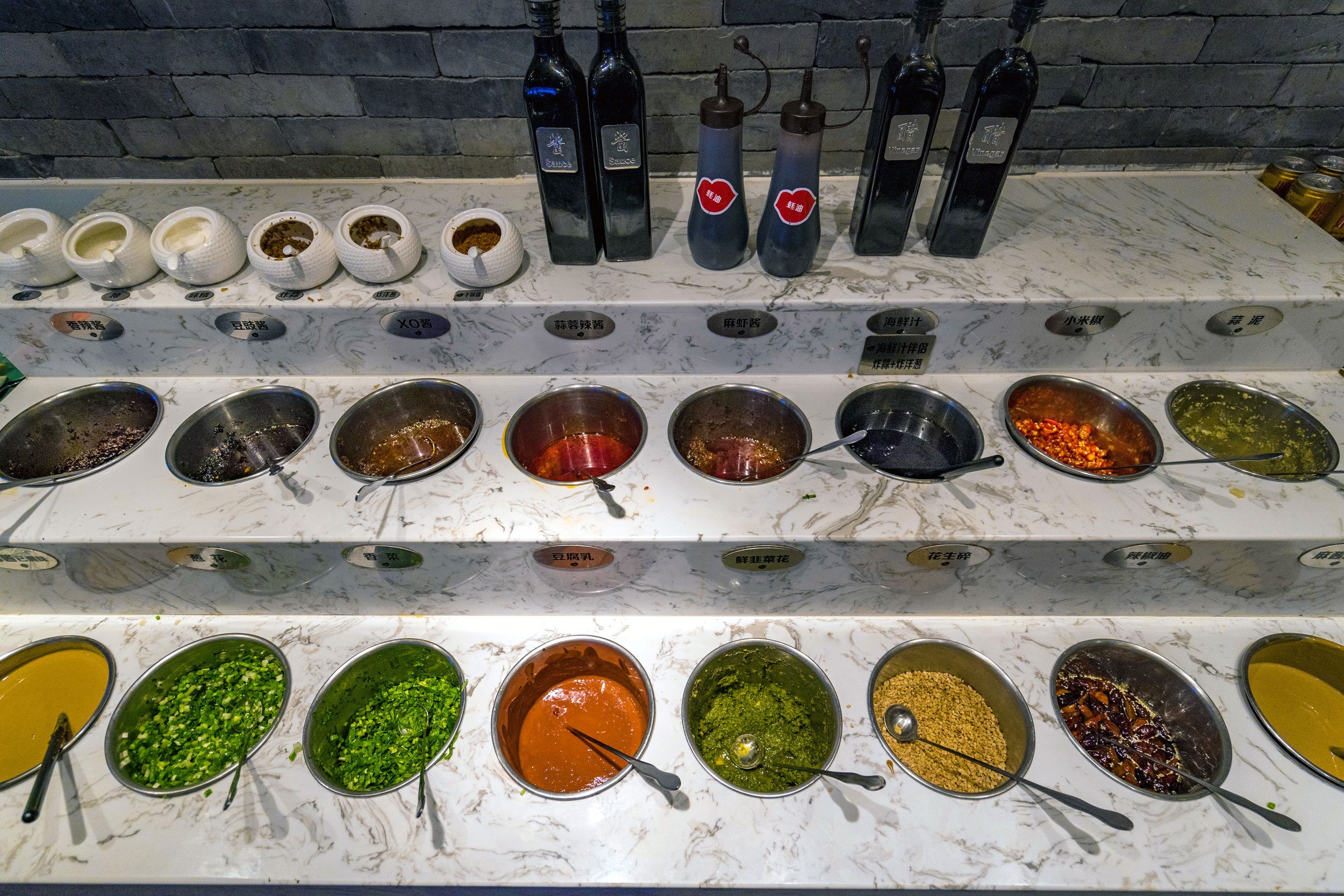
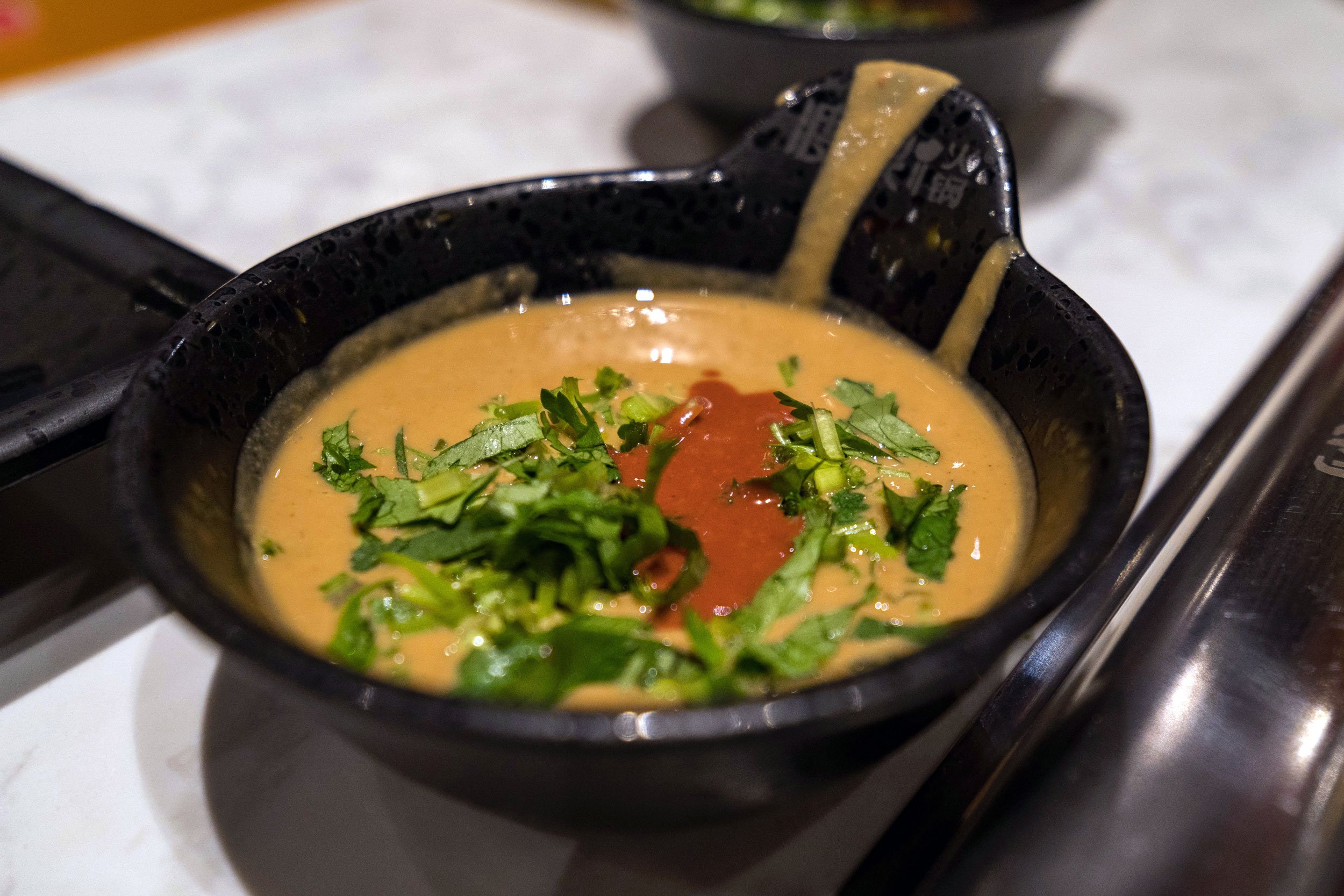
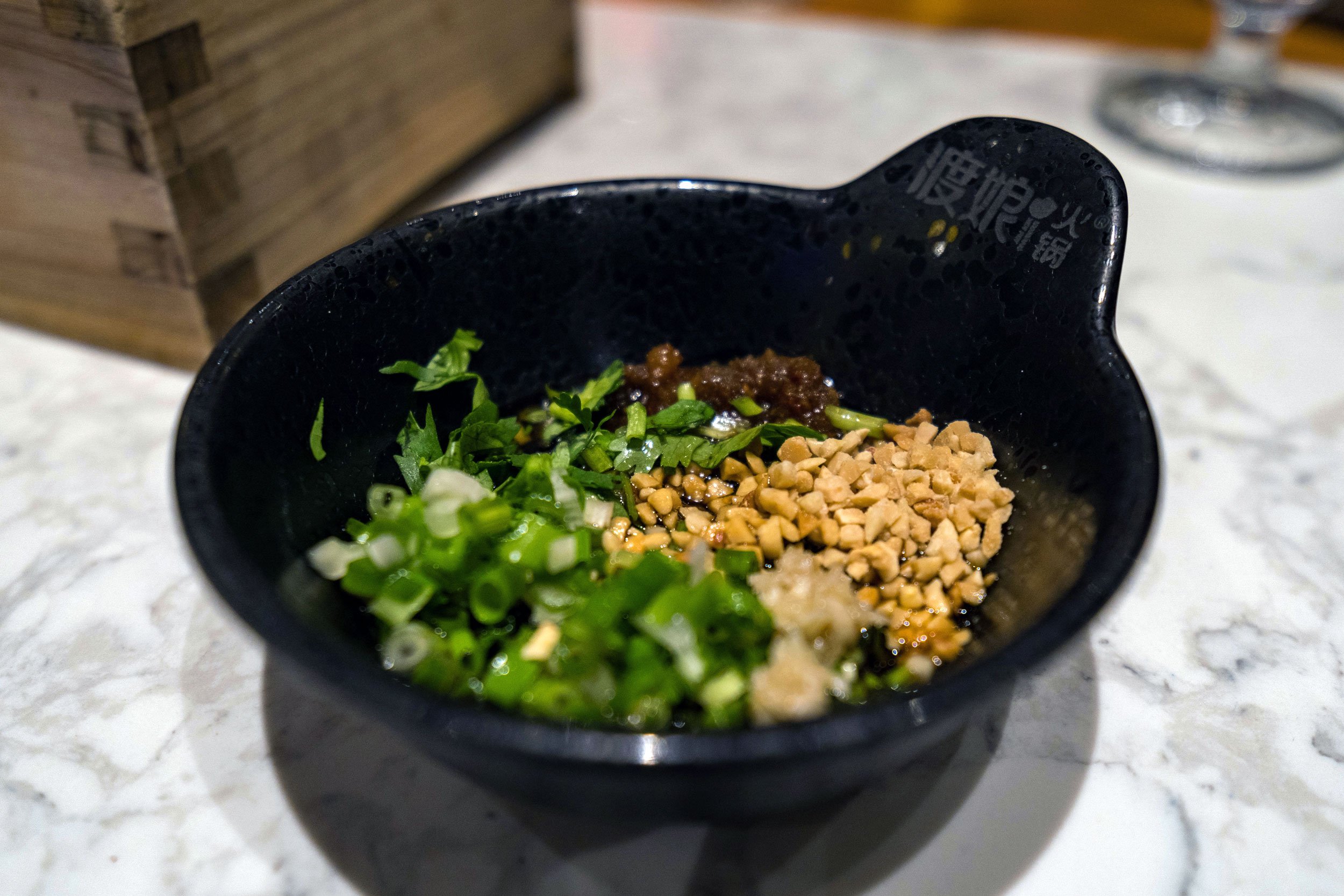

Anyone who likes spicy hot pot will love this place. You can choose two broths to eat from, and we had to get the hot one like all the locals around it. It is, well, extremely spicy.
Du Niang is located at The Place mall in SoHo. Getting seated is a little hard as after you put your name down, you get a number and every number is called in Chinese. You have to keep checking.
It’s worth it though. The hot pot is really flavorful and there’s a bar full of an array of sauces for you to mix and match to make your own. Our waiter also was patient and helpful, and tried to speak English. Delicious spot, just know your clothes will smell after!
Keep in touch:
More travels:
Hakone: Hotel de Yama
A Hakone stay at Lake Ashi with at Hotel de Yama, overlooking the Hakone Azalea Fair.
Hakone’s Hotel de Yama with its garden in full bloom
Quite possibly the best location you could stay at in Hakone.
Hotel de Yama, also known as Yama no Hotel, is a 4-star resort located right on Hakone’s Lake Ashi.
It began as a vacation home for Koyata Iwasaki, nephew of Yataro Iwasaki, the founder of Mitsubishi. It is designed in a Western style and has catered to both domestic and international guests since 1948, just as was desired by Iwasaki.
HOW TO GET THERE
The easiest way to get to Hakone is via the Odakyu Romance Car express train, a 1 hour 15 minute ride from Shinjuku station.
Once arriving at Hakone-Yumoto station, the last stop, there are a couple of options. The easiest way is catching a bus from across the station that goes to the Motohakone area. From Motohakone, there are shuttles to Hotel de Yama.
We stayed here for a weekend in Hakone in May, when the Azalea and Rhododendron flowers are in bloom for the Hakone Azalea Fair. The flowers, 800 JPY (free for guests), are a big attraction draws a pretty decent crowd.
Hotel de Yama is unlike a lot of the other resorts in Hakone. Due to it being a Western style resort, it’s not a typical ryokan and more like a full-service hotel that you’re used to.
We stayed in a Standard Type room, a 30㎡ room with two full-size beds and a view of the garden and Lake Ashi. Prices vary depending on the room and season but will typically start at around $300/night.
View of Lake Ashi and the garden from the room
The resort, of course, has an onsen hot spring as well. One thing to keep in mind though, is that the male onsen is not as good as the female onsen. While females have an outdoor area with a view of the surrounding forest, males have high walls lining the perimeter of their bath and there’s no view.
In addition to the hot springs, Hotel de Yama also has a spa, karaoke room and banquet hall.
There are a few places to eat and drink as well. Salon de thé Rosage, a French cafe, Vert Bois, which specializes in French cuisine, the Lounge Bar for drinks, and Tsutsuji no Chaya, a Japanese kaiseki restaurant. We stayed with the Western theme for our meals.
Salon de thé Rosage
Salon de thé Rosage is separated from the main Hotel de Yama building and is right on Lake Ashi. They have both inside and outdoor seating.
The cafe has a cake set for 1,350 JPY that lets you pick from 4 different options - mont blanc, orange mousse, strawberry shortcake, chocolate cake - and pair it with tea.
VERT BOIS
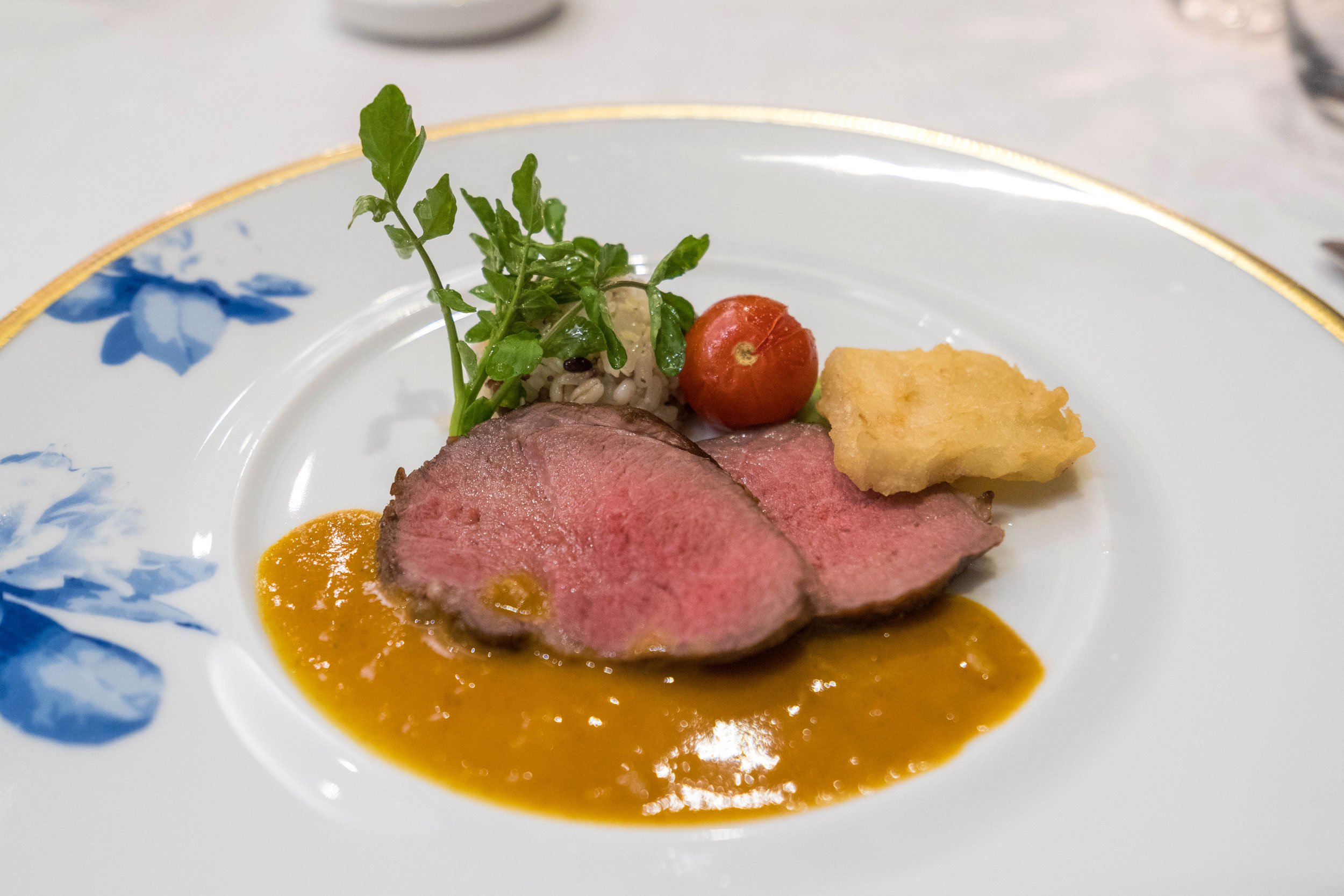
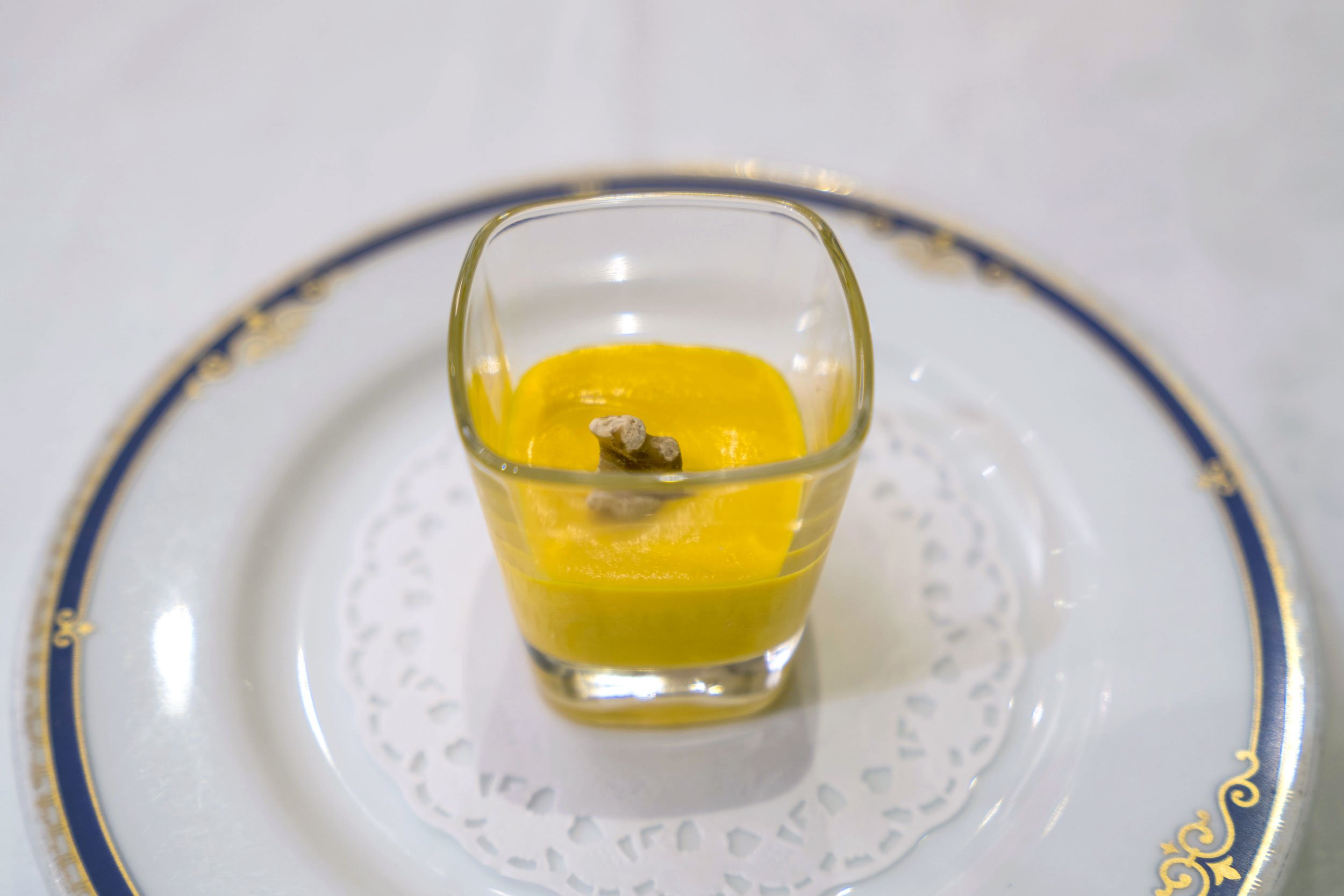
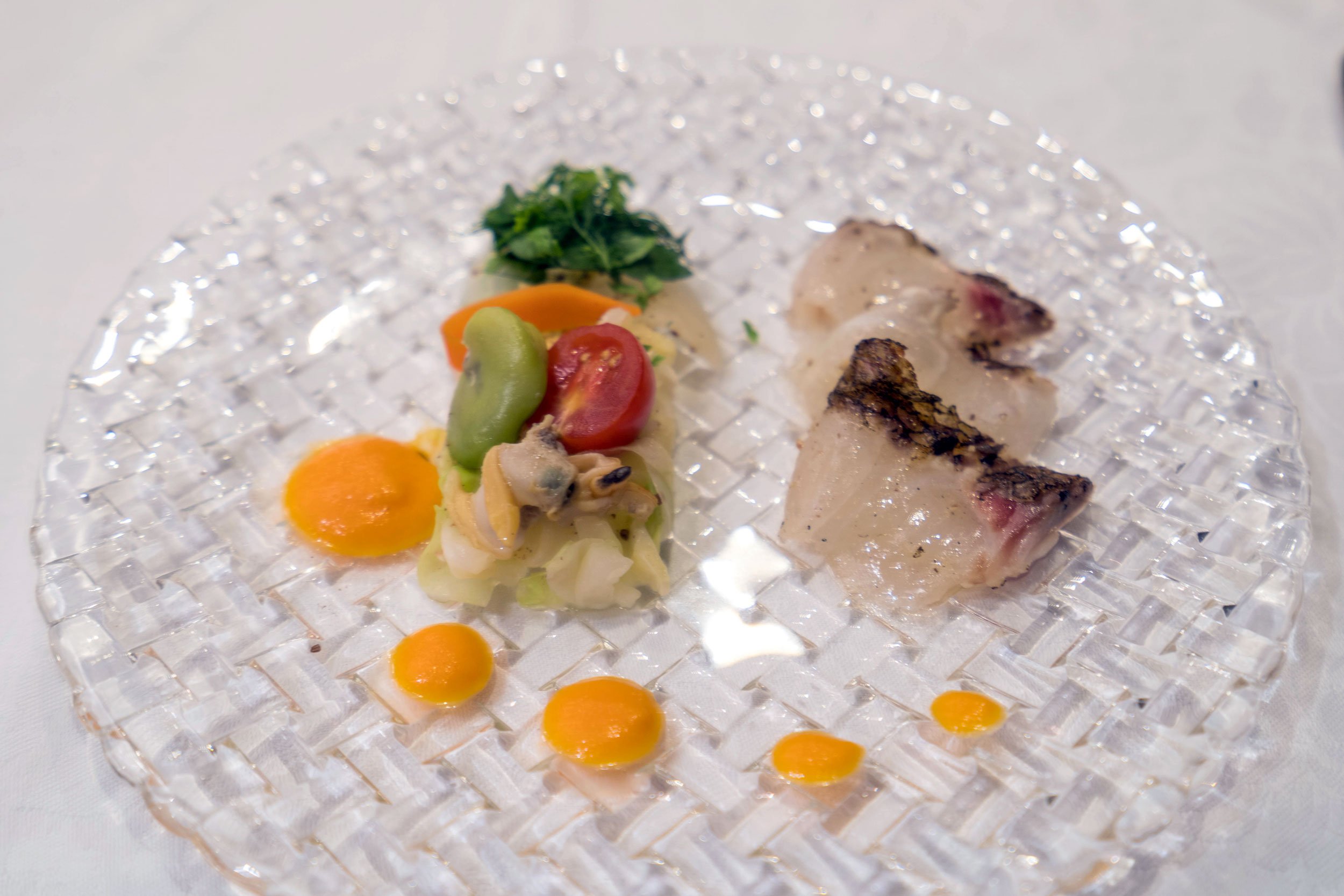
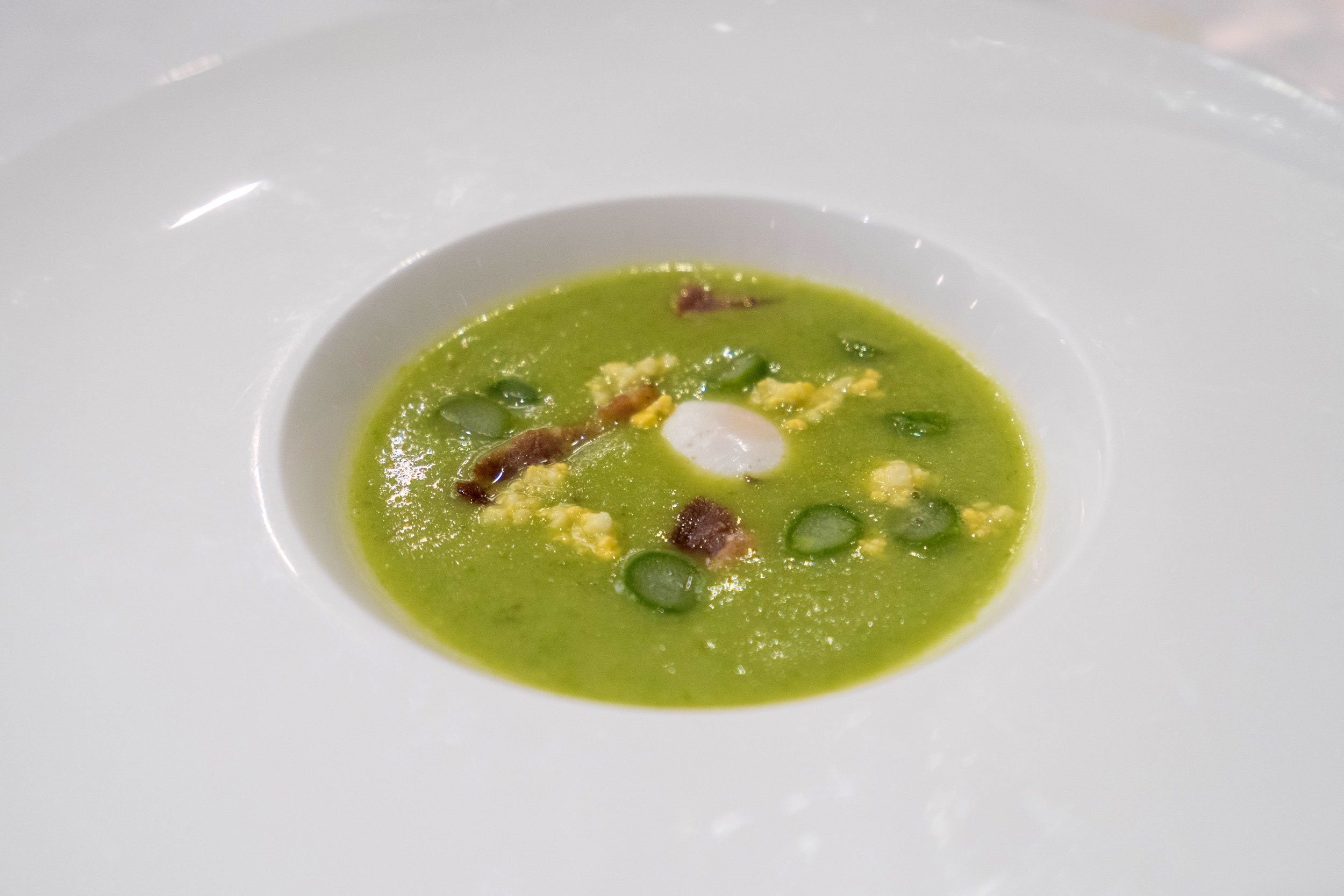
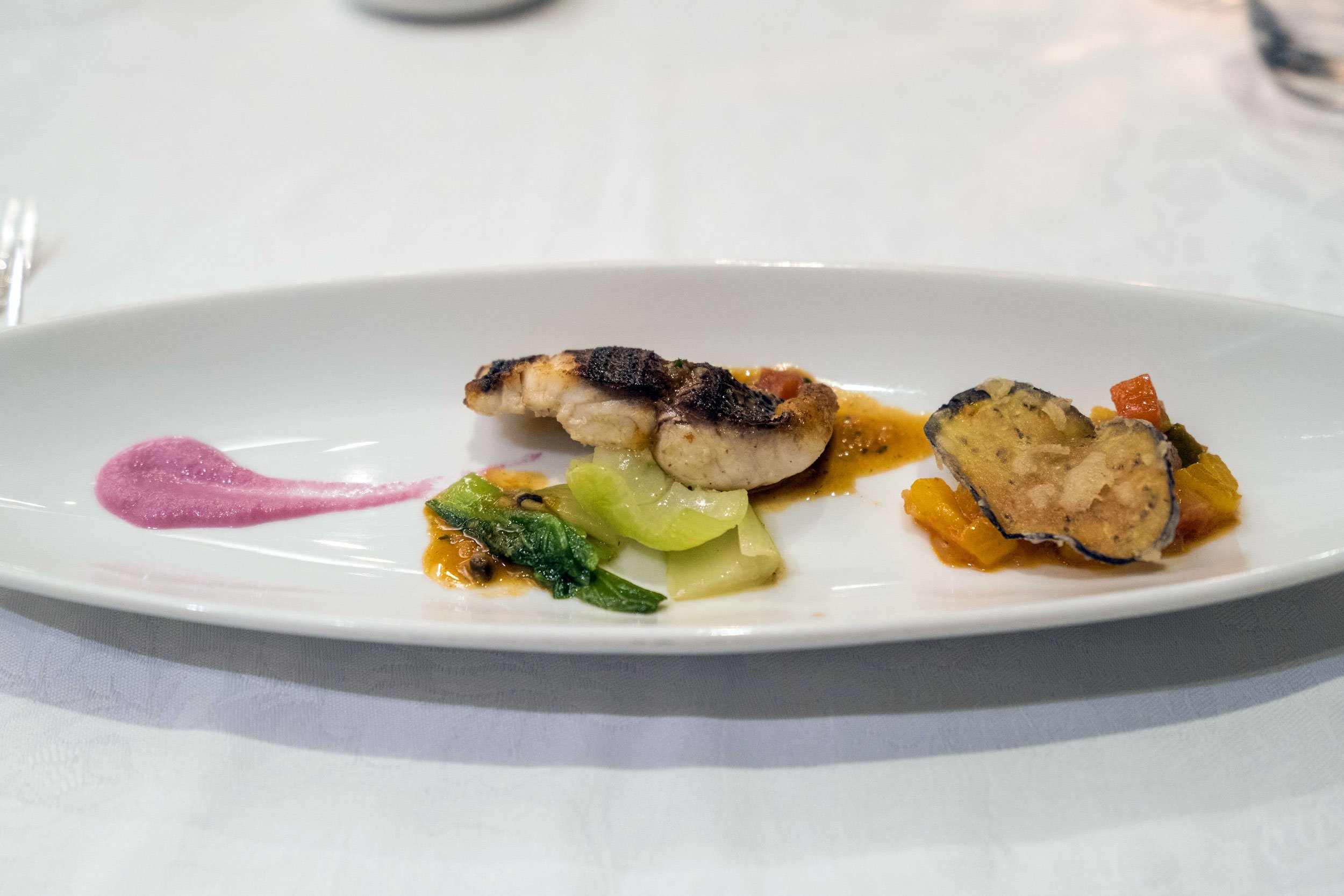
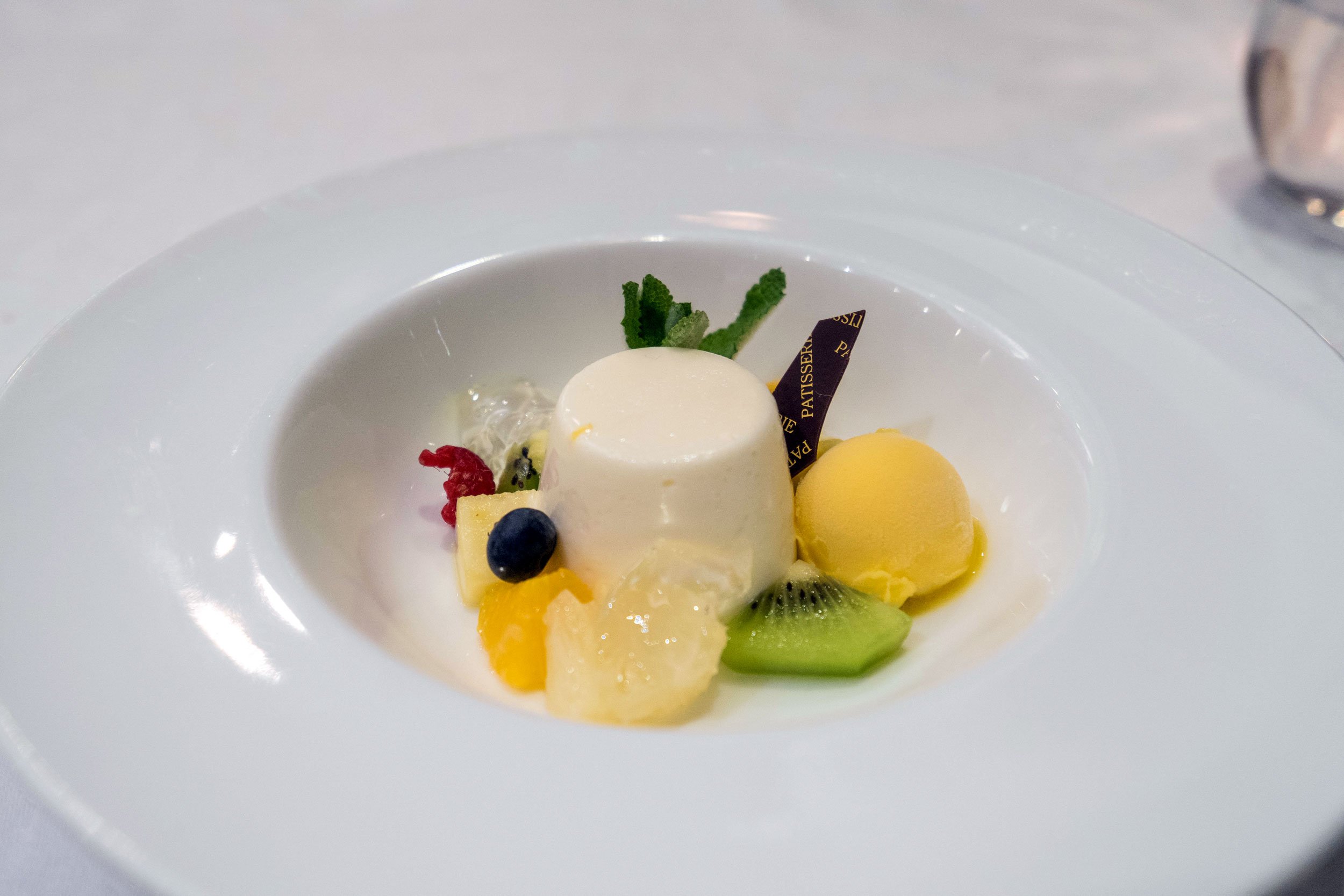
Dinner at Vert Bois was a 6-course French meal by Chef Kiyotoshi Yusa. It also had a pretty nice list of wines to choose from - both by the bottle or in 1-3 glass sets.
Breakfast was also at Vert Bois and featured eggs (sunnyside up or omelet), salad, miso bacon, an original juice, pineapple, coffee/tea and bread.
Checkout is at 12PM which gives you a lot of time to hit up the onsen one last time and relax in one of the massage chairs located in the dressing room.
Maybe the biggest benefit for people like me who enjoy taking photos is being close to Hakone Shrine. From the hotel, it’s easy really easy to walk on over to the picturesque torii gate before the massive crowd does (by 8:30AM). Nice hotel, fantastic location.
KEEP IN TOUCH:
MORE TRAVELS:
SHARE:
Hakone: Hoshino Resorts KAI Sengokuhara
A peaceful Hakone getaway at the Hoshino Resorts KAI Sengokuhara, a luxurious boutique ryokan with private onsen hot spings.
Private onsen tub at Hoshino Resorts KAI Sengokuhara in Hakone
A blissful getaway where the day is spent silently soaking in a private onsen hot spring looking out at the view.
Hoshino Resorts is one of the most well known and sought after luxury hot spring and resort ryokan chains in Japan. I stayed at their KAI Kinugawa resort while visiting Nikko, so I knew that their boutique KAI line provides for a very relaxing weekend.
We stayed for a night at their KAI Sengokuhara location, which opened in 2018, this time when we stayed for a weekend in Hakone.
HOW TO GET THERE
We took the Odakyu Romance Car to Hakone from Shinjuku station, a popular way to get to Hakone besides driving. From there, the fastest route is catch a bus to the Daigatake stop in Sengokuhara [MAP], which is right in front of Family Mart. Hoshino Resorts KAI Sengokuhara Is located right up the hill next to it.
As soon as you enter the Hoshino Resorts KAI Sengokuhara‘s premises, a staff member approaches you to greet you and guide you up to the lobby. A long escalator takes you up to the lobby area, where you check-in and schedule your meals and any activities.
This Hoshino Resorts KAI location is focused on art, so they have an optional activity that lets participating guests color a long cloth with Japanese scenes, something you do after dinner and then take home with you as a souvenir. The room keys also stay on the art theme, with keychains that have nicely displayed, dried, Japanese flowers.
We stayed in the Japanese-style Suite with Outdoor Bath RB2, a spacious room of just about 63㎡~70㎡ big with 2 double beds, a living room, detached desk space, balcony and private onsen bath outside. It was just under $400.
The bed area is attached to the living room and features gorgeous lighting accents
The Hot Spring
The water that flows through Japanese onsen hot springs vary and depend on where the water is coming from. Each has a slightly different combination of minerals carrying different benefits to the skin and body.
Hoshino Resorts KAI Sengokuhara‘s onsen water is from the Owakudani volcanic valley and is slightly milky white in color. They report that their water has “acid,” calcium, sulfur and chloride.
The “acid” helps with chronic dermatitis, sulfur with chronic dermatitis and circulation, and the chloride salts coat the body like a veil, warming and moisturizing the skin. It did leave my skin feeling pretty smooth indeed.
Dining
Like most ryokan stays, Japanese kaiseki meals are included. They’re served in the dining hall, one that is beautifully designed with Japanese aesthetics and allowing each party to have a private room.
Dinner had several courses, each presented very nicely and was equally delicious.
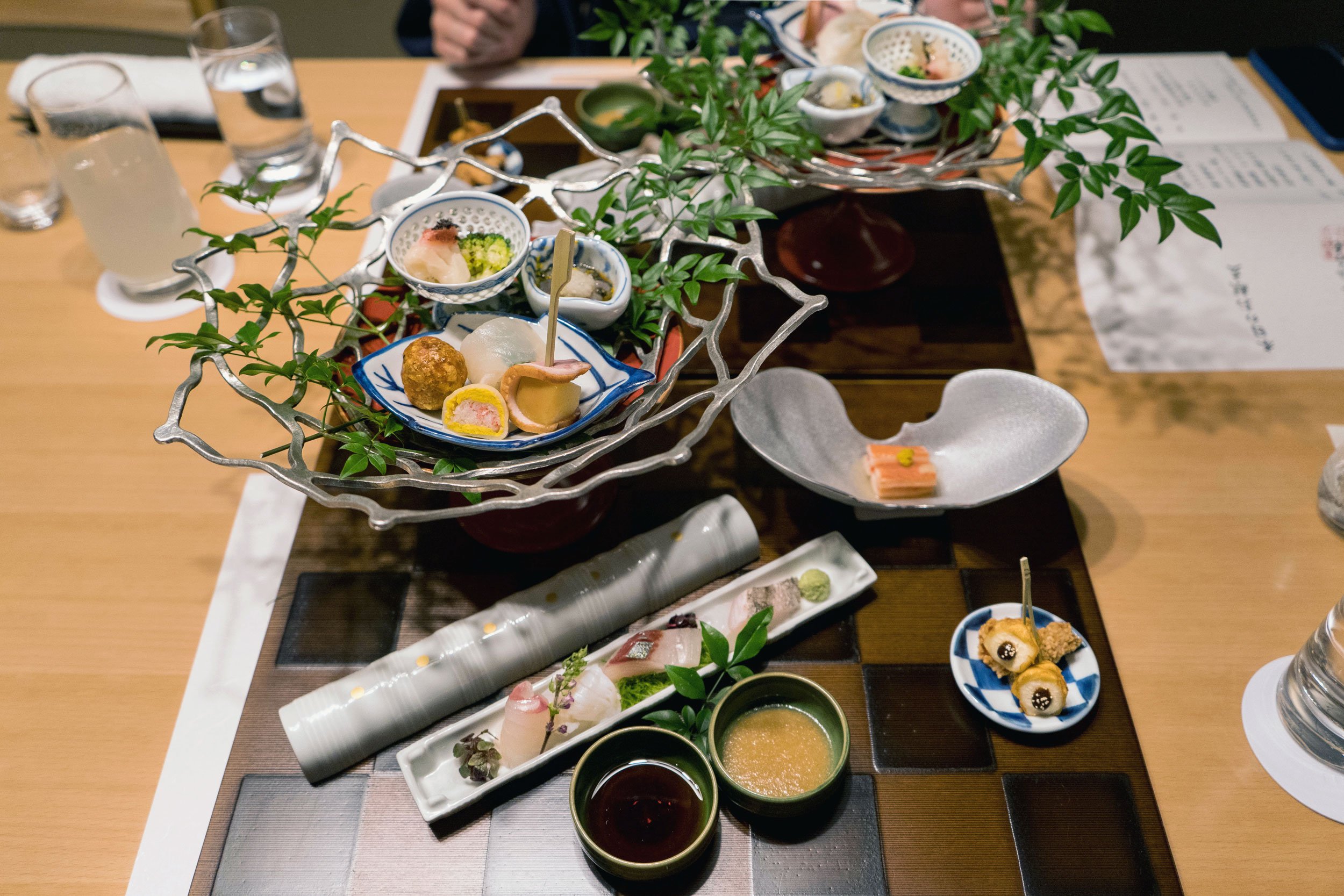
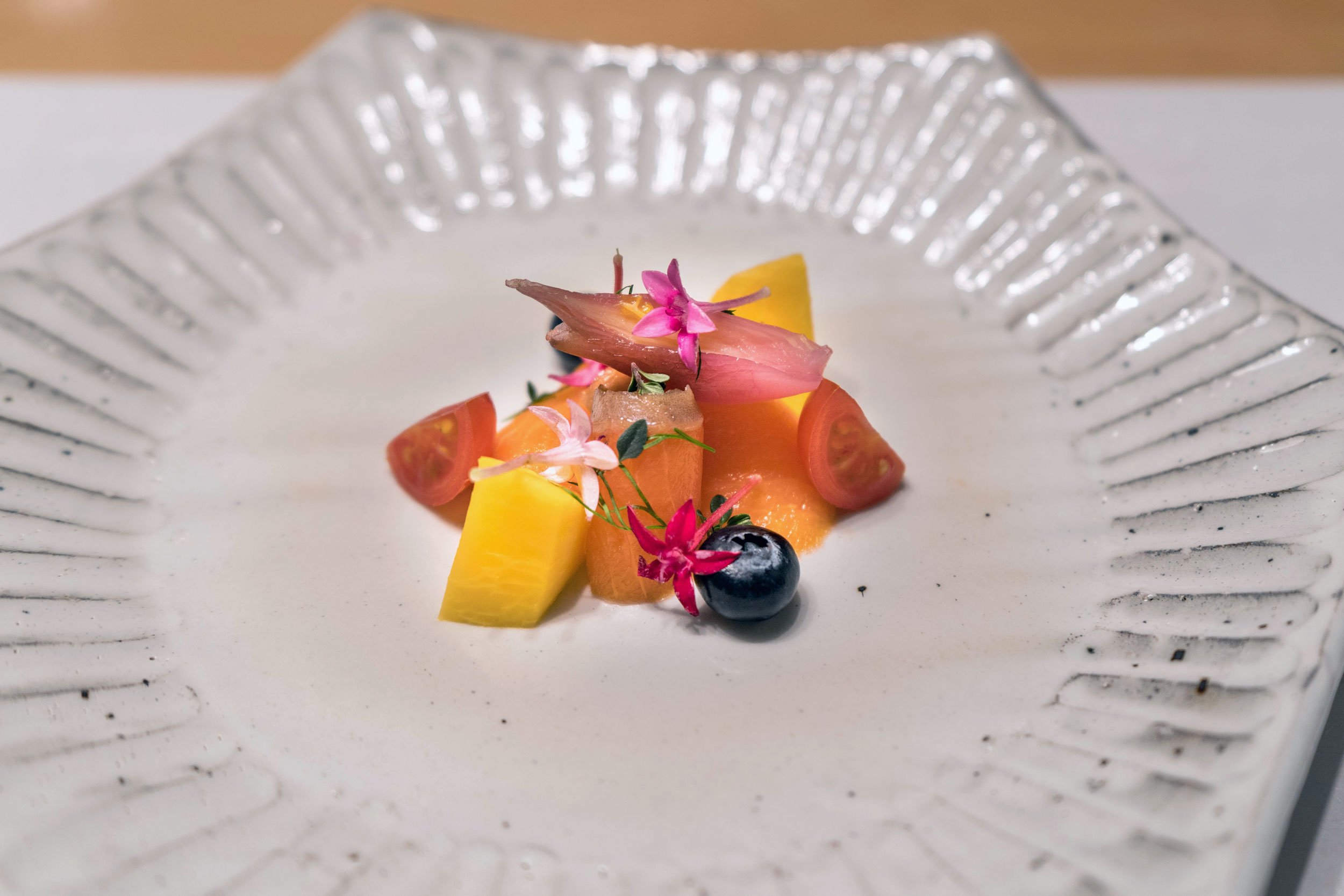
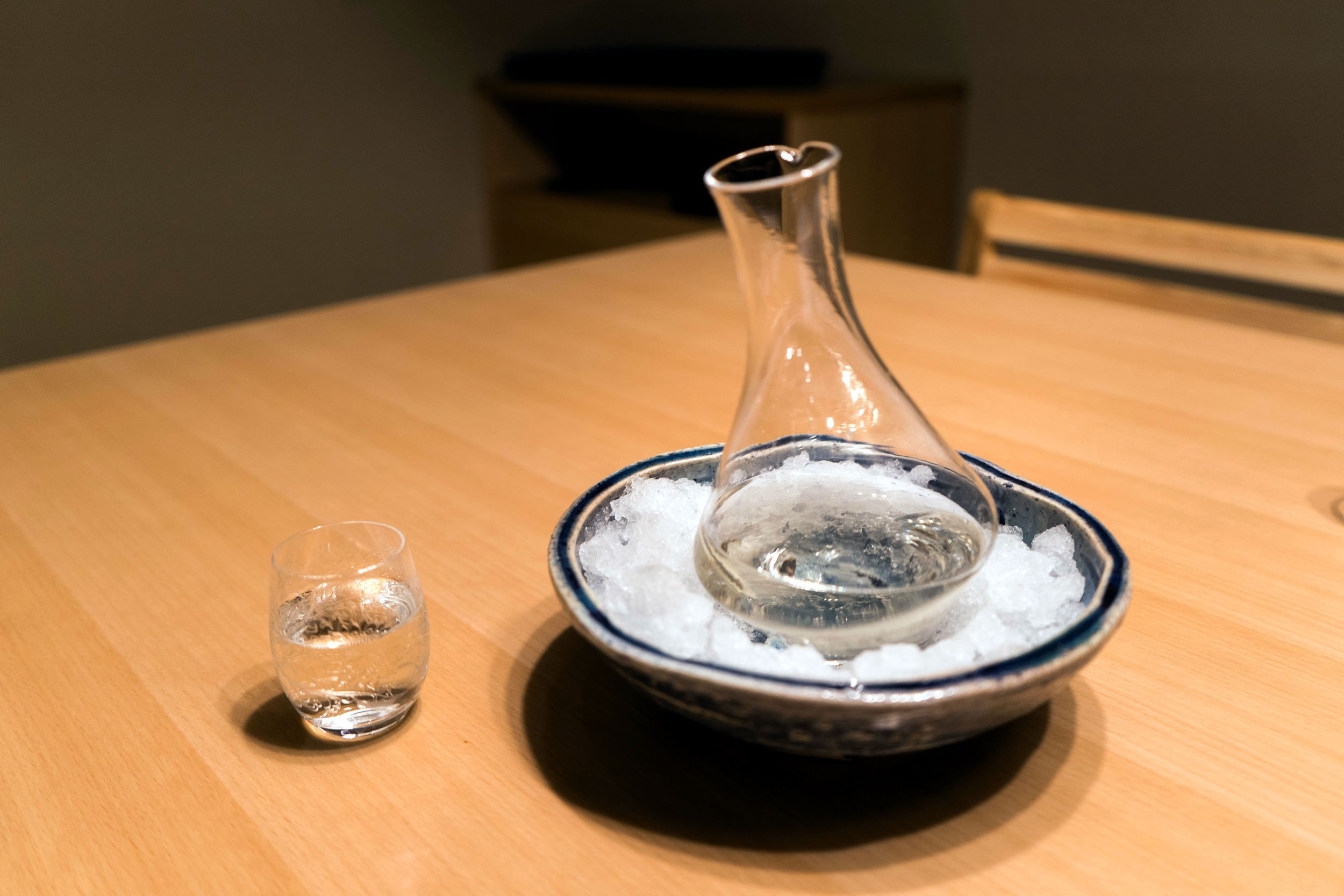
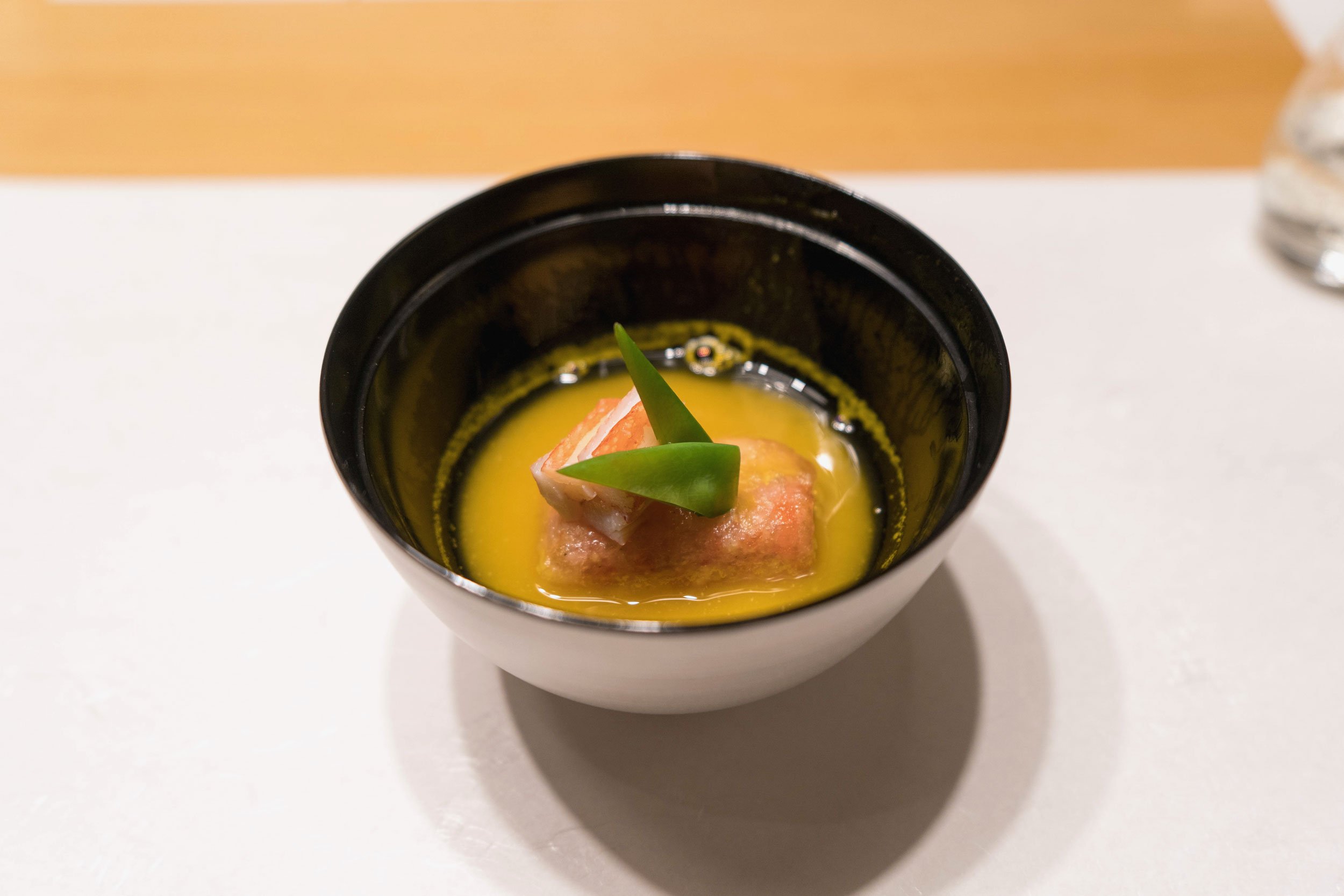
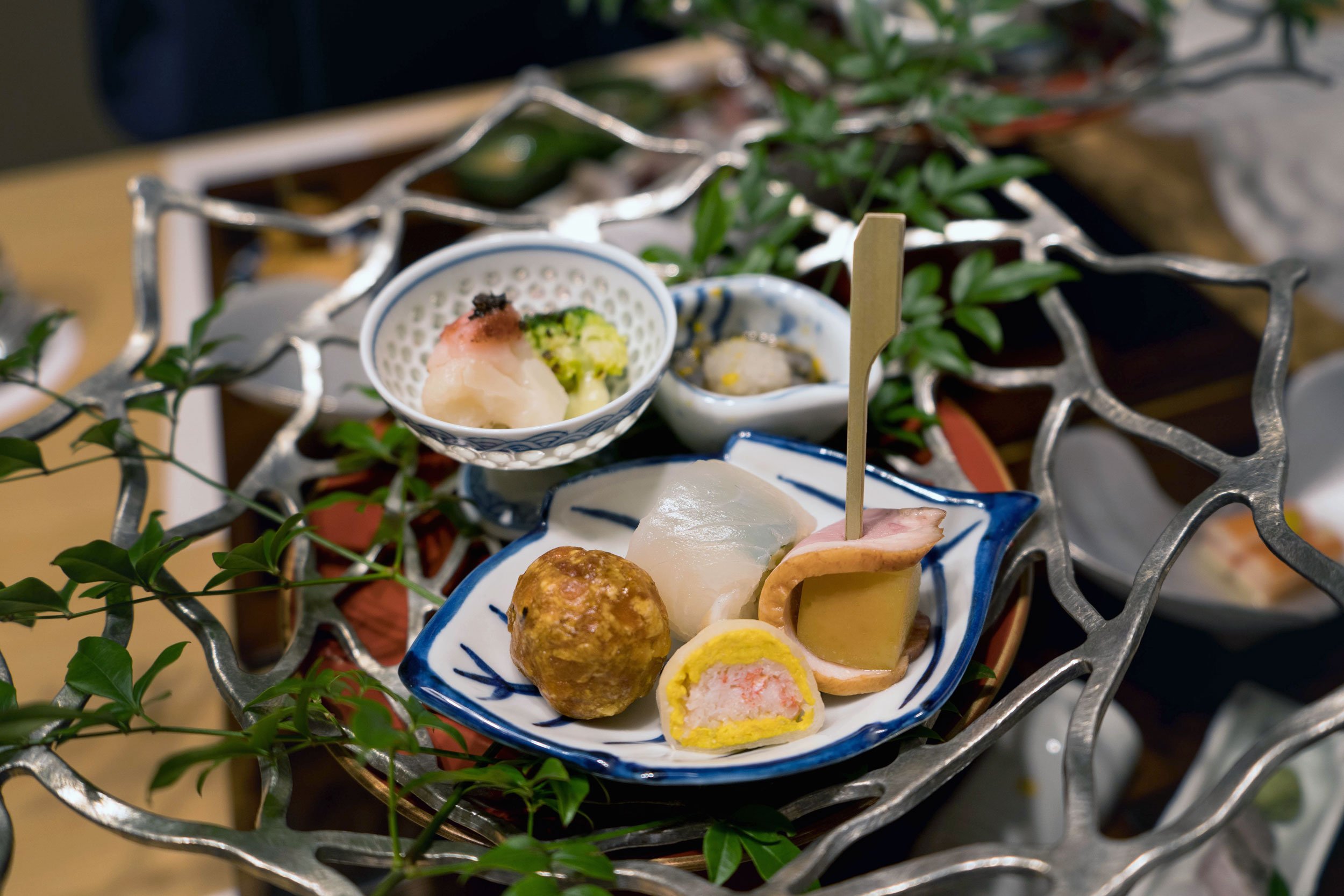
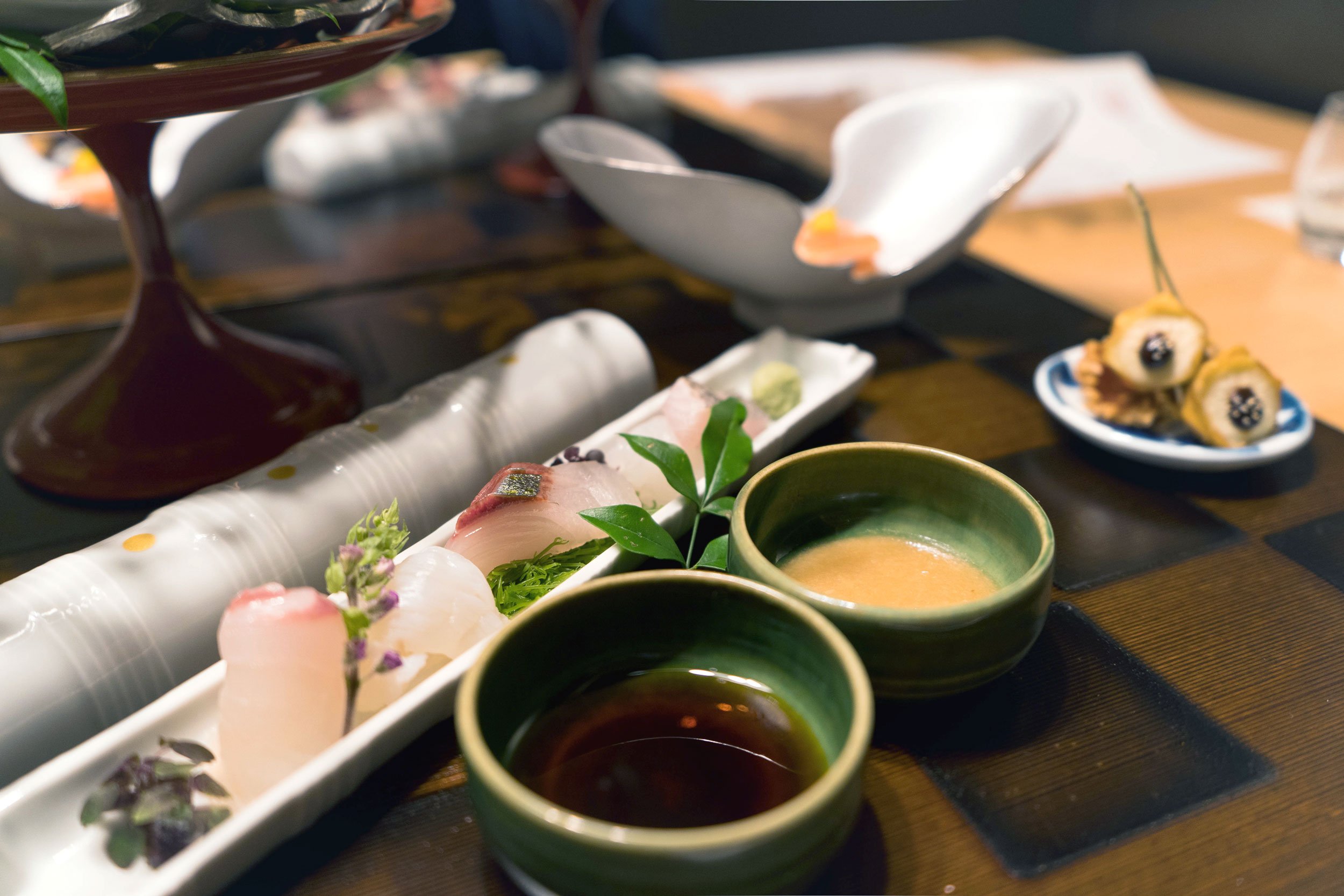
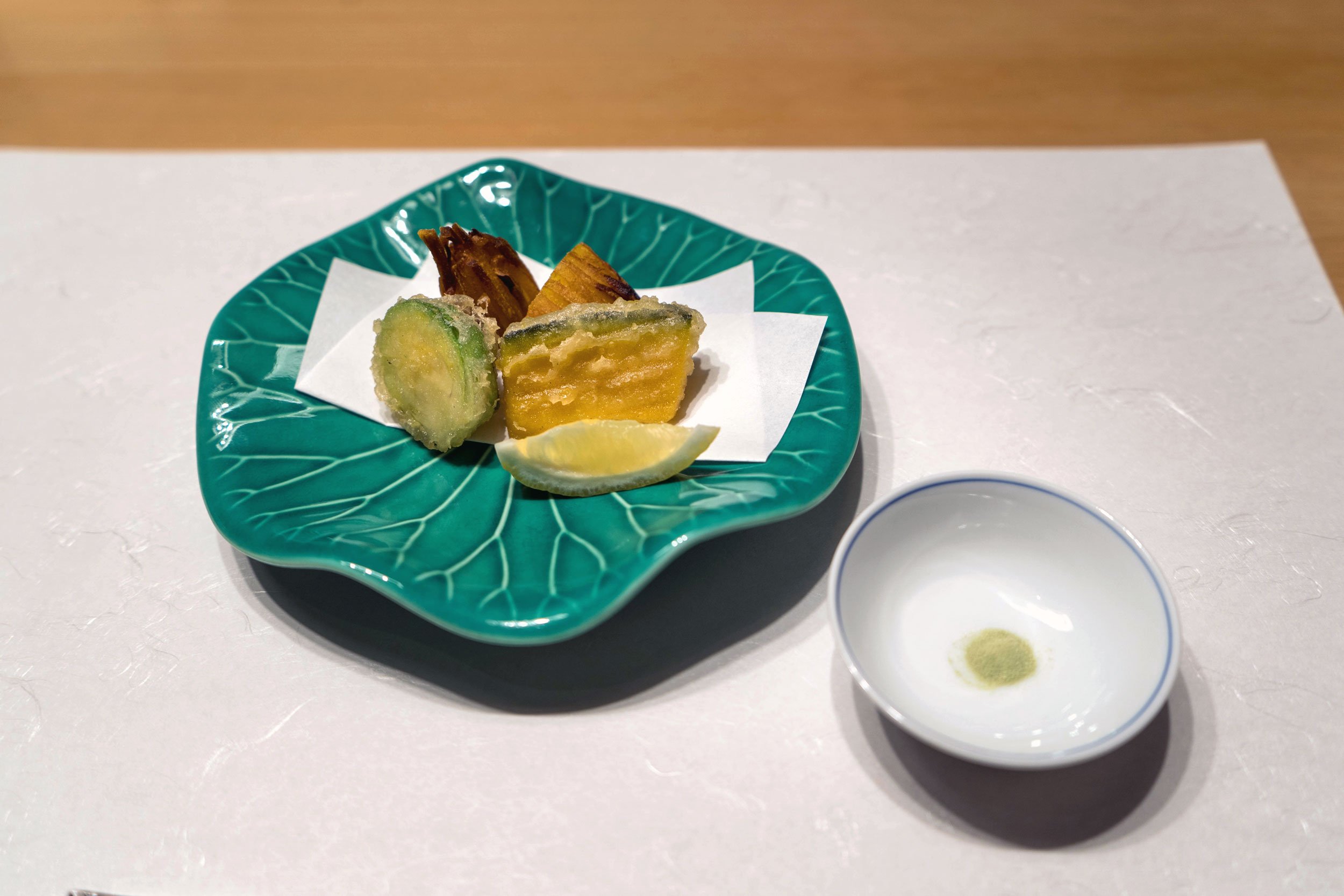
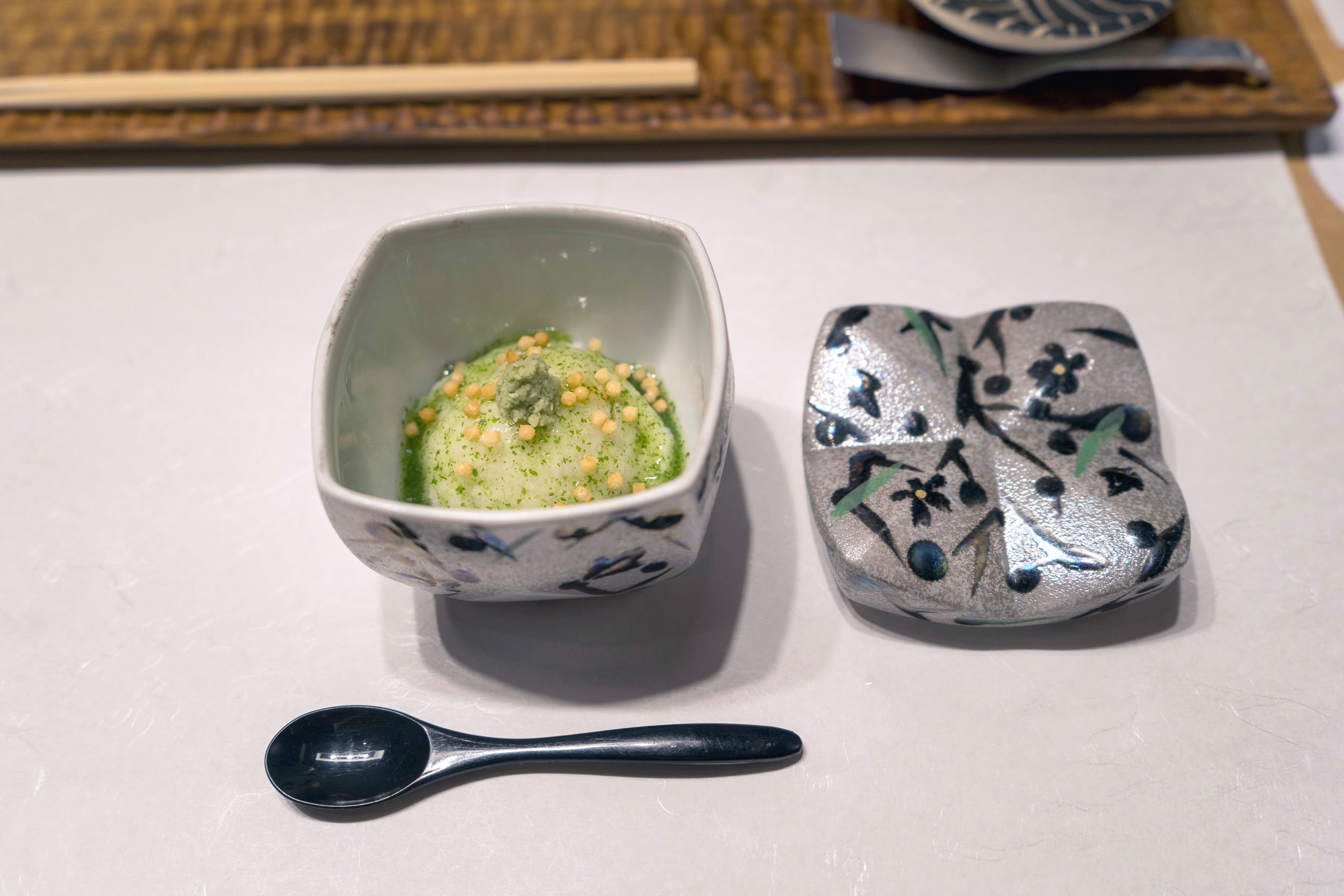
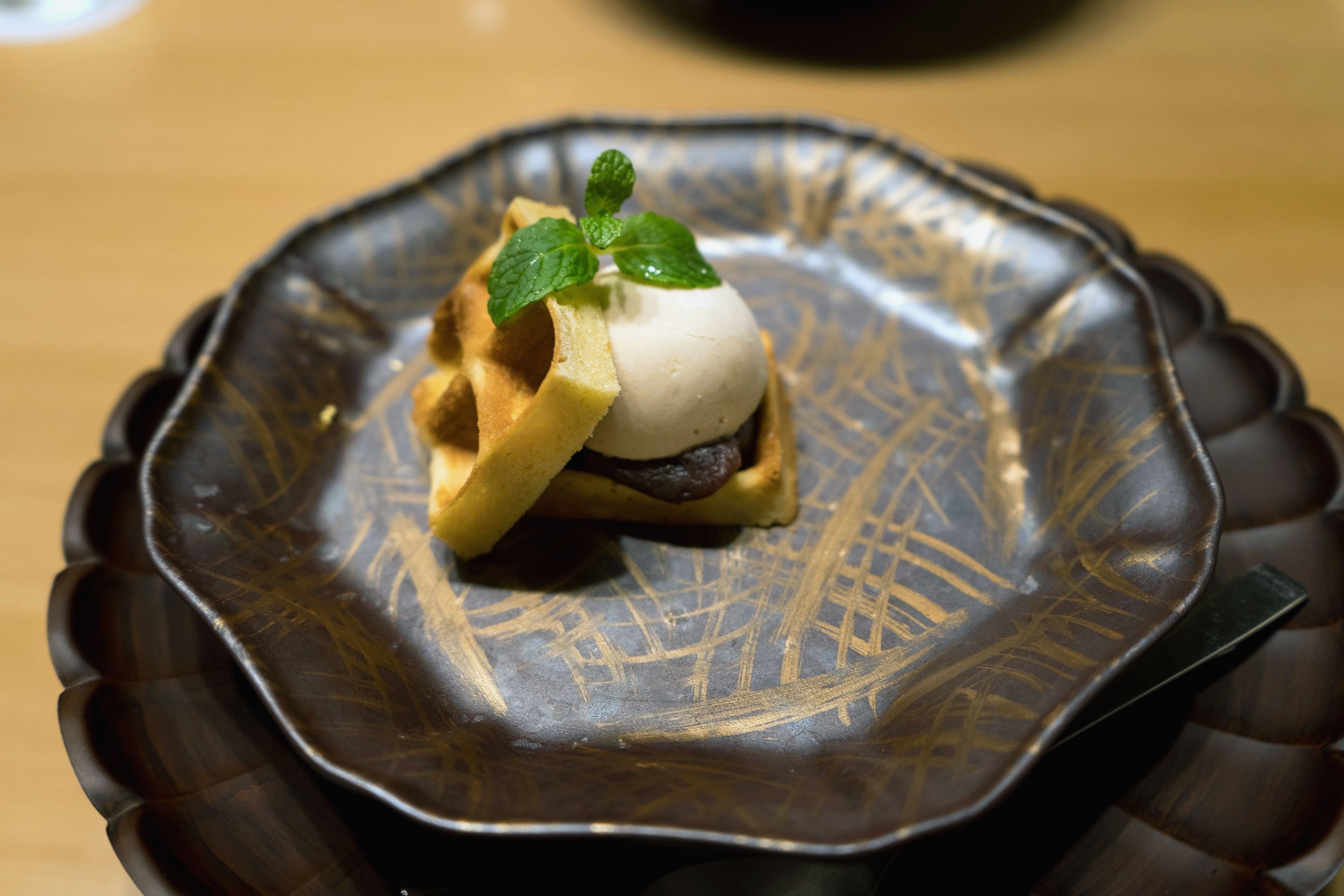
Breakfast was just as impressive and a great meal to start off the next day.
The Hoshino Resorts KAI Sengokuhara lives up to its high reviews as an elegant onsen retreat. It’s perfectly set up so that you see as few people as possible and the rooms themselves were just about silent. I definitely recommend this resort for anyone looking for a luxurious Japanese getaway.
KEEP IN TOUCH:
MORE TRAVELS:
SHARE:
Kauai, Hawaii: The West Side
Visiting the western part of Kauai, Hawaii, the place of my childhood summers with spots like Waimea Canyon, Polihale Beach, Kokeʻe and Waimea.
Kauai is the 4th largest island in Hawaii, nicknamed “The Garden Isle”
Popular destinations on the west side include Hanapepe, Waimea, Polihale, Waimea Canyon and Kokeʻe
Kauai is like my second Hawaii home, and it’s my favorite island besides my hometown on Oahu.
In my opinion, it’s the most beautiful island in Hawaii, if they could ever be ranked, and has what just about any visitor to Hawaii could want aside from an active volcano. People often ask me where in Hawaii they should visit. Well, there’s my answer.
My family’s roots are based on the island’s west side in Waimea, so many of my childhood summers were spent there. We’d fly there along with other Oahu relatives, stay in the mountain cabins of Kokeʻe, have bonfires at Kekaha beach and check out the local Japanese bon dance festivals. There were a lot of fond memories made on the island.
I finally went back for a visit in 2017, after more than a decade. My life had changed enormously during that time - I had lived in San Francisco, then moved to Japan, living in Yukuhashi, Fukuoka and now Tokyo. I wasn’t sure how I’d react being on Kauai again, but it was really nice returning to a place that played a considerable part of my childhood.
Kauai is the fourth largest island in the state and has a big range in landscape.
There are lush greens and rivers on the northeast side in Hanalei, and dry, red dirt and vast beaches out west in Waimea and Kekaha. Then heading up the mountain, you’ll go through Hawaii’s “mini Grand Canyon” or Waimea Canyon before hitting the foggy green peak of Mt Waiʻaleʻale that’s known as one of the rainiest places on Earth.
While I visited most places growing up, there wasn’t enough time to do everything I wanted to this time around - Missed Hanapepe, didn’t fully walk around Waimea, and so on. These are a few places that I prioritized though, places that I think are worth checking out on the west side of Kauai.
WAIMEA
Waimea Landing pier in Waimea
Waimea is basically the last town in west Kauai and the fork point to my two west Kauai recommendations below. It has a couple of supermarkets like Ishihara (bottom) and Big Save, places to eat as well as shops and tourist attractions that I used to visit as a kid like the Menhune Ditch, the Swinging Bridge and Russian Fort. For a glimpse of local life though, the Waimea Landing is a pretty good place to get that.
The now downsized version of what was a former port, the pier often has locals hanging out fishing. The waters aren’t the picturesque blue that people might imagine in Hawaii because of the nearby Waimea River mouth bringing down dirt from Waimea Canyon, but it’s a nice place to stop by while roaming the town as it’s only a block away from the main street. There are some amazing sunsets here, I’ll need to go back and take a proper photo of one.
Local kids catch a baby Hammerhead shark at the Waimea Landing
Beach area between Waimea Landing and the Waimea River mouth
KOKEʻE & WAIMEA CANYON
Waimea Canyon
Hawaii’s mini Grand Canyon, the Waimea Canyon is a view many might not expect to see in Hawaii but in my opinion, is a must. Nowhere else in Hawaii has a similar view and Iran one of my favorites.
From Waimea town, there’s a road that goes up to Kokeʻe which is towards the summit of Mt Waiʻaleʻale, the main volcanic mountain on Kauai. The drive up goes through the ridges of the canyon and there are scenic lookouts to stop at.
Towards the top of the Kokeʻe area, there’s Kokeʻe State Park as well as another amazing lookout of the Kalalau mountain range. Contrasting the red dirt scenes of Waimea town and the Waimea Canyon, some of the most beautiful greens and blues in all of Hawaii are here. Definitely go up to Kokeʻe early though for the best view as the clouds and fog roll in.
Waimea Canyon Lookout | MAP
Kalalau Lookout | MAP
The view from the Kalalau lookout in the Kokeʻe area
POLIHALE BEACH
One of the best beaches in Hawaii, I feel. Polihale beach is a long, wide, white-sanded beach area at the most western point of Kauai with a clear view of neighboring Niihau island.
It’s not the easiest to get to and it’s best to go in a truck or SUV because you have to drive off-road a while after the pavement ends. When you hit the fork in the dirt road at the Monkeypod Tree [MAP], go right and when you undoubtably question if you’re going the right way as I did the last time I went, just keep going. There will be a small parking area with a few tables that eventually shows up.
The waters here are beautiful, sunsets amazing, and it’s not crowded at all. It’s a more of a local spot and almost like having a semi-private beach. Definitely bring some sun protection though as the sun is piercing on this side of the island.
Waimea was always the main area that I would spend my Kauai summers growing up, and it was the hub on this last trip to Kokeʻe, Waimea Canyon and Polihale Beach as well. It’s a small town but has a lot of character. It also has some great places to stop at for some food or snacks. Here are a couple.
ISHIHARA MARKET
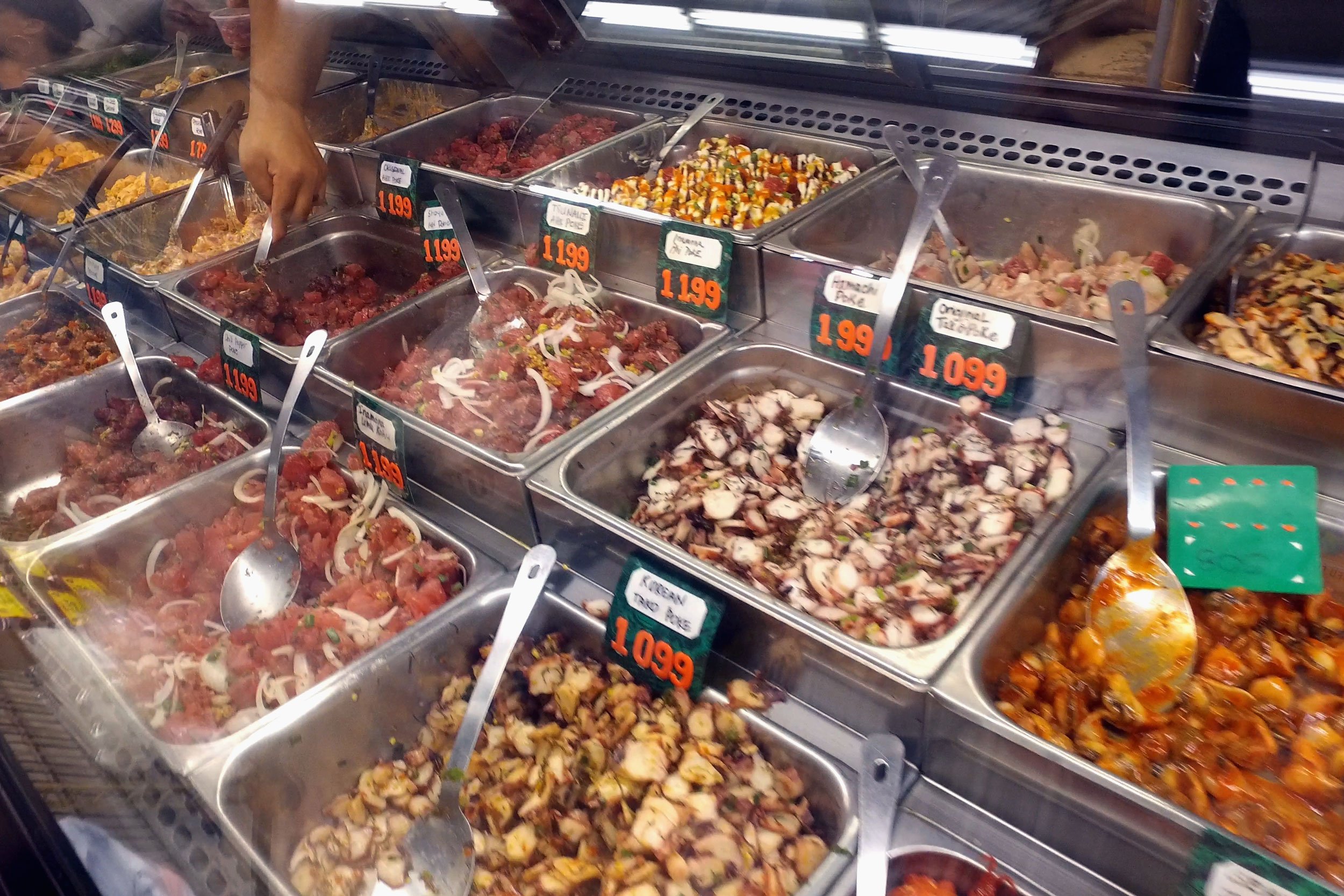
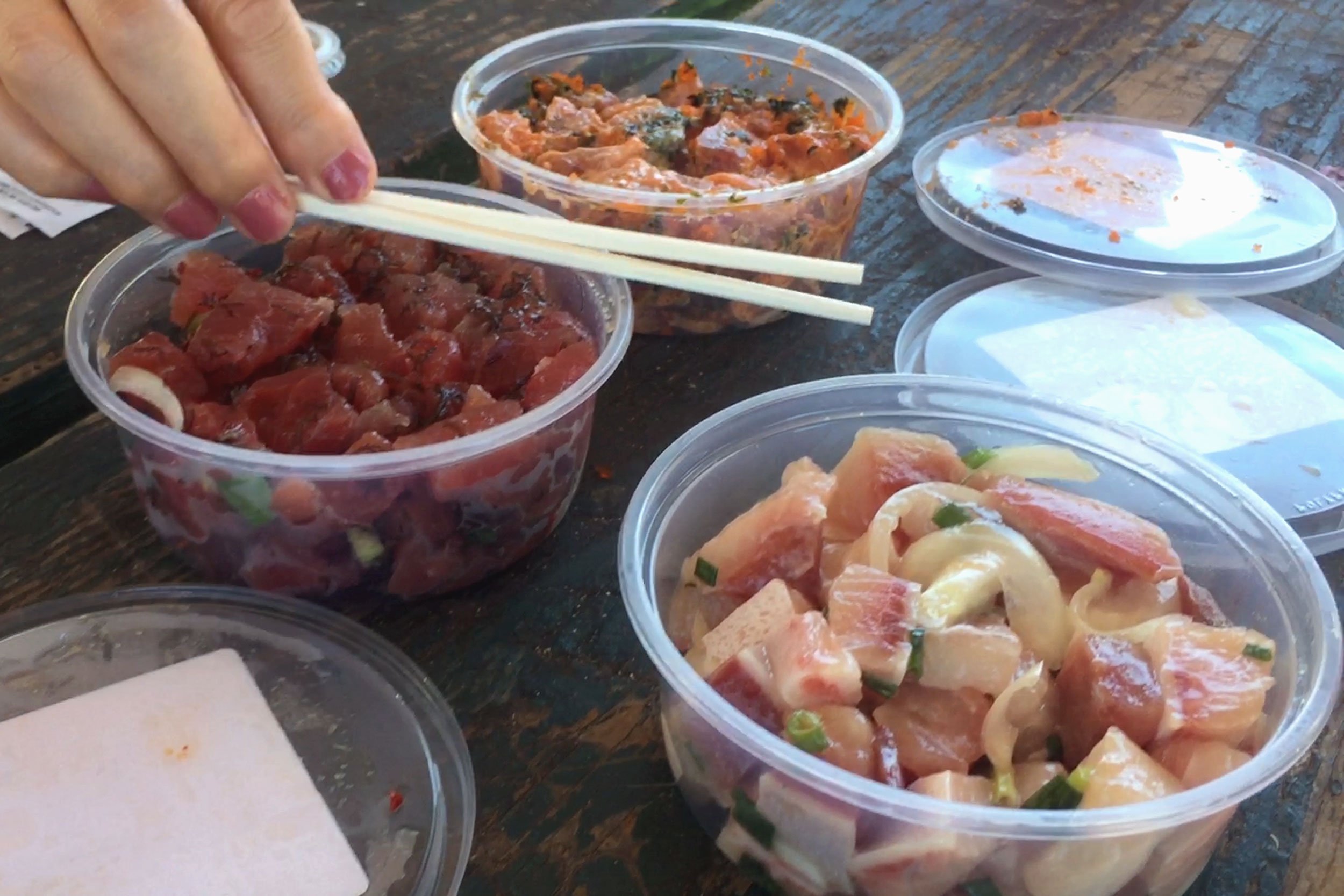

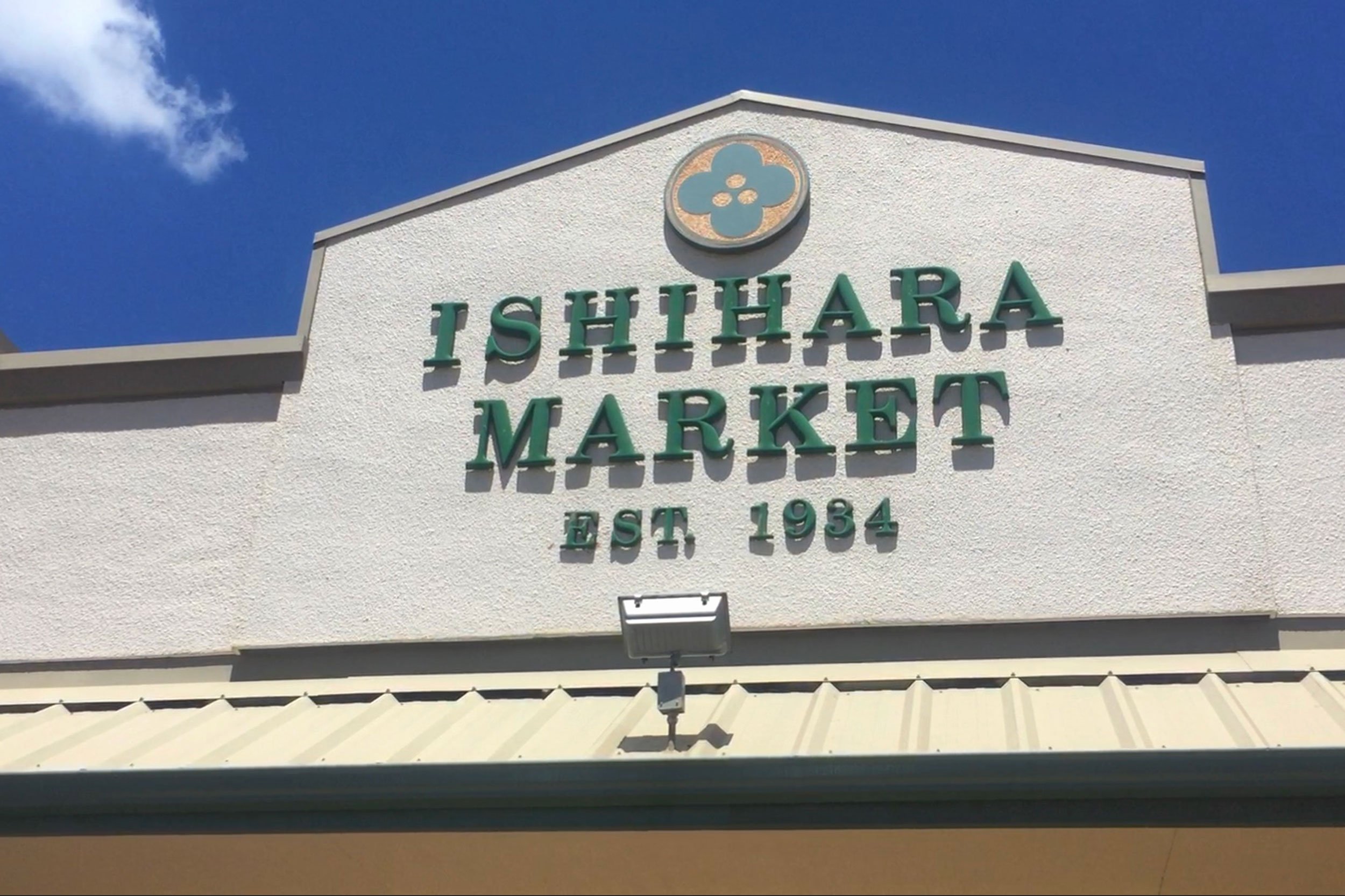
Some of the best poke in Hawaii. Ishihara Market was a local, family-owned market before being taken over by the same owner that runs Foodland, one of Hawaii’s major supermarket chains.
Ishihara has remained pretty much the same according to reports, which is a good thing because they have a small town vibe and great local, Hawaii-style takeout foods. Their poke is the best and they have a wide selection in the back of their store. My personal favorite is their hamachi poke - uncommon and so good.
* This market has unfortunately closed.
JOJO’S SHAVE ICE
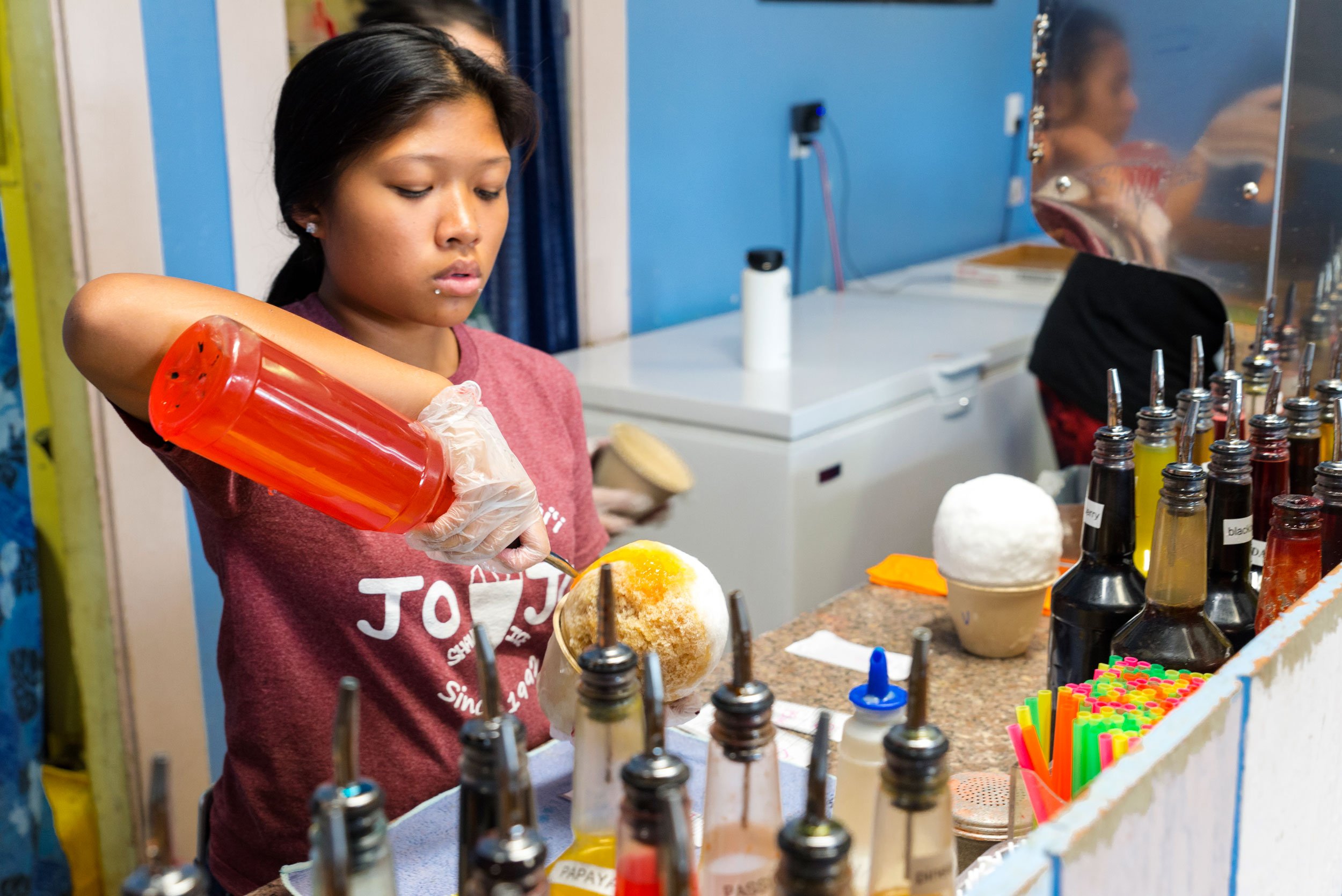
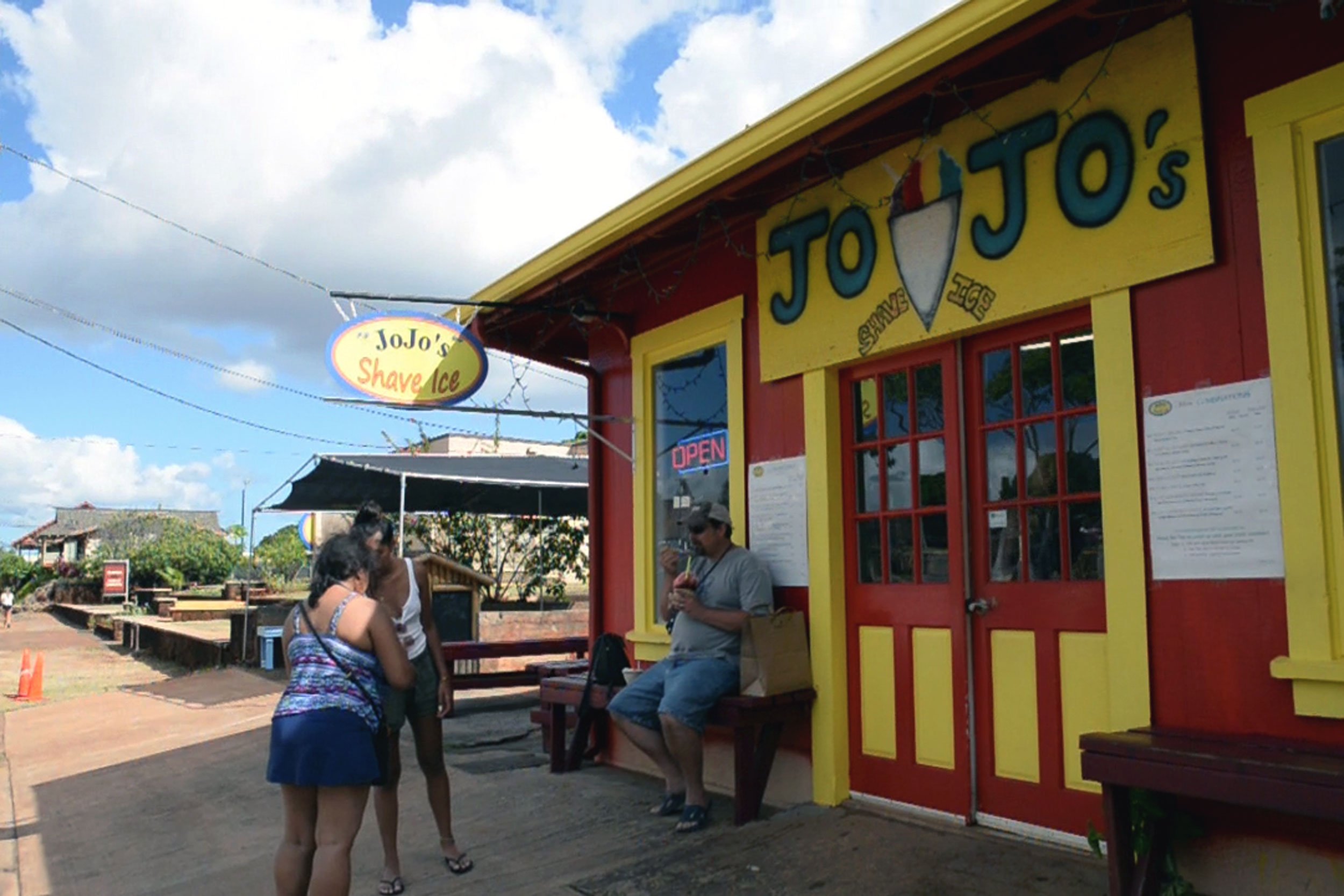
JoJo’s became a staple shave ice spot since when I’d visit Waimea growing up and they still should be.
One thing about the westside of Kauai is that it is hot and dry, so shave ice really hits the spot. Their serving sizes are generous and they have 34 different flavors to choose from as well as set combos. I’m sure any of them are good but mix in some local Hawaii flavors for sure.
KEEP IN TOUCH:
other travels:
share:
Best Poke Spots in Honolulu
Poke at its origin - these are some Honolulu poke spots that you can’t go wrong with.
Poke became one of the most well known foods coming out of Hawaii.
While most of the poke seen around the world isn’t actually authentic poke (other locals would surely agree with me), it’s cool to see something local become such an international phenomenon.
If you’re like me and ideally want to try dishes where they originated from, chances are that poke will be on your “to eat” list. If it isn’t, it absolutely should be.
This is by no means a definitive list, and there are many other places that make fantastic poke that maybe I’ve yet to try or need to try again, but here are some of my favorites that you can’t go wrong with.
Off the Hook Poke Market
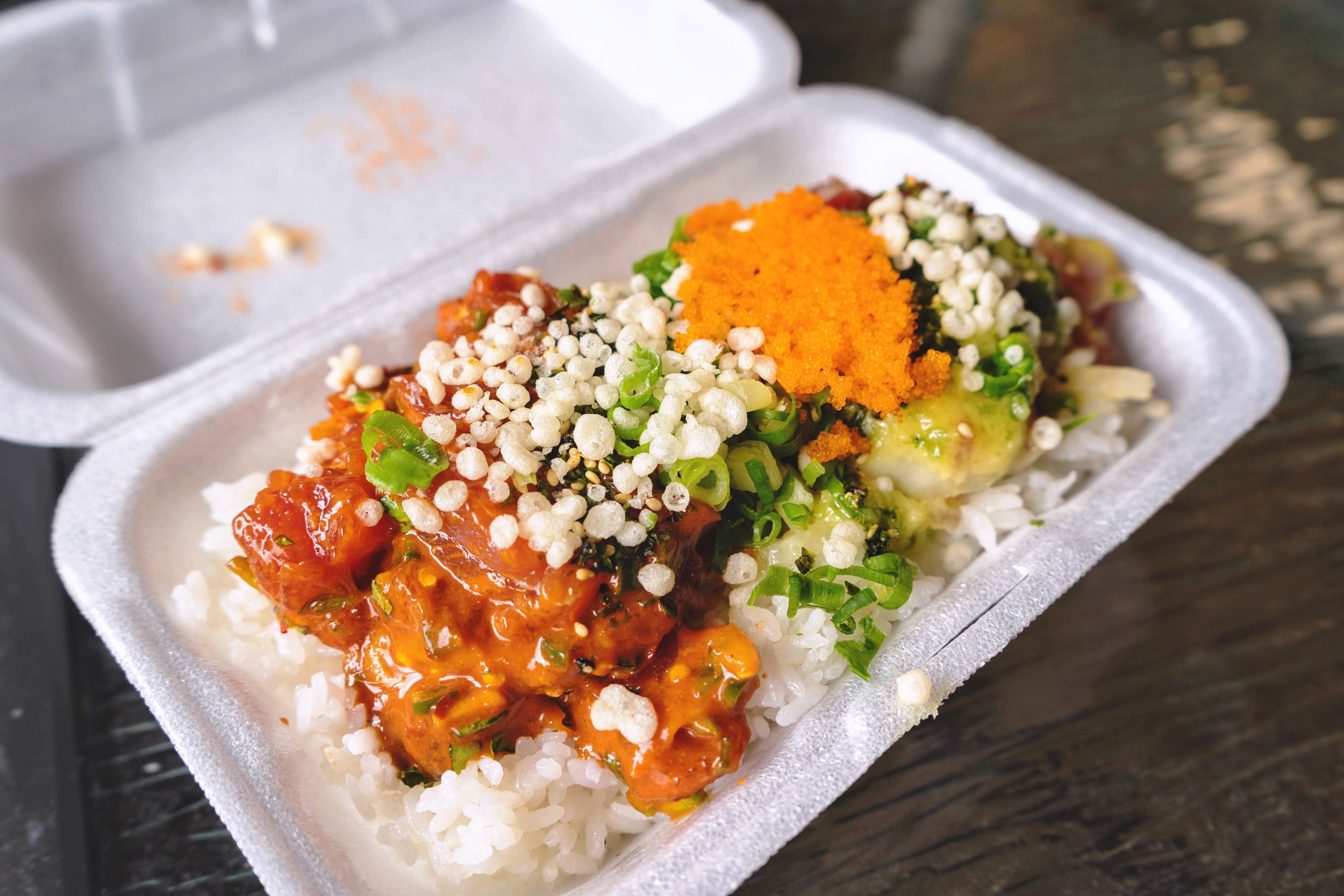
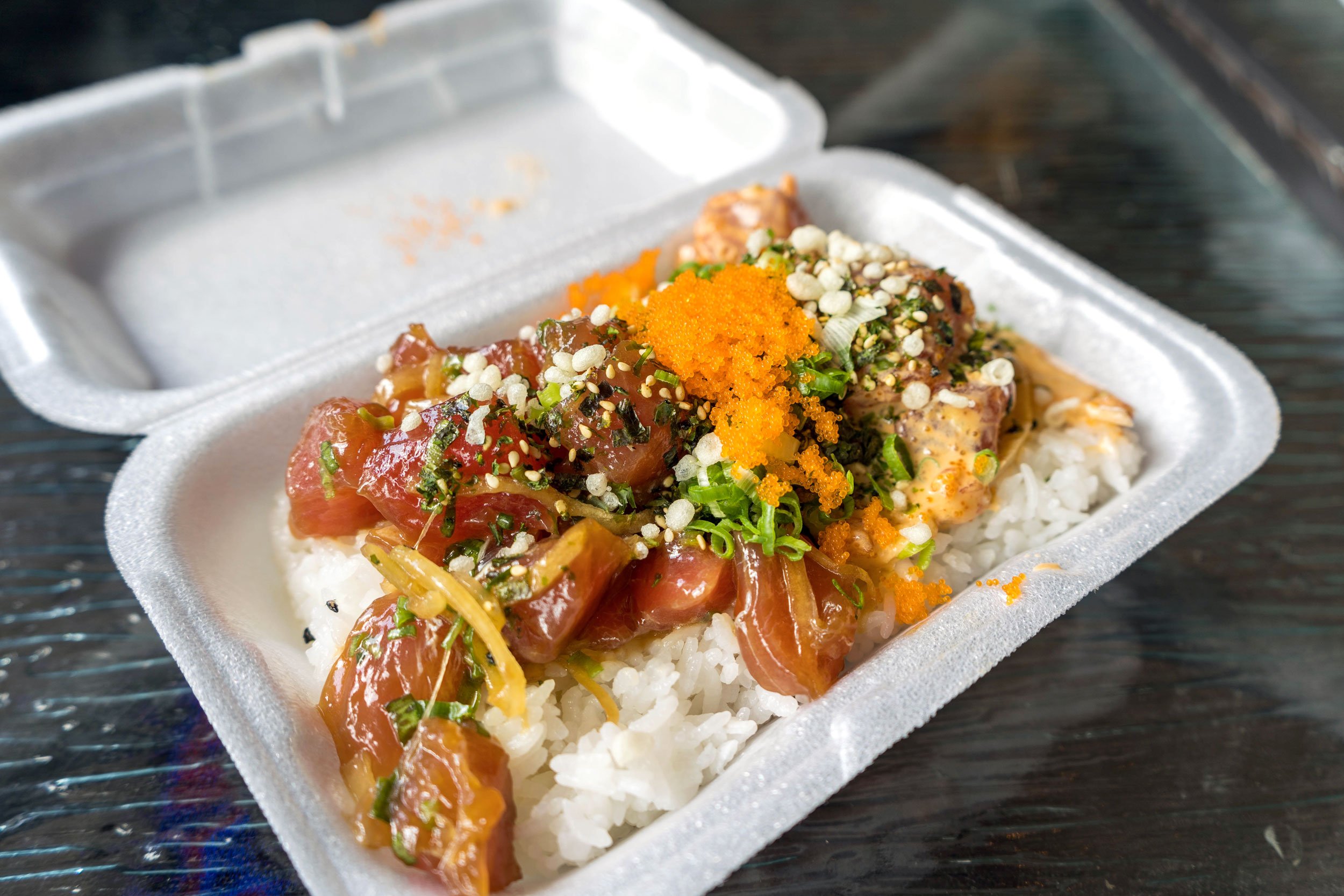
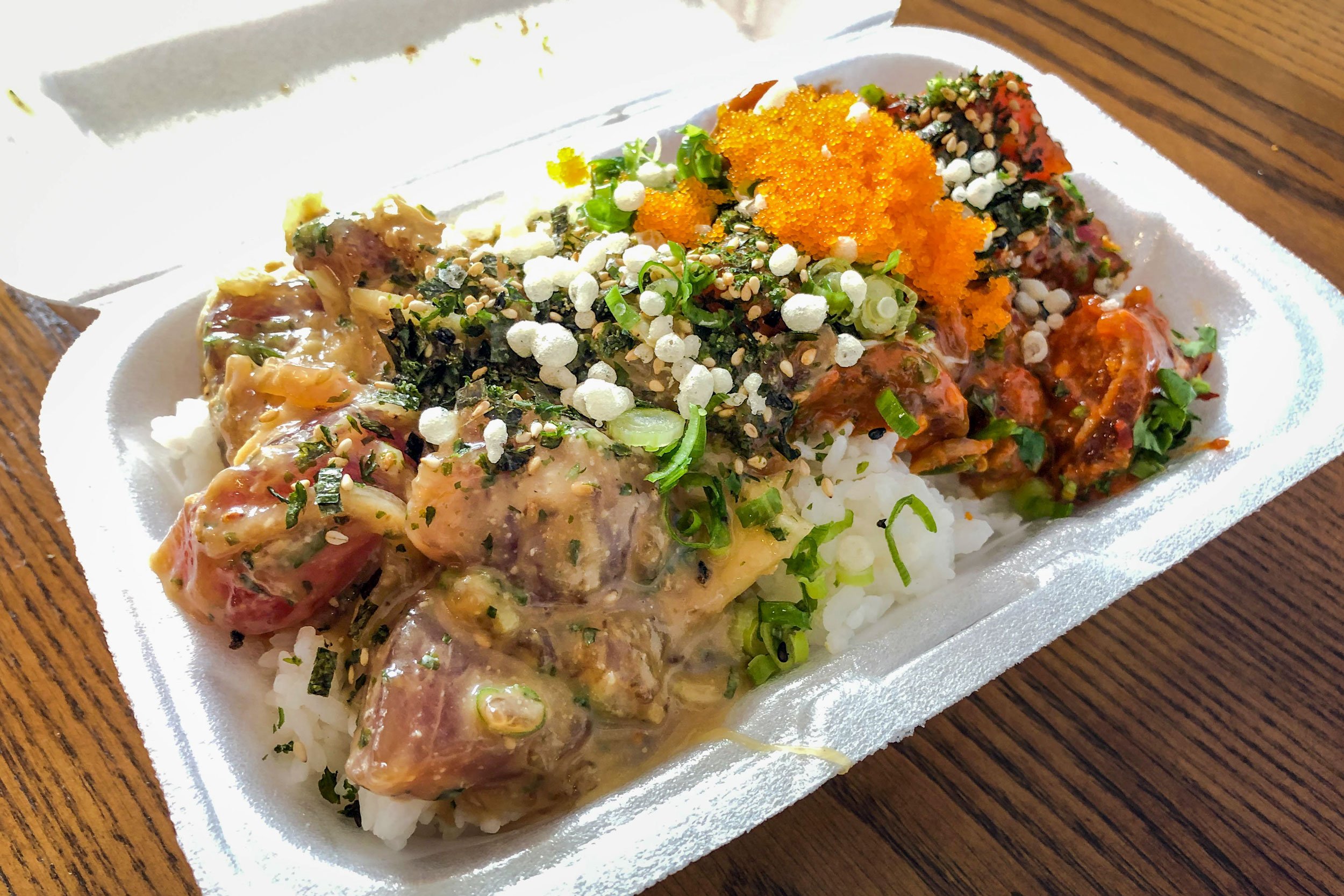
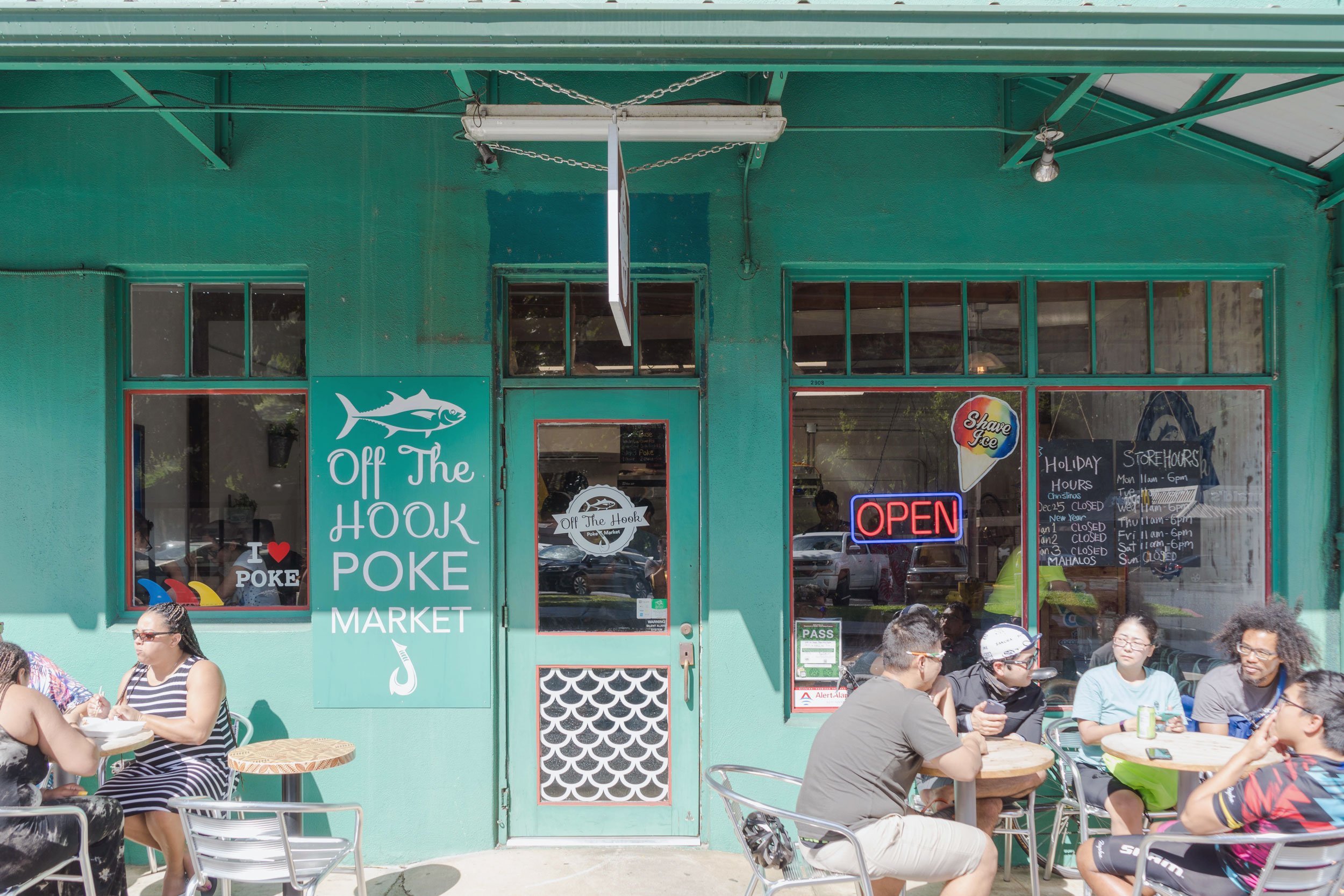
This is one of the more recent poke places, opening in late 2018, but it’s one of, if not the best I’ve had.
They have some really good poke flavors, so I recommend getting a 2-choice bowl. My favorites are their ginger ahi, Kilauea Fire and spicy tuna, but you can’t go wrong with any of their options. Get all of the free toppings as well.
Service is great, really friendly and personable. This is a great addition to the Manoa area.
Ono Seafood
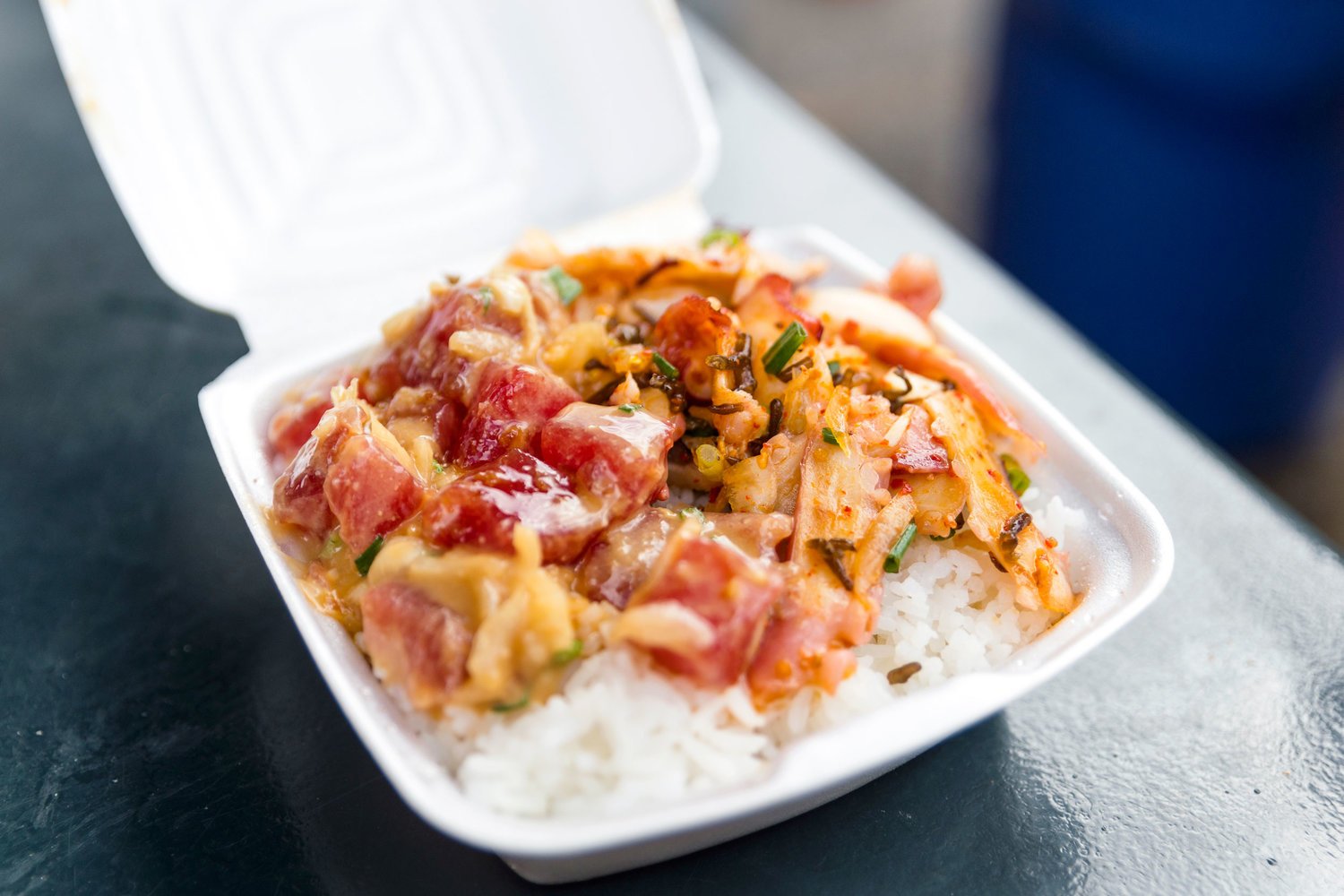
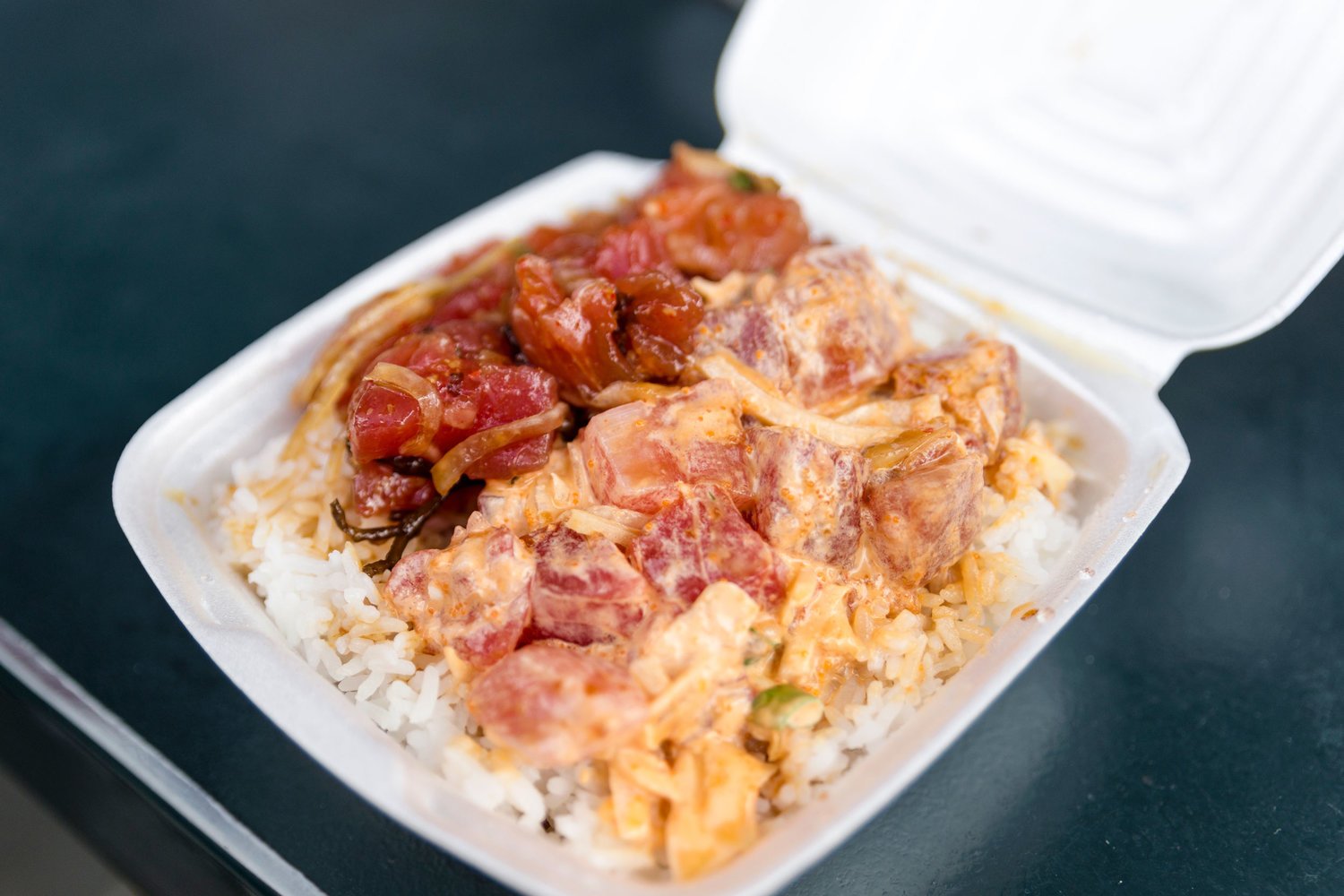
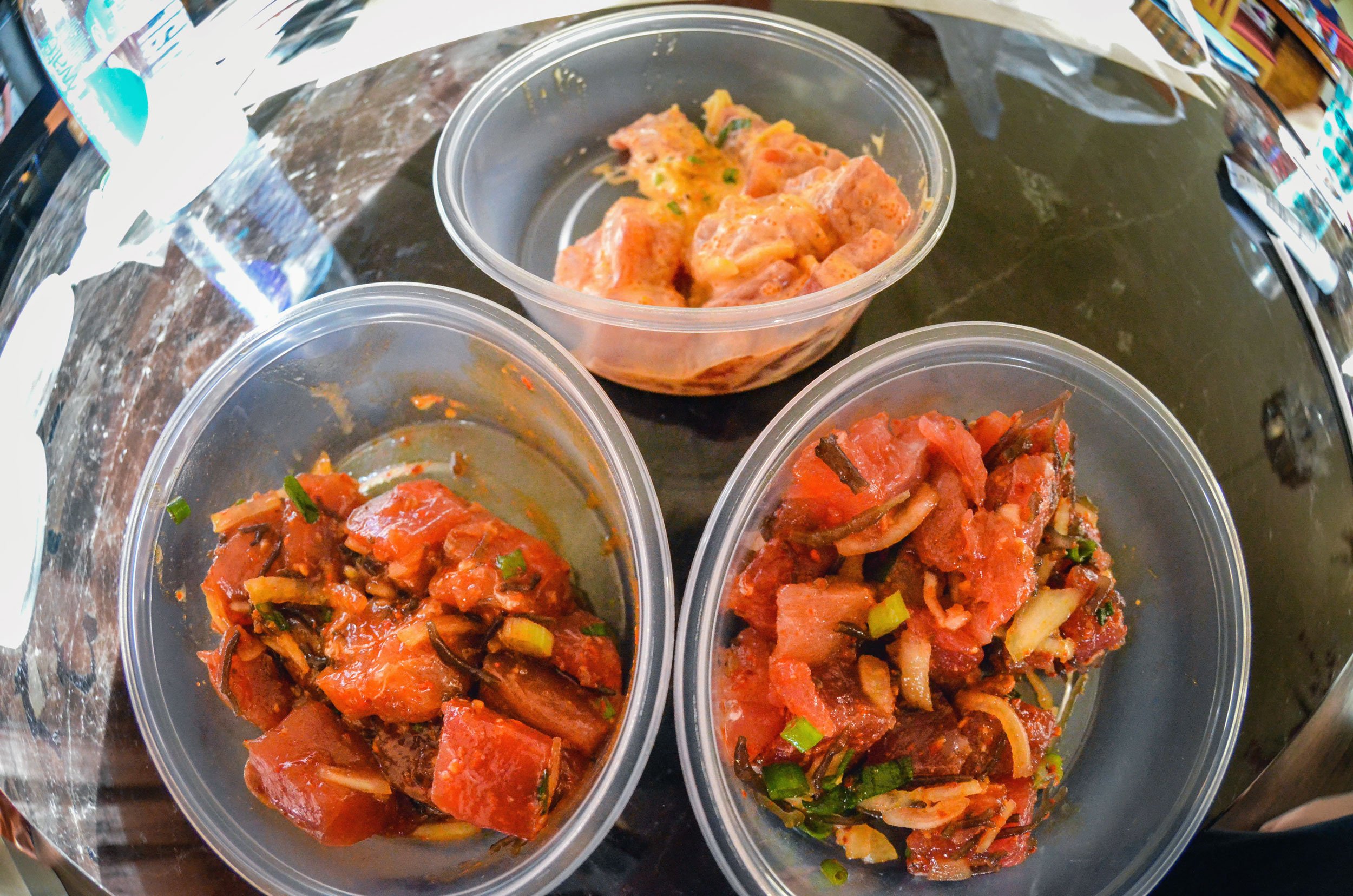
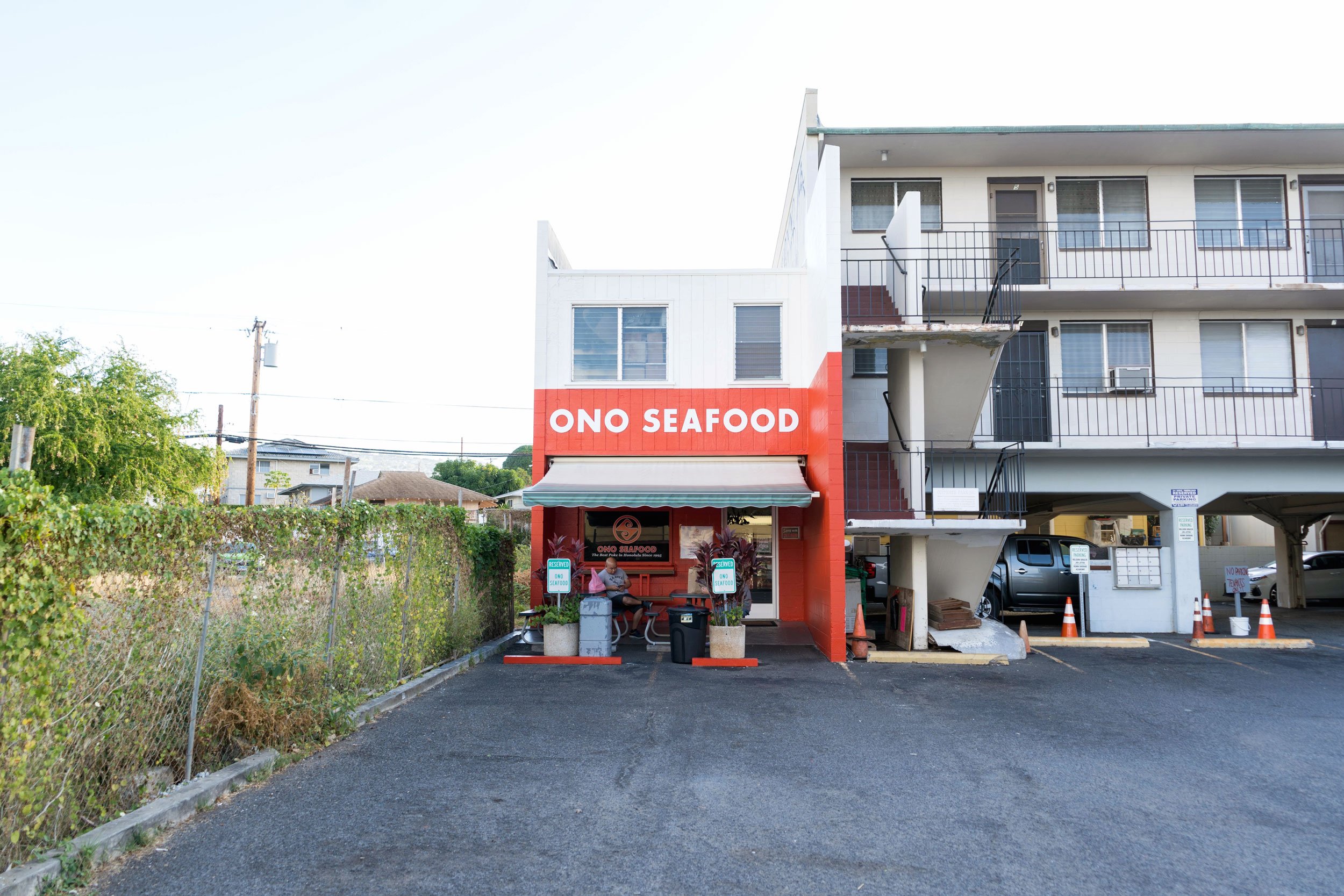
If you ask me where’s consistently been the poke spot that I recommend and go to, it’s probably Ono Seafood.
It's a really small, unassuming hole-in-the-wall place in the Kapahulu area, that in recent years has become pretty well known and extremely popular. All of their poke are good, and I usually alternate between their shoyu ahi, kim chee tako, spicy tuna or Hawaiian ahi poke.
Service is good and a soft drink is included as well.
Fresh Catch

If you’re looking for a poke spot that you can sit down and eat at, Fresh Catch is the best bet. They make a variety of plate lunches as well, but when I tried their poke, it immediately became one of my favorites.
Their shoyu ahi poke is very saucy and perhaps the most flavorful that I’ve had. Yum!
Foodland
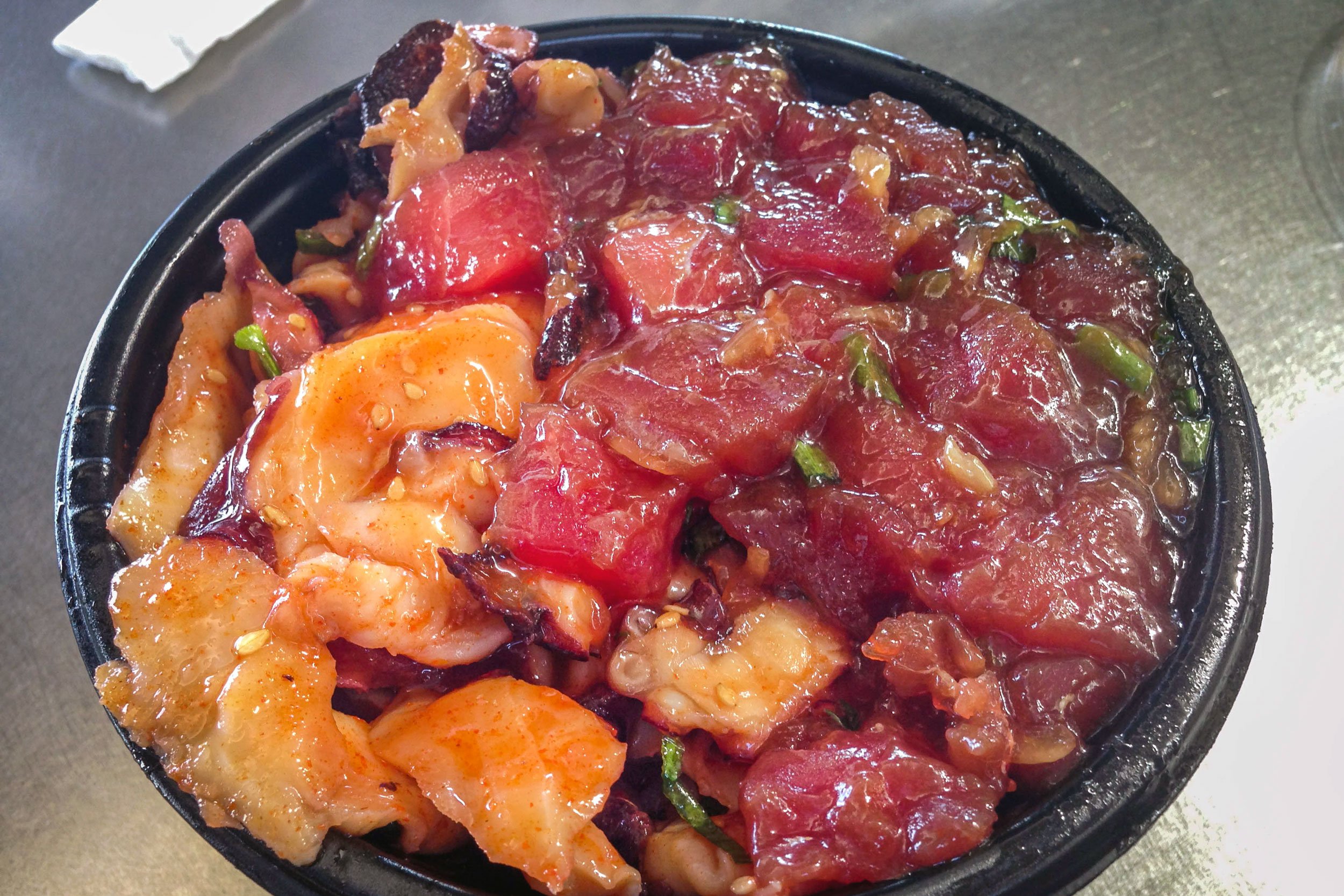
Ask a local where they usually get their poke from and it’s often a market. In Hawaii, most markets make poke whether it’s Whole Foods, Safeway or even Costco.
To me, Foodland makes the best poke and they have a huge range - raw crab poke, clam poke, mussels poke, choices that most other poke spots just don’t have.
Foodland has poke bowls, but most locals pick up a container and take it over to a dinner party, a picnic or potluck. Can’t go wrong picking out a few and having a beer with it.
Keep in touch:
More travels:
East Honolulu, Hawaii
Scenic spots and good eats in East Honolulu, from Kahala to Makapu’u.
Koko Crater and Koko Marina in Hawaii Kai
East Honolulu is the area between Kahala and Makapu’u on the south shore of Oahu
It’s a desirable residential area that includes Kahala, Waialae Iki, Aina Haina, Hawaii Loa Ridge, Niu Valley and Hawaii Kai
Hanauma Bay, Sandy Beach, and Makapu’u Lighthouse are a few popular places here
I grew up here in East Honolulu, Hawaii Kai to be exact, so it’s the part of Hawaii that most feels like home to me.
It’s a relatively low key, residential area of the island connected by a single road, Kalanianaole highway, that runs along the coastline after the H-1 freeway ends. There are few high rises on this part of the island as most families live in houses, and it is a lot more Hawaii-esque than central parts of Honolulu.
Here are a few scenic spots that I recommend, from west to east, as well as some food places (at the bottom):
THE KAHALA HOTEL
Known as one of Honolulu’s top hotels, The Kahala is in a pretty great location. It’s a beachfront hotel tucked away in the upscale, quiet Kahala area next to the Waialae Golf Course.
Sometimes I’ll go to the Plumeria Beach House (info at the bottom) for lunch which has an open-air veranda area looking towards the beach, allowing you to really relax in a peaceful setting near the water.
WAILUPE BEACH PARK
Wailupe Beach Park is a very small, local park area alongside Kalanianaole highway. It’s quite easy to miss, but people go to the park to fish, paddle board or have a picnic.
I’ll sometimes quick pitstop to enjoy some takeout. You can also catch a view of the backside of Diamond Head.
MAUNALUA BAY
At the start of Hawaii Kai, there’s a large parking lot area along the highway’s ocean side. This is Maunalua Bay, which is mainly a boat ramp and paddling area.
I love this part of Hawaii Kai as it’s convenient for watching the sunset. It gives you a panoramic view and there’s always ample parking, which is a big plus.
KOKO MARINA
Koko Marina is at the center of my hometown in Hawaii Kai, and it has some of the nicest, turquoise blue waters in Hawaii.
You can get up close from any of the three shopping centers located along it; the Hawaii Kai Towne Center, Hawaii Kai Shopping Center and Koko Marina Center.
The photo at the top of this blog was taken from Hawaii Kai Towne Center and this one just above was from Koko Marina Center.
HANAUMA BAY
Hanauma Bay is one of the more popular tourist destinations on the island since, well, it’s gorgeous and because you’re able to snorkel with a lot of fish in pretty calm, shallow waters.
Along the crater ridge is a mostly paved trail that’ll give you a nice view of Hanauma Bay from above as well as Hawaii Kai looking towards Diamond Head.
Parking is really limited though, and they close entirely on Tuesdays due to it actually being a nature preserve, so definitely double check.
BLOWHOLE & HALONA (COCKROACH) COVE
If you keep heading up Kalanianaole highway past Hanauma Bay, you will hit Halona Blowhole and Cockroach Cove on the right.
The coastline in this area is pretty different from most of the island as the road becomes windy and you actually have to drive along the edge of a pretty high lava rock cliff.
Halona Cove aka “Cockroach Cove” is a small beach area below the Blowhole parking lot. You just have to climb down the rocky hill.
From this area looking east, you can also see Sandy Beach, which is a popular and notoriously dangerous bodyboarding spot. Even the Secret Service didn’t like President Obama going there. For that reason, I’ll skip over it although there is a nice tide pool area just after it.
MAKAPU’U
The Makapu’u area is the eastern tip of Oahu. There’s a popular hike there, the Makapu’u Lighthouse Trail, which is an easy, paved incline that’s less than 3 miles roundtrip. On the way up, you can see Sandy Beach and the back of Koko Crater, and a view of Waimanalo at the top.
There’s also a lookout you can park and walk to in case you’re not in the mood to hike up [MAP]. No shame in that!
Also in the area is Alan Davis beach [MAP] to cool off after.
FOOD
Now for the food. Most of the food around East Honolulu is at area shopping centers. If you’re looking for something on this side of town, here are some decent choices.
LA TOUR CAFE

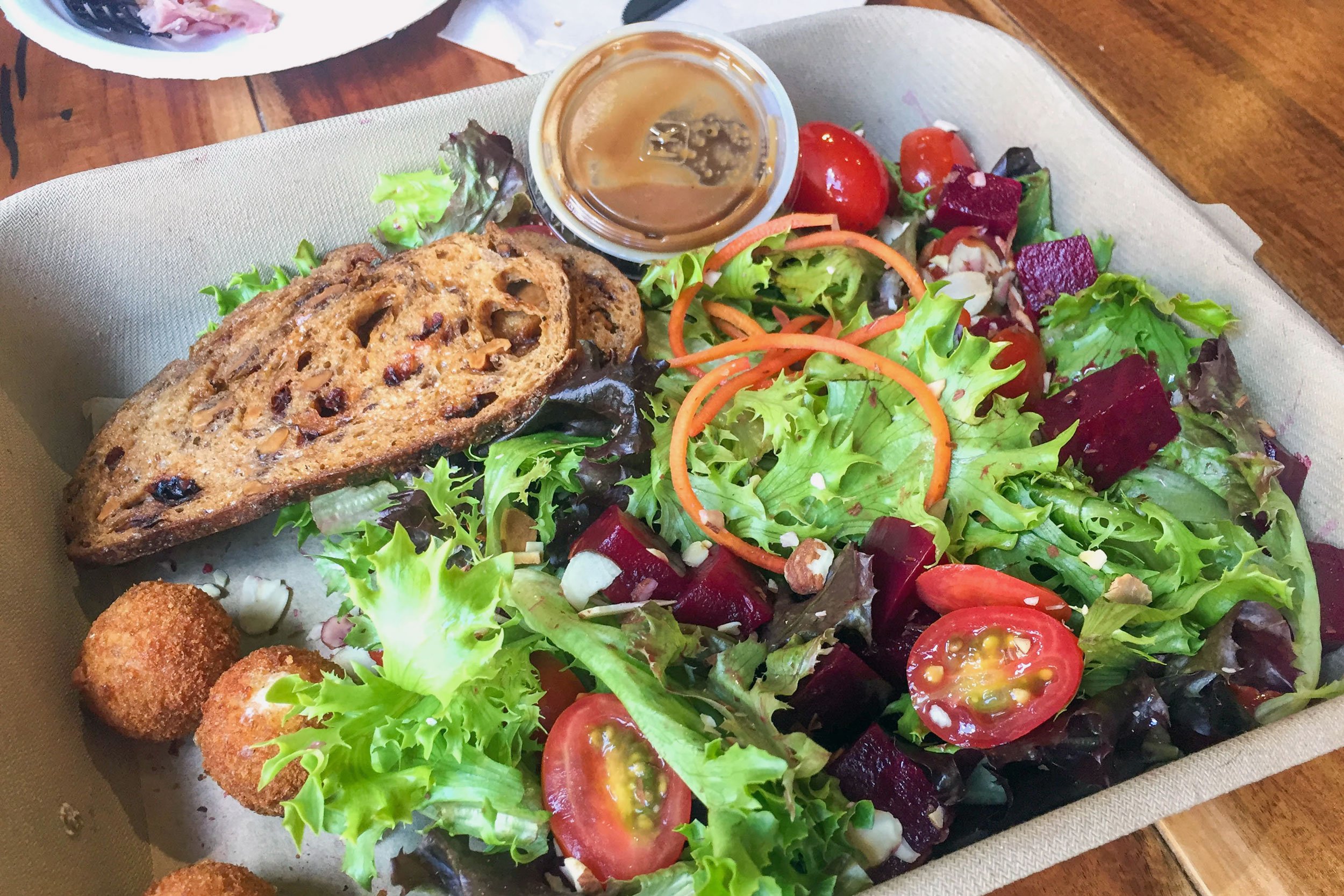
Delicious sandwiches, flatbread pizzas and salads for lunch.
La Tour Cafe is in the Aina Haina Shopping Center and is a good if you want to catch up with friends, have a business meeting and work, or just want to get a good bite to eat.
Everything I’ve had there is delicious, but I’m particularly a fan of their Chili-lime chicken flatbread pizza.
UNCLE CLAY’S HOUSE OF PURE ALOHA
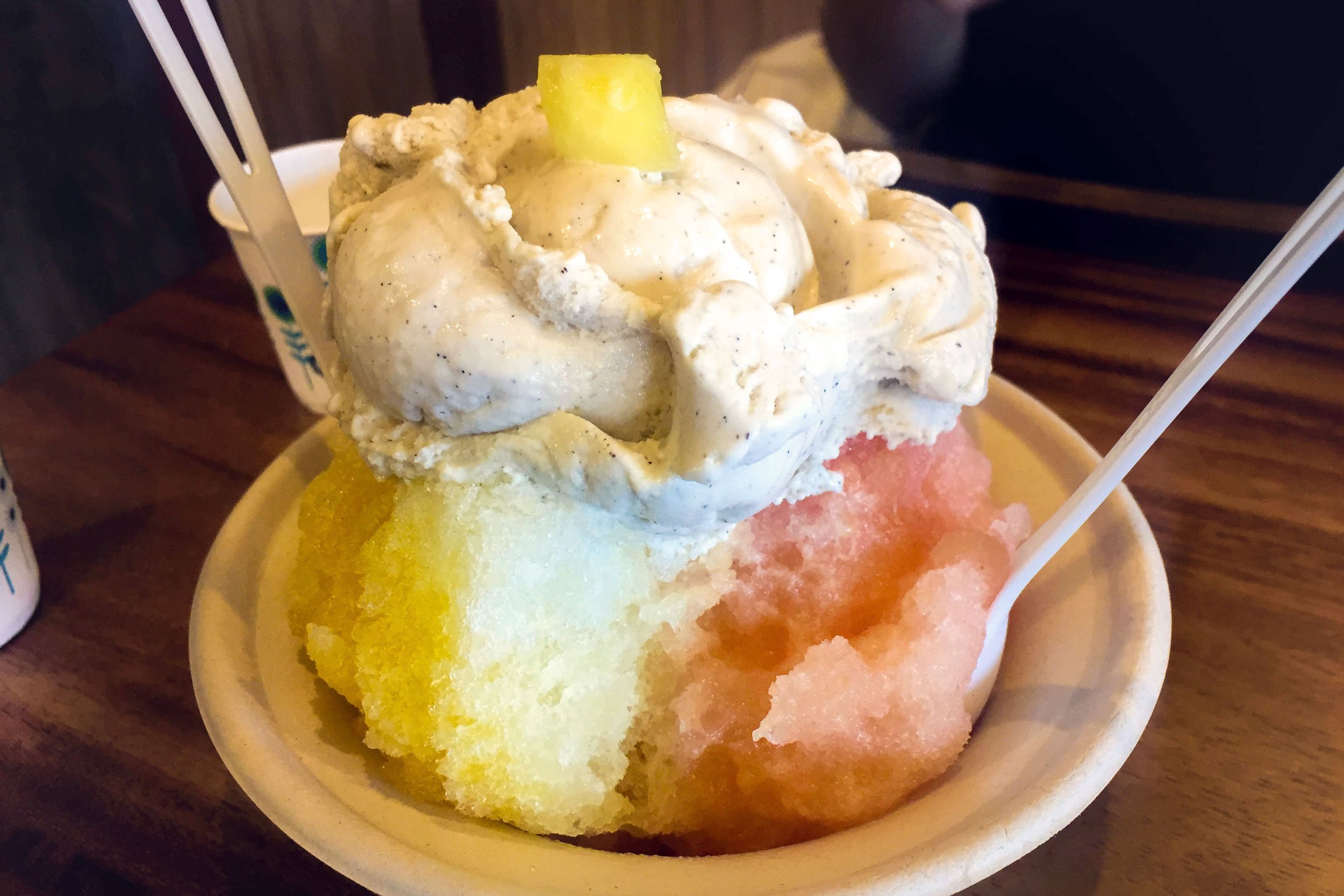
Shave ice and local desserts, Uncle Clay’s House of Pure Aloha basically lives up to its name of providing pure ‘aloha.’
Formerly Doe Fang, a neighborhood crackseed store in Aina Haina Shopping Center, it has grown in popularity not just because it has tasty shave ice in local Hawaii flavors, but also because of their effort to create a family in the community.
PLUMERIA BEACH HOUSE
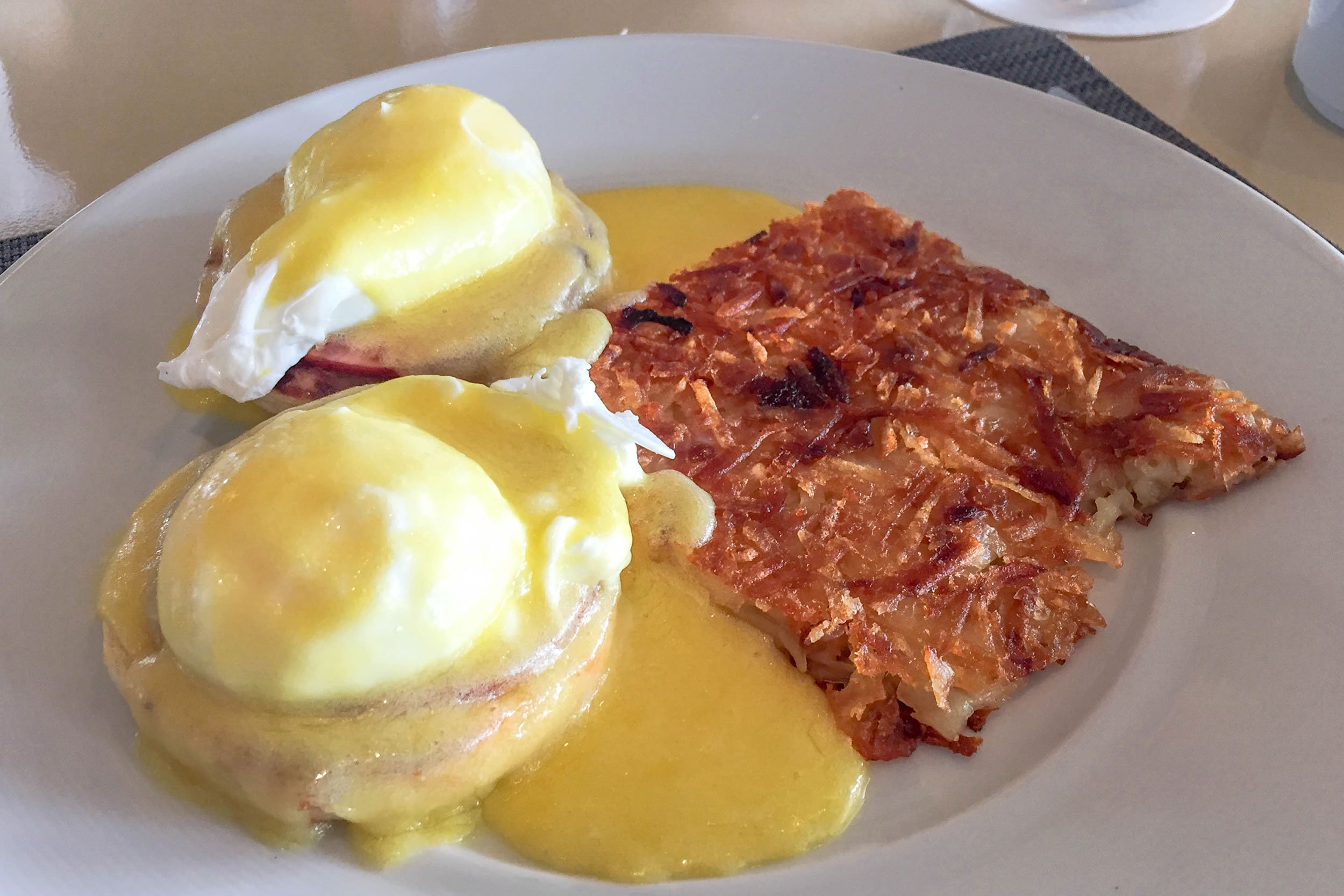
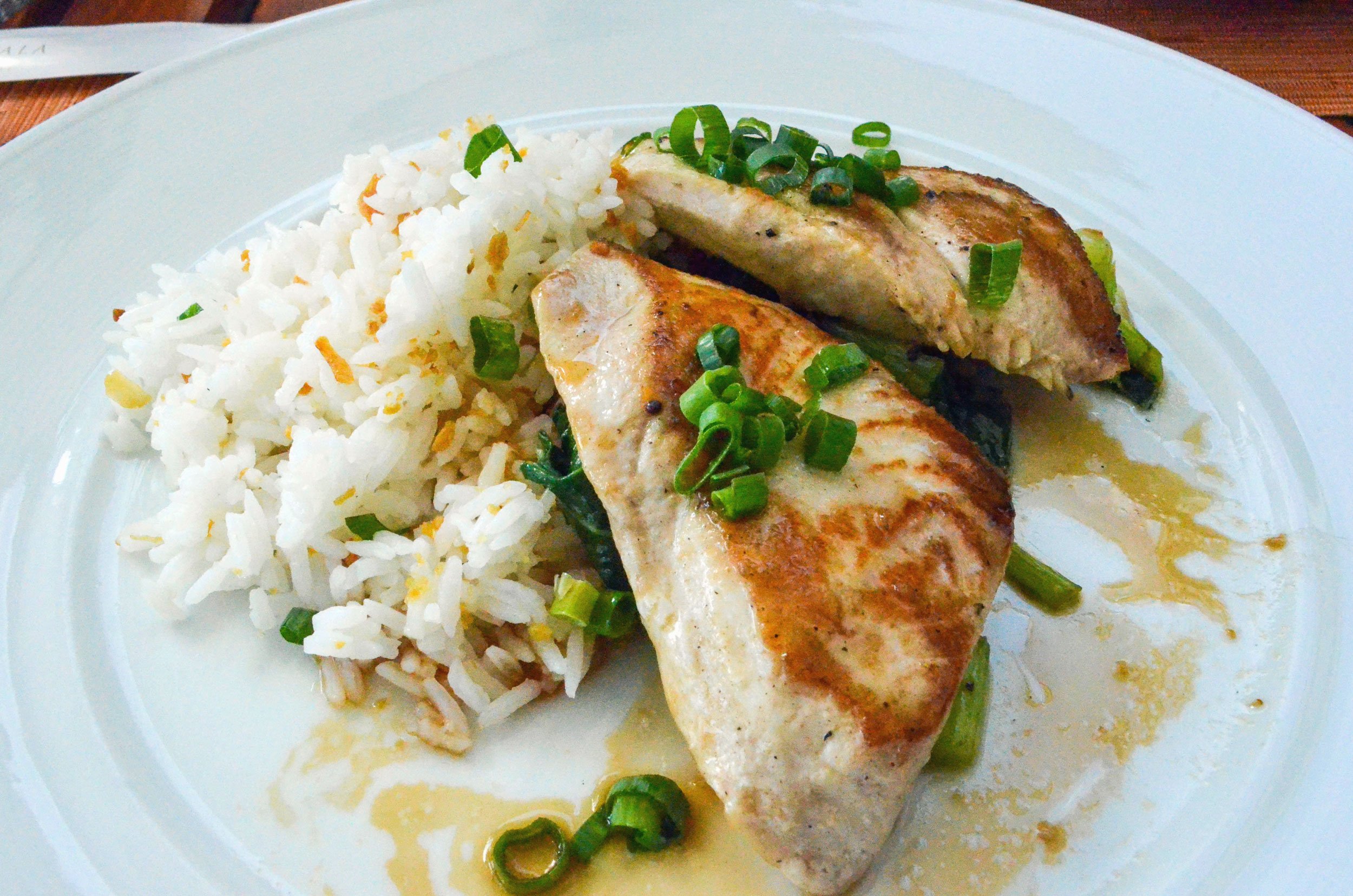
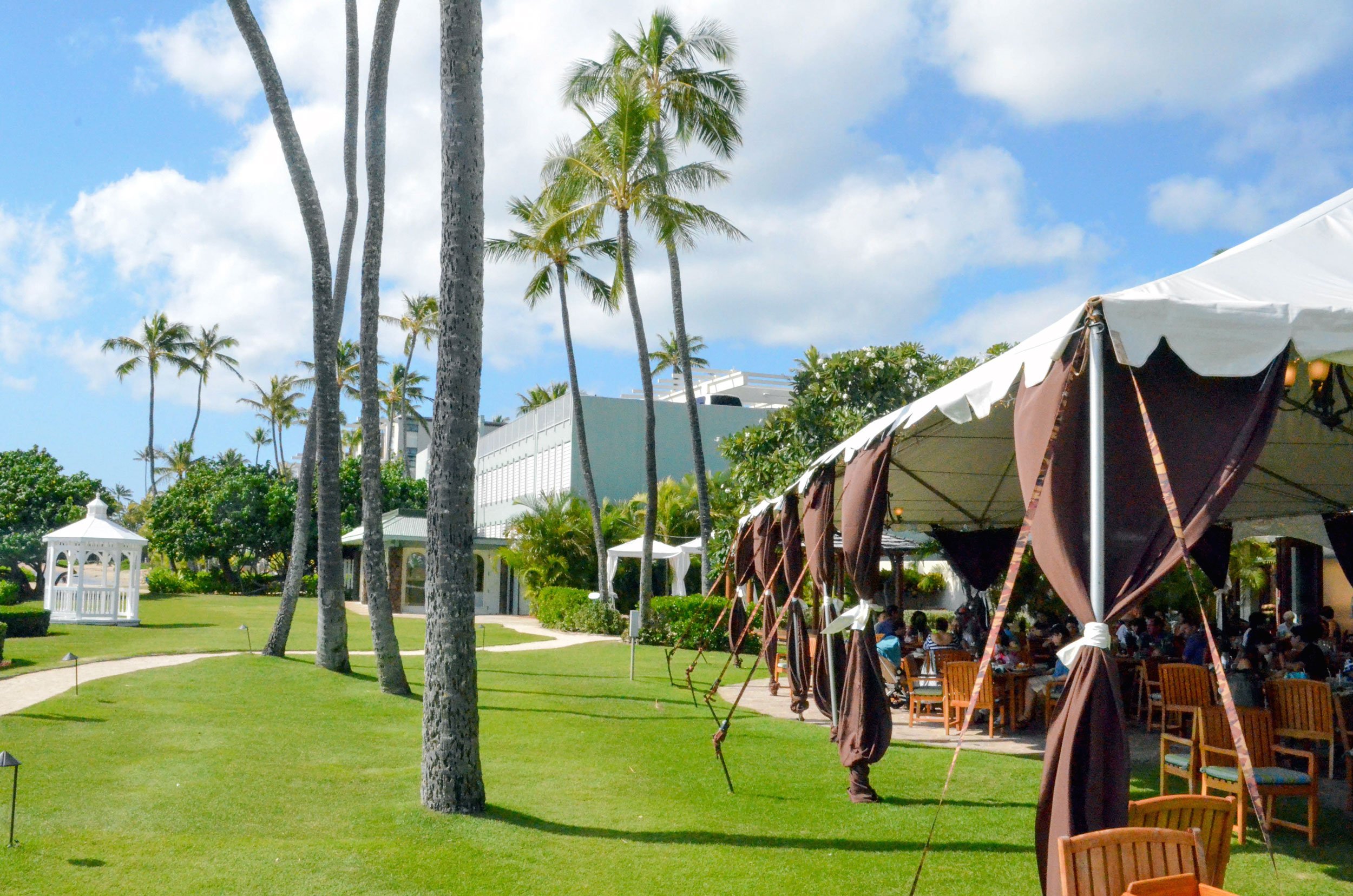
One of my favorite places to go for brunch or lunch in Honolulu. It’s a gorgeous, near beach, open-air location at one of the best hotels on the island.
Plumeria Beach House is one of the restaurants at The Kahala Hotel and has won a range of local awards. They have buffets as well.
Perfect spot to enjoy a nice, yet casual meal surrounded by Hawaii’s lush environment.
KEEP IN TOUCH:
MORE TRAVELS:
SHARE:
Mt Takao New Year’s Sunrise
Watching the first sunrise of the new year from atop a mountain in Japan.
To celebrate New Years in Japan, dance parties are uncommon and fireworks are almost non-existent. It’s a lot of stay-at-home eating traditional foods and drinking, and shrine visiting. I made a video about what New Years is like in Japan.
Another popular outdoor activity though, is to hike up a mountain and watch the first sunrise of the new year. One of the popular mountains to do that from near Tokyo is Mt Takao.
I did this once to welcome the New Year. It was just after midnight, January 1st, 2018.
HOW TO GET THERE
The station that most get their start at is Takaosanguchi [MAP] which is on the end of the Keio line. There are 2 ways up the mountain, hike it or catch a tram. A short walk from Takaosanguchi station is Kiyotaki station [MAP] where you can catch the tram up to Takaosan station up Mt Takao.
We took the tram. Even after getting off at Takaosan station, there’s still waking to do before getting to a point with a view of the sunrise.
Along the way, there’s Yaukuou-in shrine [MAP] to stop at either to pray or buy souvenirs and snacks from.
Despite getting to the viewing area around 2:30 AM or so, the place was packed with Japanese and foreigners alike. Everyone has a tiny space to sit and wait in until the sunrise which happens just before 7AM. It’s quite a long time to sit in one place and wait in the cold, so make sure you bundle up…very well. I was freezing.
After the sun’s up, people begin making their way down the mountain.
There’s a trail that leads down to the two modes of transport. The tram from Takaosan station is one of them. The other is catching chairlifts from Mt Takao Echo Lift Sancho station [MAP] which is just a little bit further. We took the latter because it seemed faster and basically just more fun.
The chairlift brings you next to the Kiyotaki tram station, and from there you can walk to Takaosanguchi station and catch the Keio line back into Tokyo.
It was the first time for me to something like this for New Year’s as I typically go to a party with friends. And while it won’t become a normal thing for me, it was a good experience watching the January 1st sun break over the horizon.
KEEP IN TOUCH:
MORE TRAVELS
SHARE:
Nakano and Obuse
A detour stop in Nakano city, a rural district in Nagano prefecture with amazing apples.
Nakano is a small city of about 50,000, and Obuse is an area next to it
It’s known best for its fruits, particularly Fuji apples and grapes
Between Nagano city and the end of the train line at Yudanaka are Nakano city and Obuse, small, local areas most known for their agriculture.
Visiting in Nakano wasn’t planned, actually, as we actually ended up in the city due to an unfortunate medical emergency while on a trip around Nagano prefecture. At least they have a capable hospital with good staff in Hokushin Hospital.
We had visited Matsumoto city, then had gone to see the snow monkeys in the Yamanouchi area when we ended up having to go to Nakano.
I was able to see a little bit of the area.
HOW TO GET HERE
Nakano city and Obuse are in between Nagano and Yudanaka stations. The Nagaden Snow Monkey, express and local trains going towards Yudanaka stop at these stations but the schedule varies. Here’s a timetable. In these areas though, I’d definitely recommend having a car.
There weren’t a whole lot of highlights given the reason why I was in the area, but there was one: Picking Fuji apples.
ONO RINGO-EN
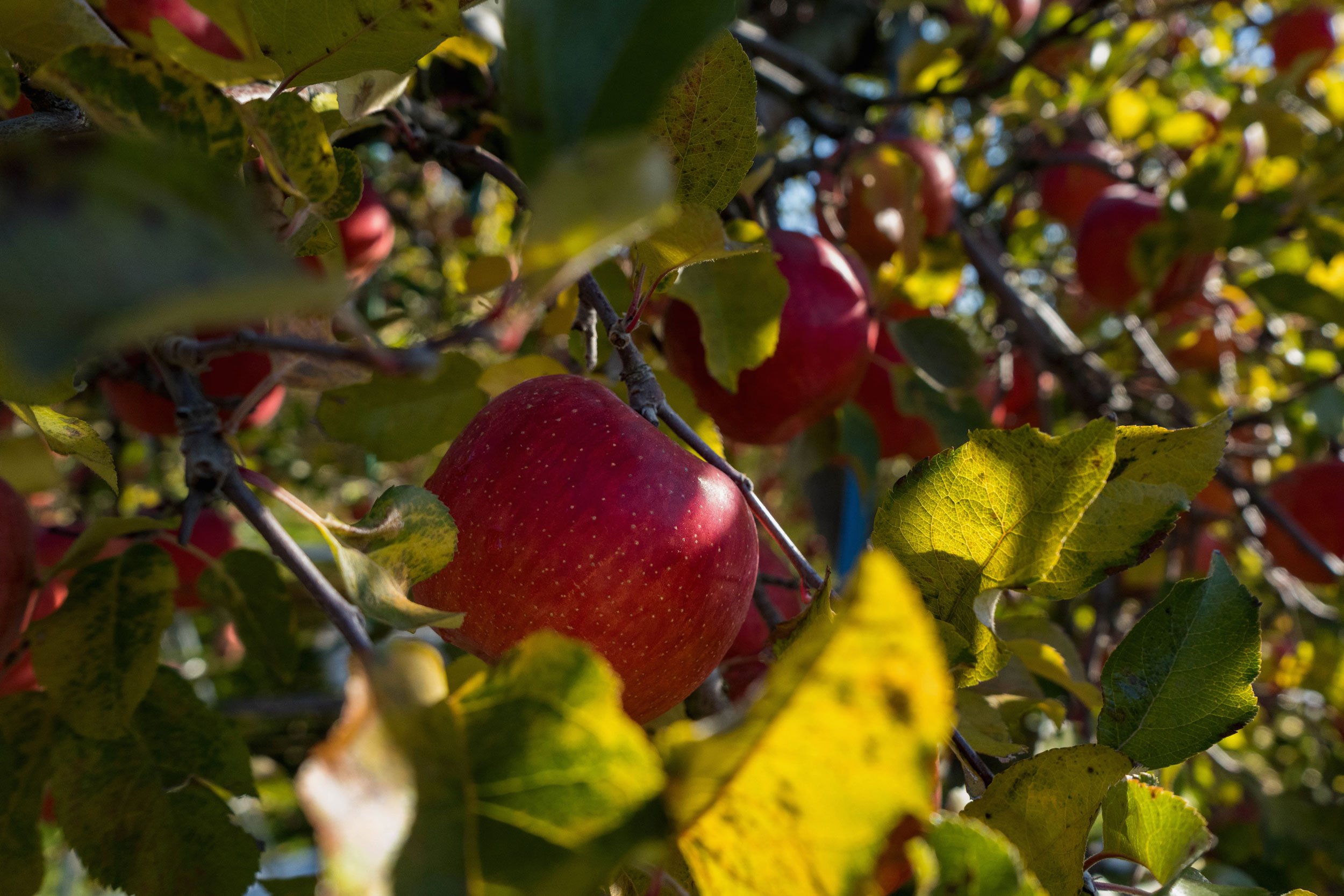
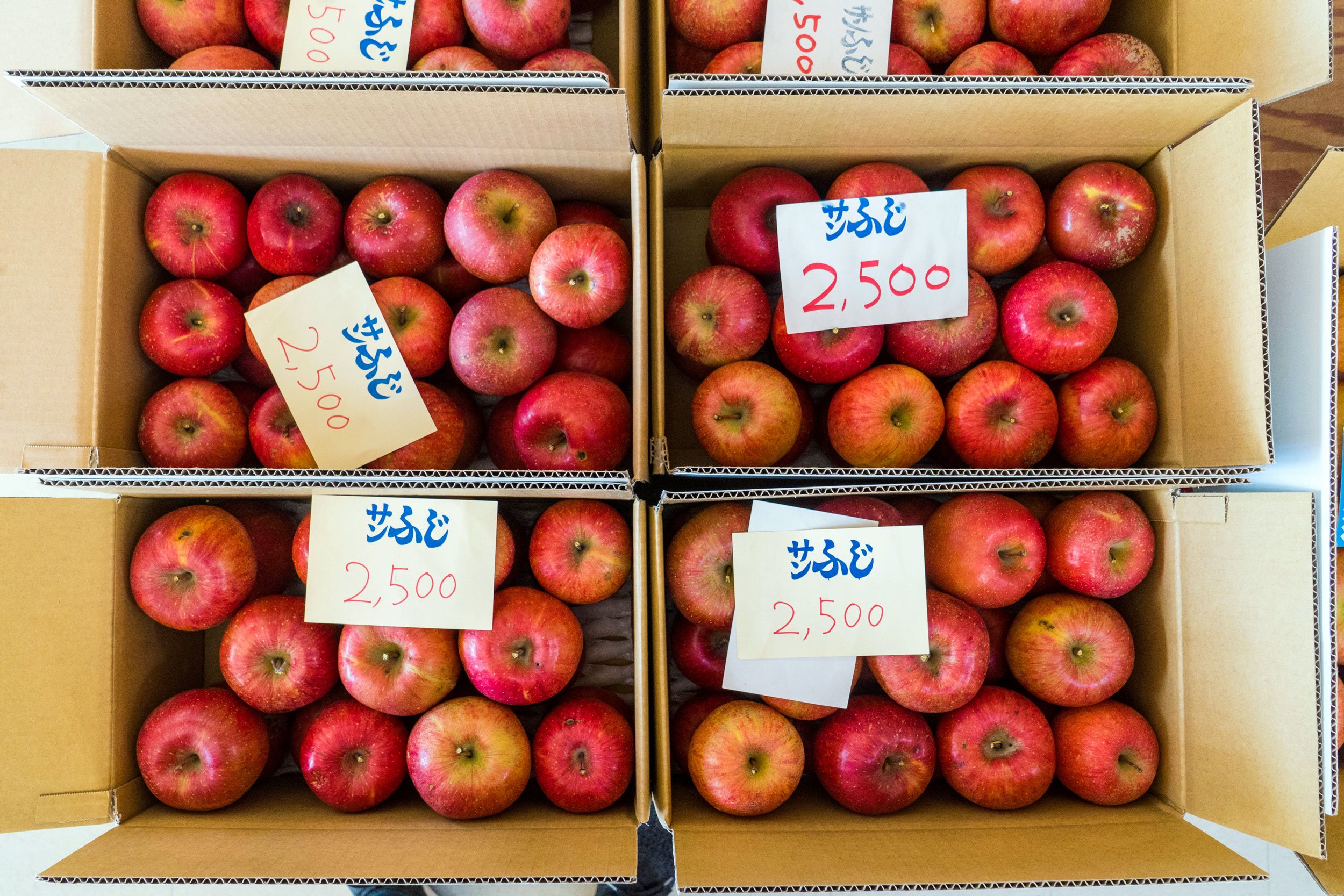
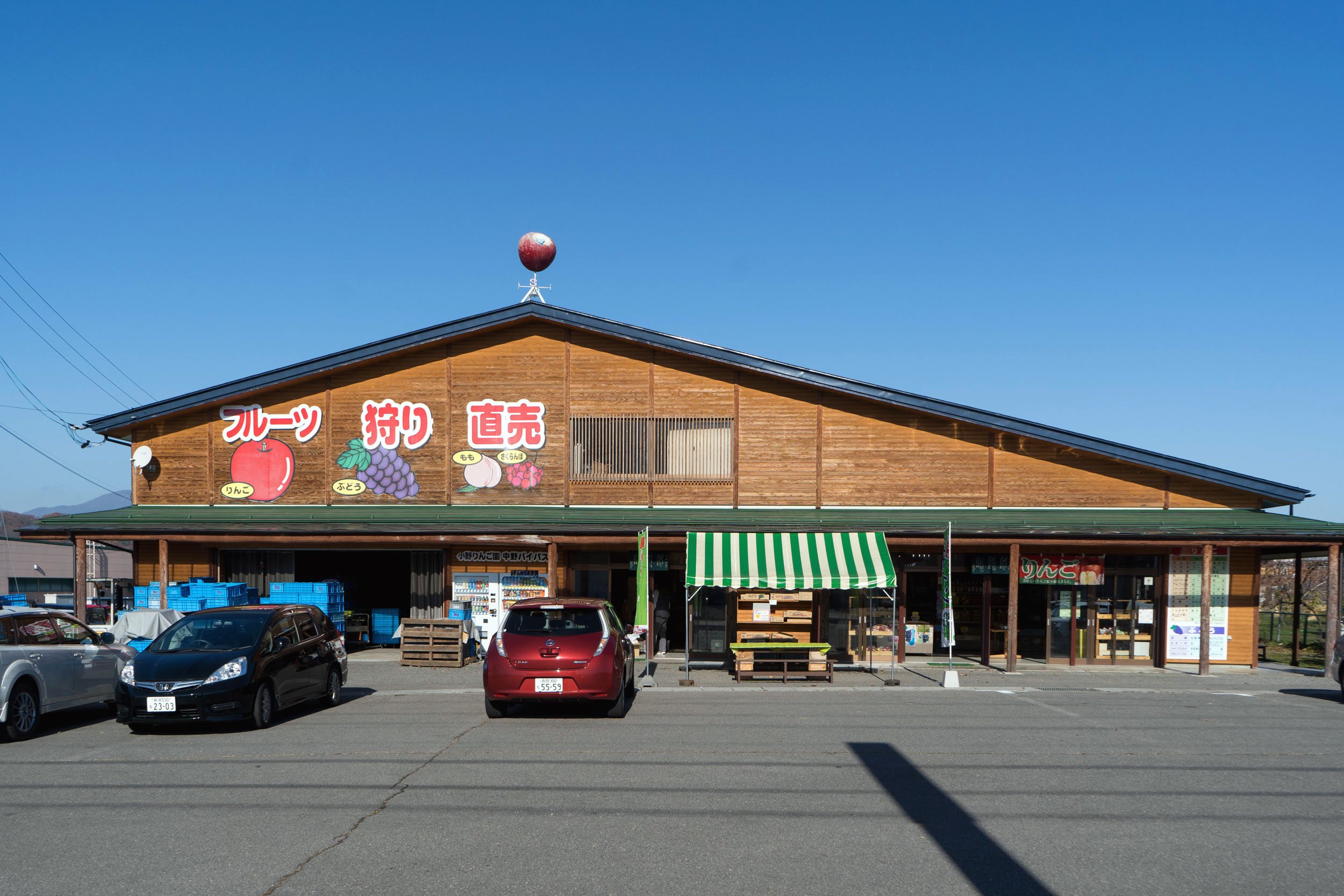
It was my first time picking apples, and the trees at Ono Ringo-en were full of them. Just like how grapes in Koshu, Yamanashi were some of the best I’ve ever had, these Fuji apples we picked in Nakano were some of the juiciest ever. It became hard to eat a regular supermarket apple after.
There’s so many on the trees and they have awesome deals. All-you-can-eat while in the orchard, + 1 apple to take to go for 500 yen (less than $5 USD), +3 apples for 900 yen, + a basket for 1,500 yen… and there’s no time limit! You can also buy by weight as well.
We stayed at the Route-Inn in Nakano. There wasn’t really any other option but they had a decent public onsen-like bath, breakfast, and really nice reception staff.
Across the street was one of the food highlights of the area.
DAIGEN
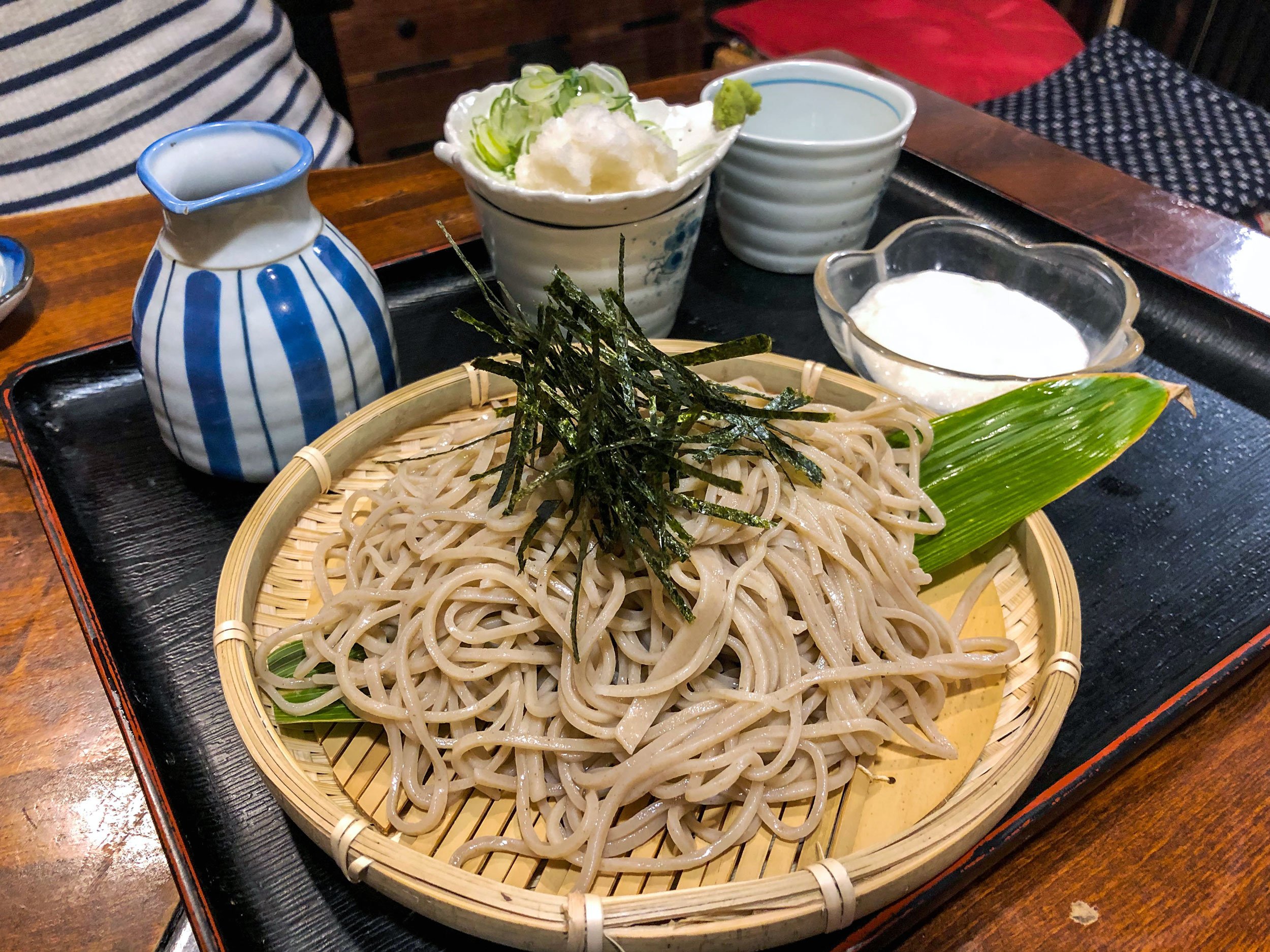
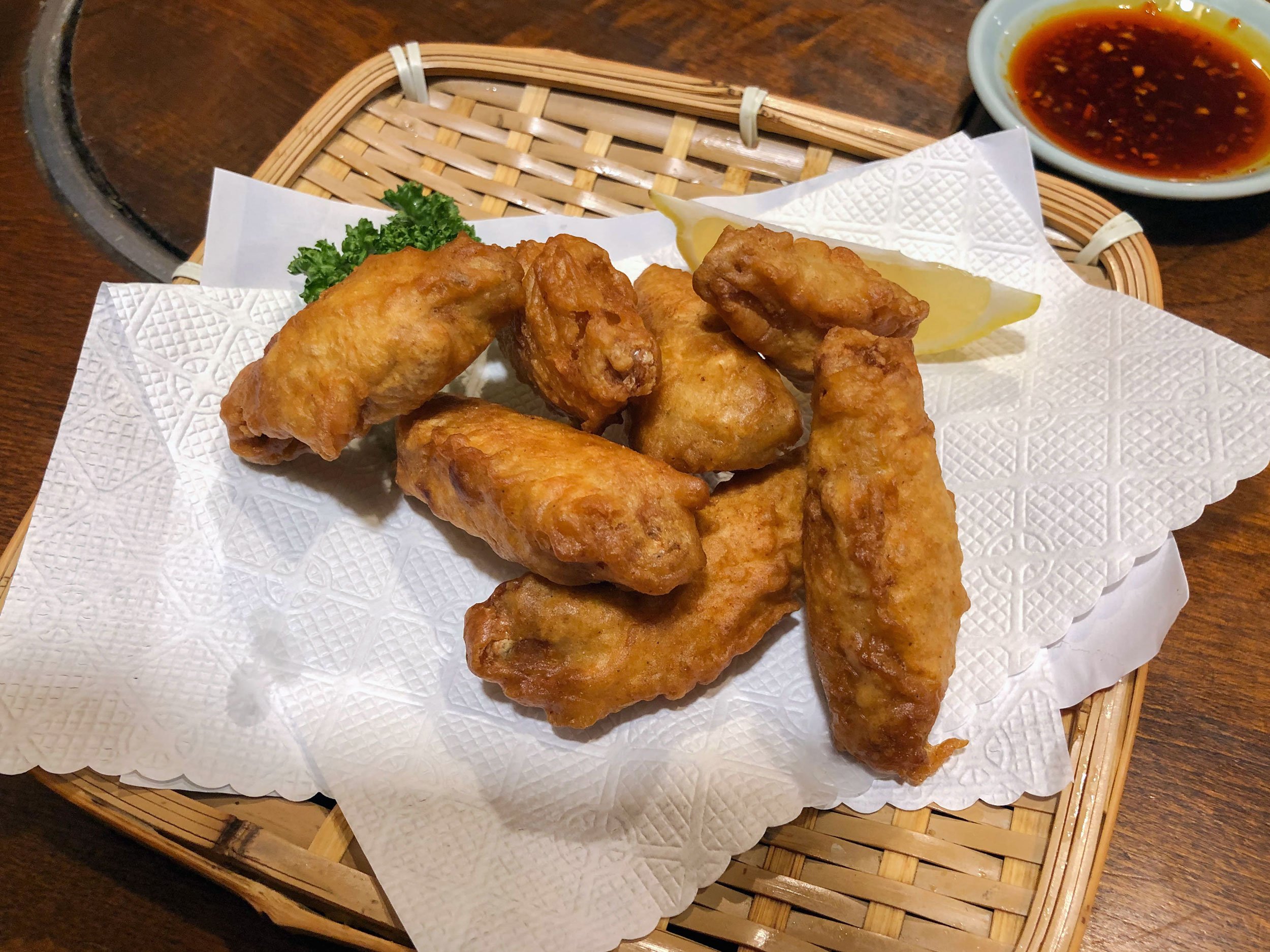
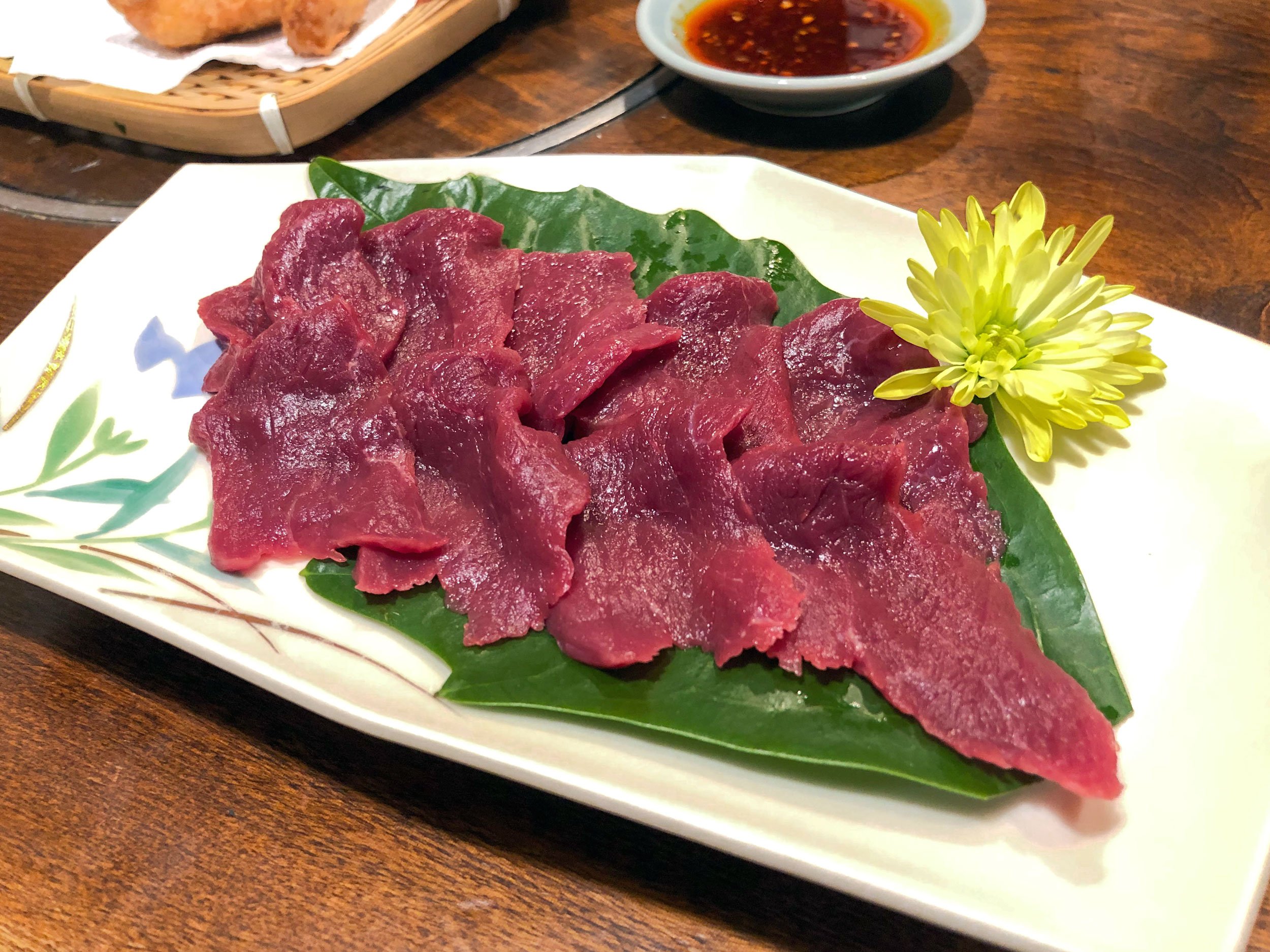

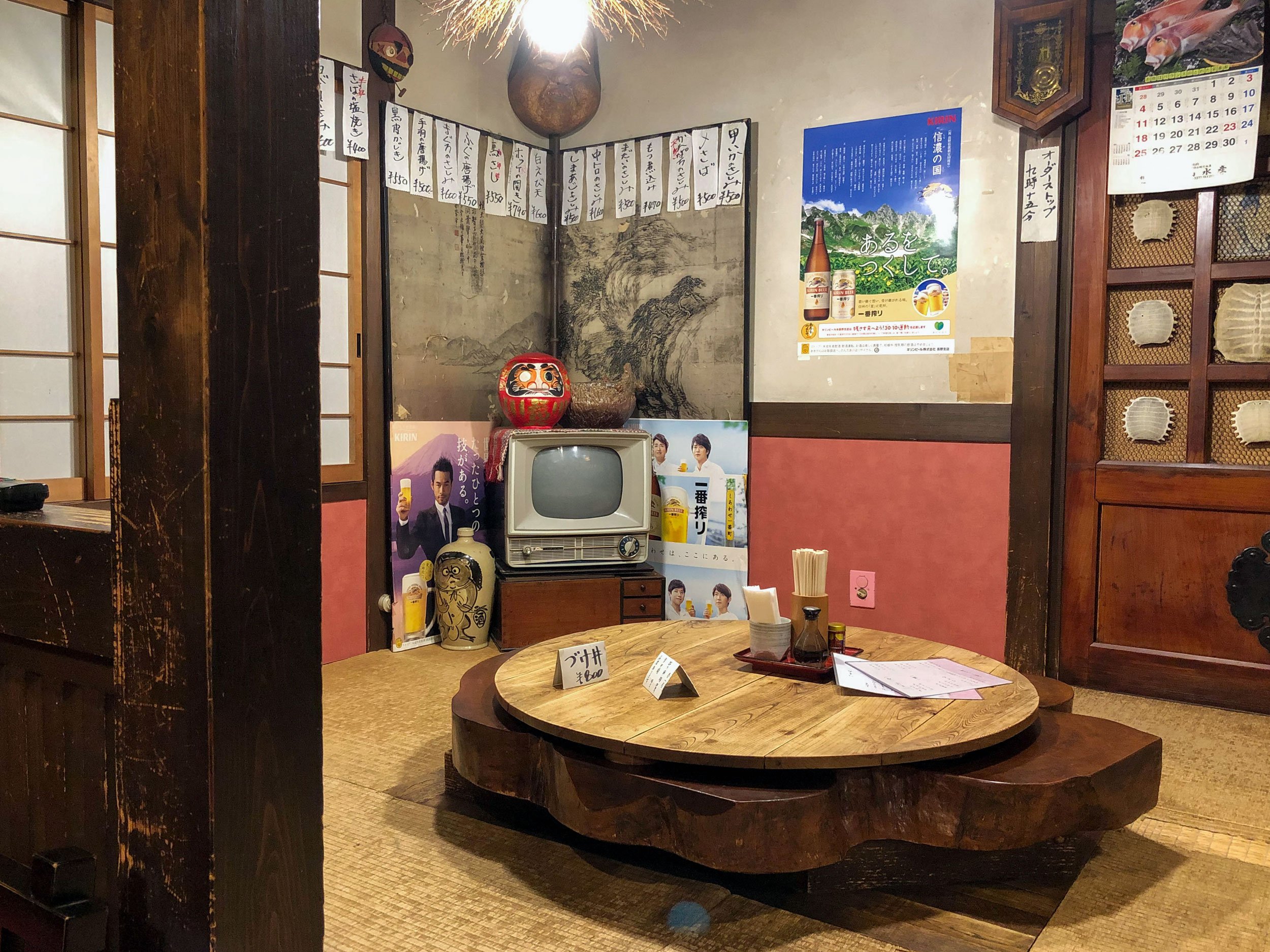
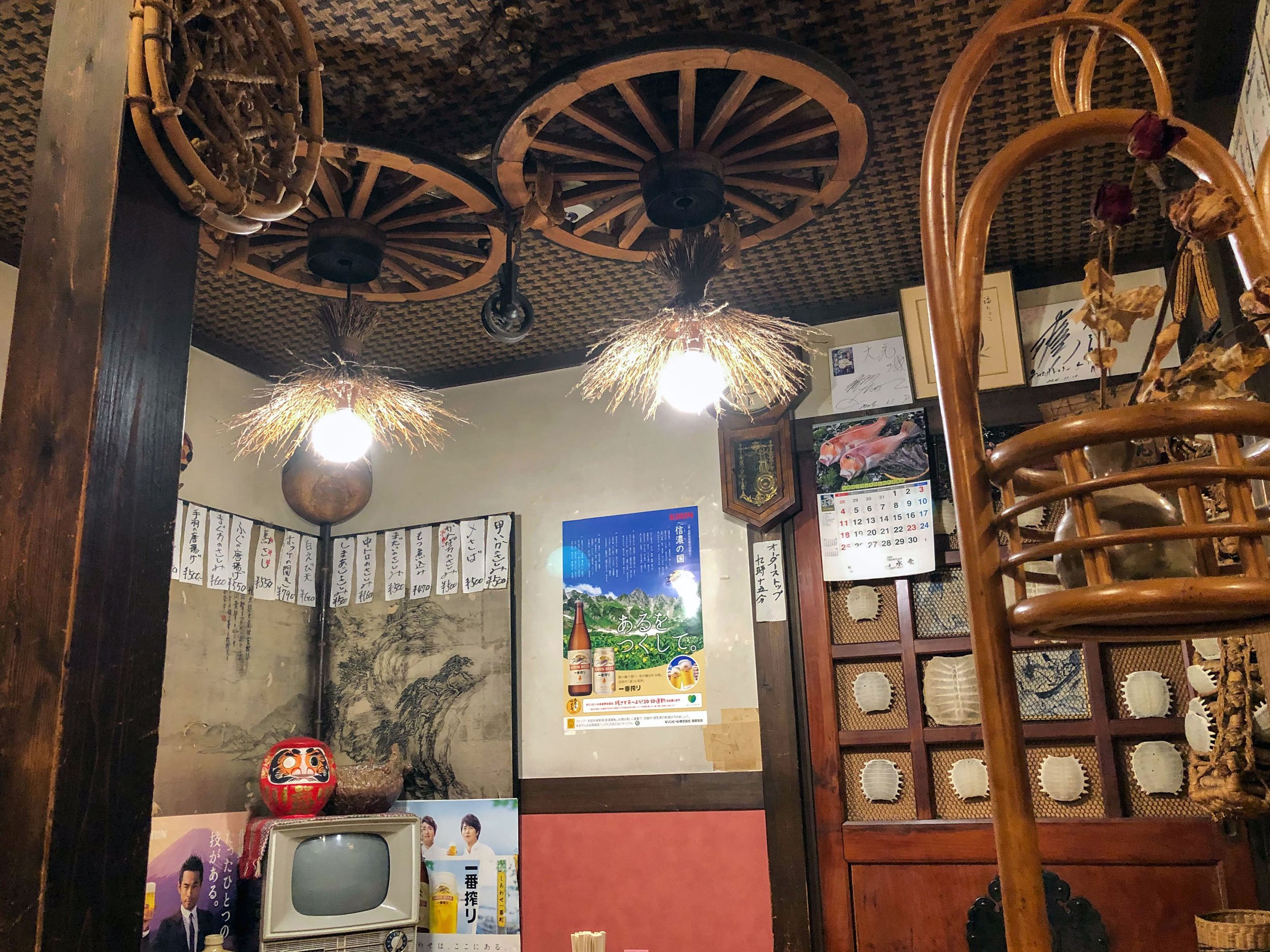
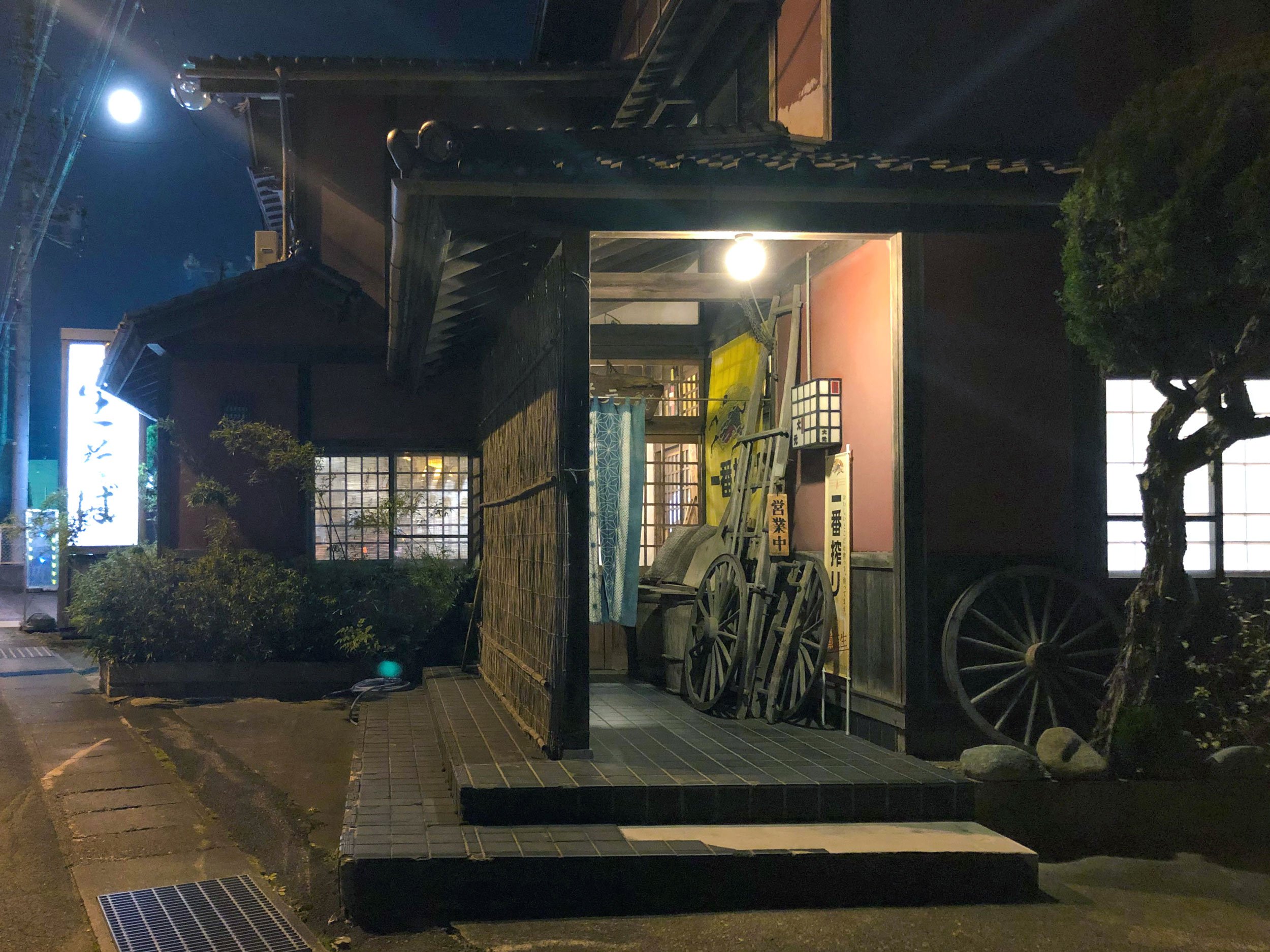
A lucky find across the street of our hotel, Daigen was a good alternative to any of the chains nearby. It’s a quirky izakaya run by an older man and woman furnished in random, old items like old wooden skis, a tube TV and something that looked like Japanese rickshaw wheels. They’re fried chicken and spicy sauce stood out to me, and their soba was also pretty good.
TOGAKUSHI SEYA SOBA-TEN
Conveniently right across the street from the hospital, and near Shinshu Nakano station, was this good soba spot. They have a variety of foods to choose from, but their soba combo with their tempura really hit the spot. The soba is nice and firm and their tempura is so light and crispy. Really good quality and very reasonable.
KANAETEUCHI SOBADOKORO
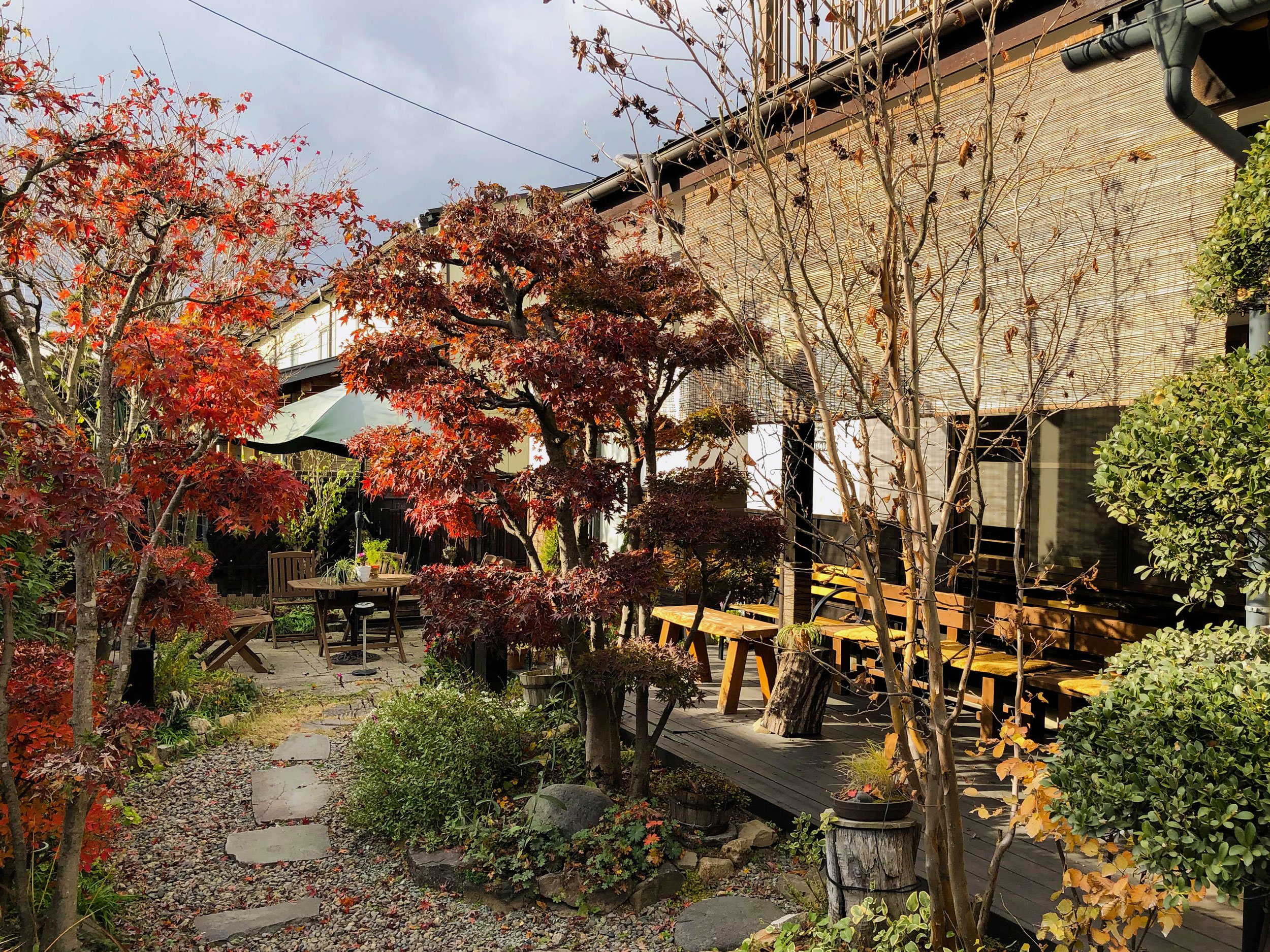
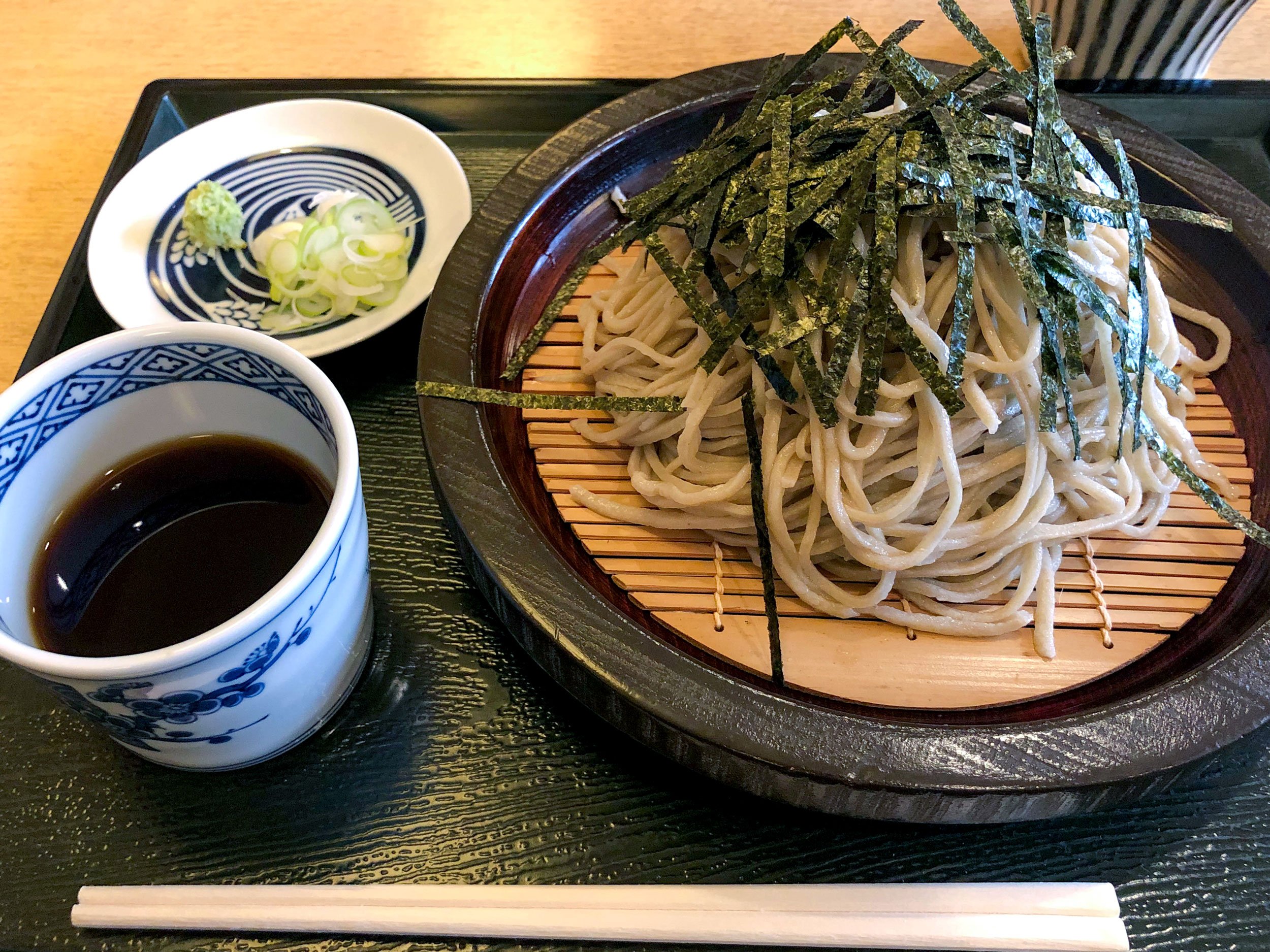
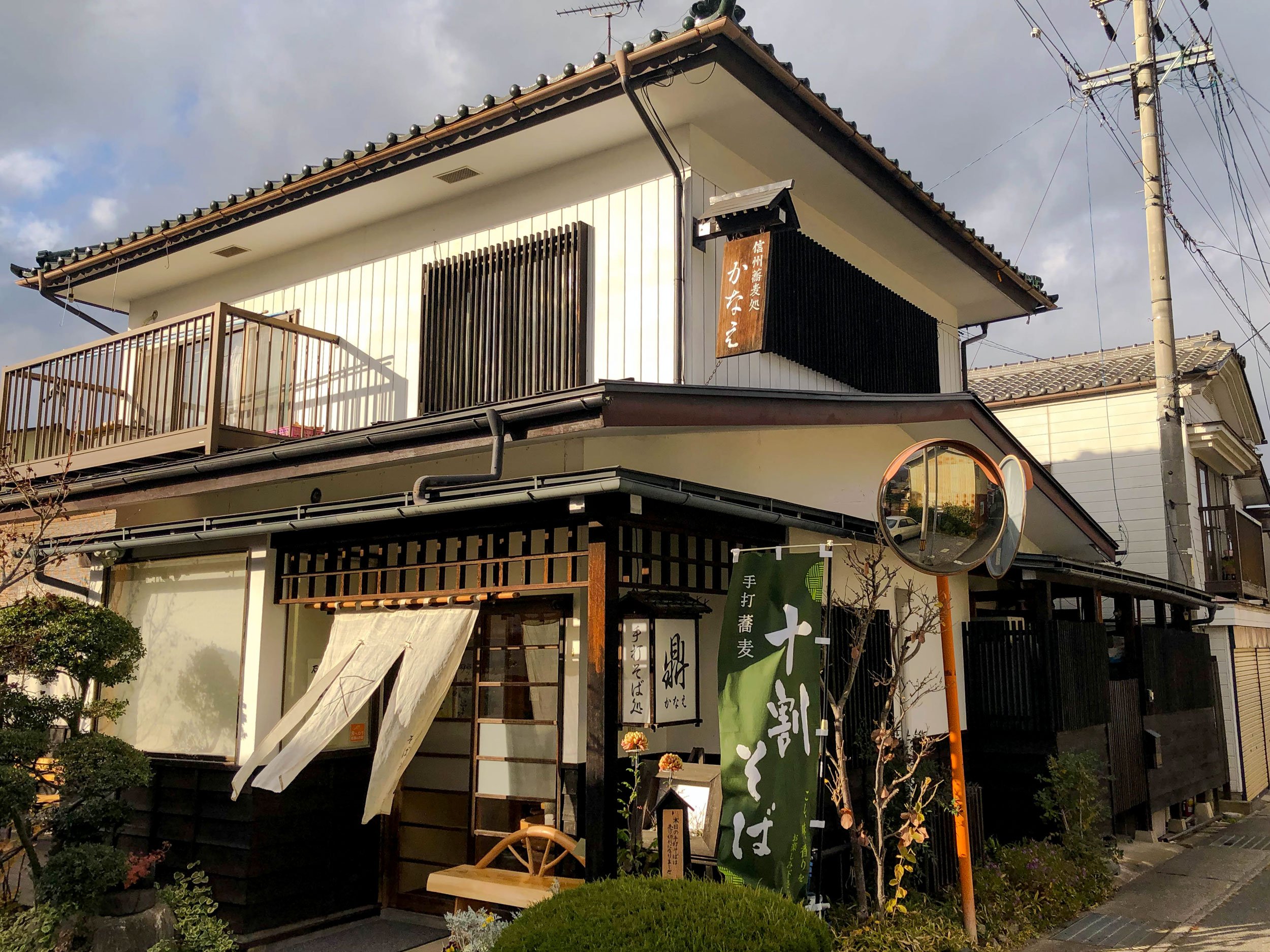
This popular soba spot in Obuse is run out of a converted, local house. They’re a part of a local collective of locations that open their outdoor, Japanese garden to tourists for free. They have several different soba sets to order from, including ones made form 100% soba buckwheat flour.
KEEP IN TOUCH
Other Travels
SHARE
Yudanaka: Snow Monkeys and Onsen
Snow monkeys and onsen hot springs in an old Japanese town in the mountains.
Yamanouchi is a small town area in Nagano prefecture with about 12,500 people, and consists of the Yudanaka and Shibu Onsen areas
Snow monkeys, onsen hot springs and skiing are what Yamanouchi is known for
Tucked away in the mountains of northeast Nagano prefecture is Yudanaka, Yamanouchi, an onsen hot spring getaway. I visited the area while on a trip around Nagano in November 2018, and this was the second stop after traveling to Matsumoto city.
People mainly visit the area to either see the famous snow monkeys that take a dip in the onsen during the snowy winter, enjoy the hot springs themselves, or go skiing.
HOW TO GET THERE
There are 3 trains that go between Nagano and Yudanaka stations. From Nagano station, where the Shinkansen bullet train from Tokyo makes a stop, you can catch either the Snow Monkey line (it’s actually called that), Nagaden express or local to Yudanaka station which is at the end of the line. Here’s a timetable.
Yamanouchi is separated into two main areas. There’s the Yudanaka area next to the station and the Chuo or “central” area a bit further in.
We stayed at a hostel in the Yudanaka area.
HIGH QUALITY HOSTEL AIBIYA
High Quality Hostel Aibiya is run by a family friend’s former student and his wife. They both speak good English and the hostel itself has a very homey feel.
A converted older building only a few minutes from Yudanaka station by foot, Aibiya has shared rooms and private rooms that share a bathroom, and a deluxe suite with its own toilet and bath.
There’s a shared hangout space on the first floor as well as a kitchen area where you can make yourself breakfast with food that they provide.
I’d recommend considering this hostel for anyone visiting the area, it’s quiet and they’re very accommodating.
We caught a taxi from Yudanaka station to one of the area’s main attractions: The snow monkeys.
JIGOKUDANI MONKEY PARK
There are 2 entrances to the park: Kanbayashi which is a 30 minute walk that has a cafe (see the end of this blog) near the entrance and a 15 minute walk that’s a little rockier of a path. We went in on the first, exited on the latter.
Visiting in late November, it wasn’t snowing yet so the monkeys were just hanging around the hot springs instead of soaking in them. The park has a livestream video feed to check the current conditions.
There are actually a lot of monkeys. The park’s staff come around and feed them, keeping them in the area in large numbers. They pretty much ignore the tourists, walking right around them and paying them no mind at all.
http://www.jigokudani-yaenkoen.co.jp
8:30AM-5:00PM (April to October)
9:00AM to 4:00PM (November to March)
After our monkeying around, we called a taxi and got brought to the central part of town.
SHIBU ONSEN
There are two areas in the Yudanaka, Yamanouchi area: The Yudanaka station area where our hostel was and the Shibu Onsen area.
Shibu Onsen is the bigger, main area, with a lot of ryokans and onsen hot springs spread around old, narrow streets.
Each onsen has a number, and a lot of visitors go on an onsen-hopping tour, jumping from one to the next. You’ll see them in their bath wear walking the streets.
There are some interesting places to check out, from small, old shops selling Japanese manju pastries to free onsen foot baths to old shateki toy rifle ranges that are hard to come by nowadays.
A young girl plays at an old, shateki toy rifle range.
From Shibu Onsen, we walked back to Yudanaka.
It’s walkable but the sun had set by 5:30PM which was when we headed back. There are some really dark portion of the walk and it’s quite some distance, especially if it’s in the middle of a cold winter, so I recommend walking while it’s still lit. Taxis are hard to come by as well since there’s only a few cars servicing the entire area.
YUDANAKA
The Yudanaka station area is smaller but more convenient as it’s minutes from the station.
Our hostel, the High Quality Hostel Aribiya was there, as well as a couple of onsen, including Yudanaka Onsen Yorozuya (Yoroduya) which I went to.
Yorozuya onsen has a large bath inside and connects to one outside that is placed in a rock garden. It’s a great place to relax in some peace and quiet amongst nature.
Yudanaka Onsen Yorozuya (Yoroduya)
Unfortunately, our vacation ended abruptly due to a medical emergency. I enjoyed what I saw while I was there though, and wouldn’t mind going back sometime.
Kakuma river in Yamanouchi at sundown
HAKKO
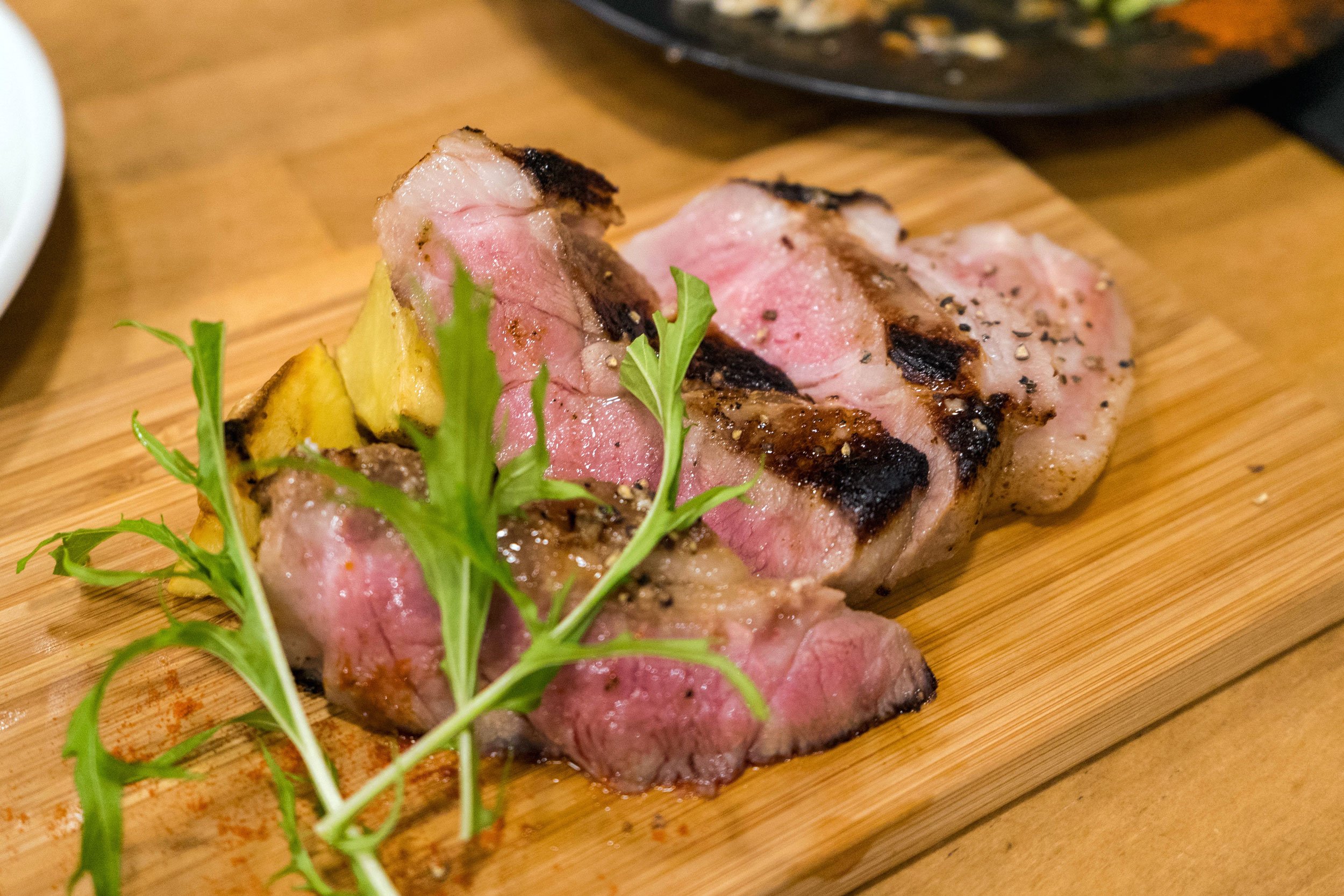
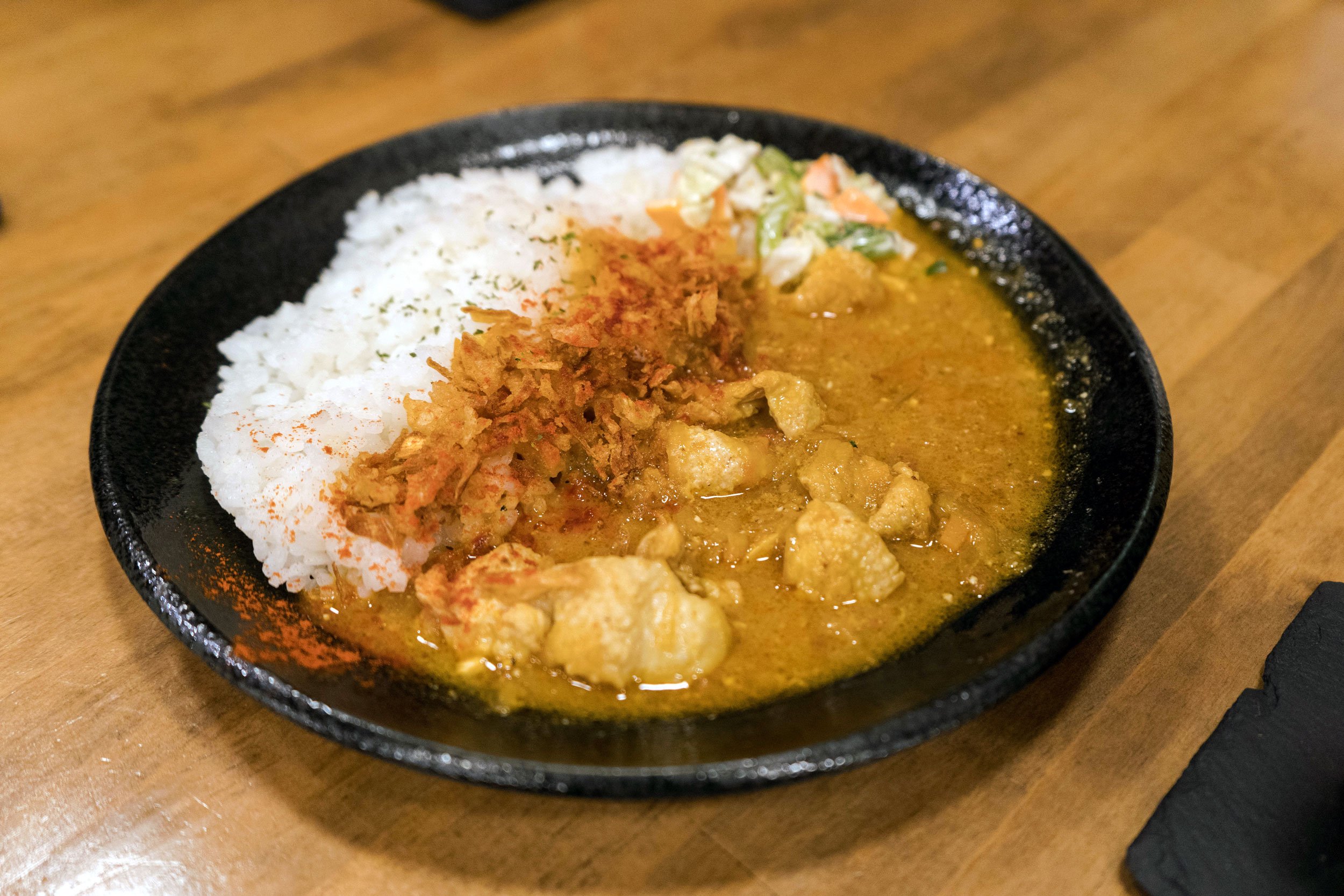
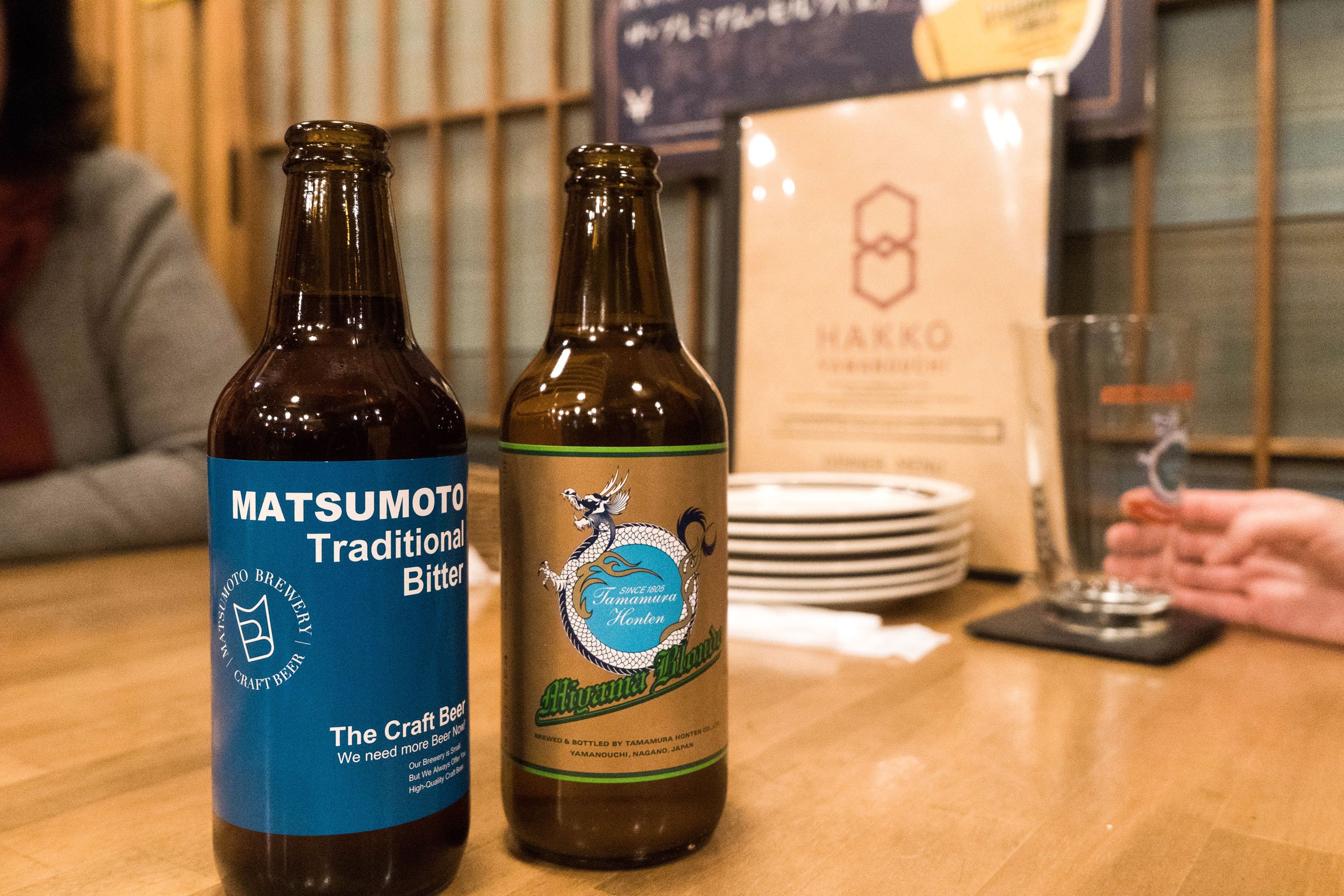
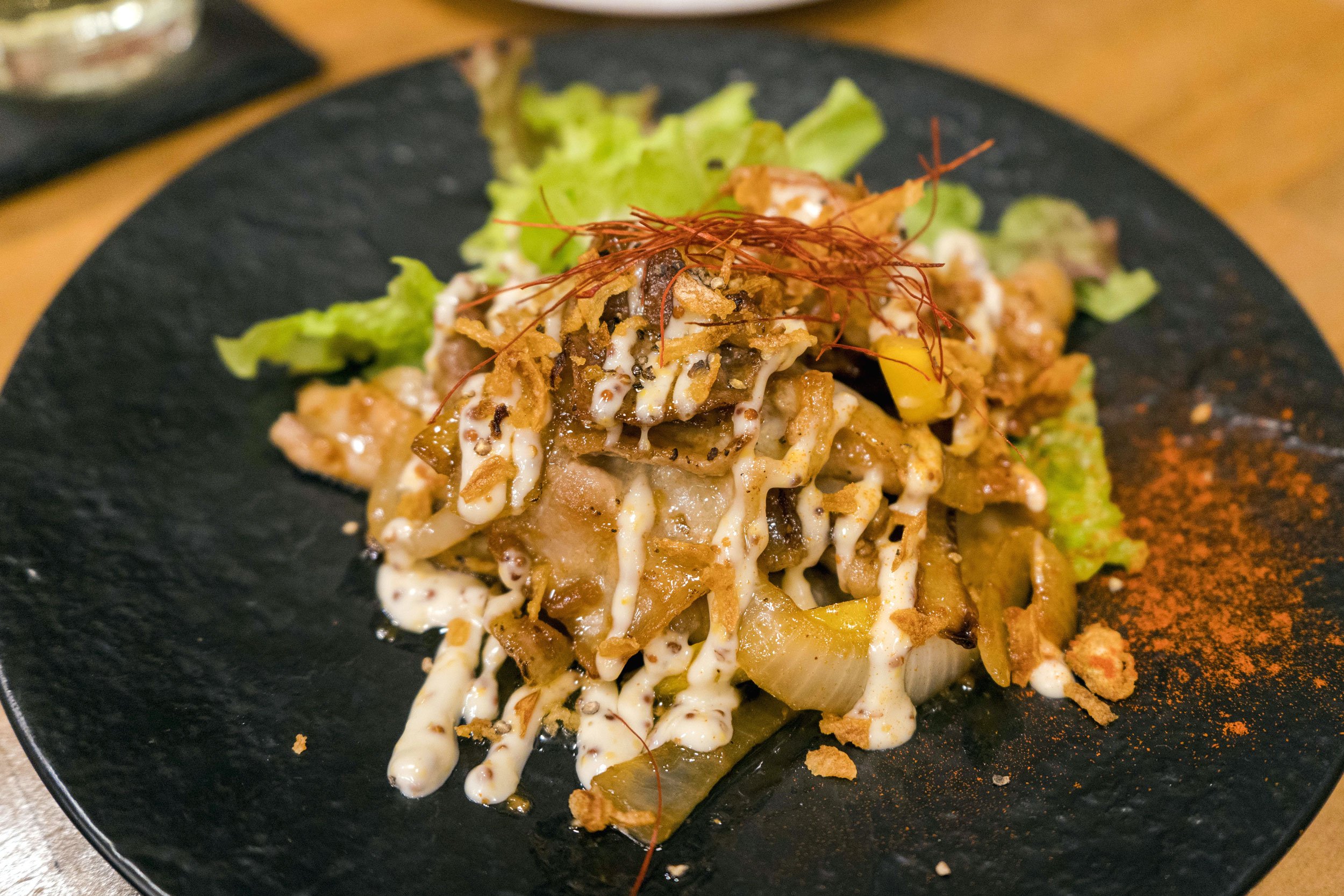
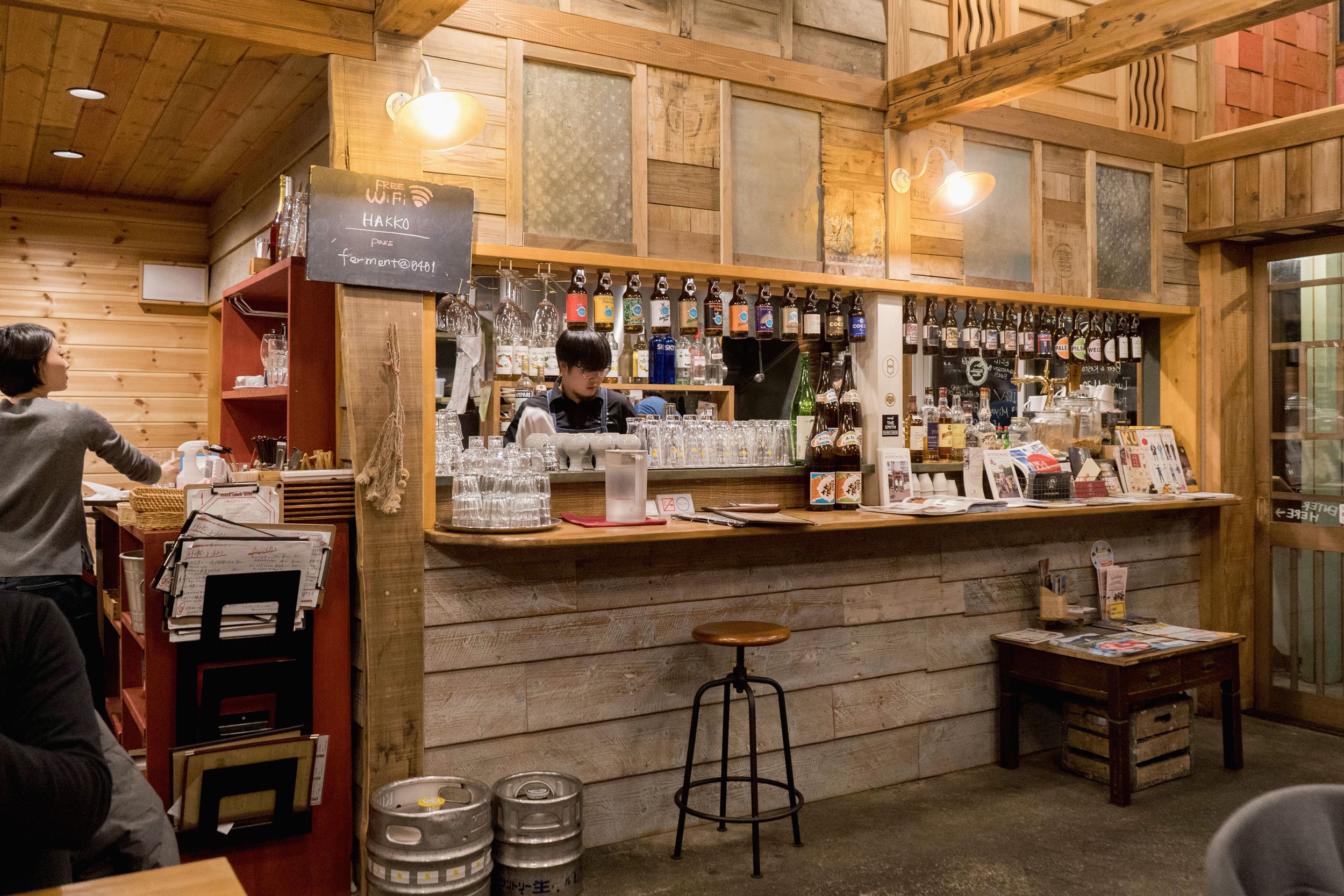
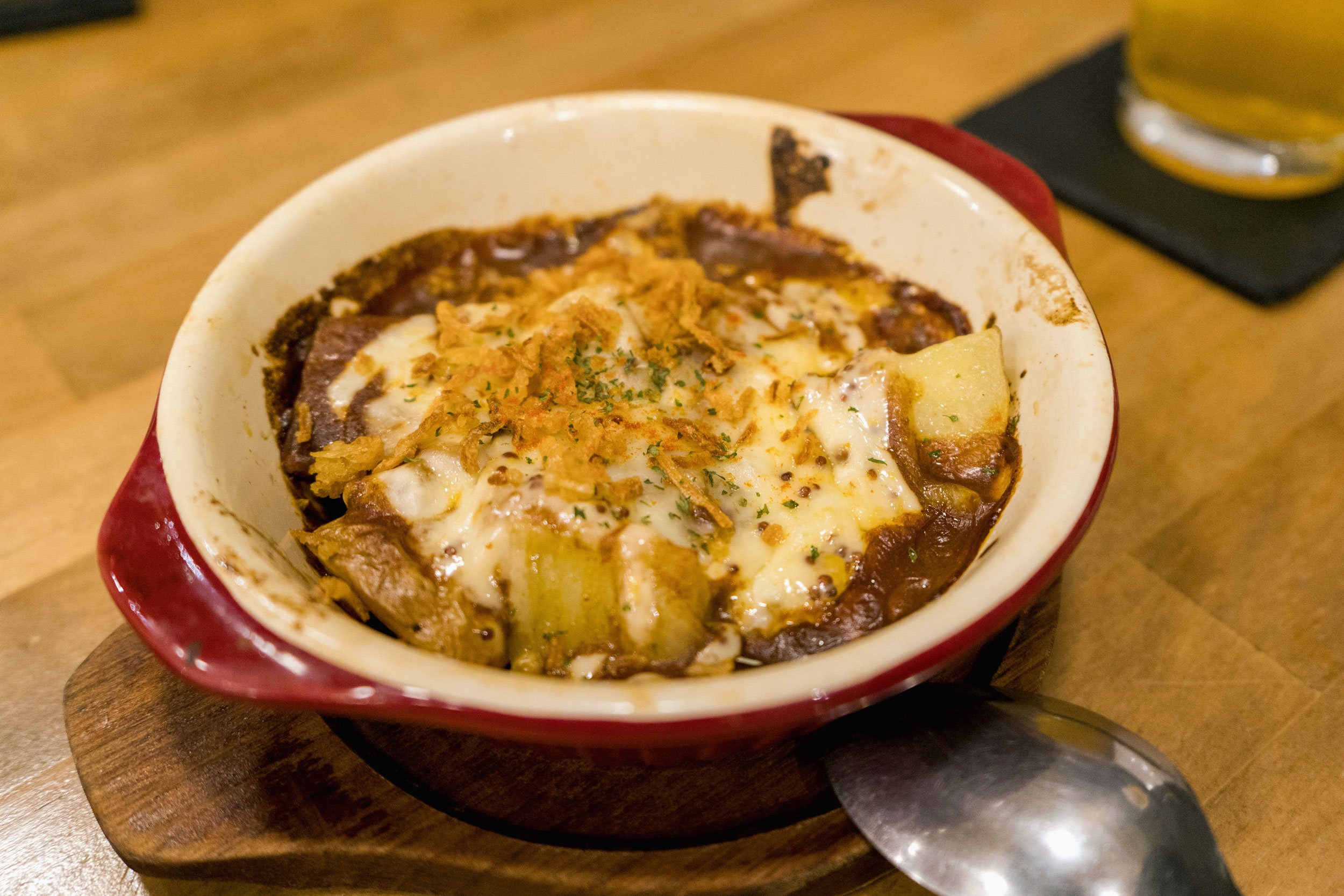
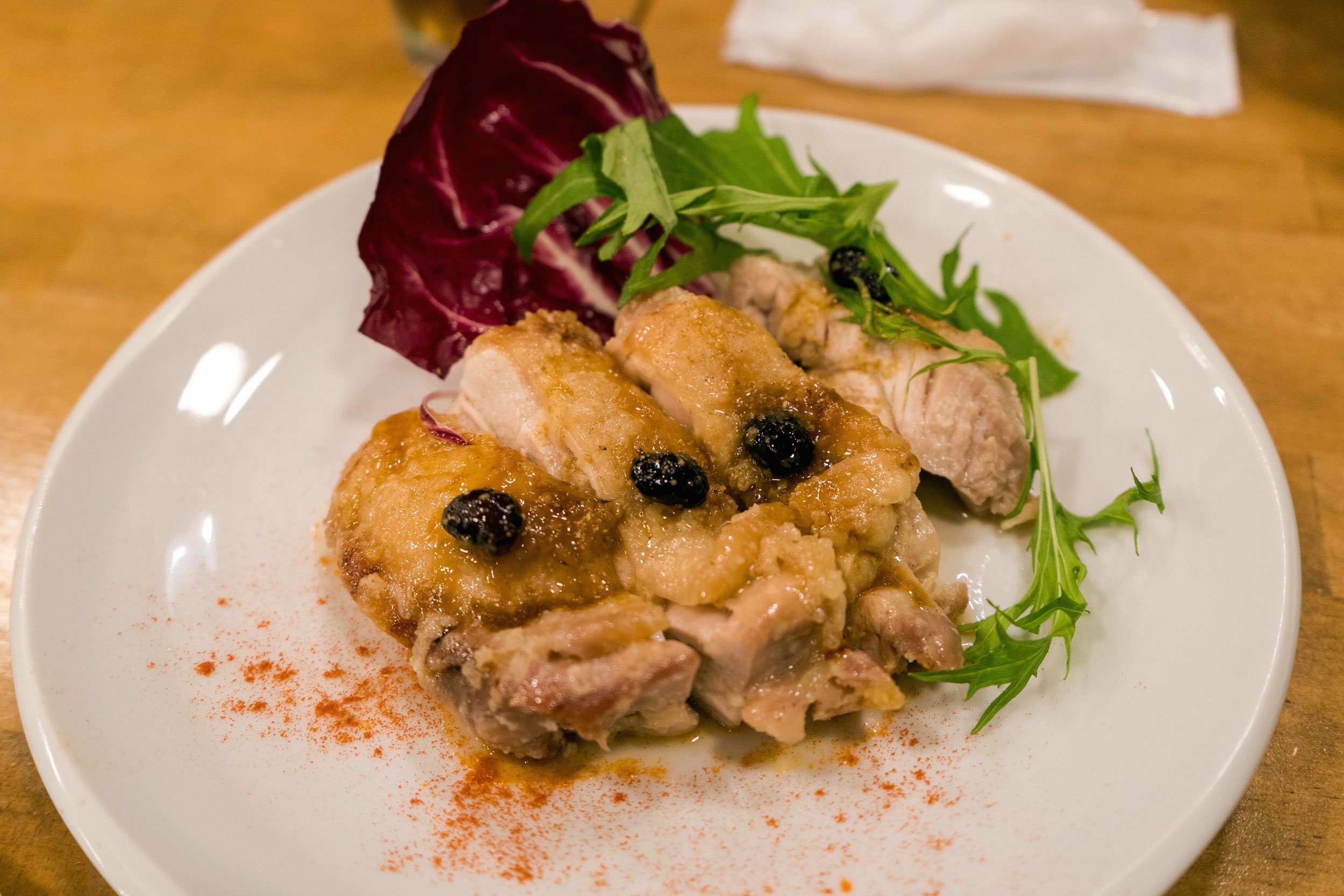
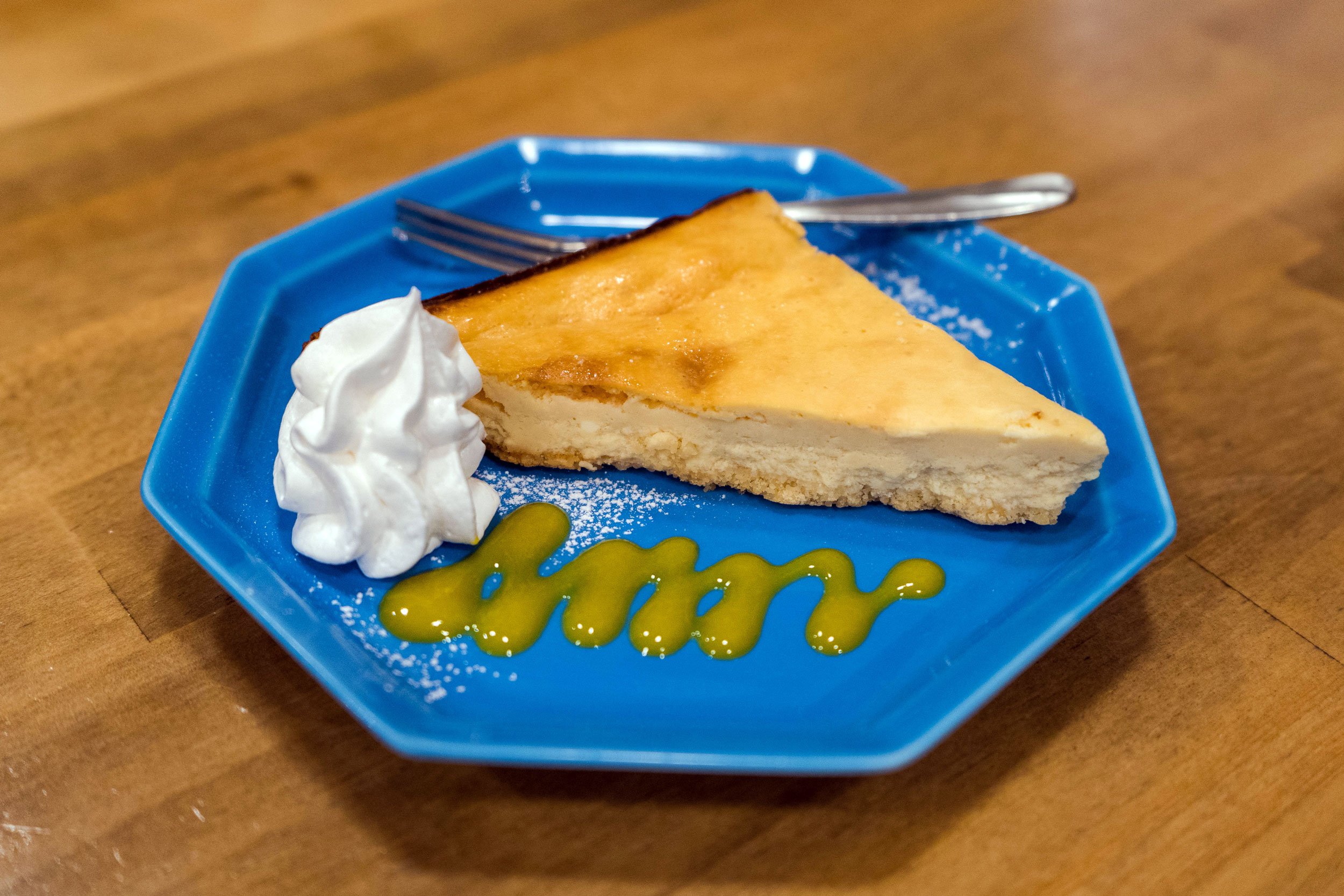
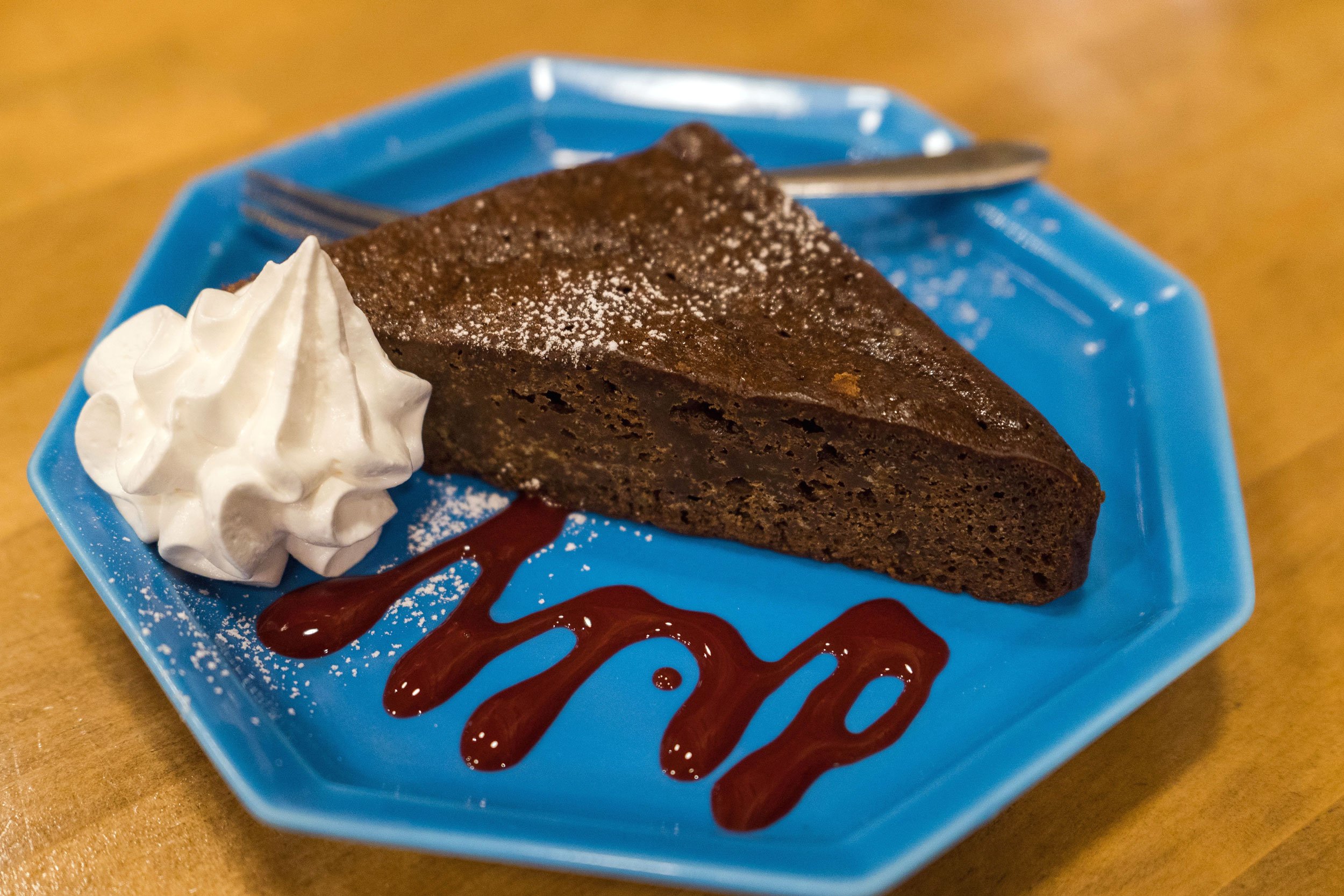
Right down the street from High Quality Hostel AIbiya is Hakko, which is owned by the same owners. Hakko specializes in using fermented foods like miso, soy sauce, sake, yogurt, bread, pickles, malt and cheese. A lot of their dishes uses local ingredients, and they feature local craft beers from Nagano prefecture as well. Dishes like their locally grown grilled pork pickled in sake lees stood out.
ENZA
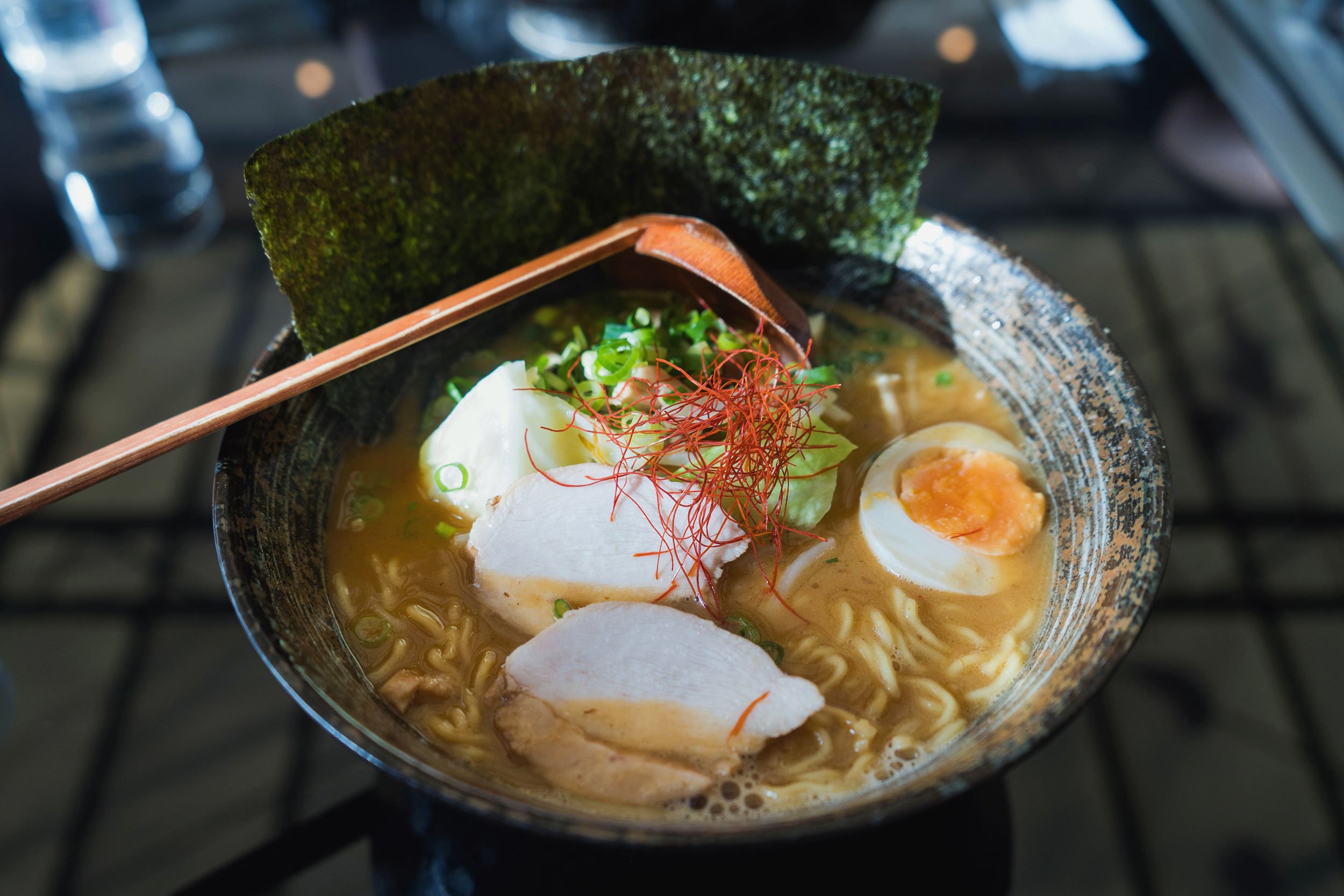
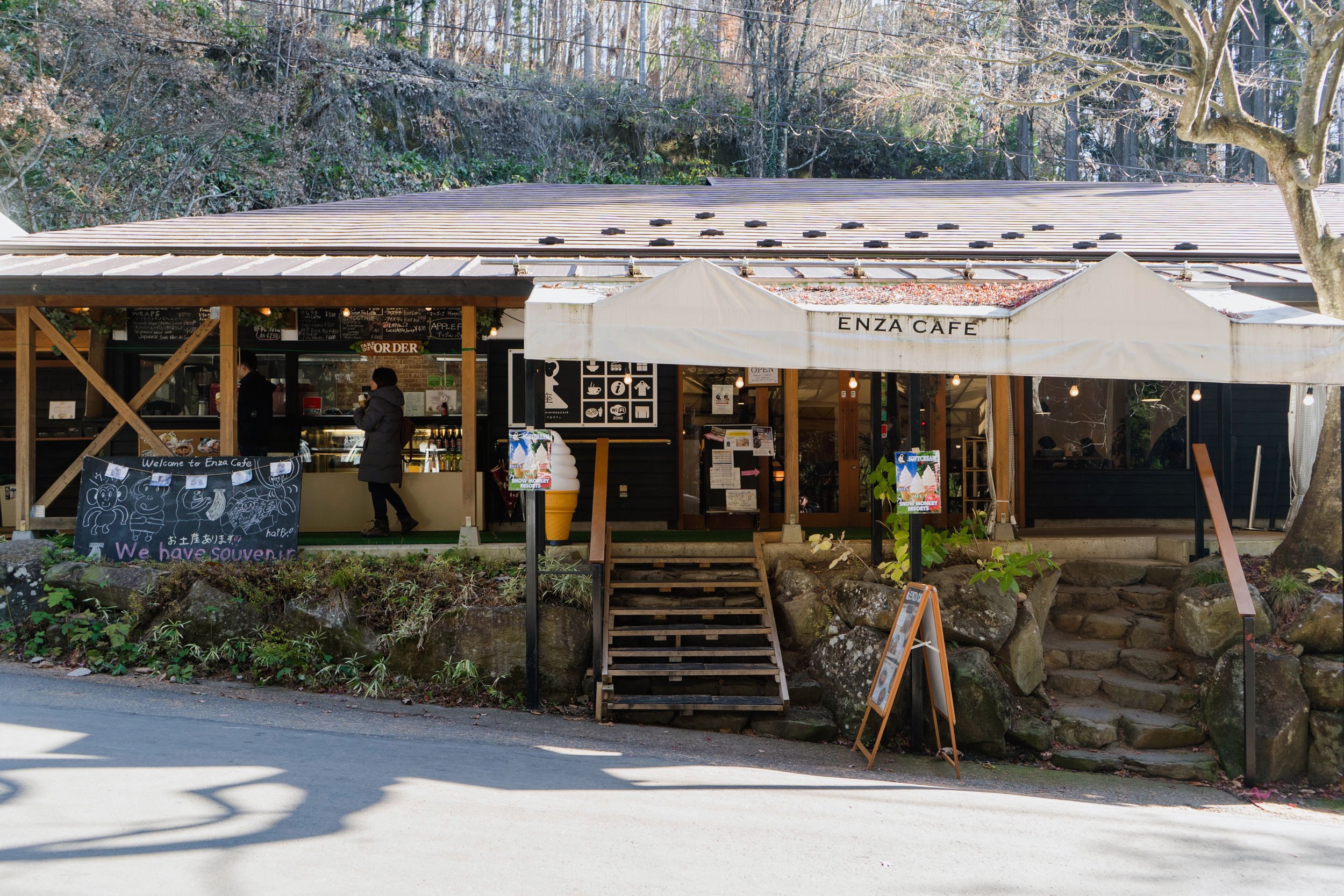
Surprisingly good food for a tourist spot cafe. Enza is at the Kanbayashi entrance to the Jigokudani Monkey Park so it’s a convenient food fix before or after seeing the monkeys. This bowl of local Zenkoji-miso chicken ramen hits the spot on a cold day.
KEEP IN TOUCH:
Other travels:
SHARE:
Matsumoto
A one-day trip to Matsumoto, a city in the Nagano prefecture near the Japanese Alps.
About 2.5 hours from Tokyo, Matsumoto is in Nagano prefecture and has about a quarter million residents
Matsumoto is known for foods like soba and miso, and its ramen style is miso ramen
Artist Yayoi Kusama is from Matsumoto
In the middle of Nagano prefecture around the Japanese Alps is Matsumoto city. I stayed here for a night in late November 2018 and was able to see a little bit of it.
Matsumoto resembles a ski town as it basically is just that. Nagano prefecture is famous for skiing - the 1998 Winter Olympics were held there - and Matsumoto is within an hour of some of these slopes. It’s no surprise that two of its sister cities are Salt Lake City, Utah, and Grindelwald, Switzerland.
HOW TO GET THERE
From Shinjuku station in Tokyo, the Limited Express Azusa and Super Azusa trains are probably the easiest way to get there. They depart from a regular JR platform, pass through areas like Koshu, Yamanashi - an area known for grapes and wine, and reaches Matsumoto in about 2.5 hours. If you sit on the left side, you can catch a few glimpses of the tip of Mt Fuji.
The Ta River, next to Nakamachi Street with old merchant shops
One thing about Matsumoto that I noticed was that people are quite nice. Japanese in general are considered to be polite, but after living in the country for a while, you start to pick up on some differences. The people I came across in Matsumoto were pleasant and laid back, and it’s something I appreciated either when trying to order food or just buying something at the convenience store.
The city’s most famous landmark is Matsumoto Castle.
MATSUMOTO CASTLE
The castle topped our list of places to go. It’s about a 15-20 minute walk from Matsumoto station, so pretty central and convenient.
Its black facade and distinct look makes it stand out from most other Japanese castles which usually have a lighter, white look. The castle, completed in the 16th century, is still in its original form and retains its original wooden structure.
English-speaking volunteer guides are available near the entrance area, and the one that we guided us was happy to share all she knew about the castle and surrounding area.
An interesting fact about the castle is that even though it was never attacked due to being backed by the powerful Tokugawa shogunate, it was almost torn down by choice.
In an attempt to “modernize,” many of Japan’s castles and landmarks were being demolished or auctioned off. There were plans to tear down Matsumoto Castle and it would’ve been if not for the efforts of a couple who opposed this and took action. I find this interesting because this willingness to stray from their own culture because of a yearning for some things Western can still be seen today in Japan. But that’s another conversation.
Even without taking a tour or learning about its history, Matsumoto Castle is worth visiting as it’s unique and just looks pretty badass, to be honest.
https://www.matsumoto-castle.jp
8:30AM – 5:00PM (Last entry at 4:30PM)
After the castle, we caught a taxi to the Matsumoto City Museum of Art.
MATSUMOTO CITY MUSEUM OF ART
One of Japan’s most well known artists, Yayoi Kusama, is from Matsumoto. Because of this, she has a permanent exhibit at the Matsumoto City Museum of Art, and the museum itself is decorated in her signature polka dot art.
The museum itself isn’t big. There are special, temporary exhibits which cost an extra fee, but we went with the regular ticket and saw a couple of the permanent exhibits - Yayoi Kusama’s and a calligraphy one. No photography of the art is allowed, but it was interesting to see that Kusama’s art extended beyond her dotted works that she’s most famous for.
http://matsumoto-artmuse.jp
9:00AM-5:00PM (Last entry at 4:30PM)
Seikando bookstore in a building built in an old architectural style
Being that Nagano prefecture has no area bordering the oceans, seafood isn’t a specialty of theirs. They have it, but local cuisine often centers around miso and meats like chicken and even horse. Traditionally, bugs were also eaten here, something I’d choose to pass on trying.
I’ll leave with sharing some places that I think are worth eating at, but since I was only in Matsumoto for a day, feel free to leave a comment if you have any recommendations!
YAKITORI KIRAKUYA

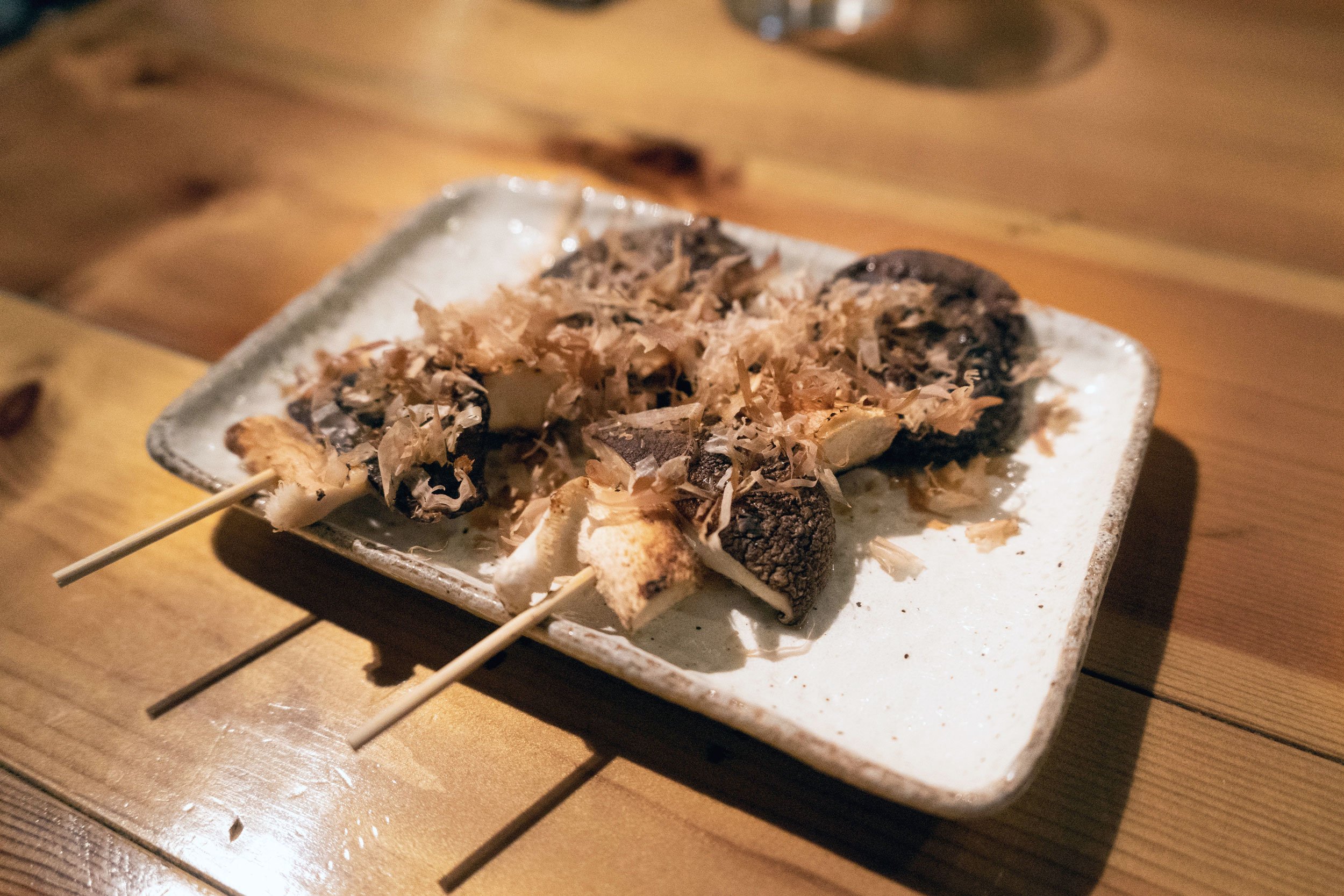
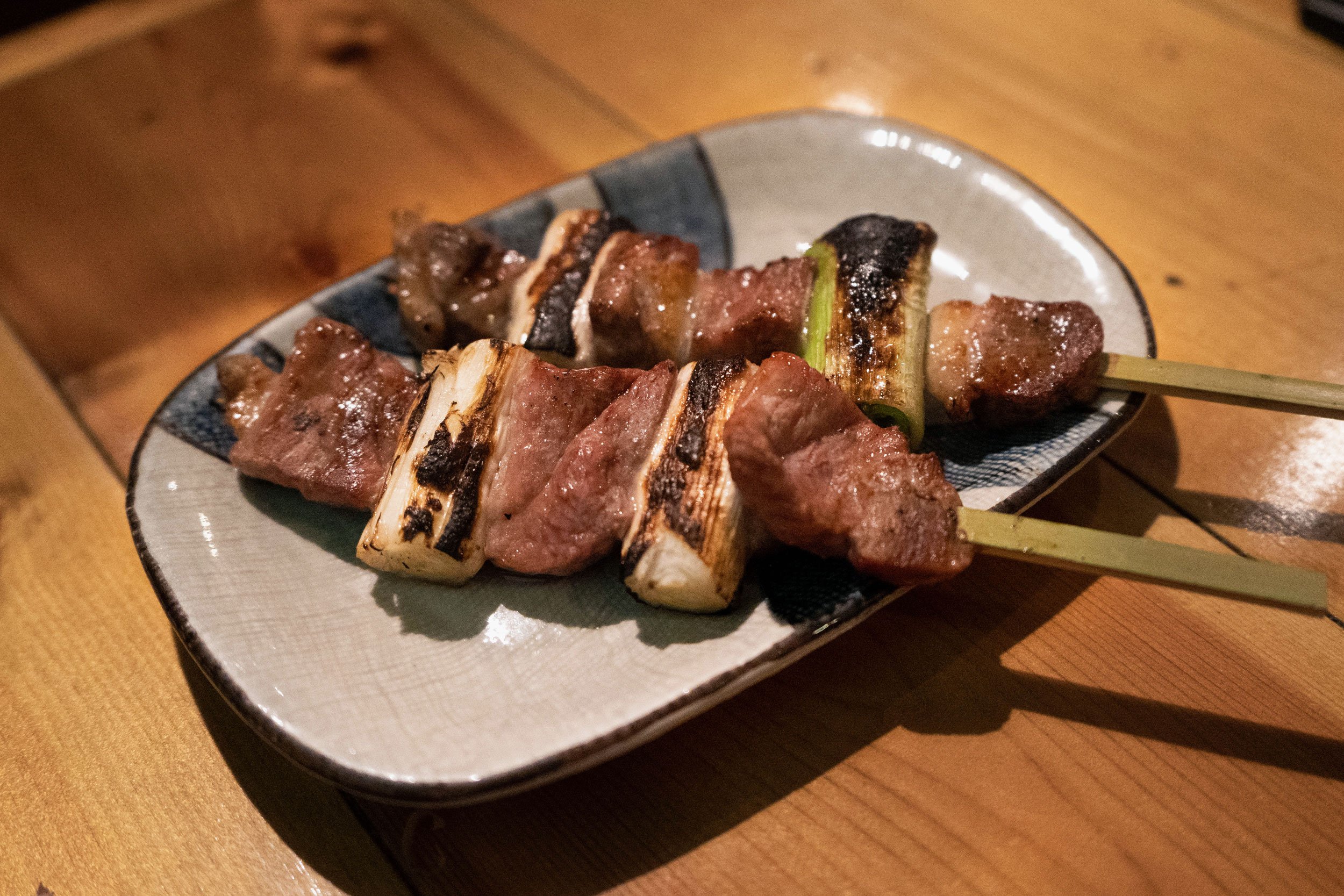
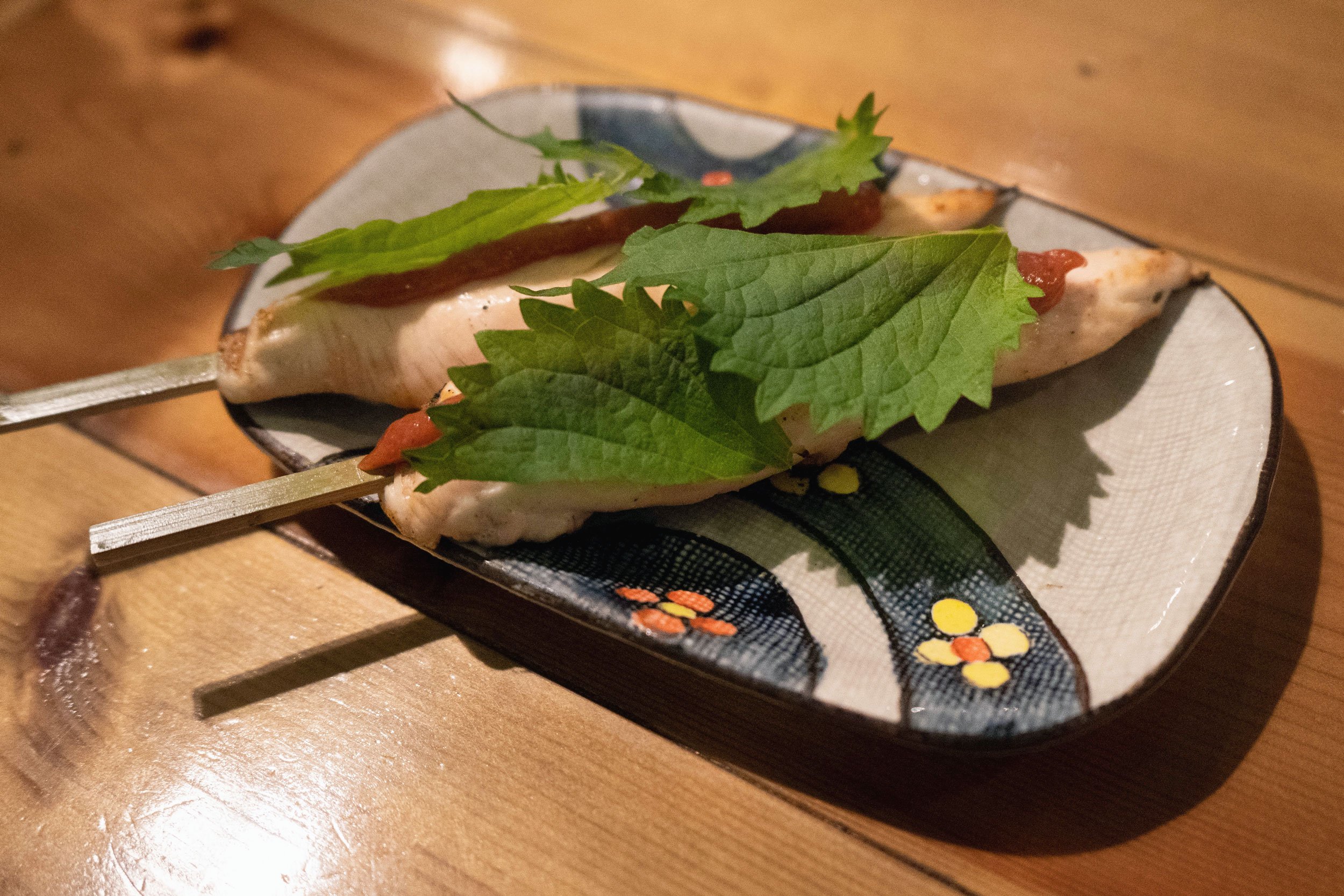
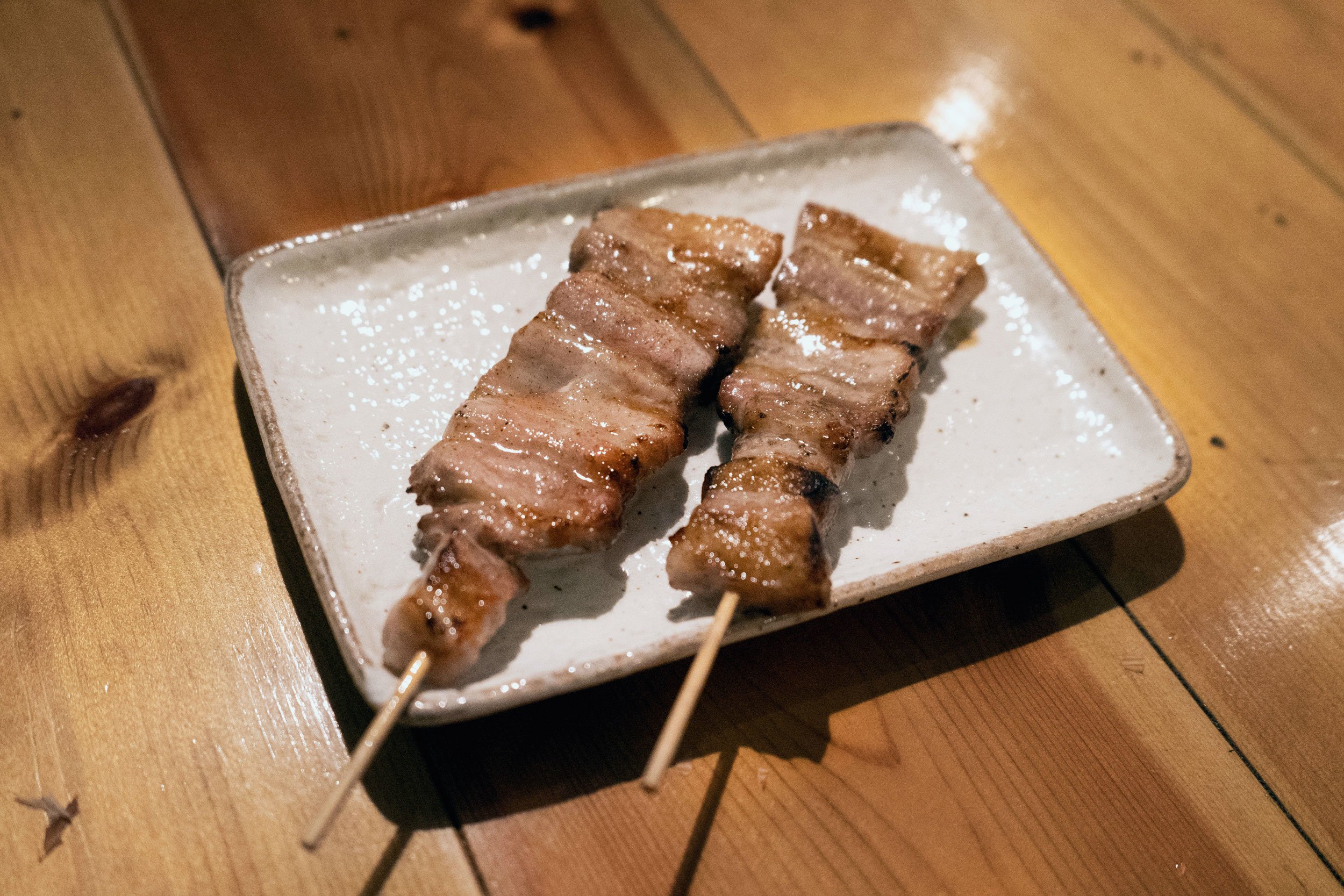
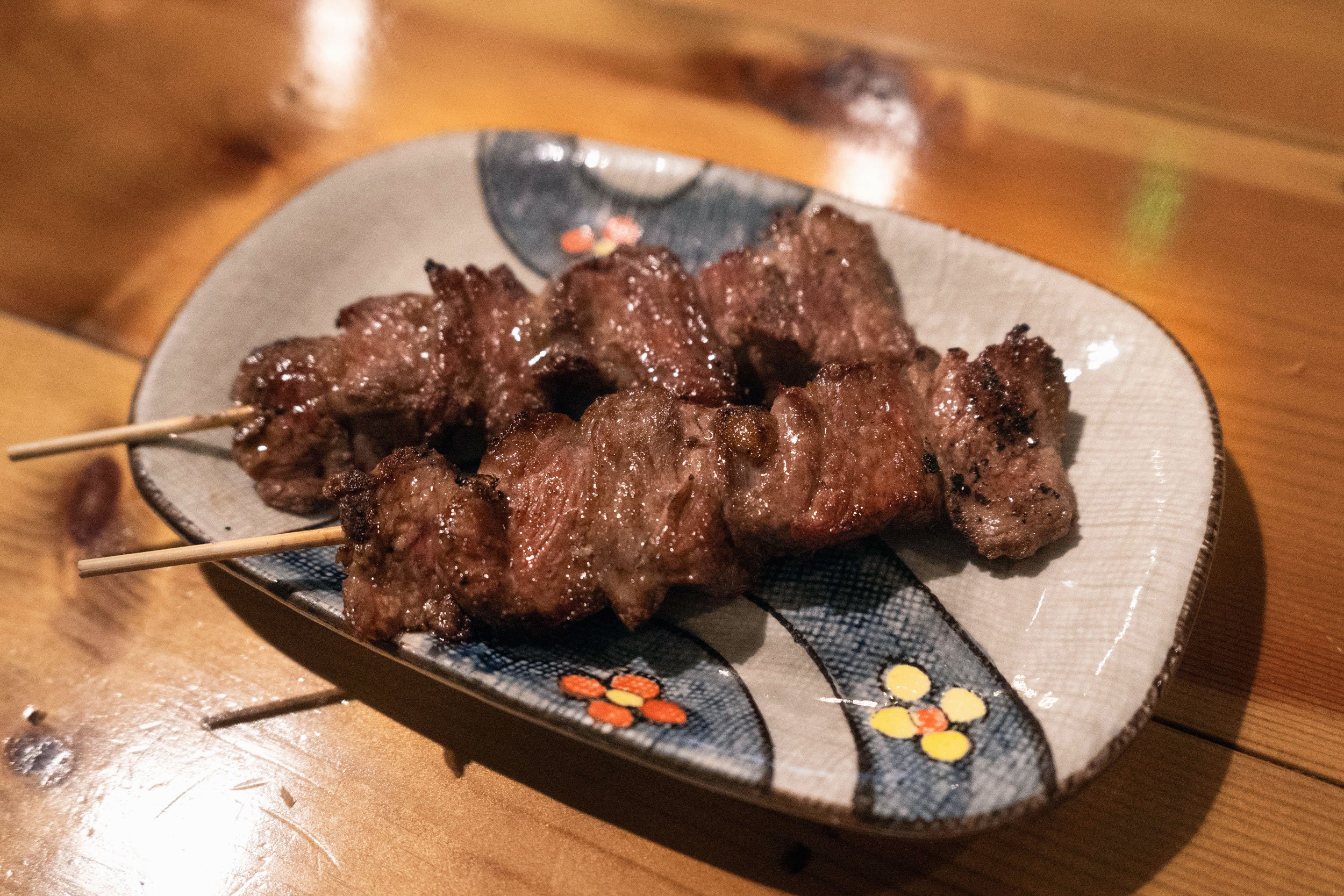
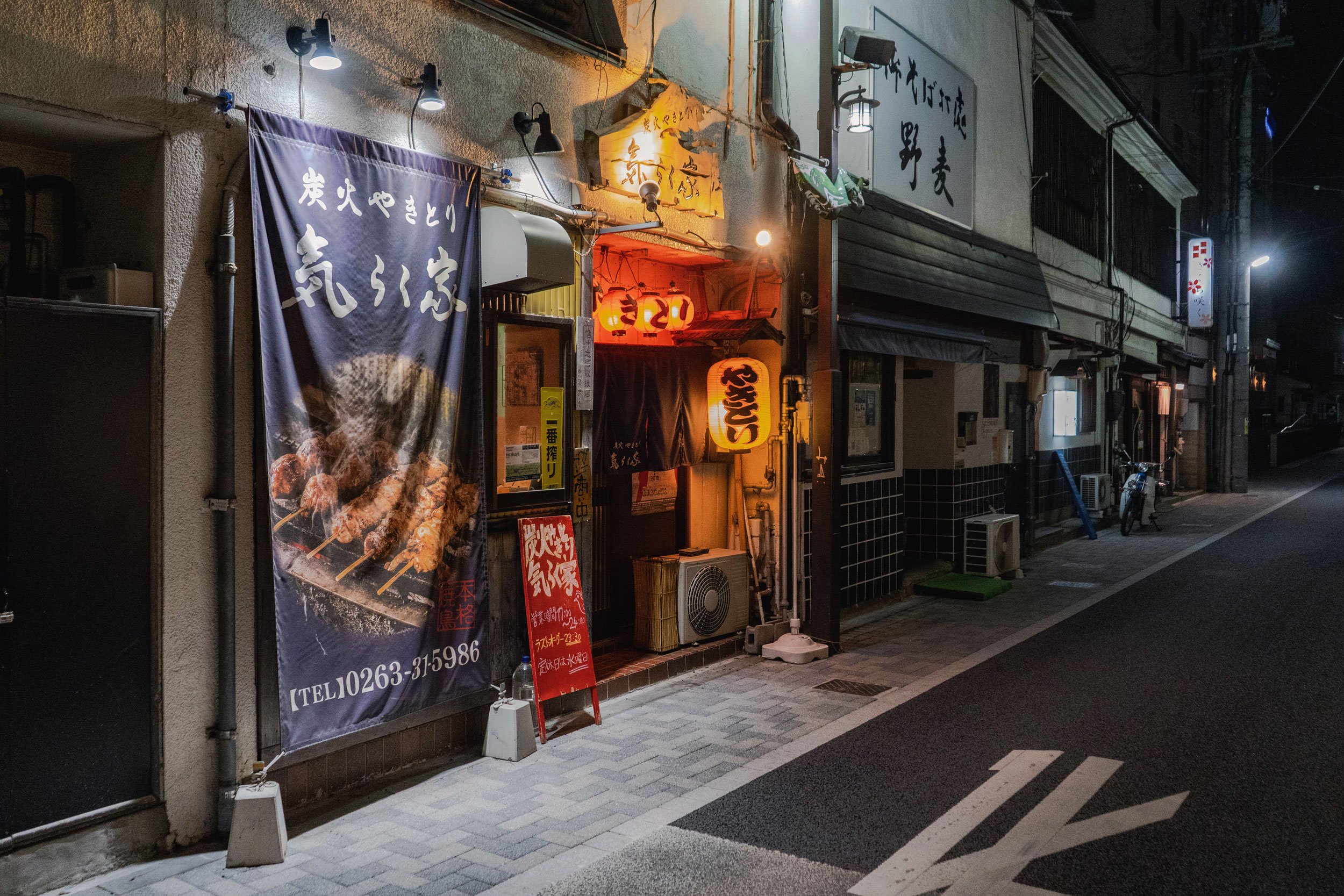
Simply delicious yakitori, some of the best I’ve had, to be honest. Kirakuya is a small, hole-in-the-wall spot with 3 tables and a counter with several seats. They have a good range of yakitori, all of which are fresh and grilled over charcoal. The highlight was their miso pork skewer (first pic) which was unbelievably tasty. Their ume-shiso chicken and venison were some other standouts. Definitely worth checking out.
MENSHO SAKURA
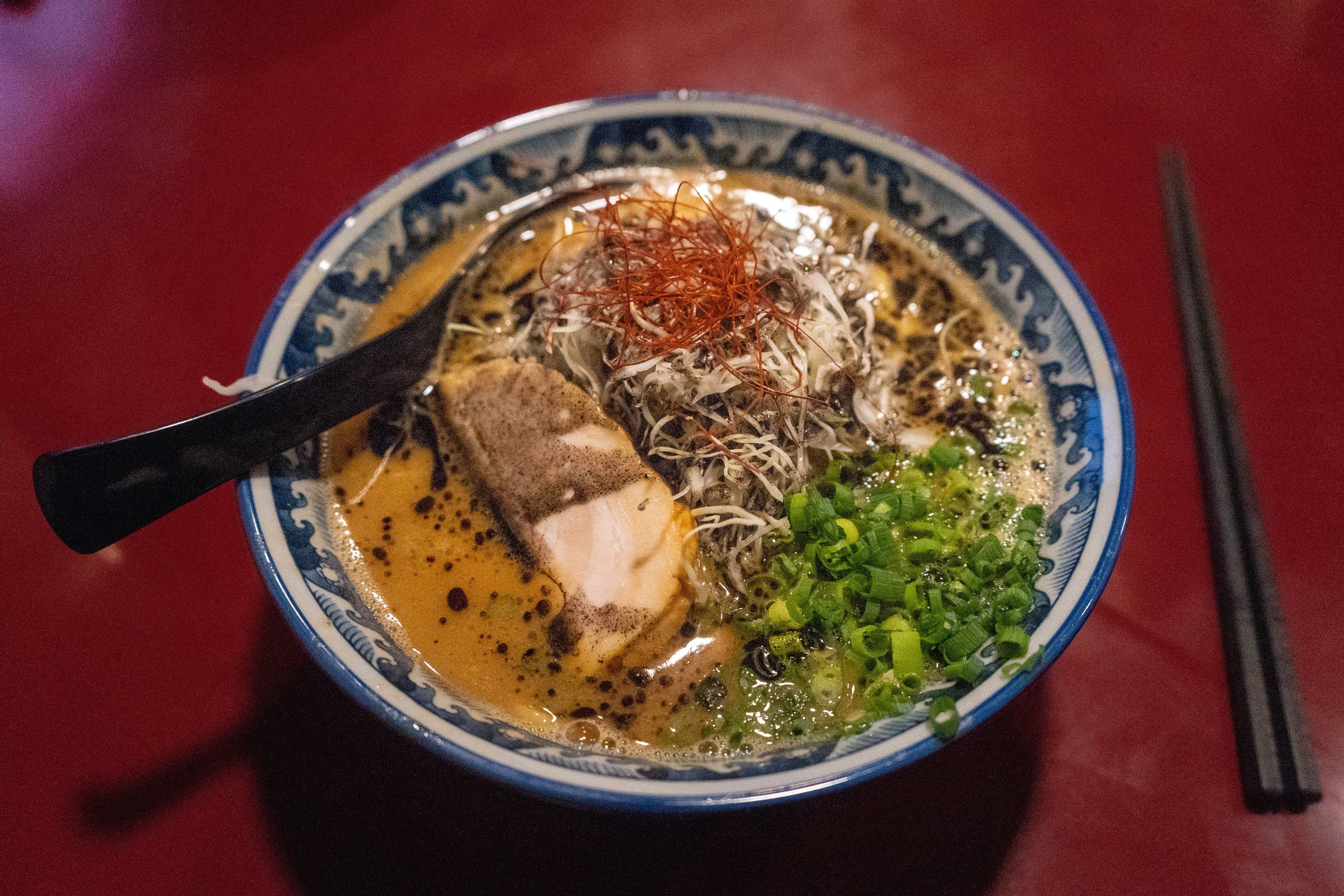

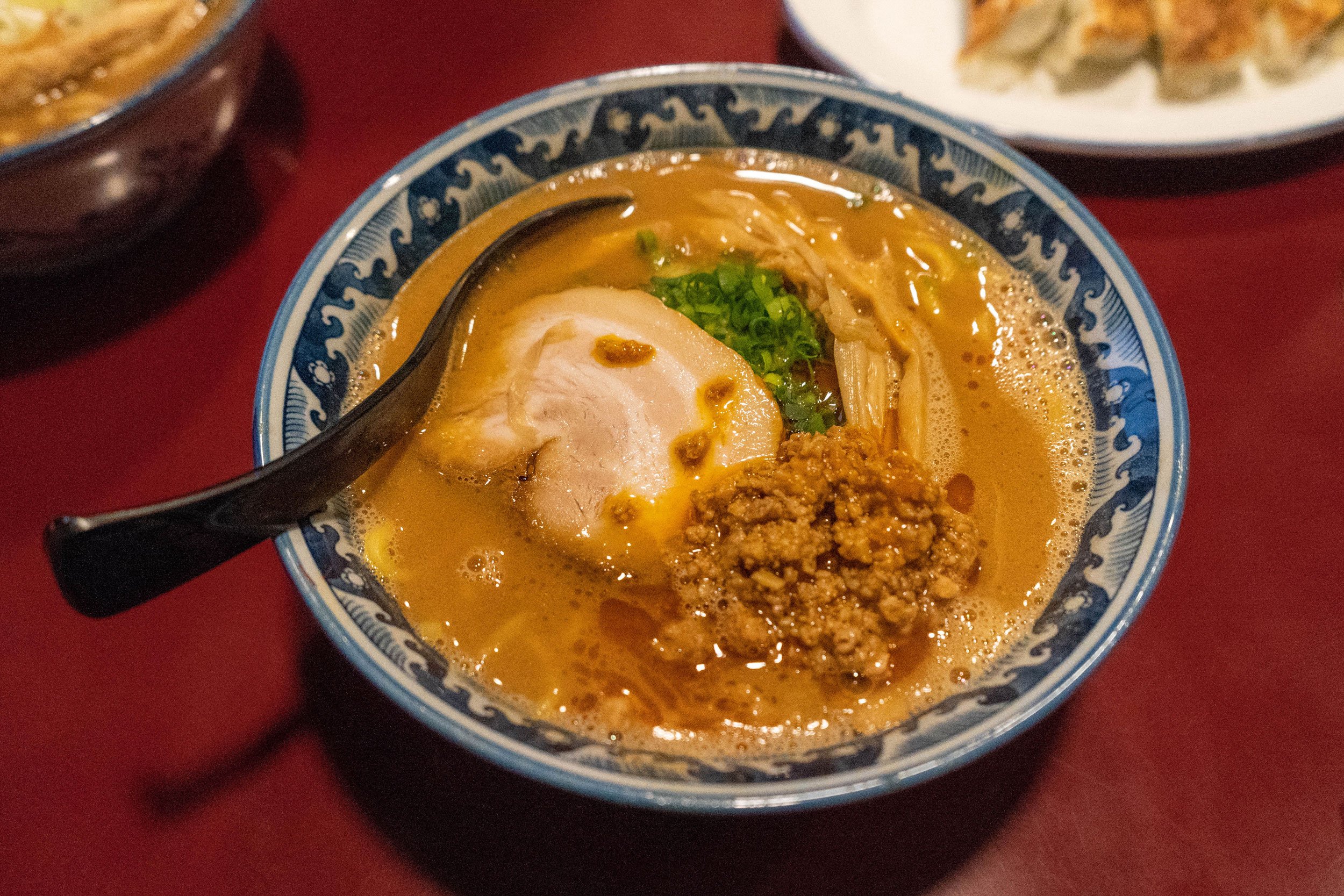
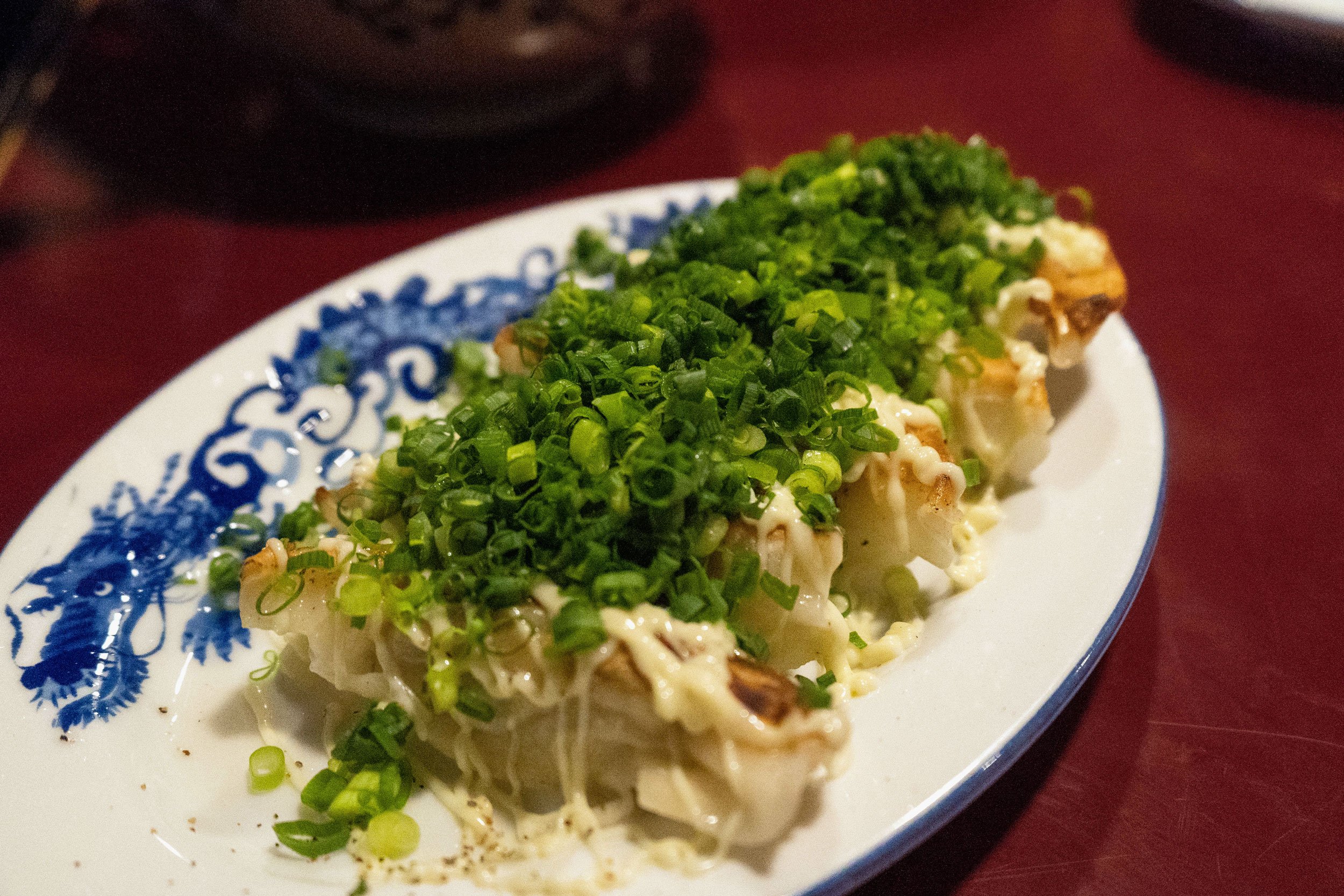
One of the more famous ramen spots in the city, featuring ramen in their local, miso style. Mensho Sakura is located in a converted, old, narrow warehouse, with an attic serving as the second floor. Each ramen was rich in flavor and their noodles were on the thicker side. I had a black kuro-miso ramen with black, garlic sauce added in. Yum.
HOP FROG CAFE
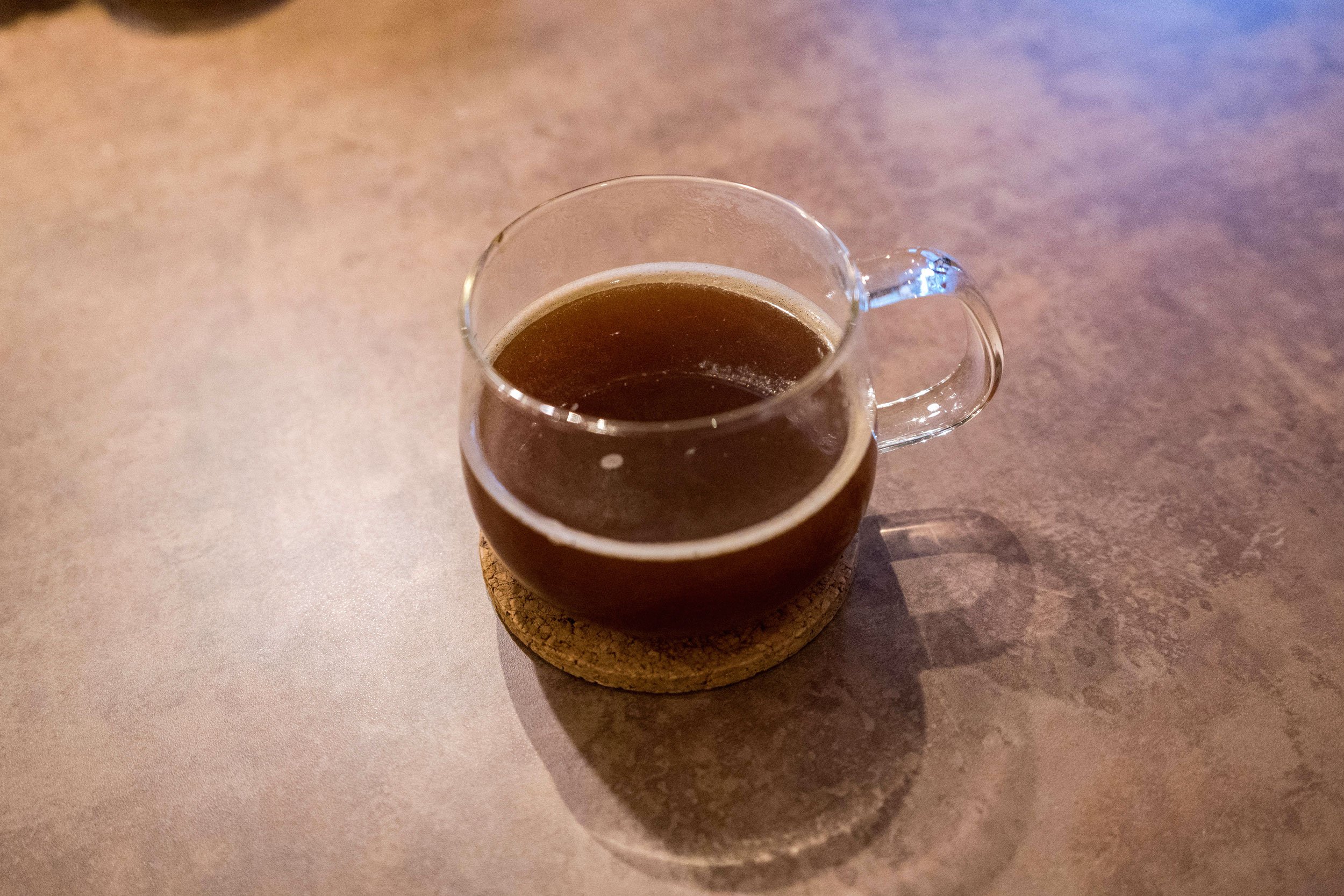

Craft beer and craft coffee in a shop that feels like a ski lodge. Hop Frog Cafe is run by a man and woman and is a short walk from the Matsumoto City Museum of Art. English is completely fine as the man is fluent, having went to college in Iowa. There’s a variety of coffee blends to choose from, and you can decide if you want it filtered to bring out more of the oils or not. Friendly place and a really nice find.
http://hopfrogcafe.biz [J]
KEEP IN TOUCH:
OTHER TRAVELS:
SHARE:
Kyoto: Fall Spots
Japan’s fall colors are absolutely beautiful, and Kyoto is one of the best places to go for them.
The best season to see Kyoto? Fall, especially if the leaves are at their peak.
I’ve been fortunate enough to visit Kyoto during this season a few times and it’s absolutely amazing. Japan’s cherry blossoms tend to get all the attention, but being amongst the colorful leaves in late November is one of Japan’s most beautiful, and probably underrated, sights to see.
Eikan-do Zenrin-ji
Basically, it’s like being surrounded by a painting. Describing the fall leaves around Eikan-do Zenrin-ji as beautiful is an understatement. The breathtaking rainbow color combination is really vibrant and such an incredible sight to see.
I’ve seen the leaves here in both day and night, and both times they blew me away. It gets pretty crowded, understandably so, but it’s completely worth the wait and the cost of about 600 yen to enter.
The line at night starts on its northern, Shogaku-in Temple side for the night viewing. We waited for about a 1-1.5 hours which was a small price to pay for this incredible sight.
Kiyomize-dera
Kiyomizudera’s fall leaves illuminated at night
Kiyomizu-dera’s fall leaves are beautiful in the daytime, but their biggest impact is at night.
A line forms down Matsubara-dori street [MAP], one of the central streets that lead up to the temple’s entrance. It can get pretty long but it moves pretty quickly. We lined up at around 6PM and were in around 30 minutes later. It’s not free but will only cost a few hundred yen.
The areas around the main stage of Kiyomizu-dera become an impressive orange, with a tunnel of the colorful fall foliage covering the walk along the path after it. Towards the end, bright red leaves frame the tower and also reflects over a small lake.
This light up is completely worth it and a must for anyone in Kyoto during that time.
Fall leaves at Kiyomizudera in Kyoto
Kitano Tenmangu
One of the more underrated shrines in Kyoto for sightseeing is Kitano Tenman-gu. Two reasons: One, their Tenjin-san flea market - which I wrote a little about here - that extends for blocks and blocks on the 25th of each month, and two, their maple tree garden in the fall that extends around the temple itself.
They have an illuminated night event which I haven’t seen, but their daytime views are nothing to overlook. Colorful walks throughout their pretty extensive garden, plus some green tea and Japanese snacks to go along with it. It’s also less crowded as other popular areas which is a huge plus.
Arashiyama
The bamboo forest is what Arashiyama is most known for but there are some nice fall colors that can be seen as well, especially on the mountainside next to the river. There’s no entrance fee or anything, just walk the riverside and enjoy the view.
The Hozugawa-kudari boat ride is also a good option as it’s a traditional boat ride down the river where more fall foliage can be seen. If you’re interested, I talked a little bit about the ride here.
Tokufu-ji
The view from Tsutenkyo Bridge, a 100 meter long landscape of lush, fall colors is one of the more popular sights in the city during this season.
While we only made it to Tokufu-ji just before their early closing at 4:30PM, I was able to catch a glimpse of the bridge’s view. It’s definitely something to see as the bridge puts your view just above the treetops..
Kinkaku-ji
It’s the golden pavilion that attracts everyone to Kinkaku-ji, but fall is an especially nice season to visit because there are pretty fall colors to be seen.
There’s a bunch around the temple’s grounds with most of them on the opposite side of the pavilion where everyone stands to take photos. There are also nice, colorful combinations that appear along the path after the golden pavilion area.
Byodoin Temple
One of the nicer temples to visit when traveling in Kyoto. Byodoin Temple sits in the middle of a garden area in the Uji area, and visitors take a walk that loops around the grounds.
Even if you can’t see all of them, you won’t go wrong with picking any of these places. There’s a lot more in Kyoto as well, but out of the ones that I’ve seen personally, I enjoyed these the most.
There’s not a lot that can rival the cherry blossoms in Japan, but their fall leaves just might.
Keep in touch:
More travels:
Seoul, Korea
A first taste of Seoul’s hot spots, historical sights and delicious foods.
Maybe the most familiar-feeling new country I’ve ever visited.
Seoul had been near the top of my “places to go” list for nearly a decade and I finally went for the first time in October 2018.
While it made me feel like I’ve been there before, there still were a few surprises that would’ve been nice to know before.
Things to keep in mind
Google Maps isn’t as useful - locations are scarce, often don’t translate from Korean, and don’t contain detailed information
There’s a lot of walking - With limited escalators in train stations and trains being long themselves, there’s more walking to the exits
Many restaurants close early on weekends, like fully closed at 8PM on a Saturday night early
NOTE: Seoul has amazing food. If you’re looking for food recommendations, skip to the bottom or check out my list:
Seoul at sundown
It was my first time in Korea, so I was surprised that I felt almost as if I had been there before.
Having lived in Japan and the US, being in Seoul felt somewhere in between the two. It’s very much its own country of course, but I never felt lost or like everything was so foreign to me.
Like much of America, the city has wide streets and their cars drive on the right side of the road. It has clean trains, modern lights and buildings along with really local, street-style eateries like Japan. Getting around in English is fine most of the time, and the convenience stores could rival their Japanese counterparts. Even spicy, fried chicken wings with beer is a thing. Not so different at all!
Sungnyemun Gate
We had about 2.5 days and 3 nights, which gave me a nice sample taste of the city. These are the places we visited during that time:
Day 1
Myeongdong
The Myeongdong area is geared slightly towards the younger crowd and has a lot of shopping with shops for skincare, trendy fashion brands and even lookalike knockoffs. The abundance of lights and street food vendors make it a lively place until around 11PM.
We actually went to Myeongdong three times during our stay; once for a delicious oxtail soup lunch at Sinseon Seolleongtang (information at the bottom) and the other two times at night. A lot of the street foods looked good, but being so full from all the other good food, I was only able to try a frozen s’more - a torched marshmallow with ice cream inside. Thumbs up.
From Myeongdong, we caught the light blue line and transferred to the orange line at Chungmuro station and went to Gyeongokgung station for the Gyeonggokgung Palace.
Gyeongokgung Palace
One of the major historical sights in Seoul is the Gyeongokgun Palace, originally built in 1395. It’s now one of the most popular tourist stops and many wear traditional (or the more glittery fake traditional) Korean dresses and walk the area.
The palace was a bit crowded when we went at around 4PM in the afternoon, despite it closing only a little while later at around 5:30PM. The grounds are big, and it would probably have taken at least a couple hours if we really wanted to see everything. We only went around the central are before moving on.
From the palace, we walked over to Bukchon Hanok Village.
Bukchon Hanok Village
Probably one of my favorite places in Seoul. It’s a historical neighborhood on a hillside near Gyeongokgun Palace that dates back to about 600 years ago.
You can catch a glimpse of the city’s skyline, including Seoul Tower, from some of the alleys. The walking alleys are lined with tiled walls, and the dark rooftops add contrast to the scenery. It was quite crowded when we went, and everyone had to keep quiet as people still lived there. Historical, yes, but I loved how photogenic it was.
At the bottom of the hill are a bunch of boutiques and places to eat.
From Anguk station, we caught the orange line and transferred to the dark blue line at Jongno 3-ga station, before getting off at Jongno 5-ga for dinner at Jinokwha Halmae Wonjo Darkhanmari (see below). It’s only one station away from the next place we went to, the DDP.
Dongdaemun Design Plaza (DDP)
I could probably stay here all day. The Dongdaemun Design Plaza, or DDP, was designed by Zaha Hadid and it just about transports you to the future. Looking like a landed spaceship in the middle of shopping area Dongdaemun, the entire building almost has no corners and some of its surface tiles light up at night.
The DDP has shops, exhibitions and acts as a park area to hang out. It also has an illuminated LED rose garden that’s quite beautiful at night. The building area is not only gorgeous but is also useful and clearly very well thought out - one of the most impressive sights I saw on my trip. I’d likely find myself here often if I lived in Seoul.
Near Seoul station and Hoehyeon station is Namdaemun market, an open street market area with Korean snacks, clothes, food stalls and more.
We grabbed a yachae hottoek - a vegetable and noodle-filled, pancake snack deep fried in soybean oil - at the famous food cart Namdaemun Yachae Hottoek [MAP] before stopping for some bibimbap in an ally full of bibimbap stalls.
From Hoehyeon station, we caught the light blue line to Chungmuro, then transferred there to the orange line which took us across the river to Apgujeong station.
Sinsadong / Apgujeong / Cheongdam
A neighborhood in the wealthier Gangnam district, this area has a lot of shopping boutiques.
The vibe is a bit different from the northern side of the river as it has more mid to high end fashion shops and upscale cafes. There were apartments by Korea’s major corporations, each with parking lots mostly full of European cars. It was no surprise when we saw a Starbucks Reserve shop here in place of the more common Hollys Coffee that’s around the city.
From this area, we decided to take a taxi to the COEX mall. Taxis are pretty frequent - the orange ones are said to be the most reliable.
COEX
COEX is a combined convention center / exhibition hall / shopping mall. It’s huge, and its underground shopping mall is apparently the world’s largest.
One of the things it’s most known for is its Starfield Library (pictured above), a picturesque atrium area with bookshelves reaching a couple stories high. There’s also a large art installation of PSY’s “Gangnam Style hands” on the street level on its eastern side, right around here [MAP].
https://www.starfield.co.kr [KR]
Catching a taxi again, we flagged one down on the street and caught it to the Lotte World Tower.
Lotte World Tower
I’m always looking for a nice view of whatever city I’m in, and Lotte World Tower has one of the best in Seoul.
Lotte is one of the most well known Korean companies as they make everything from chewing gum to burgers. Lotte World is a huge entertainment complex with a theme park and shopping mall, and the Lotte World Tower, the tallest building in Seoul, is right there as well.
The view from the tower is amazing - you can see Seoul in any direction from about 120 floors up until about 10PM. They also have a sky deck, and their elevator is a smooth, one-minute ride that features a 360-degree virtual experience while in it. Impressive.
From Jamsil station next to the Lotte World Tower, we caught the green line back to the hotel before heading out to dinner at Gwangjang Market.
Gwangjang Market
A food stall at Gwangjang market in Seoul that serves san-nakji or “live” octopus.
Another one of the major street food markets in Seoul, Gwangjang Market is known for foods such as yukke (raw beef with raw egg) and san-nakji (“live” octopus). They’re both really good. A lot of people, locals and tourists alike, come here for some street food and soju.
The stall we sat at was run by one of the veterans, a lady operating in a tiny space 3ft by 3ft at best that fit the sink, refrigerator, cutting area, trash - everything. She didn’t speak any English, but her stall was very popular and she was attentive to everyone while being really hospitable. She even decided to feed me my first bites of everything, leaving me no time to question my decision to order what I did.
Seoul was a great trip. There’s so much to see and service was generally pretty good. Growing up in the US, Korean restaurants aren’t known to have the friendliest service, so I was pleasantly surprised at how warm and friendly it was in Seoul.
With English being often understood, a decent amount of western products being sold in stores, and Seoul being a big city but not overcrowded like Tokyo or Hong Kong, I think Seoul makes for a great trip, especially for western tourists who haven’t been to Asia before. And the food… the food is amazing.
I’ll be back!
Sinseon Seolleongtang
Really good oxtail soup still boiling in the pot. The seolleongtang oxtail soup st this chain was really good, and there’s unlimited kimchee at the table for your taking. Service is quick and efficient. We went around noon for lunch and there was a line - it’s quite popular and has been featured in a Korean drama - but the line moved really quickly and was totally worth it.
Jamaejip
Near the Gwangjang Market area is an ally with restaurants featuring yukke - raw beef with raw egg. You mix it together and dip it in a sesame oil sauce. It might take some time to get used to for people who’ve never had it, but it’s definitely worth it. Jamaejip had two locations next to each other and both were full when we went on a weeknight. The wait wasn’t too bad and it was a good time joining the locals for some yukke and soju.
Jinokwha Halmae Wonjo Darkhanmari

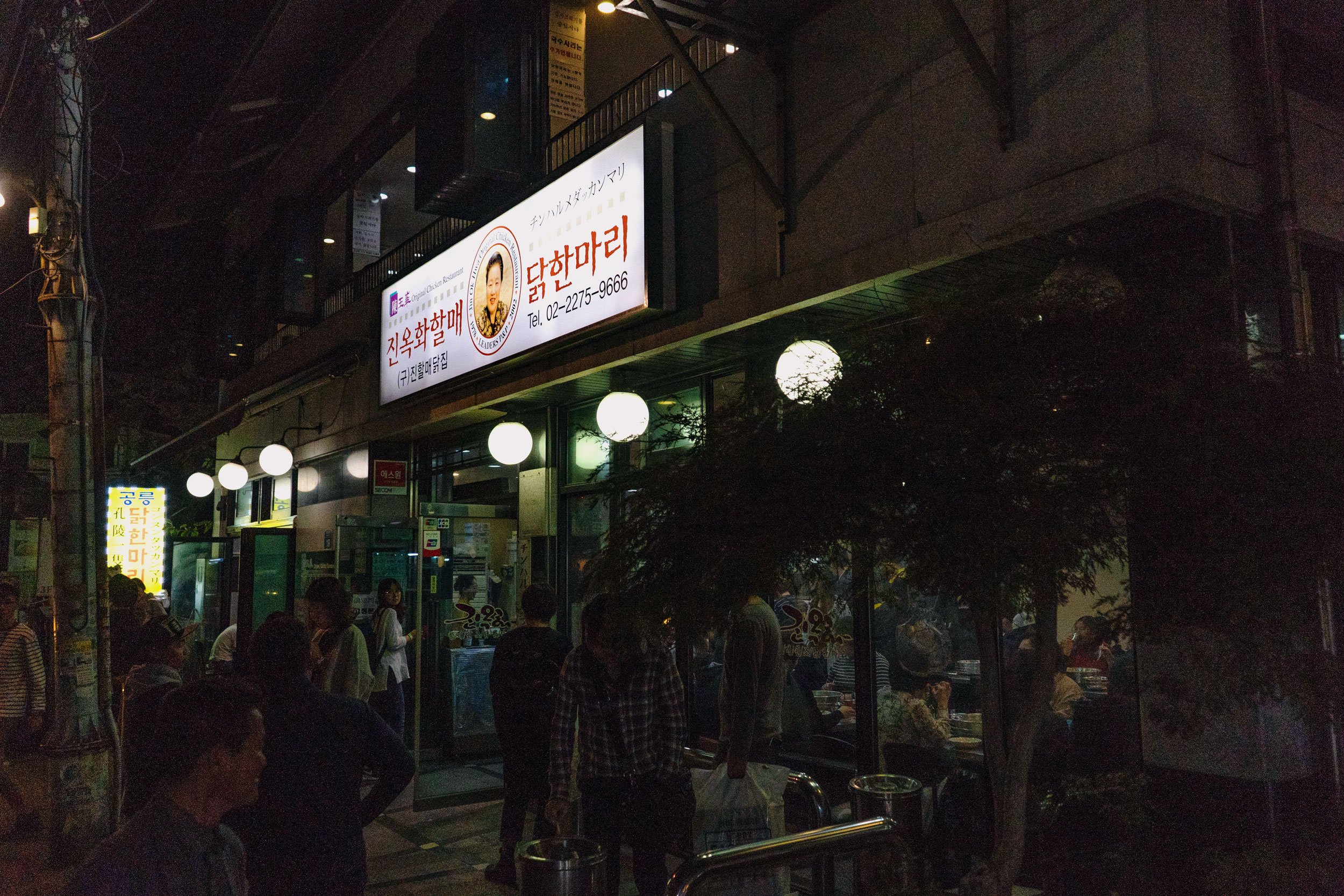
This restaurant only serves one dish: Chicken hot pot. They put a pot on your table’s burner and your chicken and vegetable Star to cook. It’s your job to mix your dipping sauce and order extras like tteokbokki if you want. While it’s so simple, it’s so good. There was a large crowd waiting to be seated outside, but with 3 floors of tables, the wait wasn’t that long at all. You could go to the neighboring restaurants serving the same thing, but you can’t lose with this place.
BHC
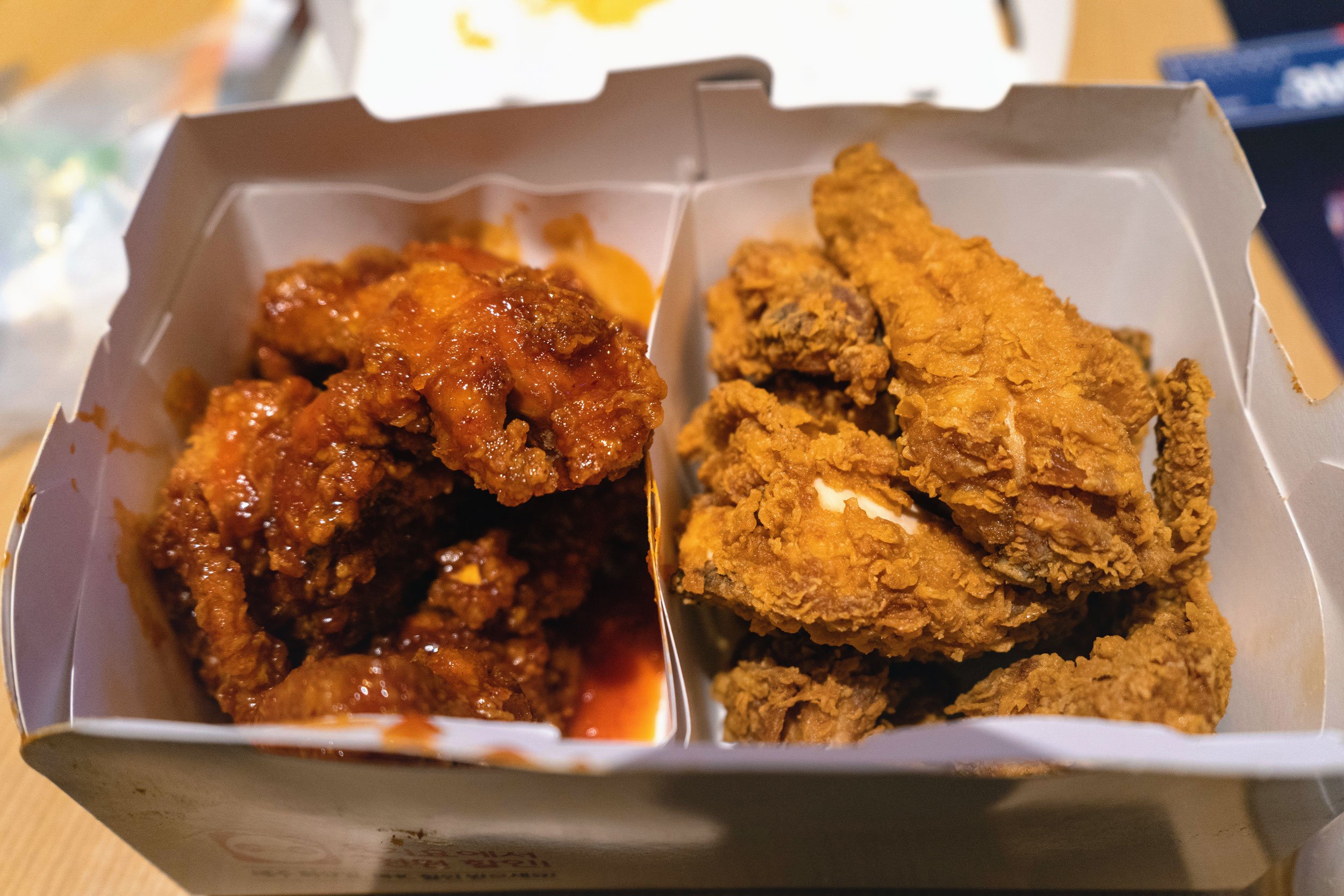
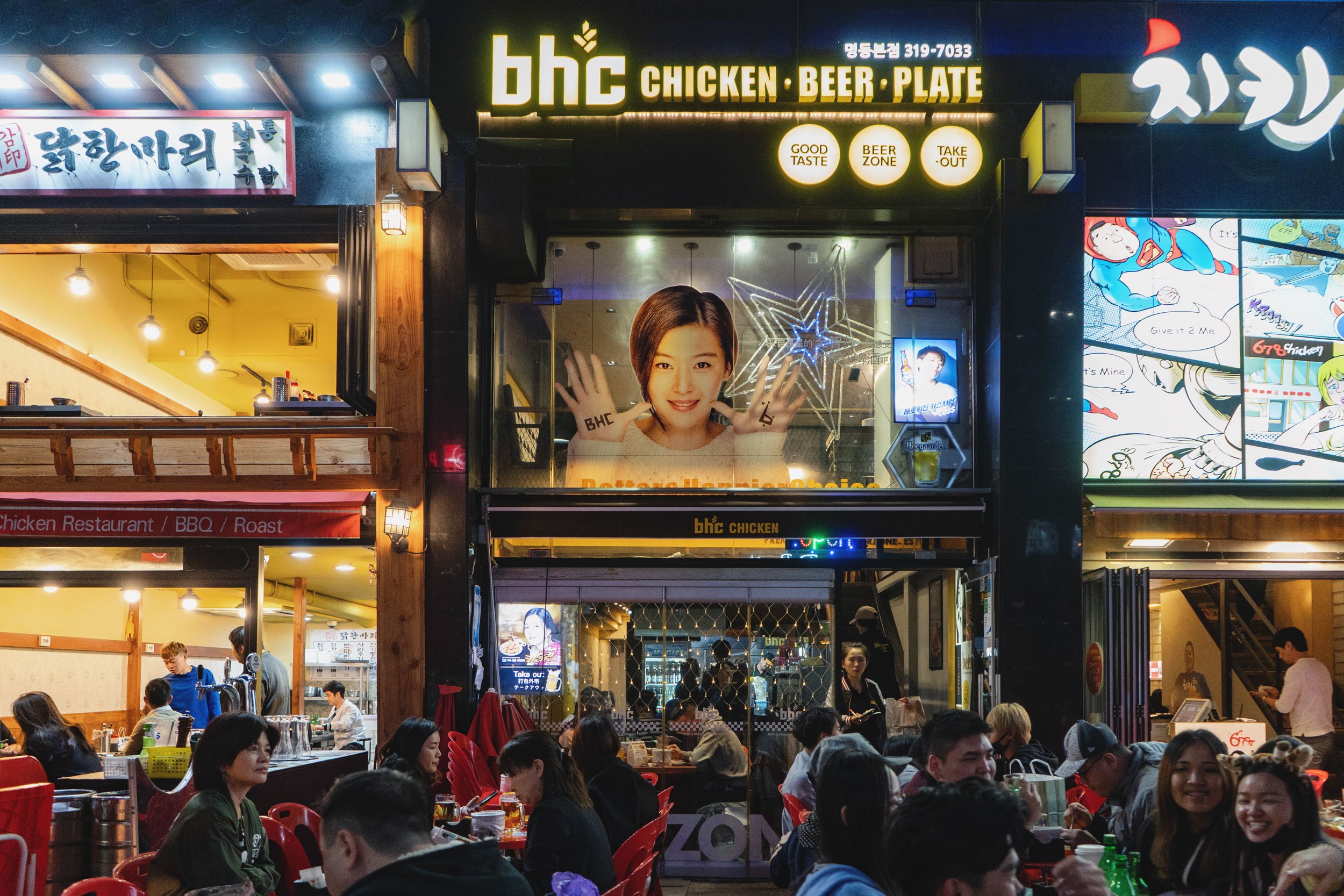
Fried chicken and beer is a thing in Korea. I didn’t expect I’d be having something like this as a part of my Korean food experience, but I did, and wow, it was really good. There’s so much flavor in each bite, especially their spicy ones. People eat on the outside tables and drink, but we took out. Either way, delicious and recommended.
Gallery SAI - By Creative Art Group SAI
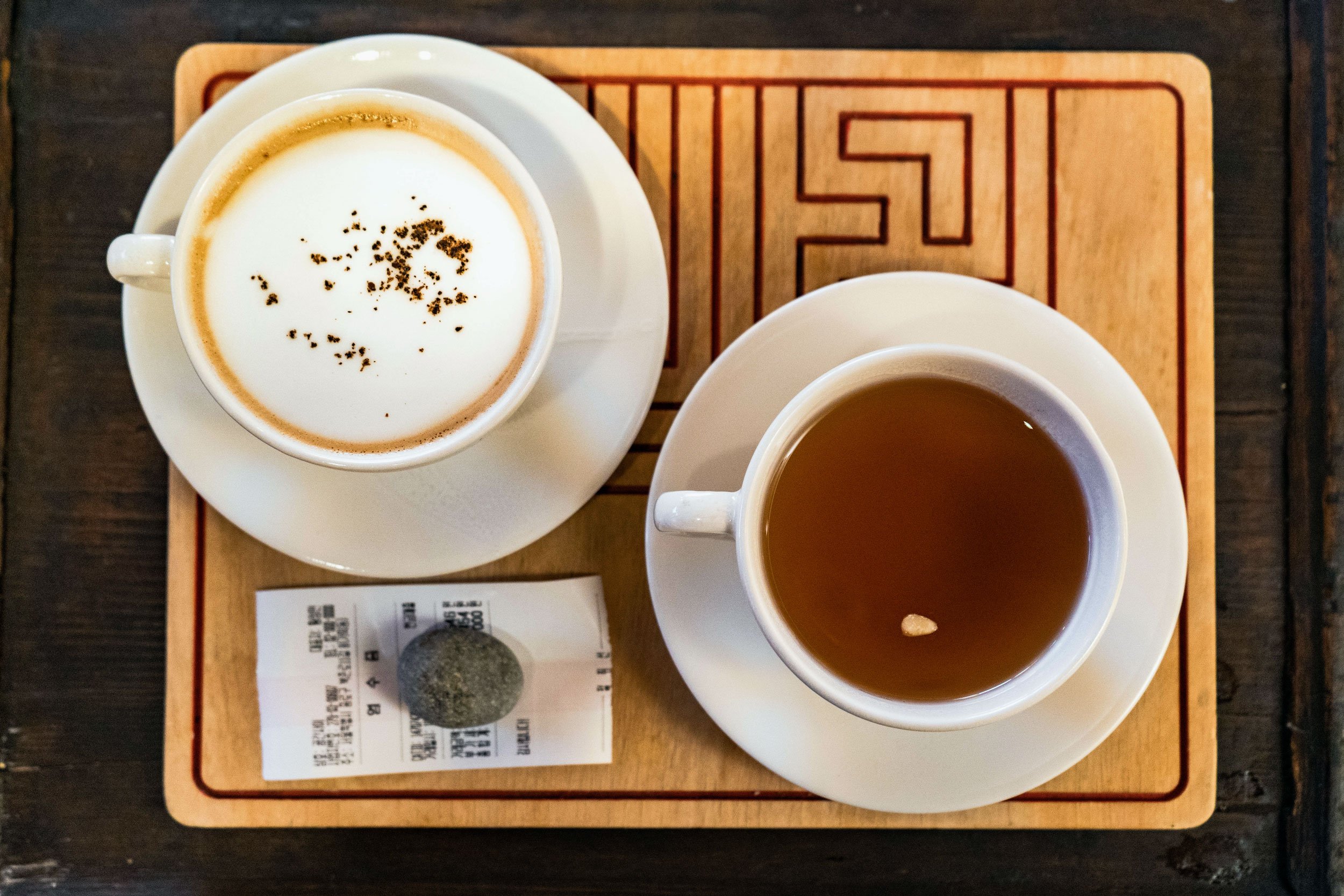
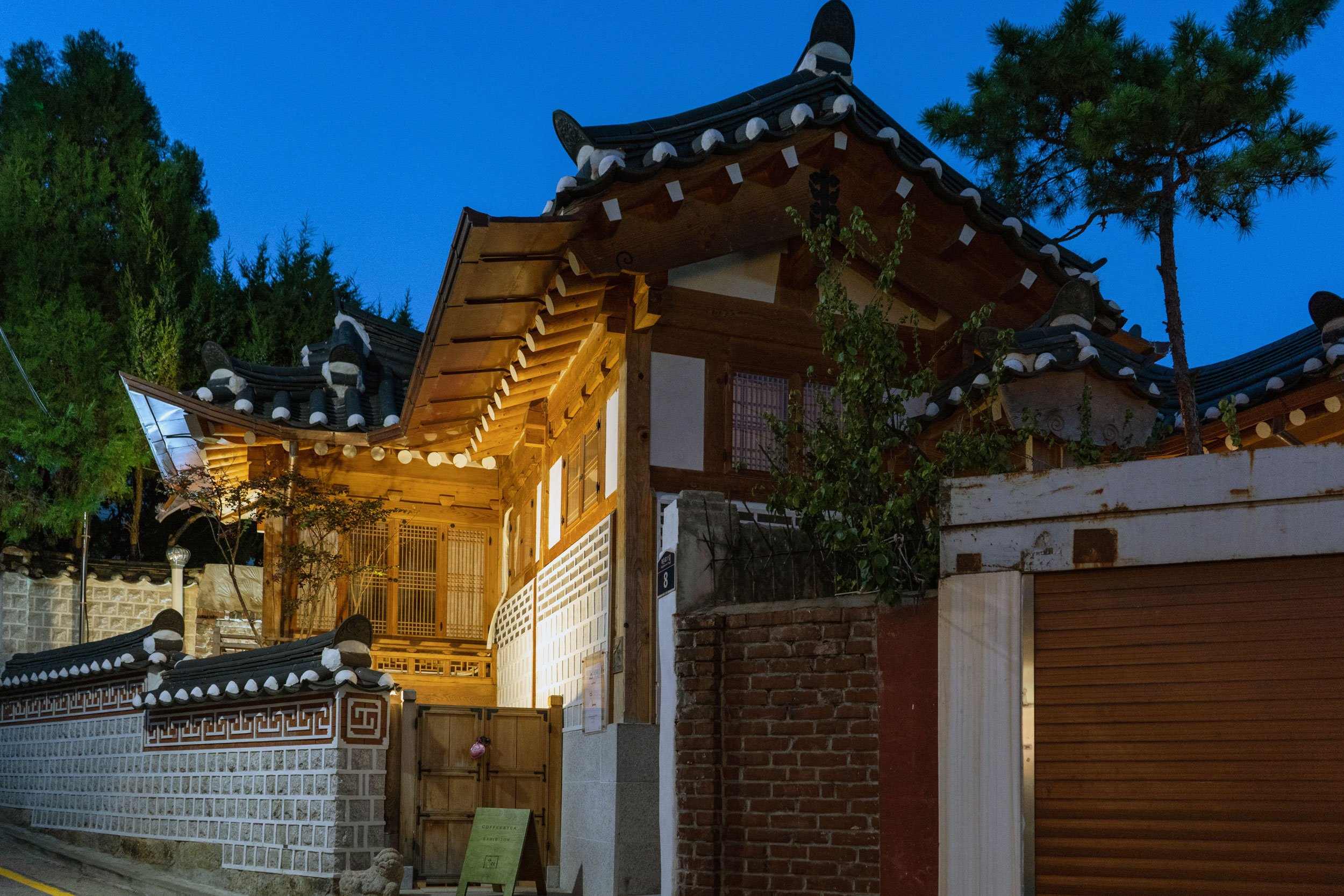
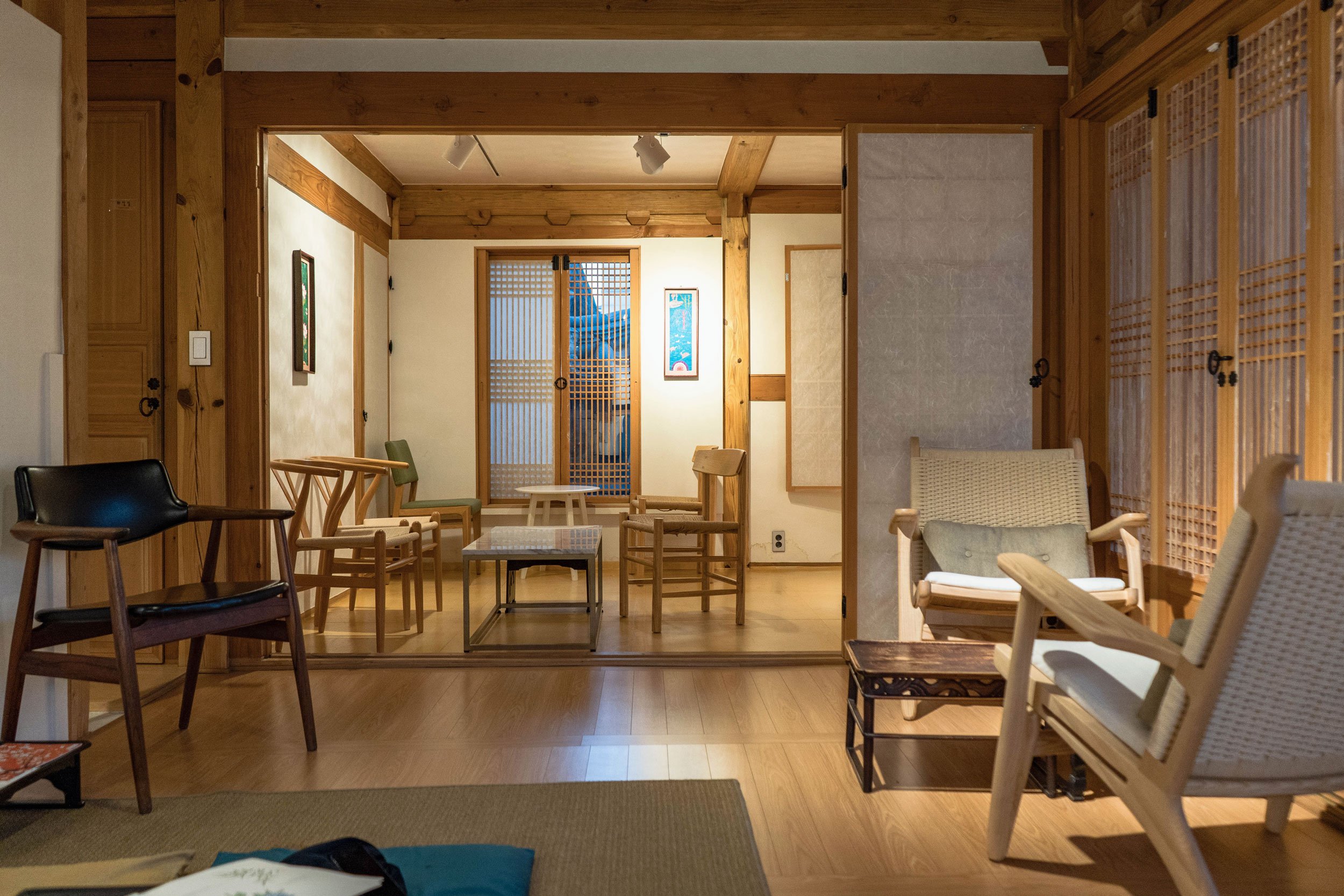
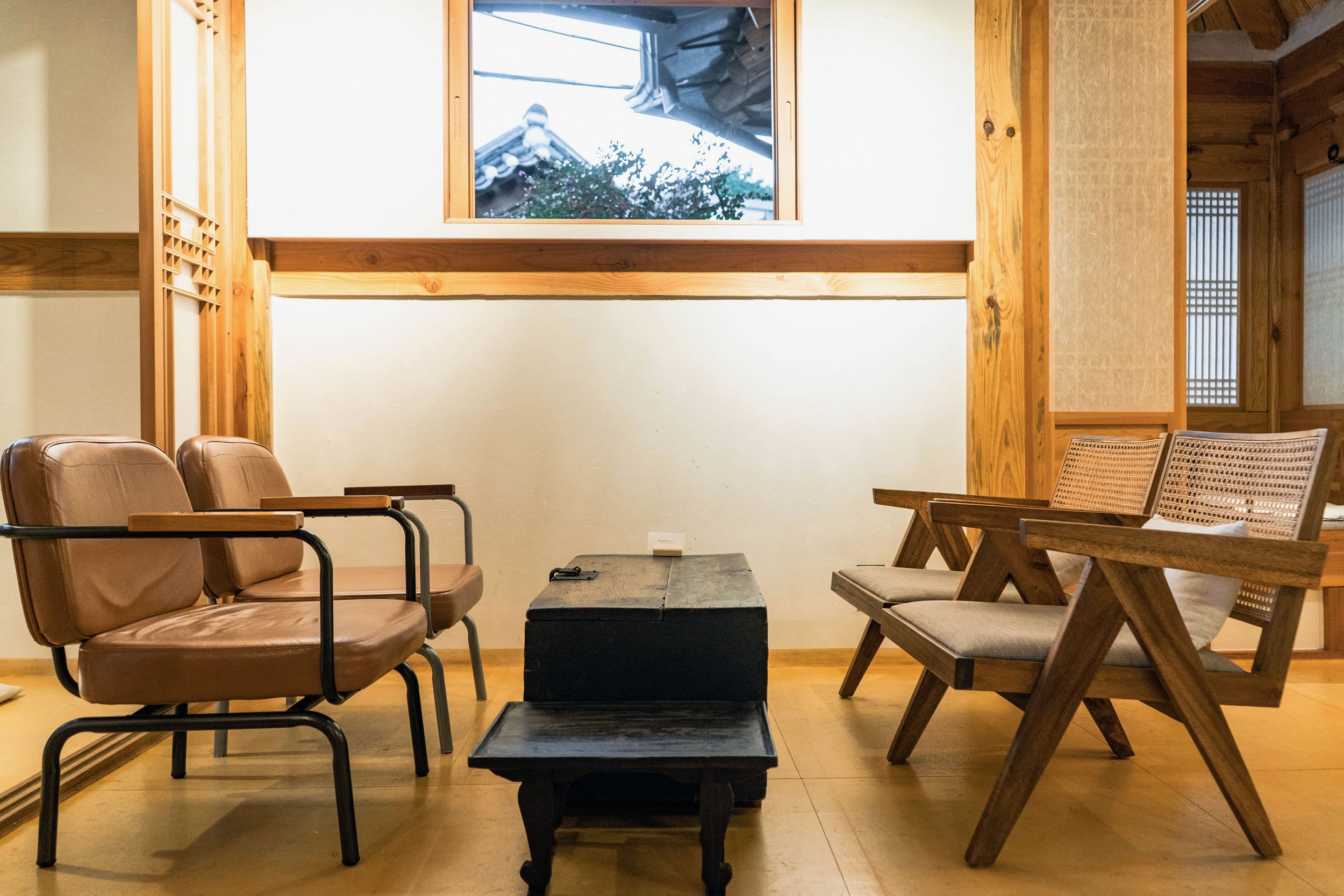
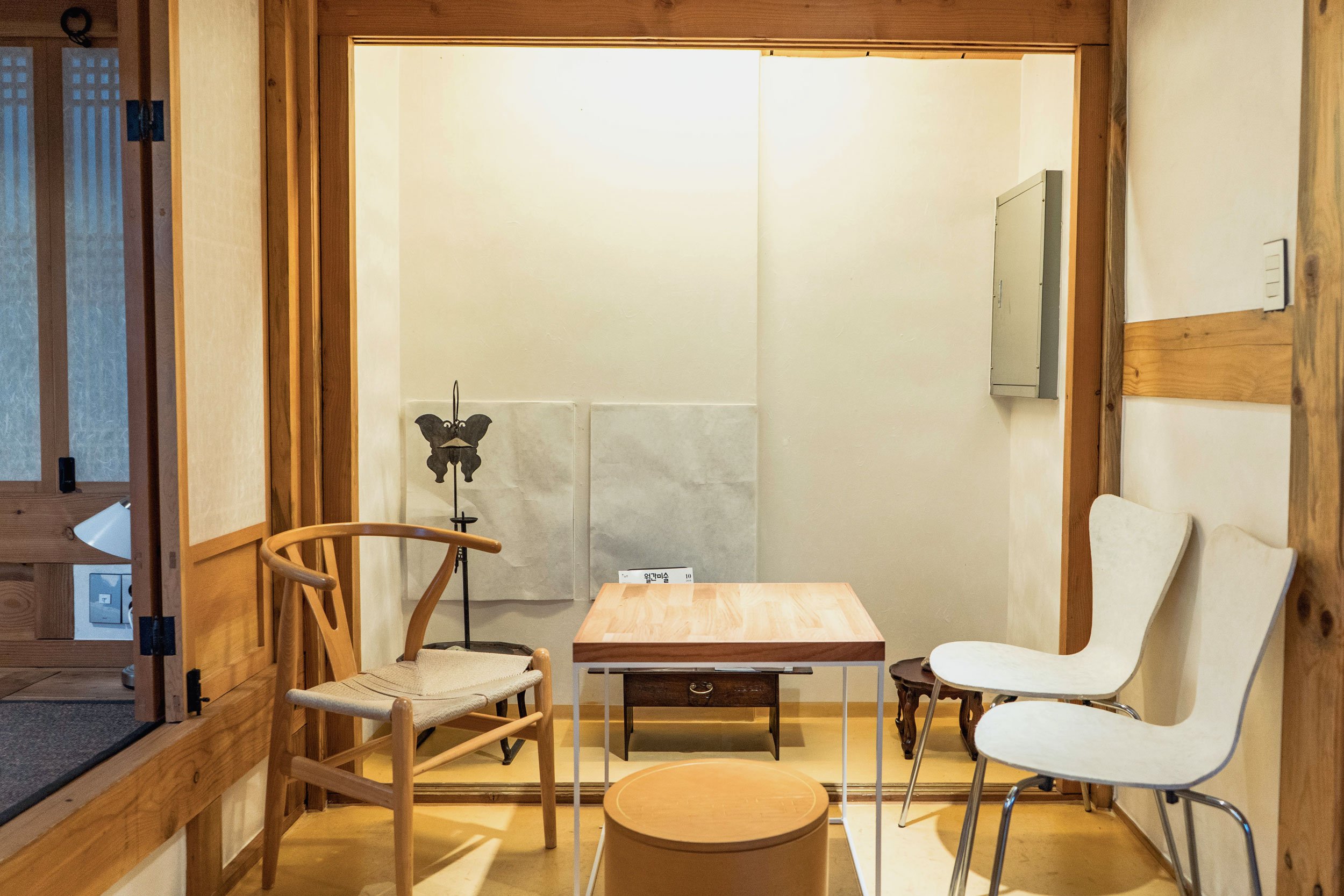
A coffee shop in a traditional Korean house. We randomly stumbled upon Gallery SAI coming down from the Bukchon Hanok village and were pleasantly surprised. It’s in a converted old house that blends in with much of the area. You take your shoes off and find a table, some of which are on the floor or in a room, and have tea or coffee. A little more costly than a typical coffee shop, but well worth it for the experience.
Keep in touch
More travels
Nikko: Hoshino Resorts KAI Kinugawa
A great night in Nikko at Hoshino Resorts KAI Kinugawa.
The Kinugawa River near Hoshino Resorts KAI Kawaji
The entrance to the resort was a private tram lifting us up a hillside.
Hoshino Resorts is one of the most well known and sought after hot spring and resort ryokan chains in Japan. We stayed for a night at their KAI Kinugawa location, which is part of their KAI line, when we visited Nikko for a weekend.
The entrance to the resort was very unique. We boarded a small tram that took us up a track along the hillside. The staff greeted us at the top where we entered the tranquil resort grounds.
KAI Kinugawa is beautifully designed and Japanese-styled, and the ryokan rooms border around a garden area in the center.
The rooms are spacious and comfortable, and each has a balcony to the outside. They’re about 40m² each and ranges between $300 to $600 USD per night.
Welcome snacks at Hoshino Resorts KAI Kinugawa
The onsen hot springs are nice and relaxing, and when we went, wasn’t crowded despite the resort typically being quite full. I personally don’t like going into an onsen that’s full of people, and I didn’t have an issues here.
Outside of the onsen is an all-you-can-eat popsicle freezer and a lineup of several bottles of nihonshu, or Japanese sake, free for the taking.
Like all ryokans, Japanese kaiseki meals are included, and it rounds out the ryokan experience. KAI Kinugawa’s definitely didn’t disappoint. Each dish is beautifully presented, cooked to perfection with careful Japanese details, and is filling.

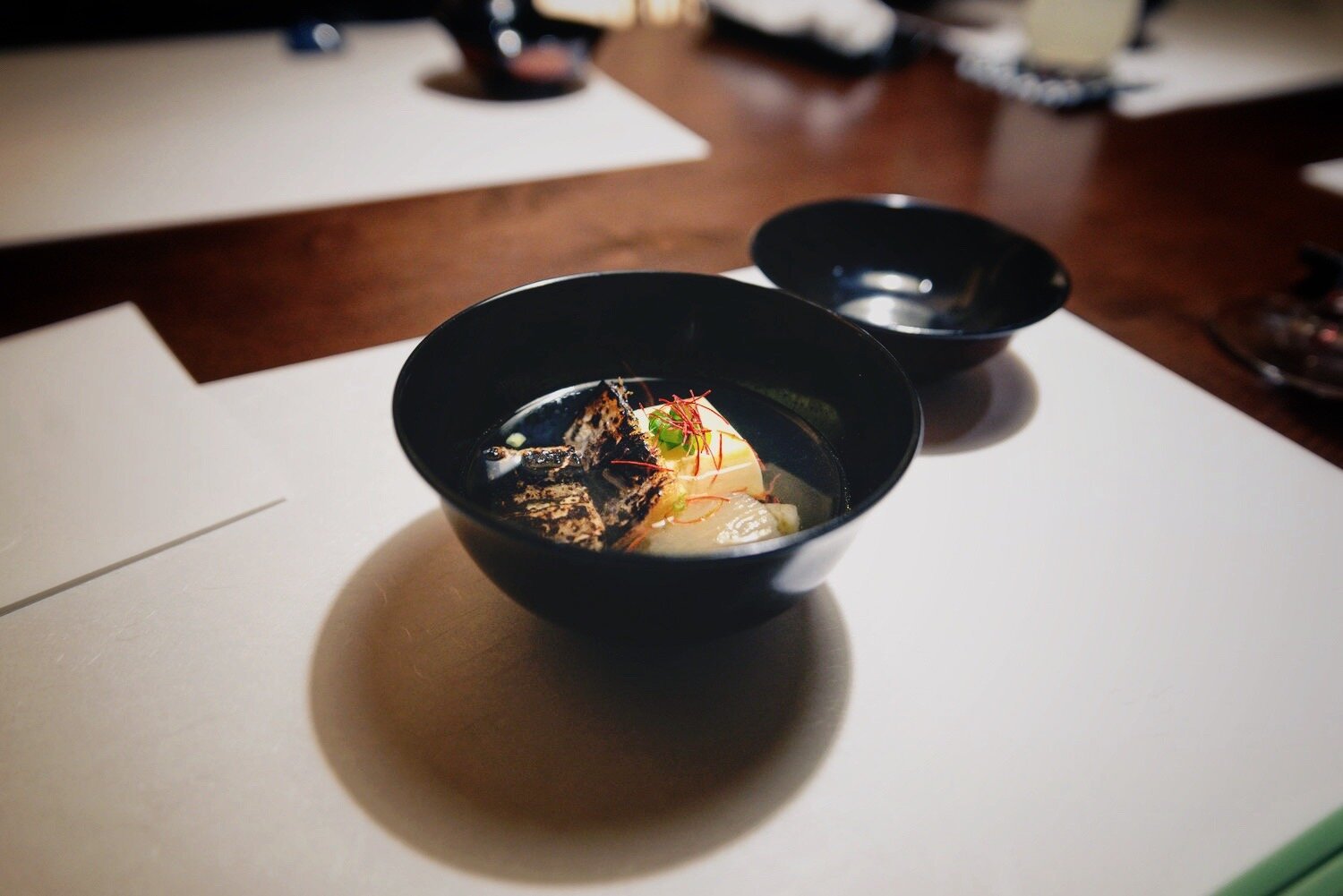

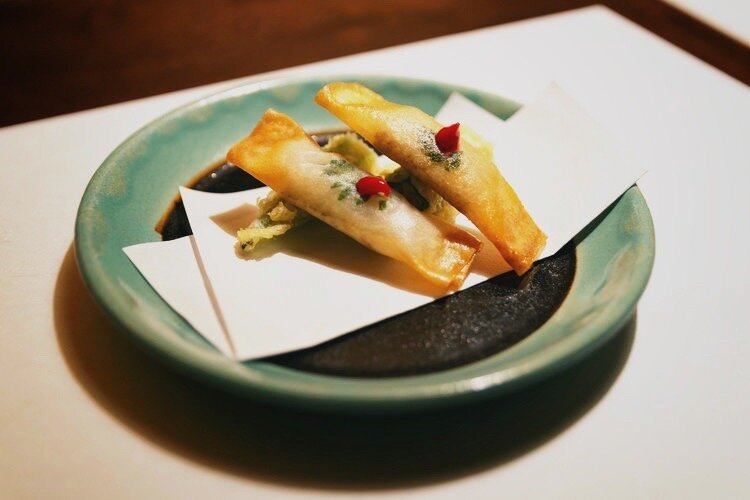


Overall, the experience at KAI Kinugawa was one of the better ryokan experiences that I’ve had in Japan. Not a bad choice when staying over in Nikko.
Keep in touch
More travels
Nikko
A weekend trip to Nikko, one of the closest UNESCO World Heritage spots to Tokyo.
Shinkyo Bridge in Nikko
One of the closest UNESCO World Heritage spots to Tokyo, the Nikkō Tōshō-gū shrine, Futarasan Shrine and Rinnō-ji are amongst the most famous sights in Japan.
We stayed the weekend at Hoshino Resorts KAI Kinugawa, a nice ryokan and hot springs by one of Japan’s most well known onsen resort brands.
How to get there
Because Nikkō is relatively close to Tokyo, it’s quite accessible. The fastest way to get to Nikkō by train is to catch the Kegon Limited Express train from Asakusa to Tobu Nikkō station. It takes about 2 hours. There are a couple other train options for that route as well as a Nikko pass for foreign tourists. There’s also the JR Nikkō Limited Express from Shinjuku to Tobu Nikkō station.
Entrance torii gate to the Tosho-gu shrine.
One of the most recognizable sights in Nikkō is the Shinkyo Bridge (pictured at the top) [Map]. Its red, arched shape above clear blue waters and in front of the green mountainside makes for quite a picturesque “Japan” photo.
Across the street are the entrances to the Tōshō-gū shrine area.
Nikko Tosho-gu Shrine
After seeing a lot of shrines around Japan, many of them begin to kind of blend together and look pretty similar. It does for me, at least. I found that Tōshō-gū, however, is not one of those.
Karamon at Nikko Tosho-gu shrine
The shrine, dedicated to Tokugawa Ieyasu and initially built in 1617, separates itself from others due to its patterned design and color combinations. Reds, greens and blacks are used in intricate details, and abundant amounts of gold really makes the shrine pop.
Inside the shrine itself, there’s a room where everyone gathers for a prayer (be prepared to take your shoes off). While I didn’t quite understand what was going on, a chant was done and it was interesting to experience.
Tōshō-gū is also known for its wood carvings, one of which is the three wise monkeys demonstrating “Hear no evil, speak no evil, see no evil.” It’s located just above a building doorway and almost looks a little comical looking. Another famous carving is the “Nemuri-neko” or sleepy cat. It attracts crowds as people line up to walk through the doorway that it’s over, but it probably won’t live up to the hype for the average person who doesn’t know much about it.
Five-story pagoda at Nikkō Tōshō-gū
We spent around an hour or so inside the shrine itself, and another hour or two walking around the shrine grounds and nearby town where we had a Japanese kaiseki lunch featuring food that Nikko is known for (information below). Many of the shops in the area have a lot of history to them, range from antique shops to Japanese confectionary shops, and some of them have quite photogenic signs and storefronts.
The next day, we explored a little bit north of the Tōshō-gū area.
Ryuokyo
Ryūōkyō, known for Ryūōkyō Canyon, is a small hot springs town area.
Nijiminotaki Falls
Ryūōkyō’s natural scenery is something to see. While we weren’t up for any of the long hikes and honestly, didn’t have time to check out much, we were able to see the Nijiminotaki Falls [Map] and hike down to the Kinugawa River below.
The Kinugawa River waters are an amazing clear, greenish blue color. Its shape and the surrounding scenery gave the area its name, Ryūōkyō, with “Ryūō” referencing a dragon.
Nikkō also has good food. Soba, yuba (tofu skin) and even shave ice are some of the foods that the area is known for. While we didn’t get to try the soba, I recommend the yuba and shave ice places that we went to.
Fudan Kaiseki Nagomi chaya
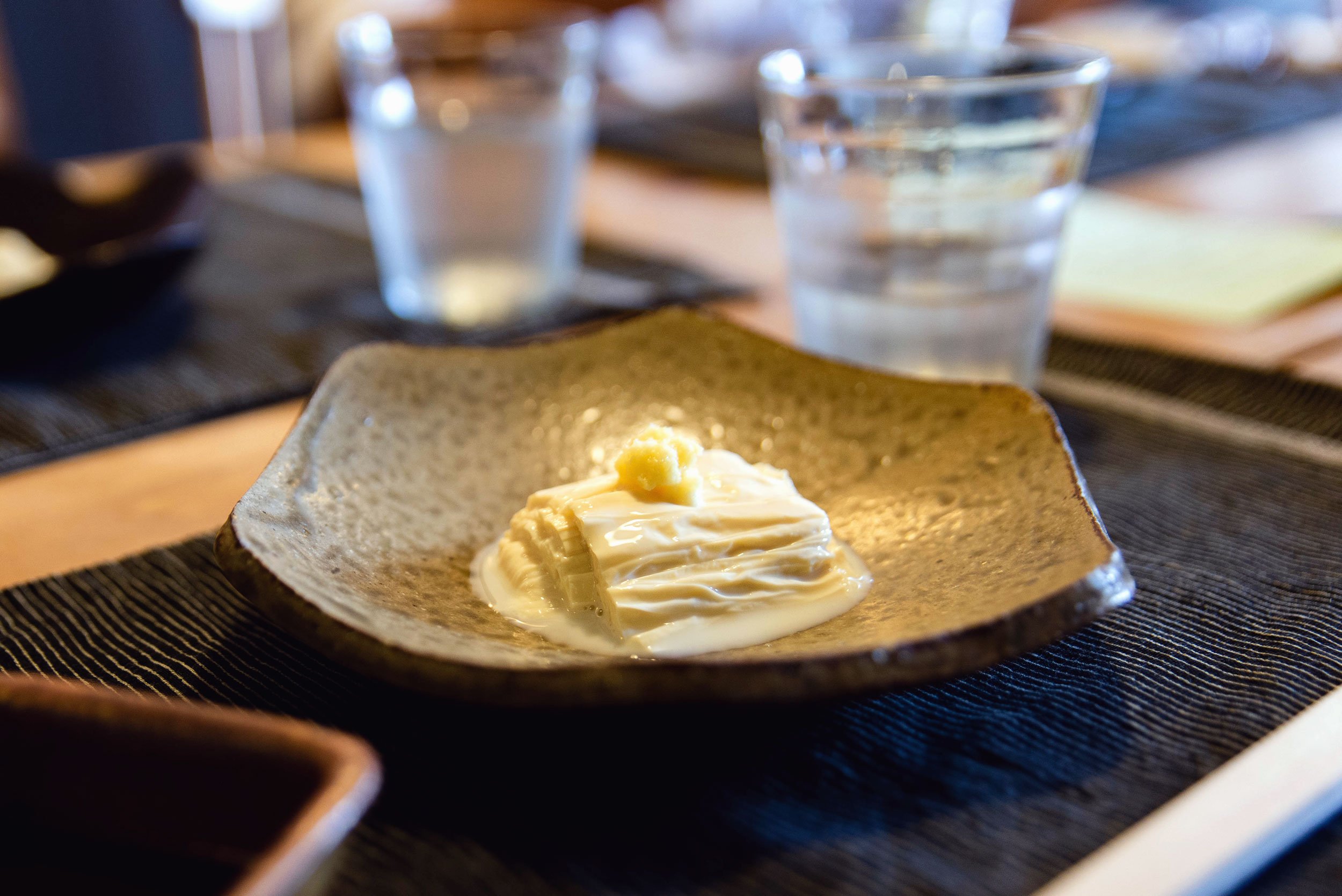
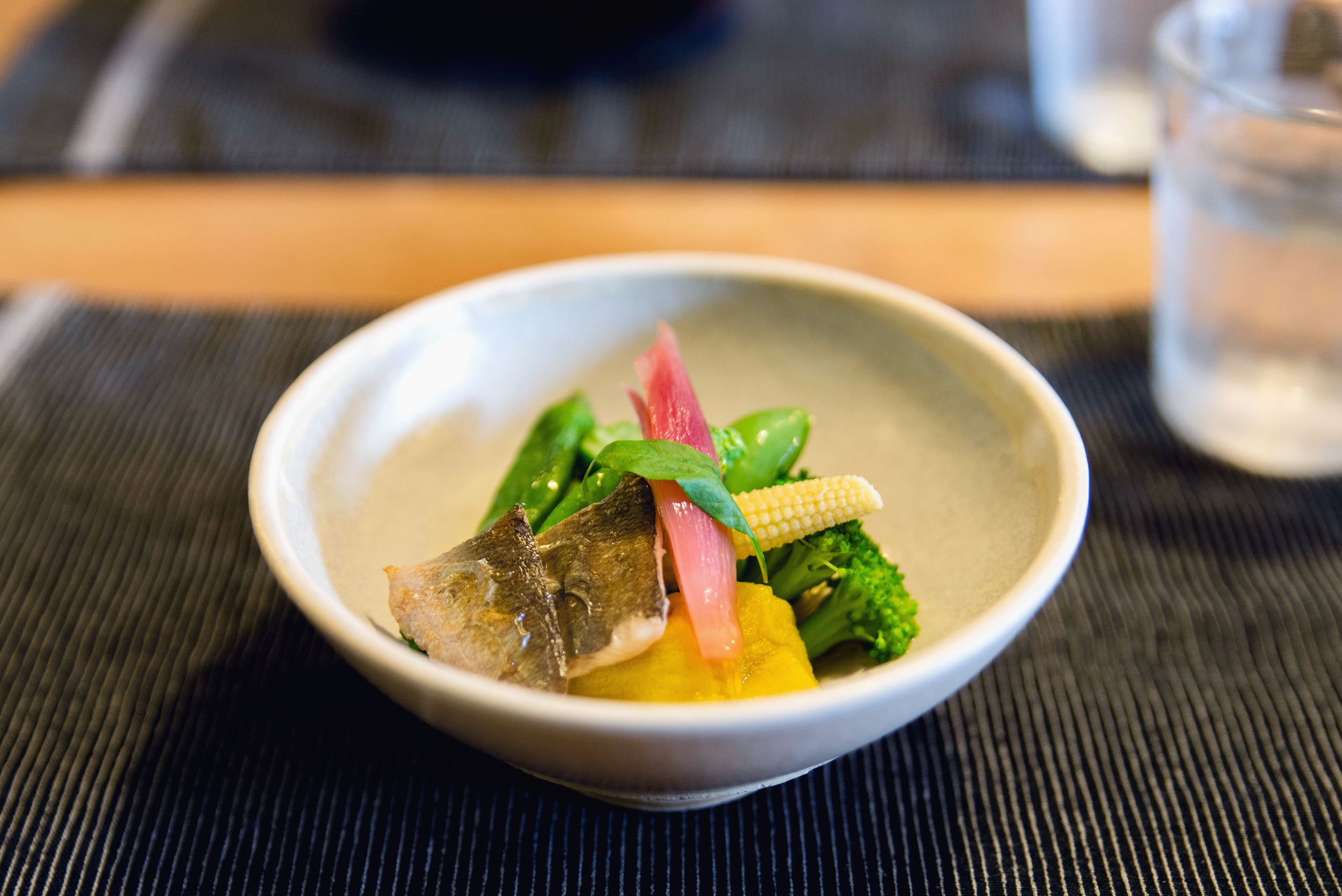

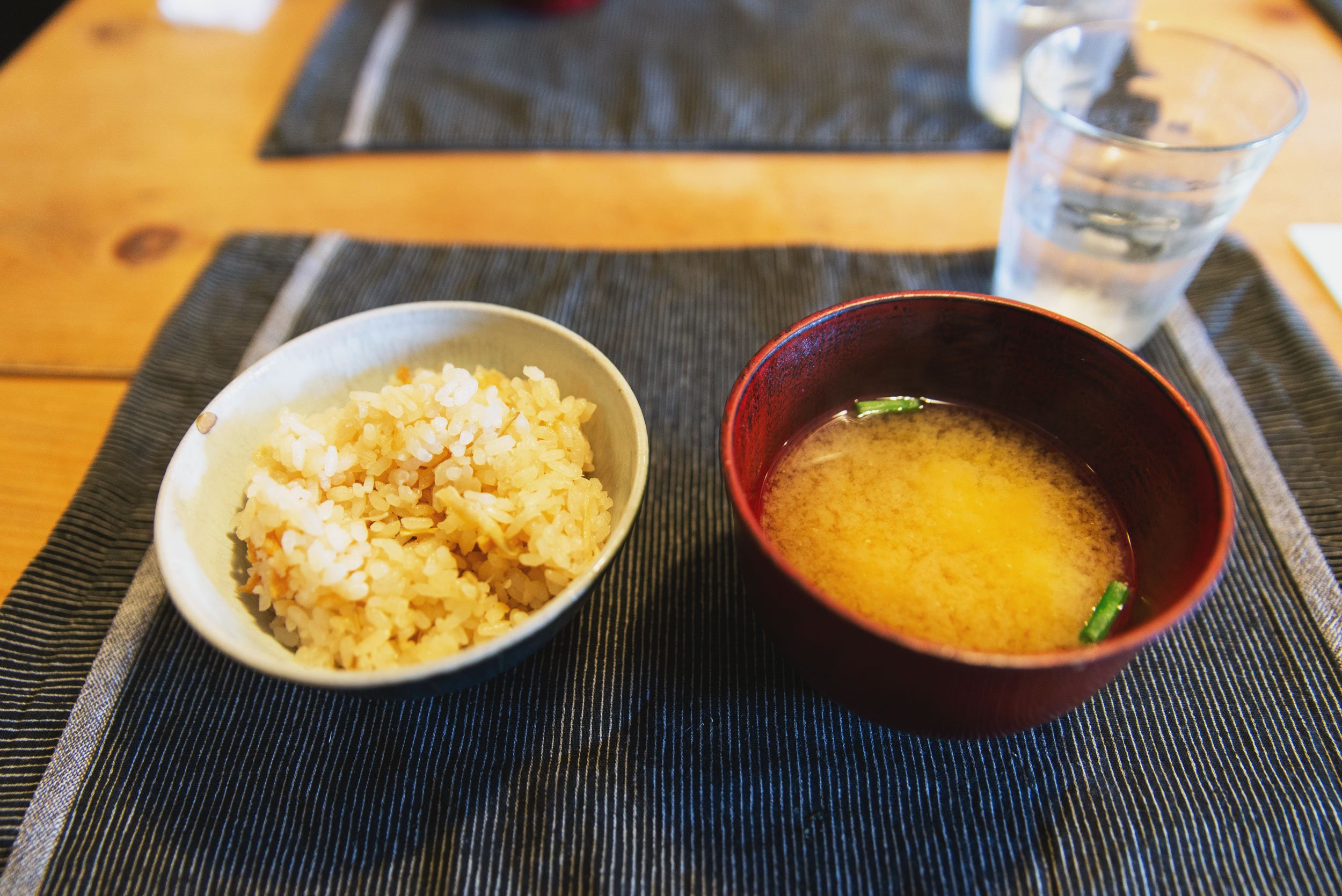
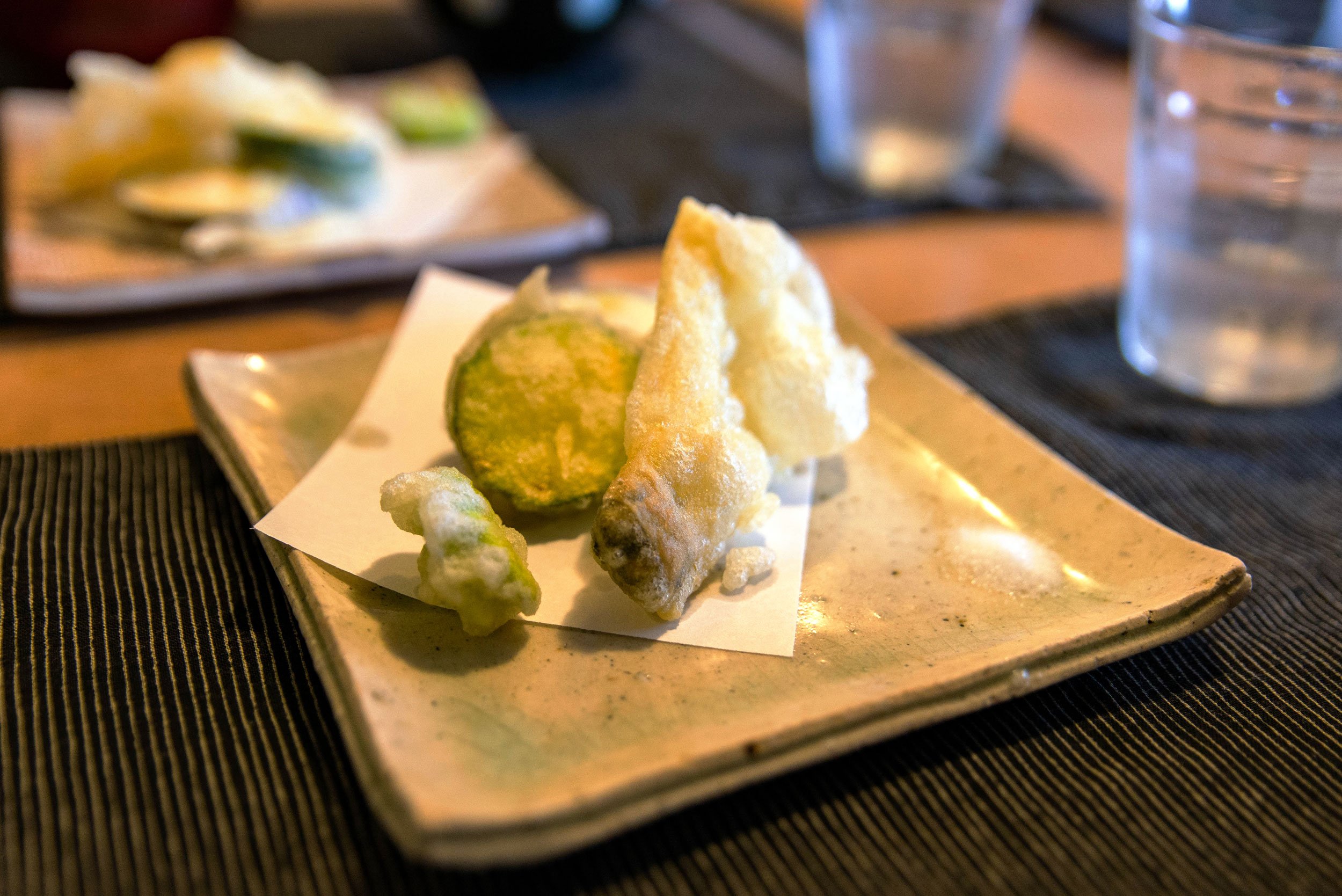
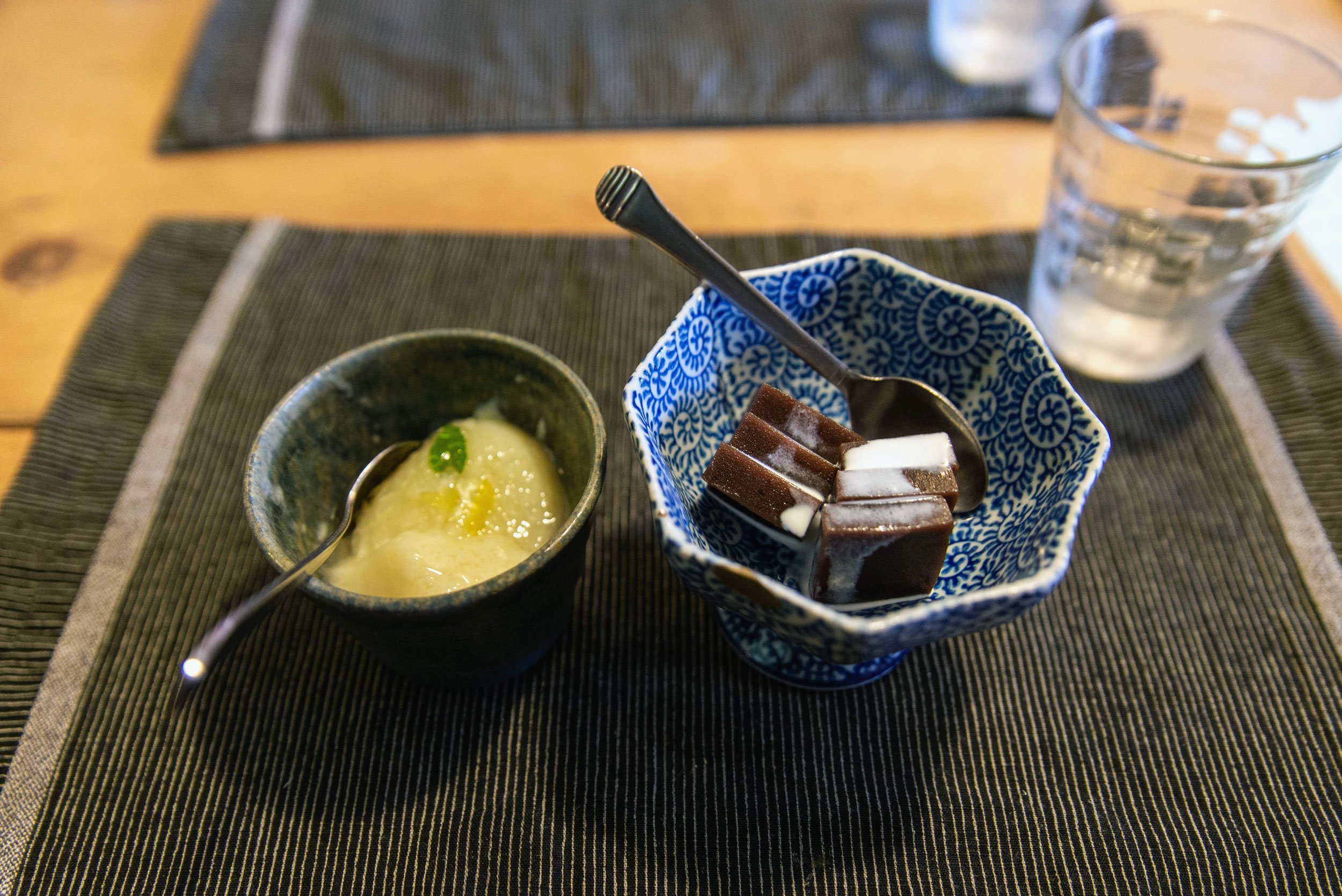
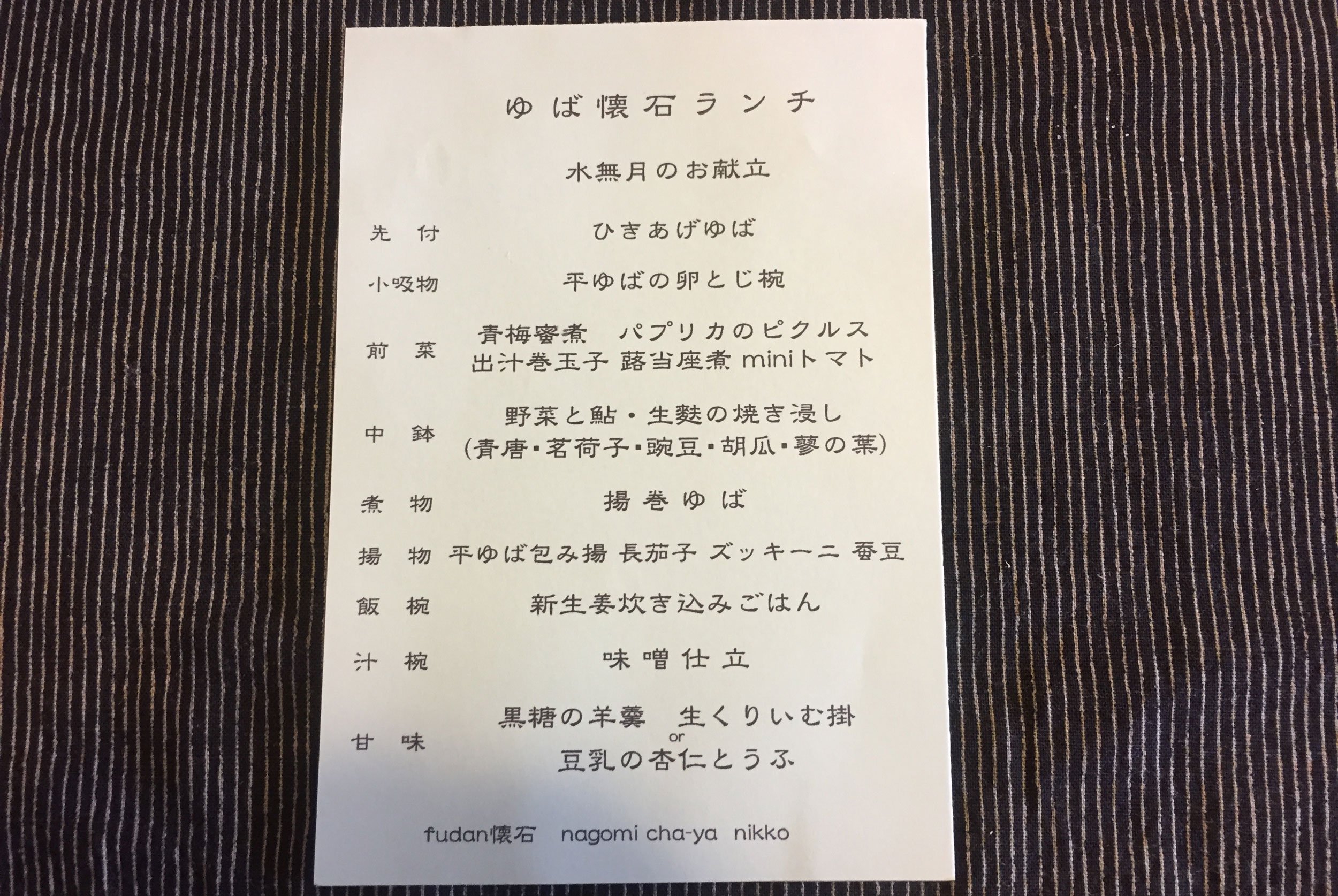
One of the more popular restaurants in Nikkō near Tōshō-gū shrine is Fudan Kaiseki Nagomi Chaya, and they specialize in yuba. We went for a kaiseki yuba lunch course that consisted of about 9 dishes with several of them incorporating either yuba or tofu. It’s a small shop with a Japanese vibe, some of the tables have floor seating, and service is really good. This a great place to stop for some authentic Nikkō specialties.
Ryūōkyō Shokudo
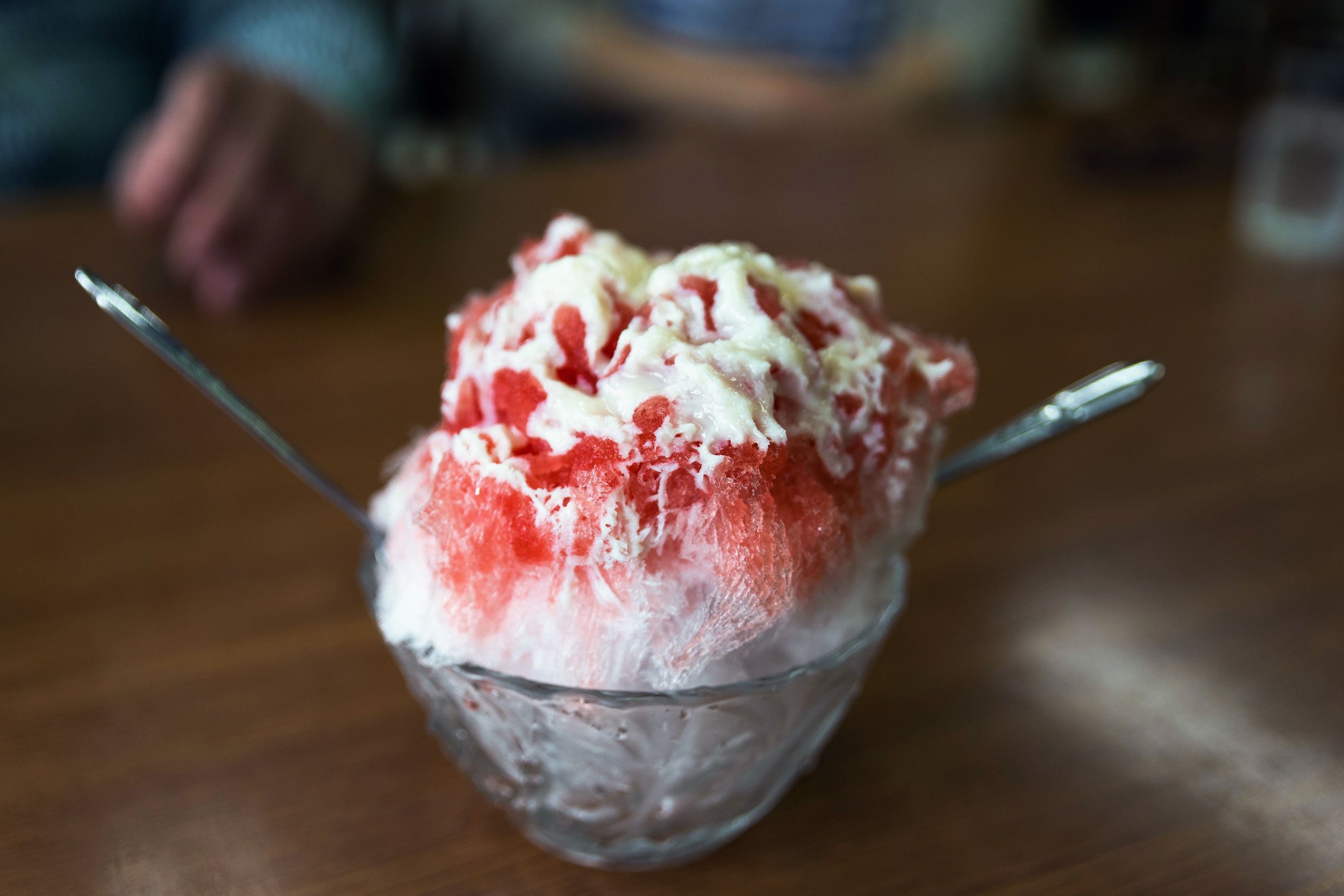

Nikkō’s water is quite clean, and they farm some of it into sheets of ice. Some of those clear sheets are sliced up, shaved and turned into shave ice at shops in the area. The water’s purity means you won’t get brain freeze, according to the staff at Ryūōkyō Shokudo. I’m not sure about that, but for the record, I tried to give myself brain freeze after being told that and failed. Shave ice here was a refreshing stop after hiking back up from the Kinugawa River nearby.
Keep in touch
More travels
Kamakura: A Day Trip from Tokyo
A day trip to a big Buddha statue and some historical sights in the seaside neighborhood.
Kamakura is one of the more popular day trips to take when in Tokyo. It’s a seaside area full of historical sights and is pretty easily accessible from the city by train.
How to get there
The way that I’ve gone is by taking the Shonan-Shinjuku line from Shinjuku station to Fujisawa station, then transferring to the local, 2-car Enoden train that stops at all the local sights in town.
The Enoden train in Kamakura
Tsurugaoka Hachiman-gu
One of Kamakura’s main attractions is Tsurugaoka Hachiman-gū, a Shinto shrine that sits atop a hillside on some fairly large grounds.
It’s centrally located near Kamakura station and is the area’s main attraction, in fact the area’s main boulevard leads right up to the entrance.
From there, a long pathway that sometimes is lined with food and game stands - the type that you’d find at Japanese summer festivals - leads up to a courtyard area before a long stairway up to the shrine itself.
I first visited the shrine for hatsumode, or the first shrine trip of the year, which is a ritual for Japanese people. It was just after New Year’s Day and I ended up joining hundreds of others who had the same idea. While the wait wasn’t as bad as I thought it’d be, the crowd was pretty sizable like it is at most major shrines during this time of year. We lined up with everyone else in the courtyard area at the bottom of the stairway, and waited for about half an hour before ushers guided us up.
Just outside the shrine grounds is Komachi Street, a small side street that runs parallel on the west side of the main road leading up to the shrine. It’s a local, walking street full of small shops selling Japanese food and treats, including some amazing matcha ice cream (see below).
Walking up to the shrine on the main road, then coming back down on Komachi Street is a good idea.
Kamakura Daibutsu (The Great Buddha)
Kamakura’s other main attraction is the Kamakura Daibutsu, or the Great Buddha of Kamakura statue. It’s actually a part of the Buddhist Kotoku-in Temple.
The statue is a short walk from Hase station which is on the Enoden line. Shops for tourists seem to slowly be popping up along the route to the temple, but its still quite a residential area.
The statue itself is hard to miss and sits in the center of a courtyard next to the actual temple. The temple doesn’t stand out, so my guess is that most people are like me and only visit the statue without ever actually going into the temple itself.
Hase-dera Temple
Also near Hase station is Hase-dera, another Buddhist temple that dates back to the 8th century.
It’s pretty convenient since it’s just a few blocks in from the main road that connects Hase Station and the Great Buddha. There’s quite a bit to explore too. Its located on a hillside on quite a big area with several buildings, gardens and a museum. There’s also places to shop and eat that have ocean views.
Mini statues beside a walkway at Hase-dera Temple
Ajisai flowers (Hydrangea), popular in late spring/early summer, on the Hase-dera temple grounds
Mini statues lined on a wall at Hase-dera temple
Ocean view from the Hase-dera Temple hillside
While the Enoden train goes to the main places in Kamakura, it can get really crowded. It’s a local neighborhood at its core and I don’t think they imagined that thousands of tourists would flood their local streets every day. Walking the local area instead of heading back on the train each time is a good idea. There are a lot of small cafes and boutiques popping up here and there to stumble on.
I’ve also been lucky to find some good places to eat.
Kamakura Matsubara-an
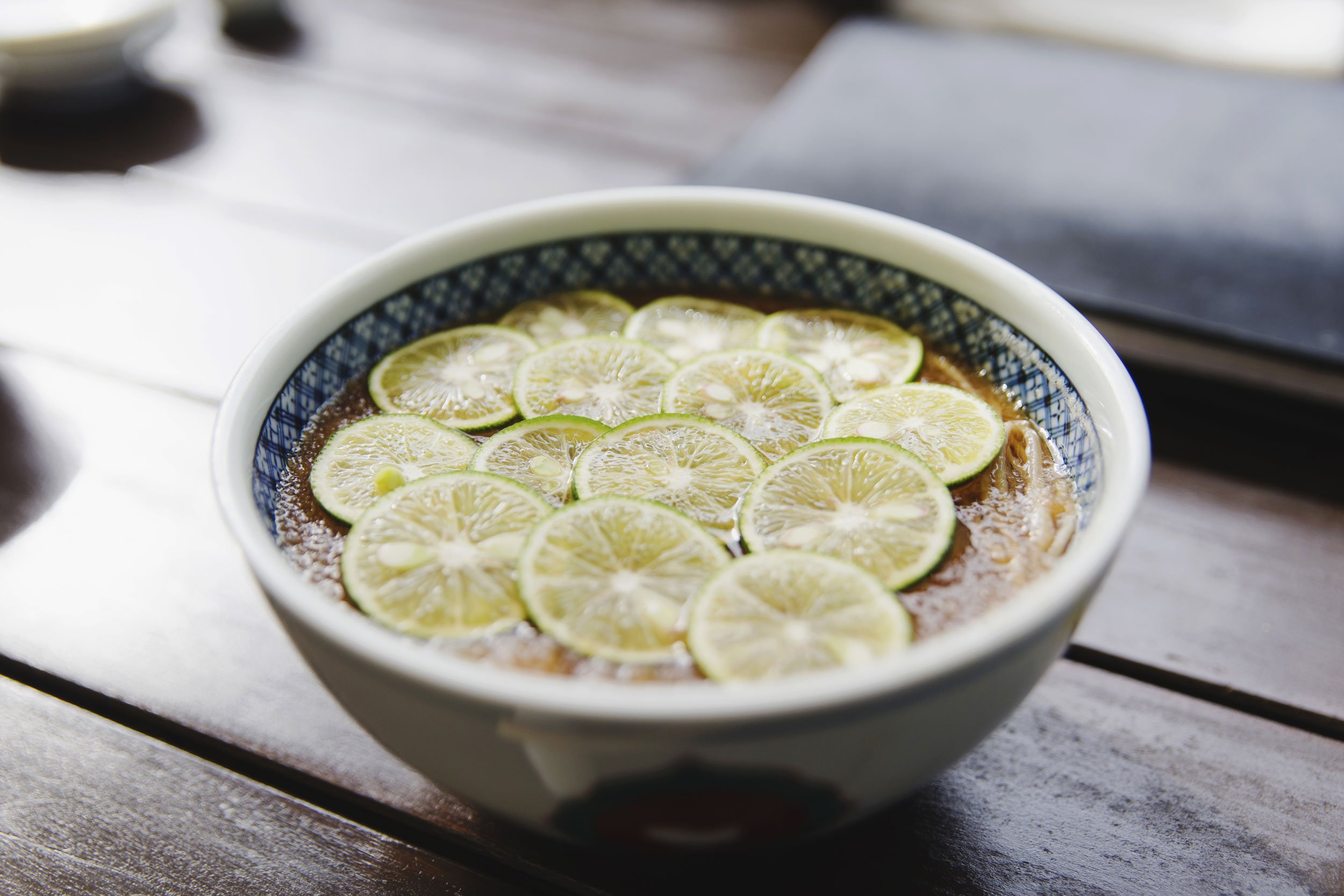

Matsubara-an popped up as a good lunch option as it was highly rated and within walking distance from Hase station (it’s closest to Yuigahama station). It’s a soba noodle shop that looks like a converted old Japanese house, making for a great atmosphere. It can get pretty crowded though - we waited between 30-60 minutes for a late lunch. The food is really good - I recommend their sudachi soba, a Japanese citrus soba. Their tempura is also really light and tasty.
Kamakura Cha Cha
Best matcha ice cream? It’s definitely up there. I walked in Kamakura Cha Cha while walking down Komachi street after visiting Tsurugaoka Hachiman-gū shrine, and I’m glad I did. It’s a small shop with several types of creamy, rich, matcha ice cream, each with a different level of matcha intensity. It starts at level 1 (light) and goes up to Level 4 and tops out at Level MAX. There’s also hōjicha, a roasted green tea flavor as well. If you’re like me and like dense matcha flavor, go for the level 4 or MAX.
Kohana Sushi
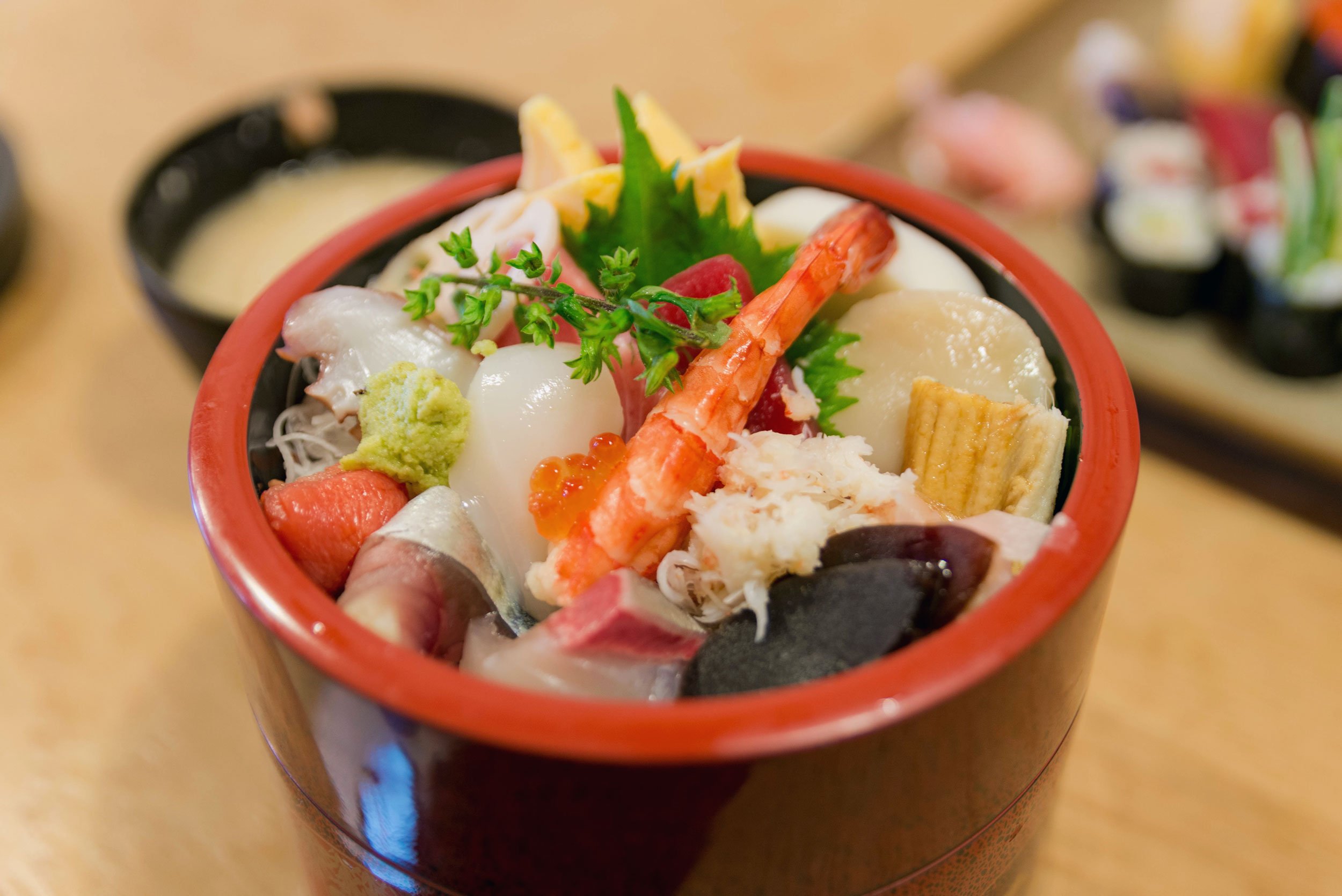
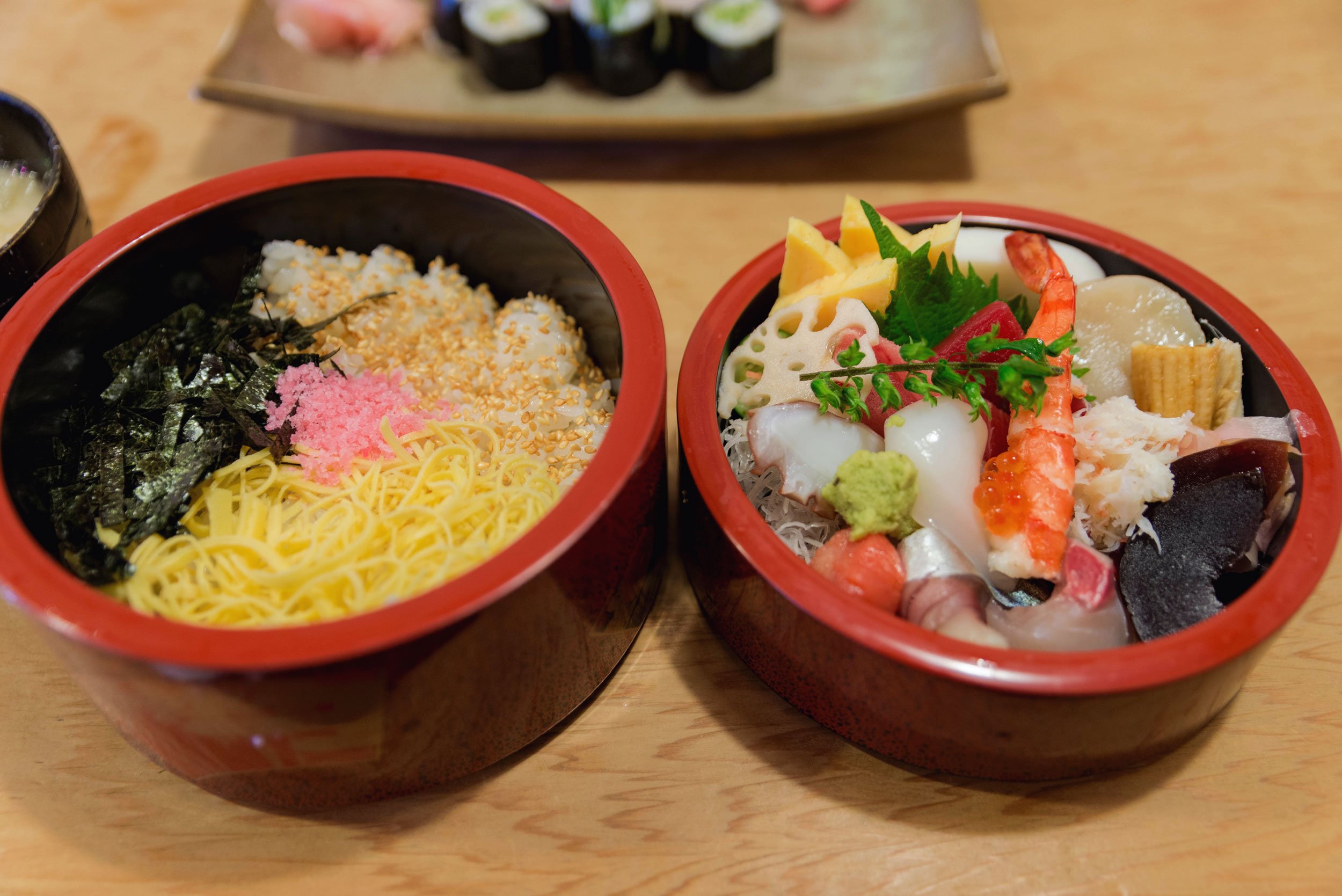
Good quality chirashi sushi. Kohana Sushi is a small, hole-in-the-wall along a road that connects the Hase station area with the Kamakura station area. This is a good road to walk. It’s an older shop with an exterior that blends in with the vintage look of the original neighborhood, the type where most people walking by would probably pay no mind. Inside is a traditional eatery with a bar counter and tables on a tatami mat where you sit on the floor to eat. They’re known for their chirashi sushi which comes in a pair of stacked bowls with the rice on the bottom and an assortment of different kinds of sashimi on the top.
Keep in touch
More Travels
Koshu, Yamanashi: Grapes and Wine Town
A day trip to Koshu, Yamanashi, known for some of the best grapes in Japan.
A dog, “Dash,”, watching over the vineyard for wild boars
Yamanashi prefecture is located just west of Tokyo and is known for its fruits
Koshu is a small city of about 32,000 and is like the Napa Valley of Japan
Living in Japan, I’ve realized that the country has some of the most delicious fruits. The flavor gap between the average supermarket fruit in the US versus one in Japan can be considerable at times, almost to the point that I feel I was deprived.
One of the juiciest fruits that I’ve had in Japan is grapes, and perhaps the most well known area for grapes is Koshu in Yamanashi prefecture.
Koshu is to the west of Tokyo in Yamanashi prefecture, and is almost fully blanketed with vineyards from mountain to mountain. Unlike other grape and wine areas like Napa, Koshu is quite hilly and full of smaller-sized vineyards. Many of them open roadside stands selling their homegrown grapes while a few others make wine.
How to get there
The best way to get there is by car.
If you go by train, from Shinjuku station in Tokyo, it’s about a 1.5 hour ride on the JR Chuo limited express, Azusa and Kaiji trains. The main stop in the area is Enzan station [MAP], but the closest station to where I’ve gone here is Katsunumabudokyo Station [MAP], along just before it.
You can get more information and make reservations here on the JR East website. It’s also eligible for JR Rail Pass holders.
August-September is the best time to visit as it’s peak grape season.
Japanese fruits on average can be slightly expensive, and in mid to high-end department stores, grapes from this area can sell for $60-100 USD per bunch.
Part of the reason why costs are higher is because they produce smaller quantities due to intensive pruning, smaller areas of land and because a lot of care goes into growing, shipping and packaging in general. If you notice in the photos above, each bunch of grapes is even semi-wrapped in protective covering.
During grape season in early September, I was able to visit a family-run vineyard and get some of the juiciest grapes at the source.
Farm Kunugi
A little more than a roadside stand, Farm Kunugi [J] had its own parking lot and a small area of tables and chairs under their vines for people to sit and eat what they just bought.
The vineyard began in 1957 and started with 4 types of grapes - Delaware, Kyoho, Fujibutsu and Pione. They’ve since expanded their selection and were selling several of them when I visited.
All of the grapes here are delicious, but I tend to favor the darker purple ones like the Fujiminori and Kyoho. Each grape is huge and packed with intense flavor.

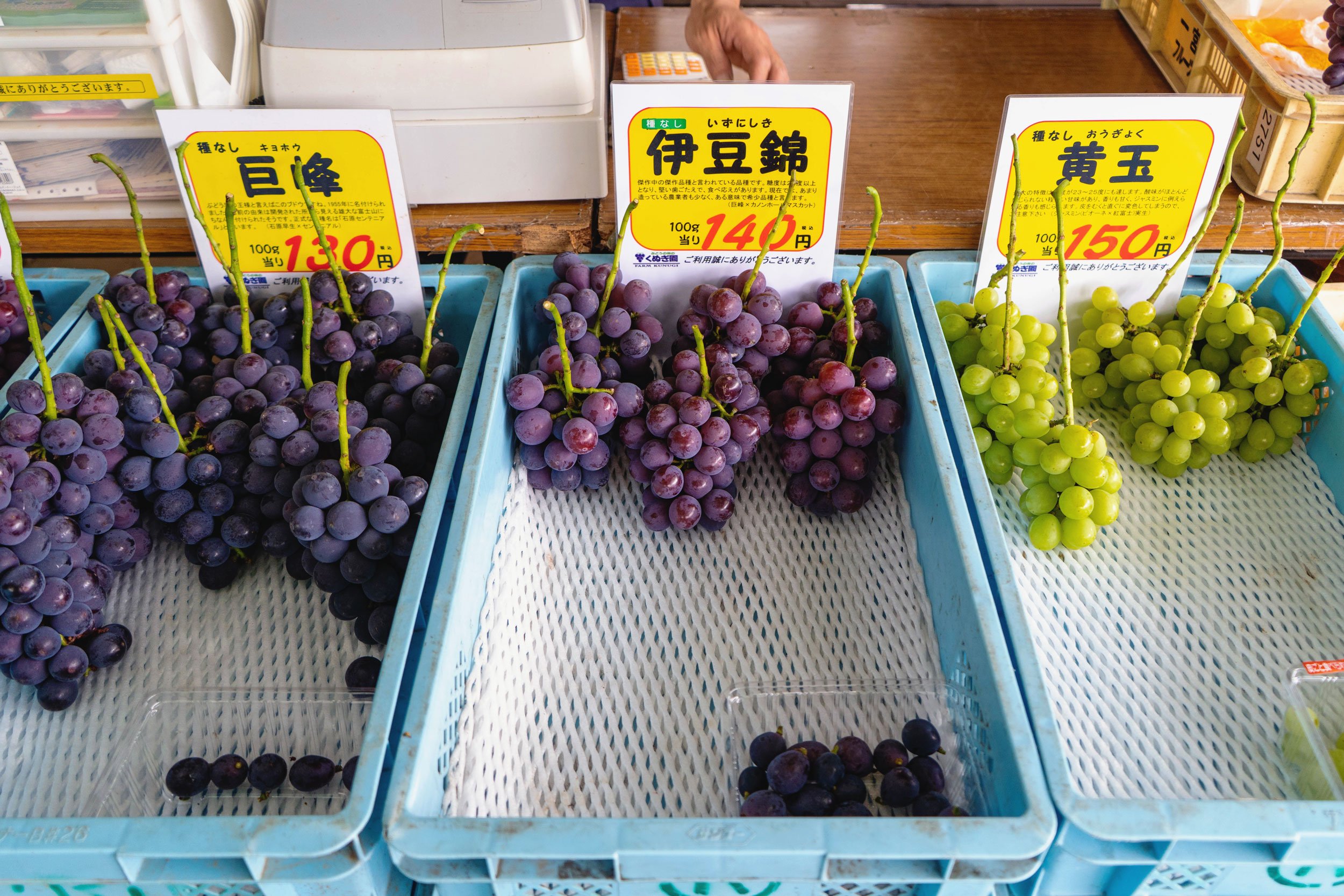
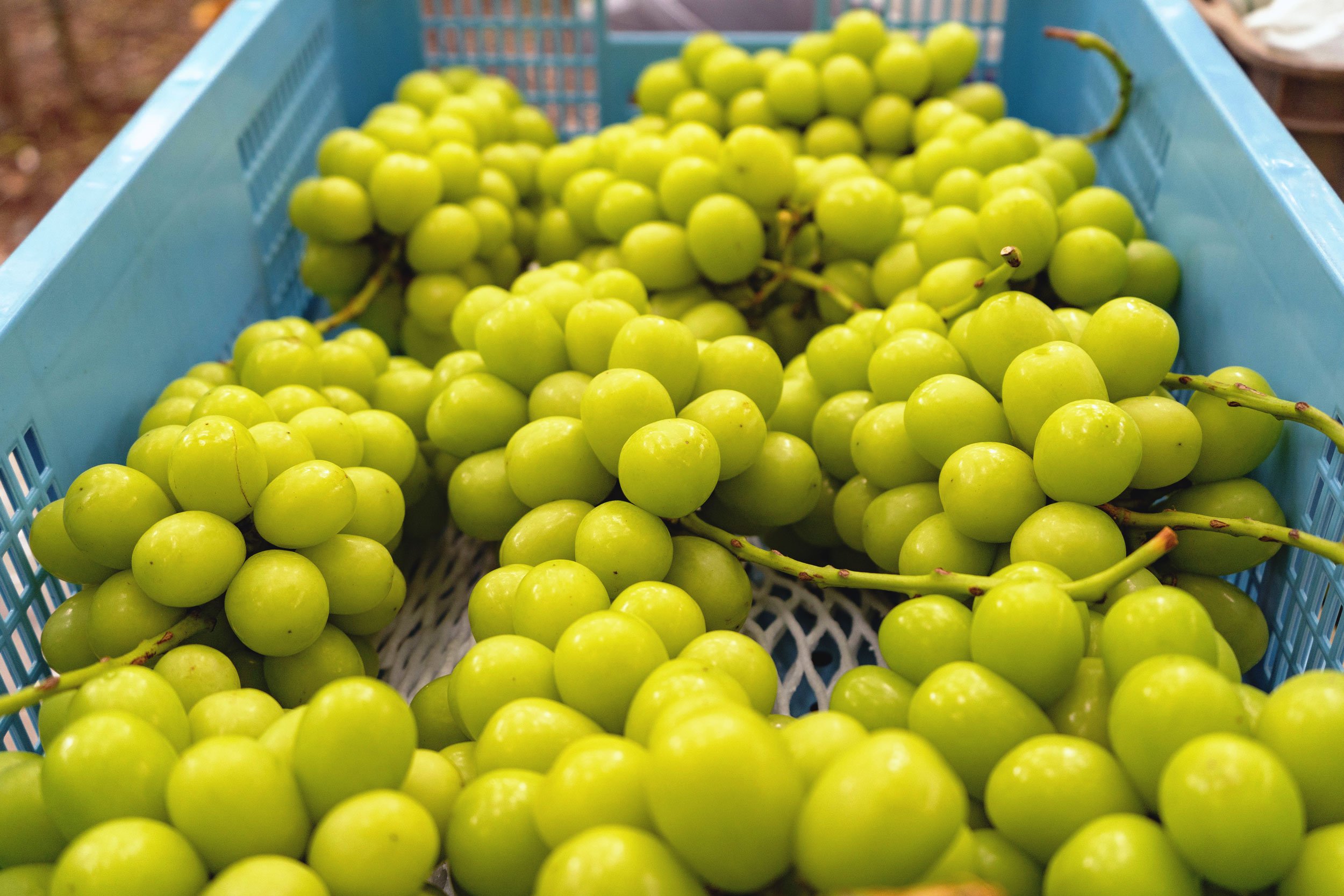
The family was very friendly and they also ship their grapes around the country. Their harvest period is between June and September - going here for fresh grapes definitely beat dealing with Tokyo’s heat and humidity. And they have cute dogs guarding their grapes.
Ikeda Winery
After getting full of grapes, I visited the nearby Ikeda Winery [J], a family-owned winery that’s been in operation since 1995, and only a short drive away from Farm Kunugi.
They don’t have a winery or vineyard tour as it’s more of a small shop. The great thing about them though is that they offer an extensive wine tasting of about 13 different wines for 500 yen (about $5 USD). Here, you can taste a range of whites, rosé and a couple of reds.
If you buy a bottle, many of which are reasonably priced between $15-40 USD, your money is refunded. It’s a good deal, especially if you like white wine. I’m more of a red guy, but their white wines were quite good - clean, light and crisp.
And they have a cute dog as well. Update: She has since passed on as of August 2019.
The late Ikeda Winery family dog, Emma, an older former breeder.
Delhi Bay
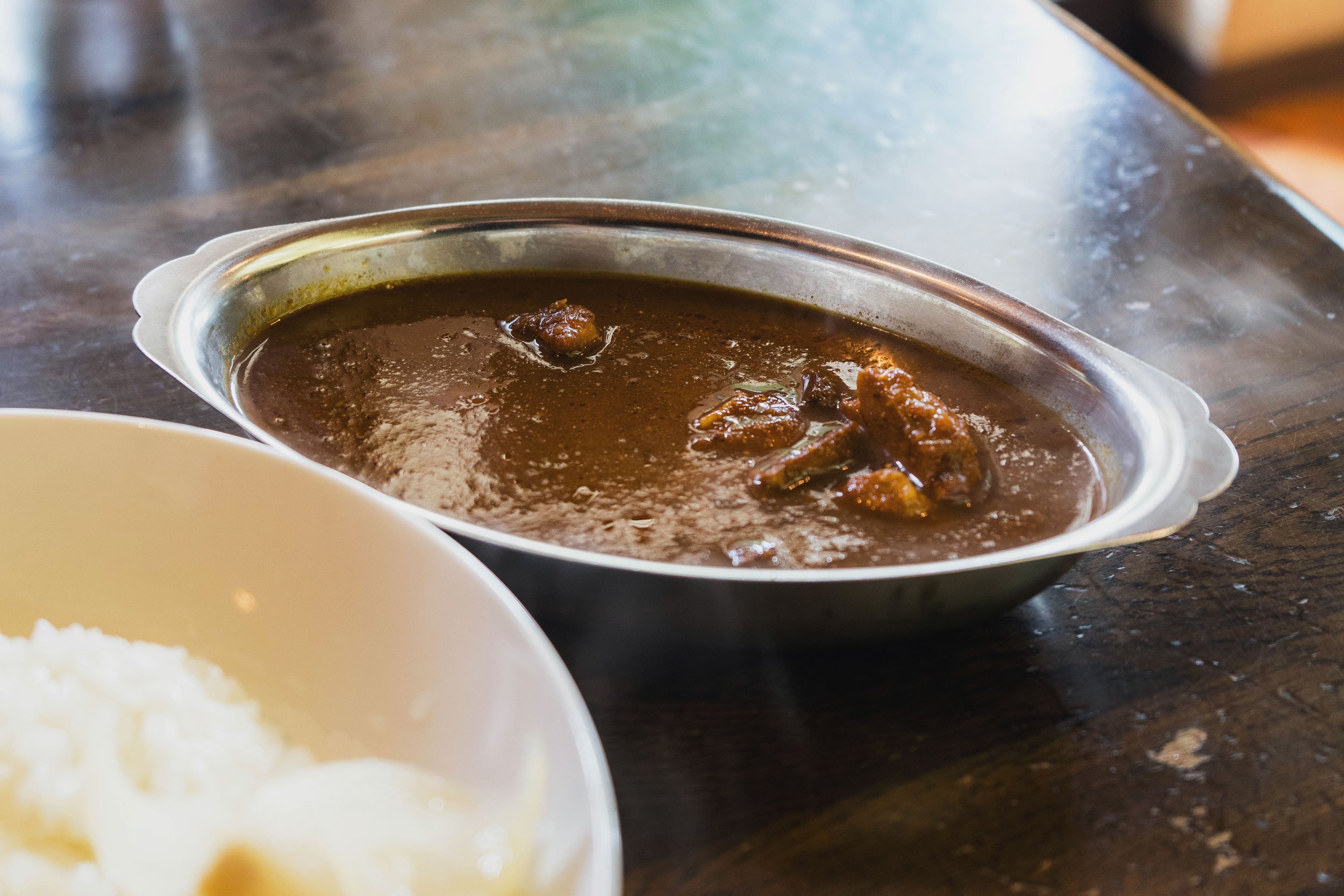
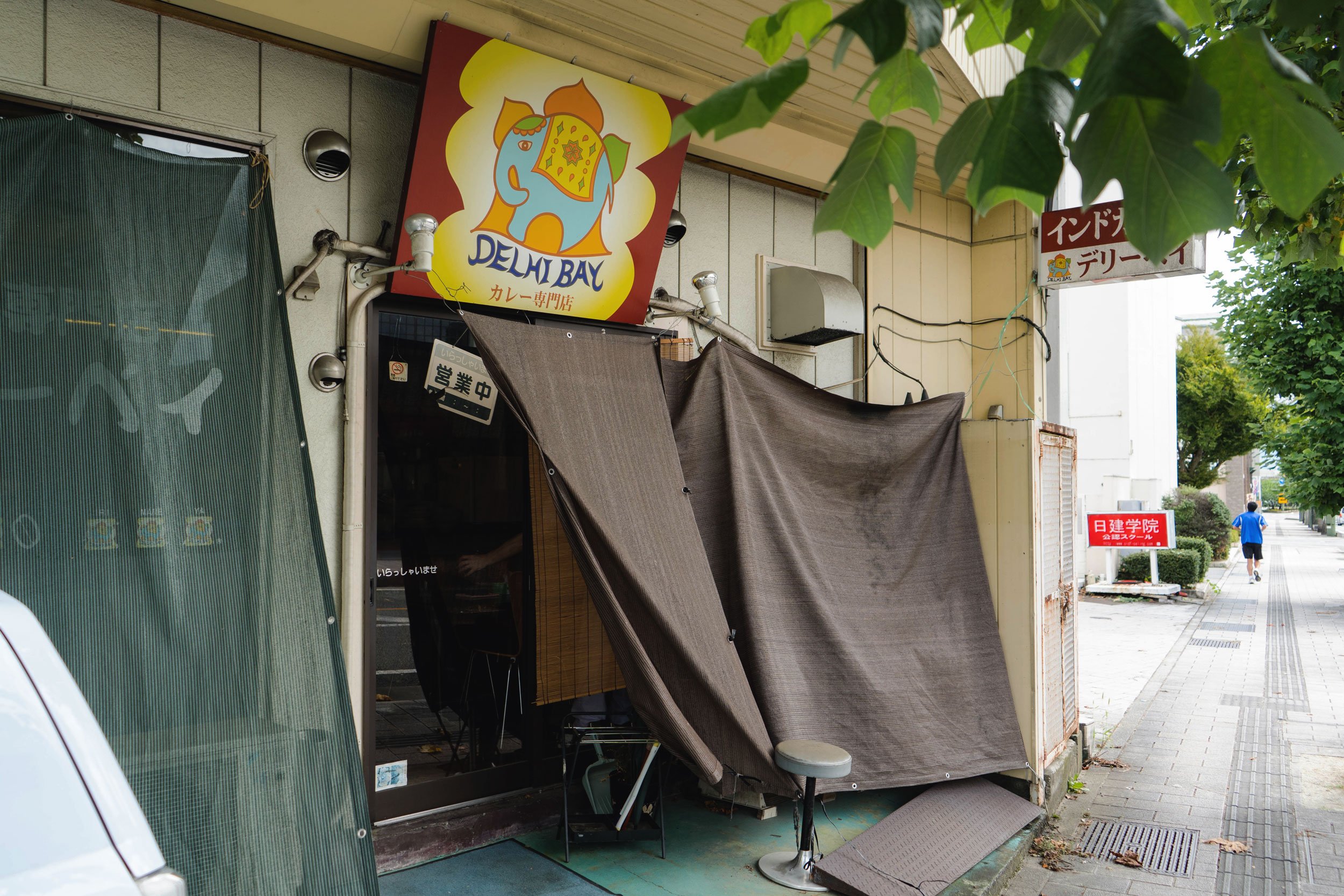
Curry at Delhi Bay was recommended to us, so we decided to try it out. It’s a really local, hole-in-the-wall type of spot. They’re spicier level curries are quite good, and have a few types to choose from that are either Indian or European inspired. Each is served with white rice and pickles.








































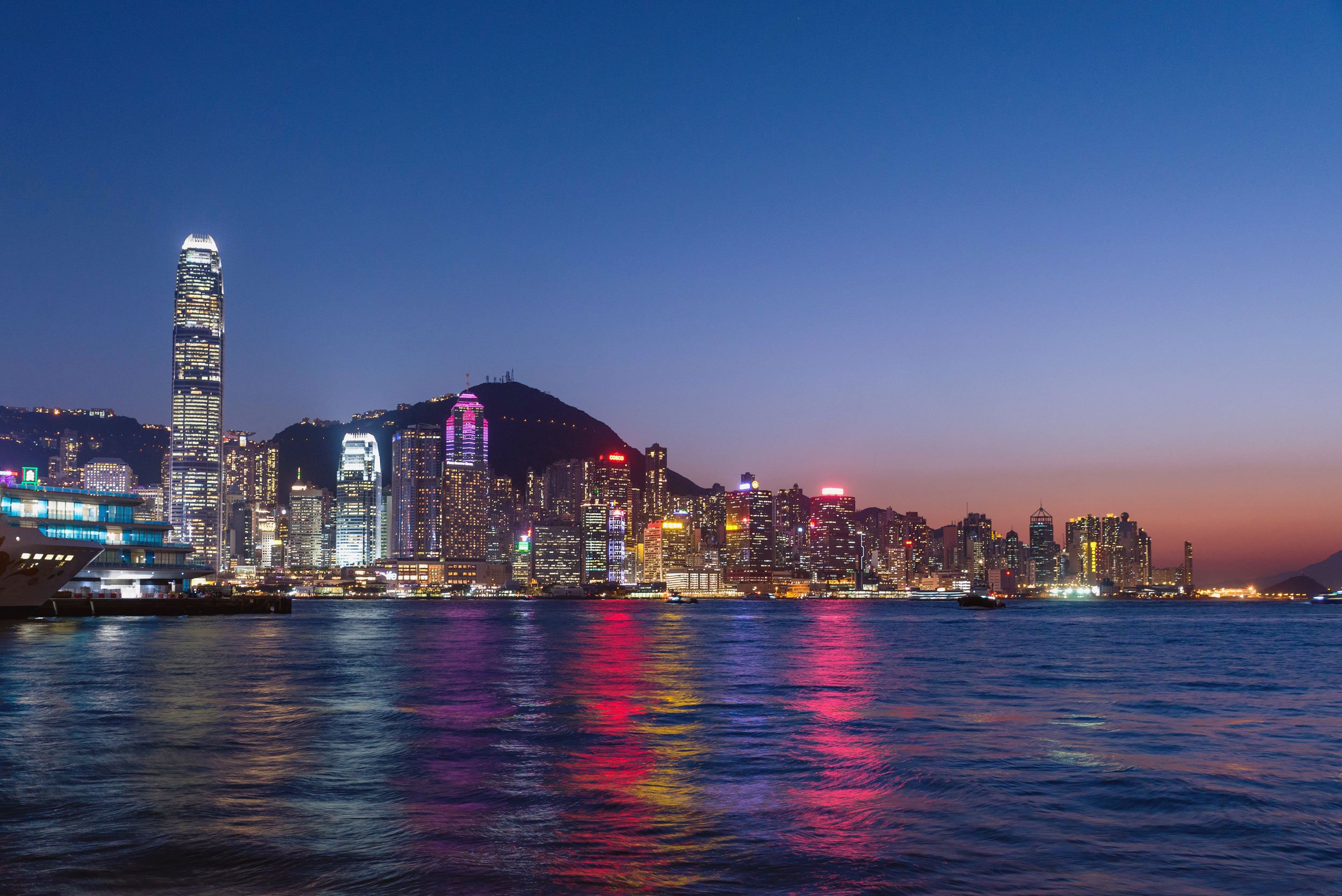



















![Having fun shooting in the futuristic elevator hallway at the SOHO Fuxing Square [INSTAGRAM]](https://images.squarespace-cdn.com/content/v1/63f8b23b0626755198127ae3/1677504040149-TLT8RUPSVPGUXGNW4PPE/shanghai-67-soho-03-barrett-02B.jpg)














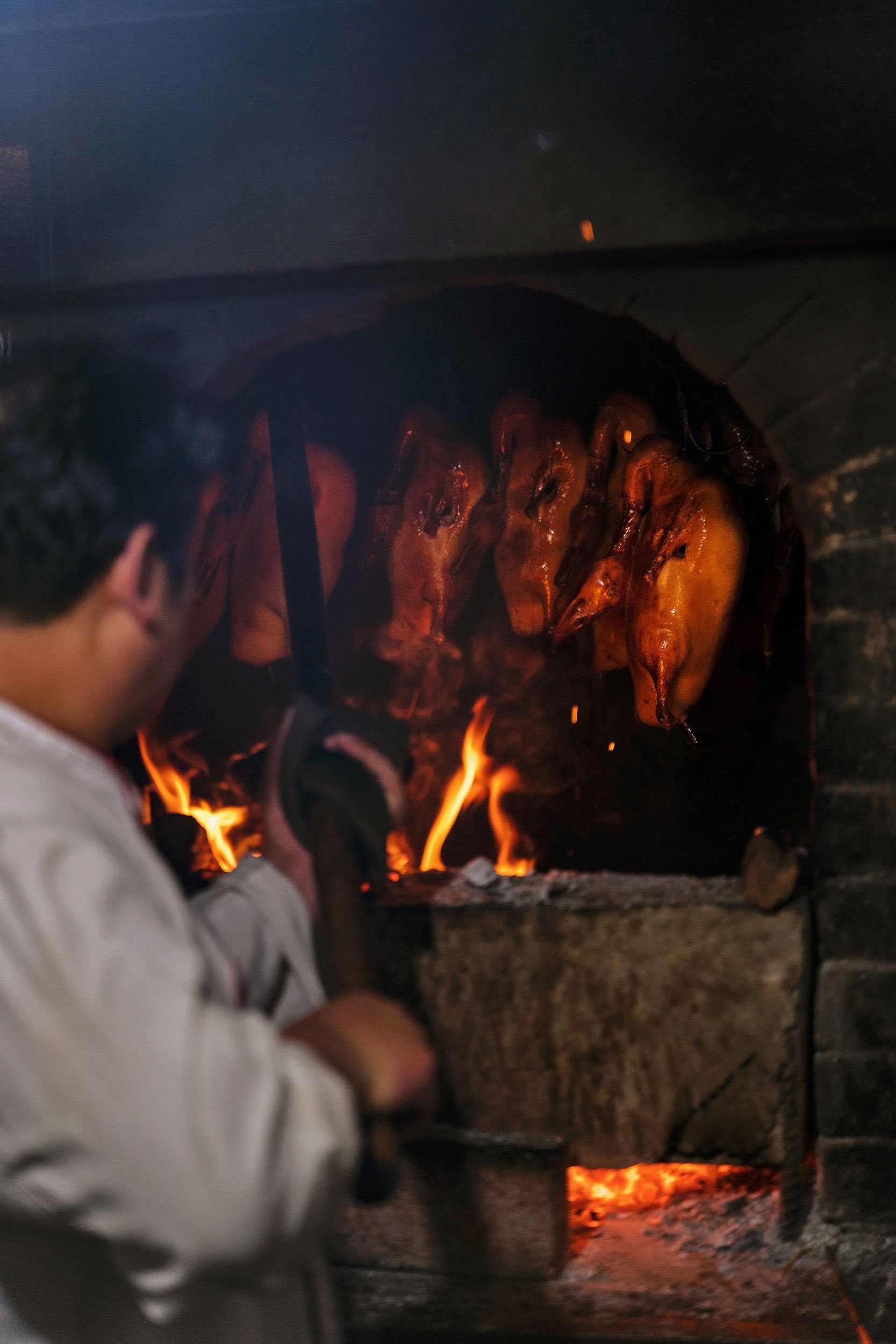
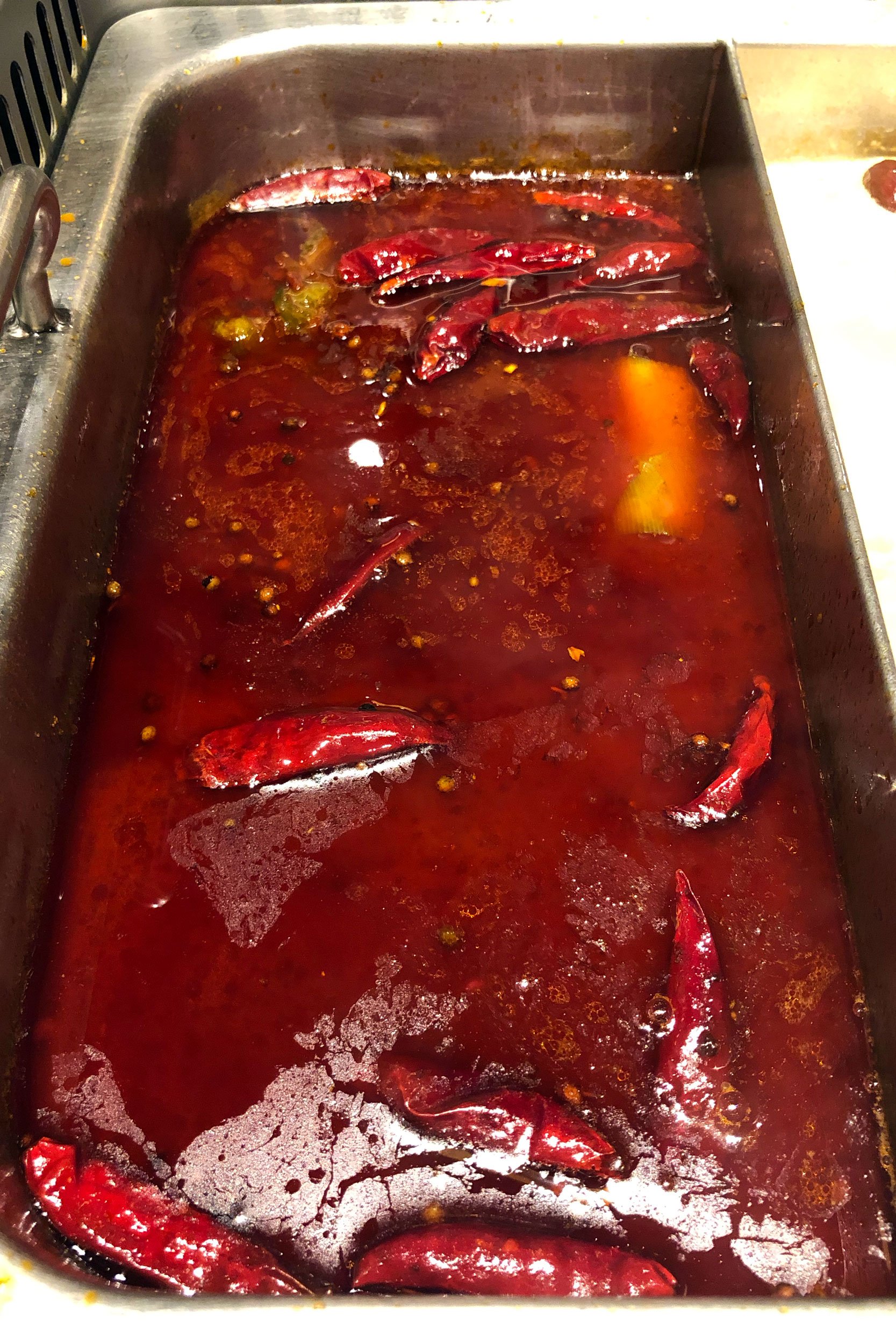










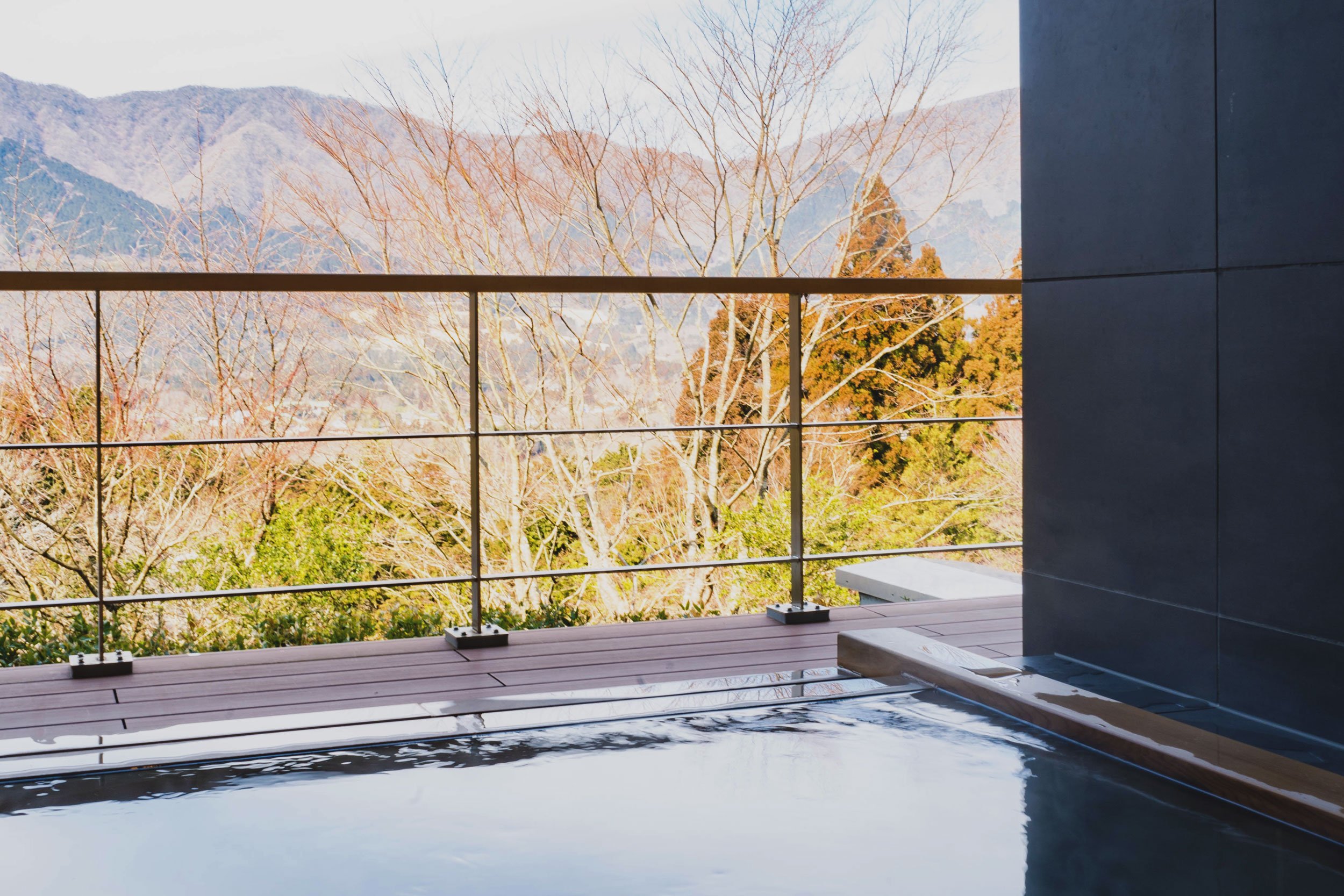





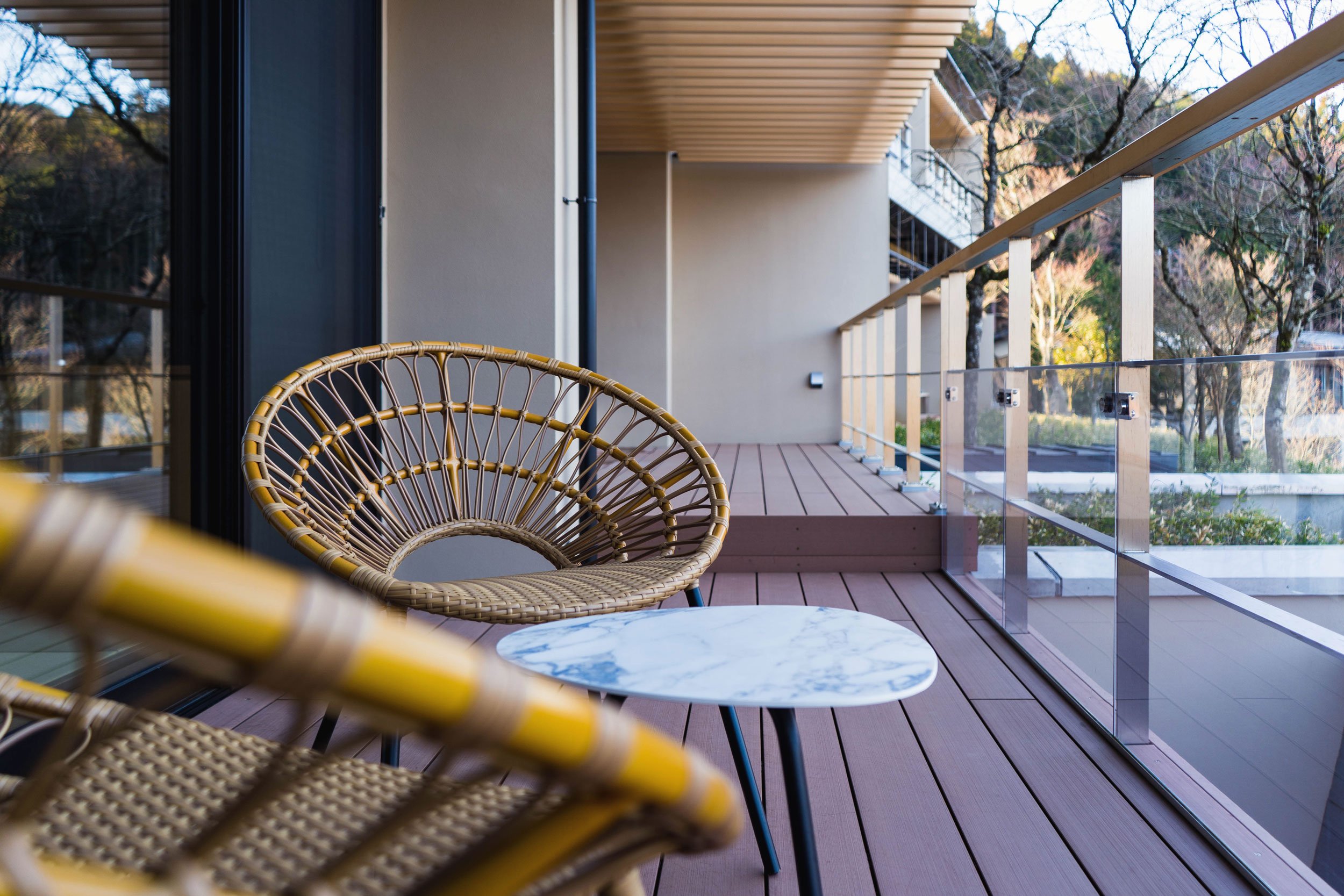






















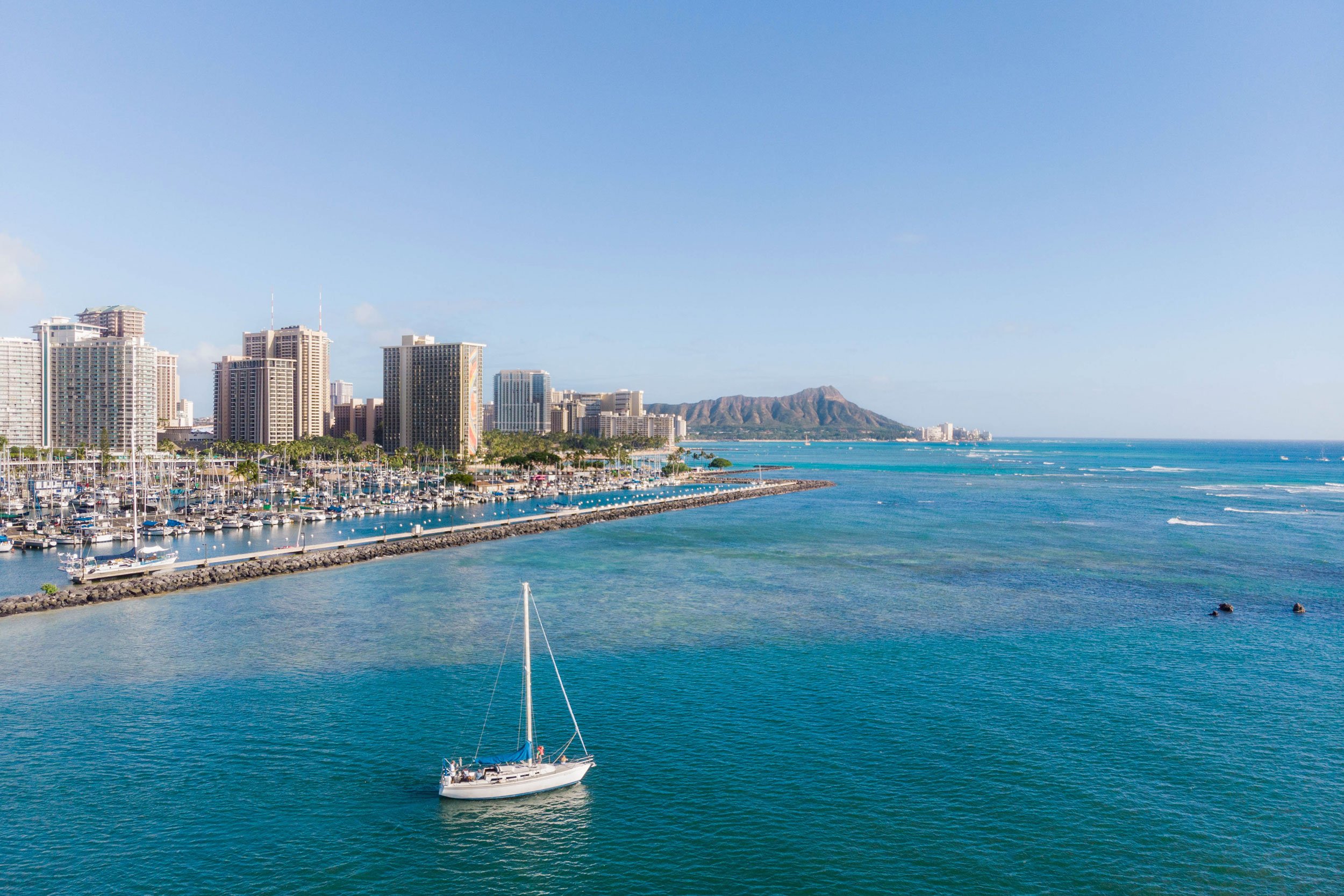




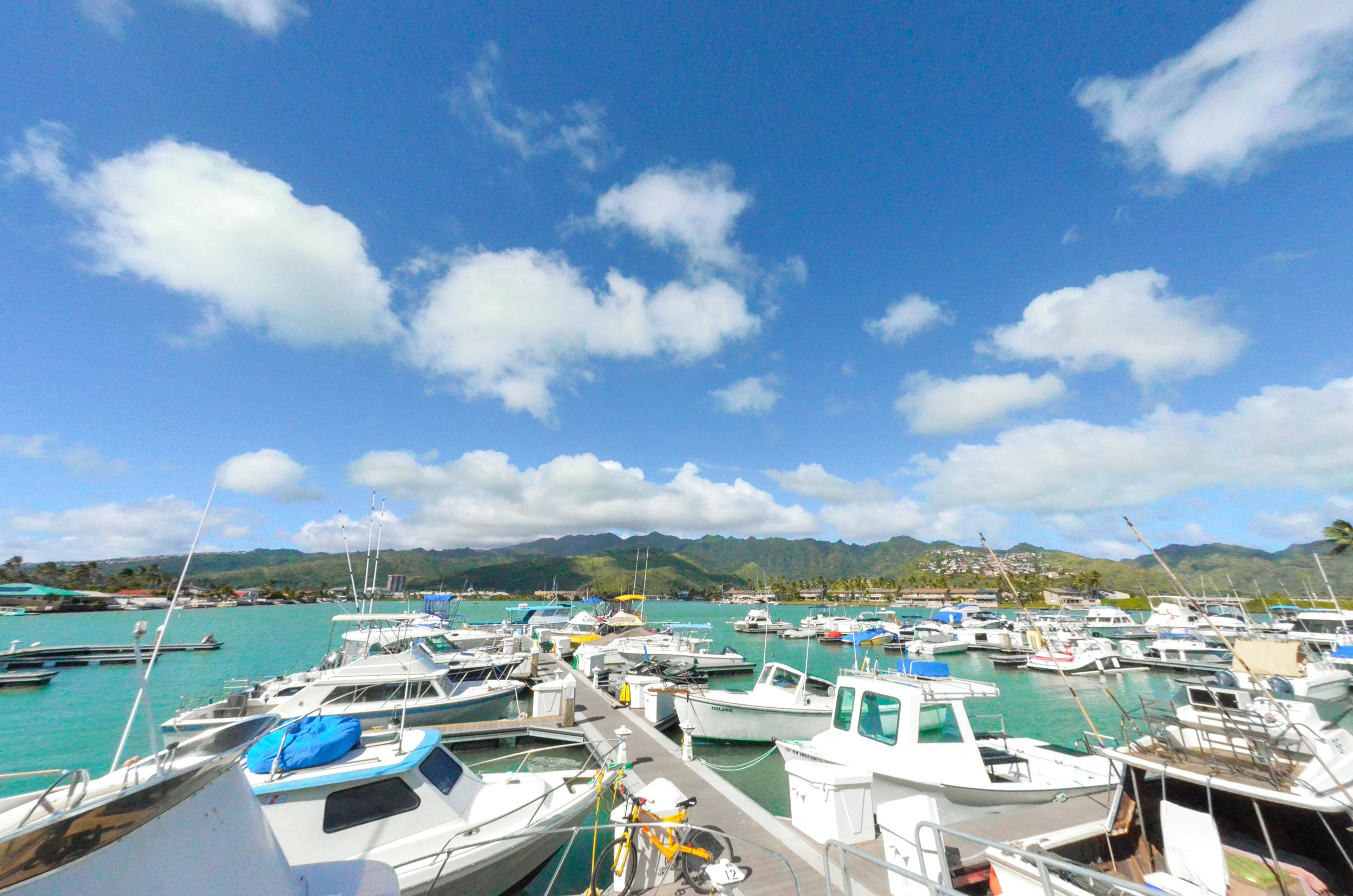
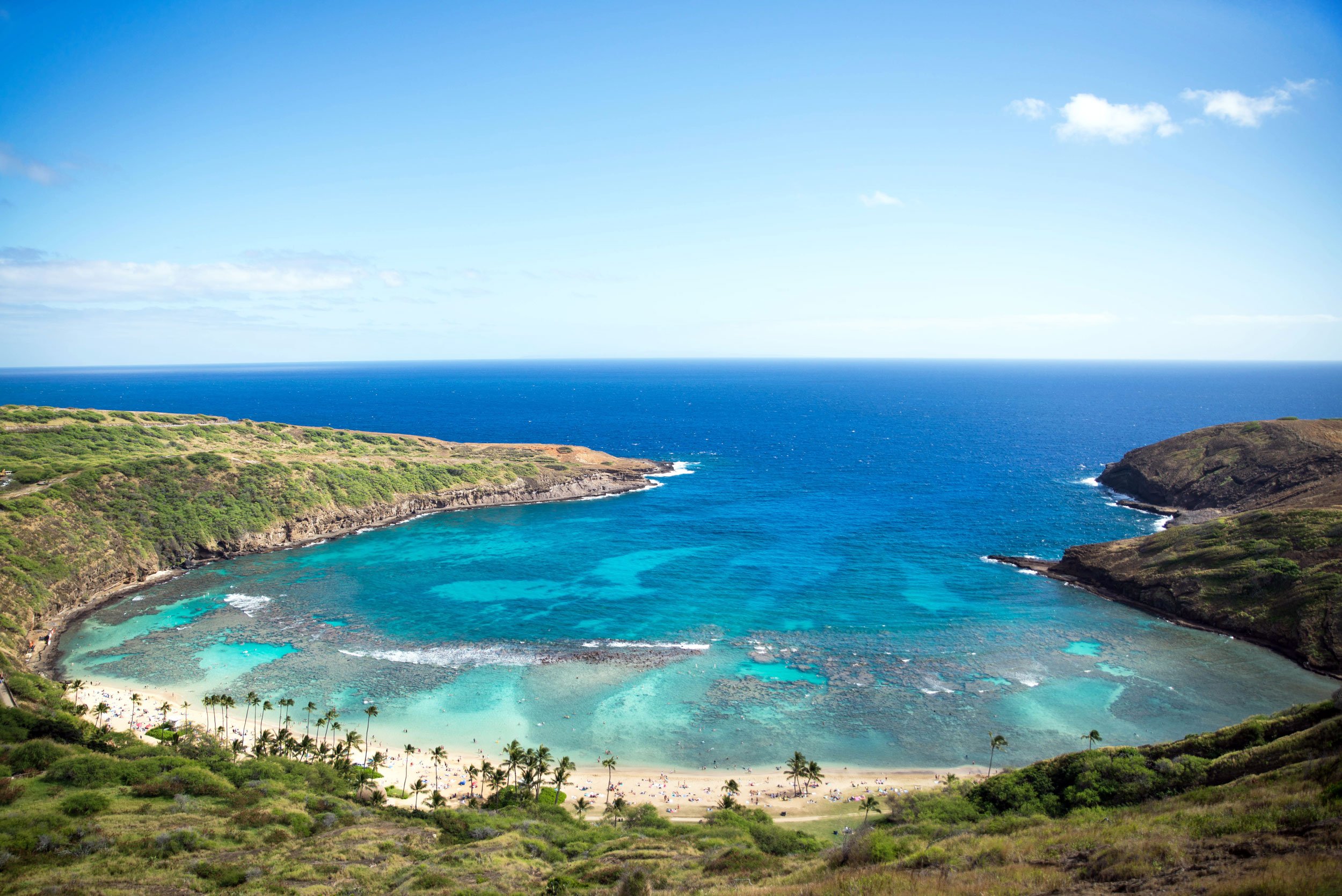



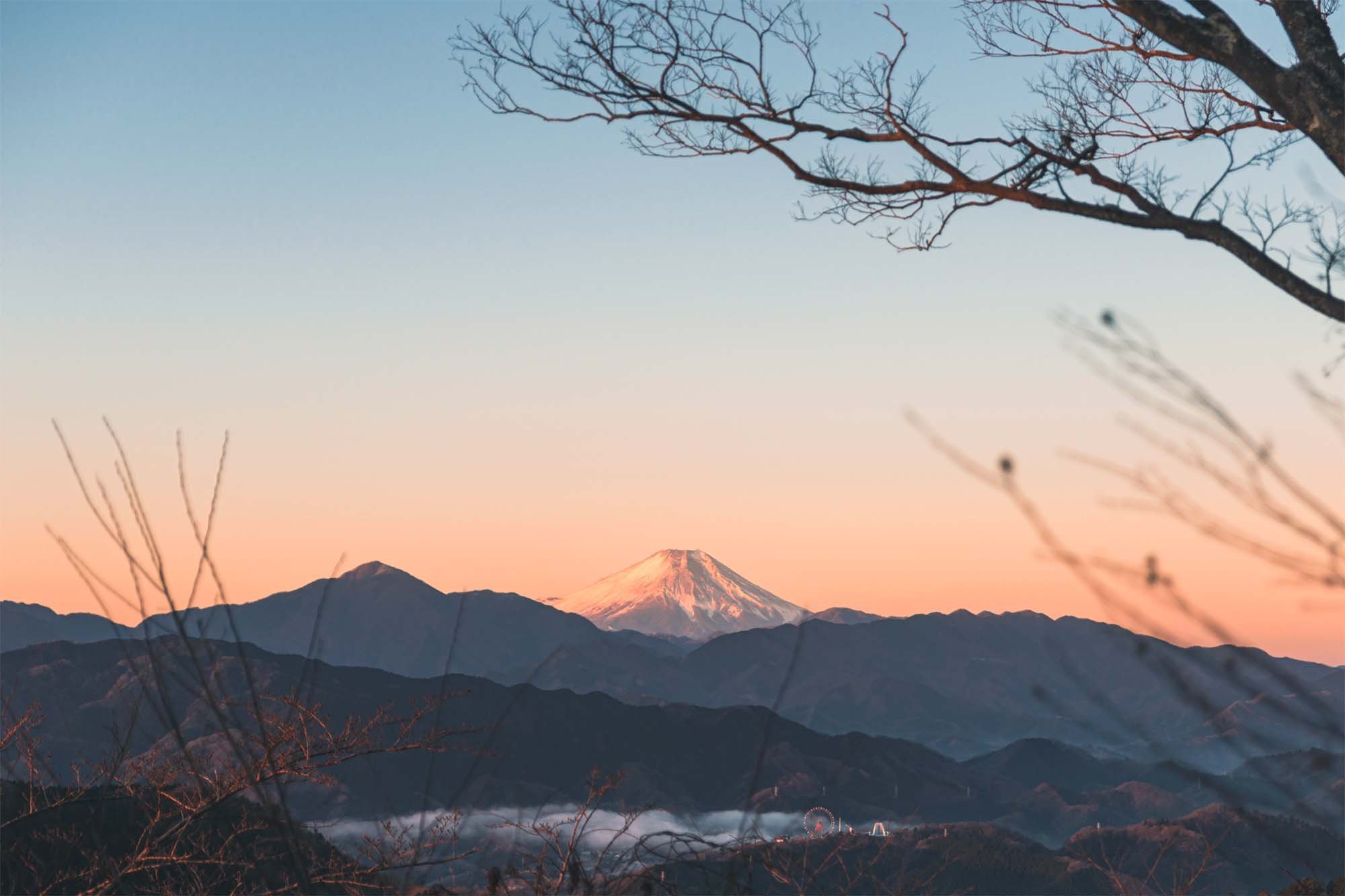



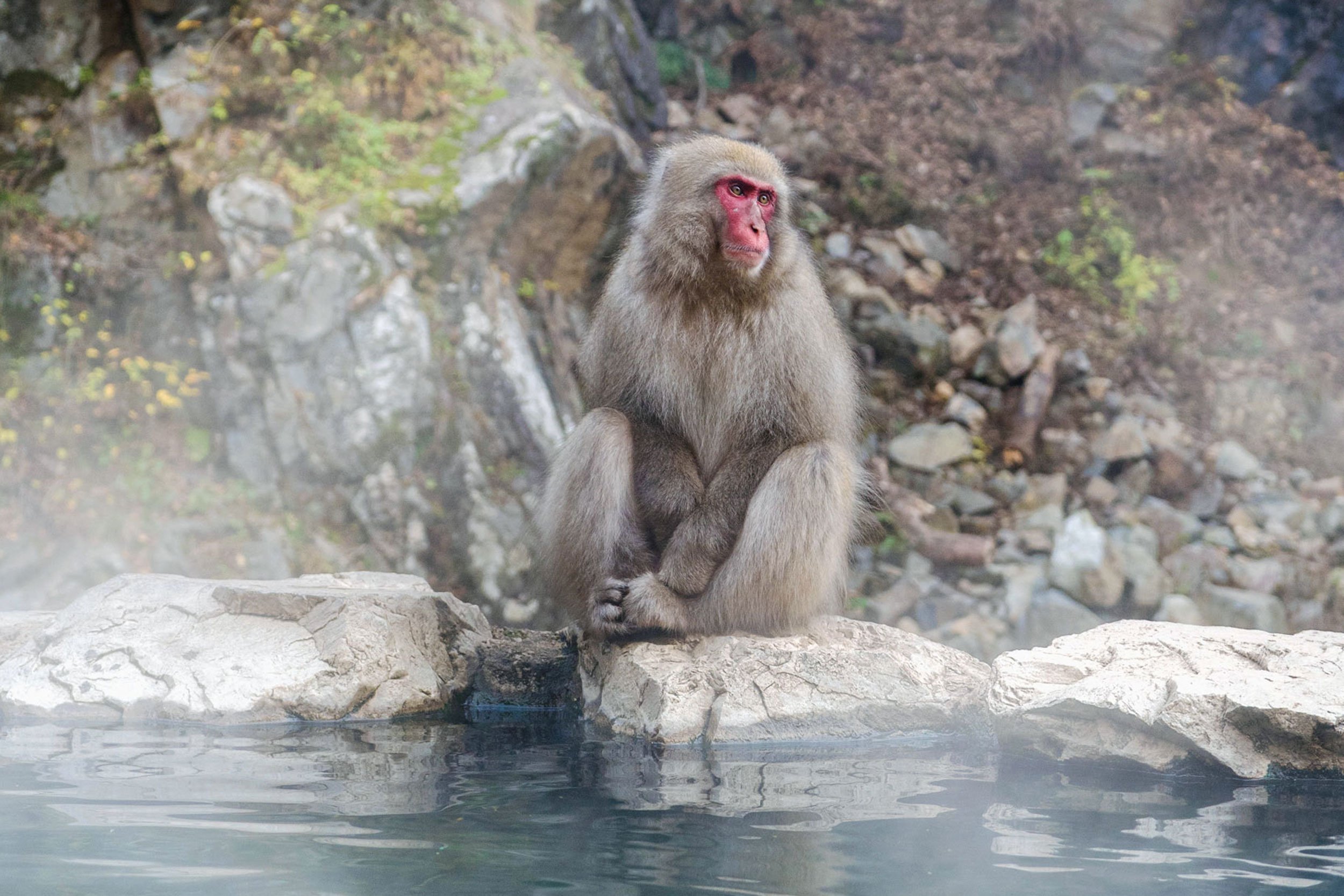











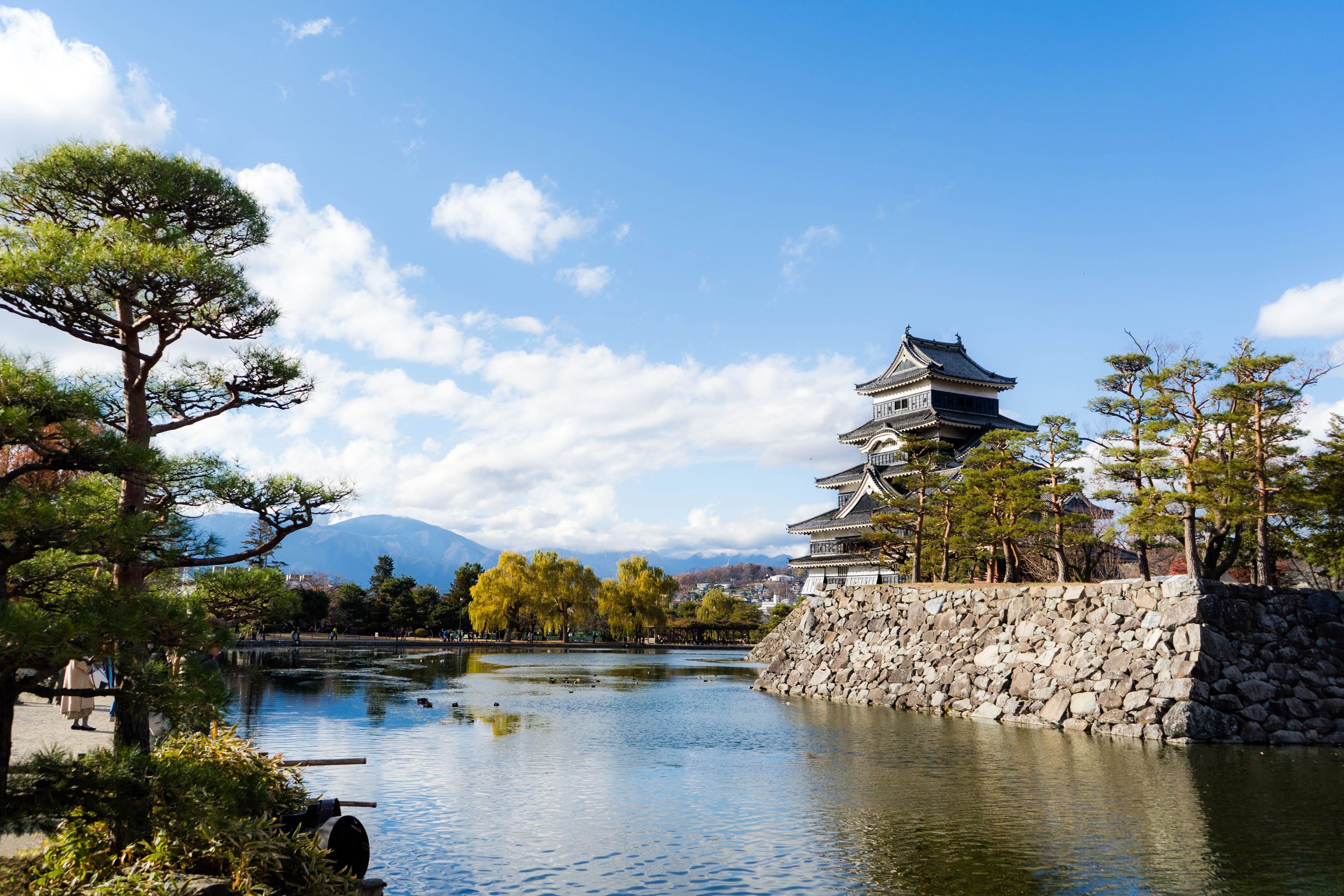





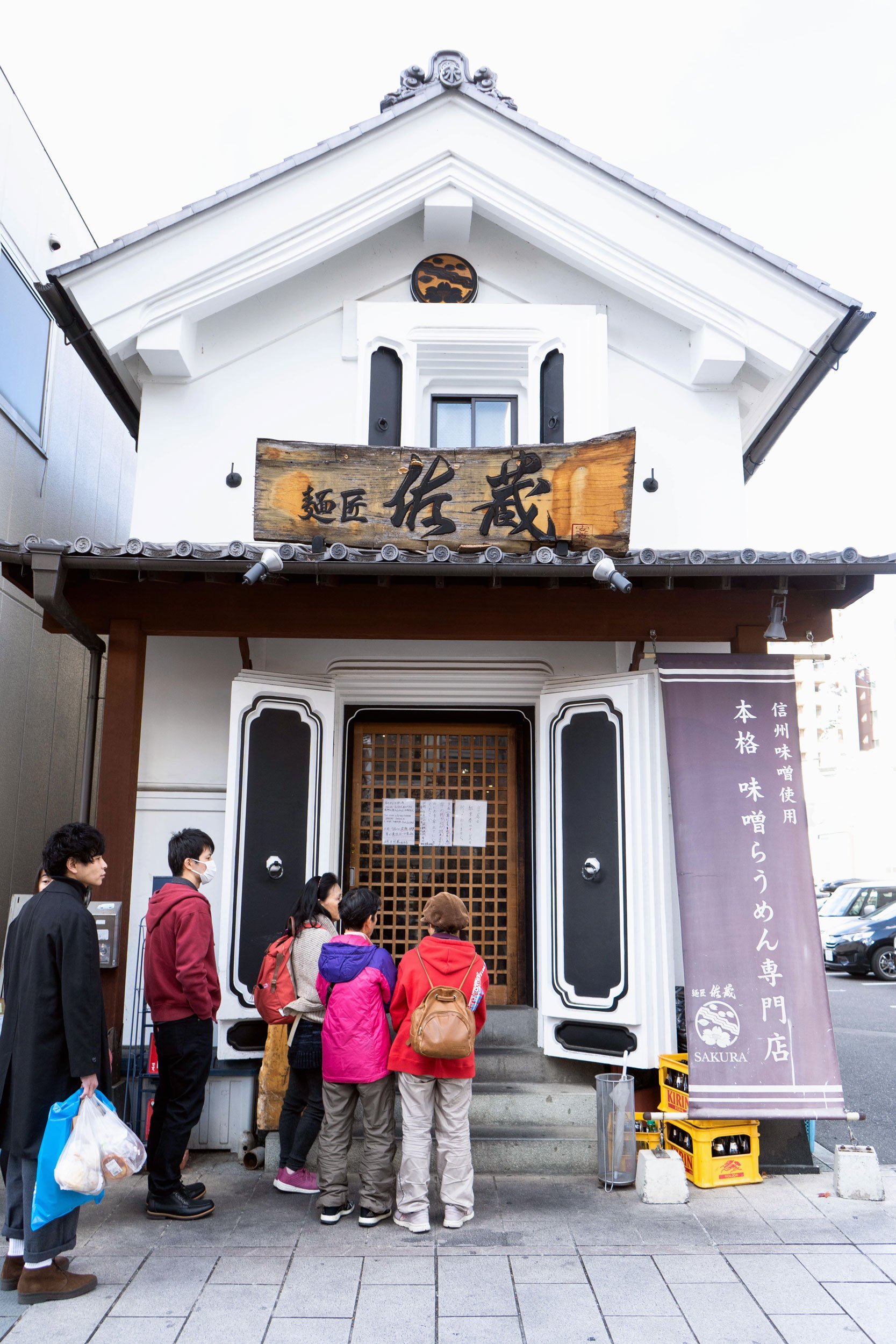



![Kiyomizudera’s fall leaves illuminated at night - [BUY PRINT - Enter KYOTOFALL for 10% off]](https://images.squarespace-cdn.com/content/v1/63f8b23b0626755198127ae3/1677508910473-5FJ00HHLFKG7LH6GJ678/image-asset.jpeg)
![Fall leaves at Kiyomizudera in Kyoto- [BUY PRINT - Enter KYOTOFALL for 10% off]](https://images.squarespace-cdn.com/content/v1/63f8b23b0626755198127ae3/1677508970876-A3GONHMLTF8O0B17JOV1/kyoto-kiyomizudera-fall-leaves-03.jpg)











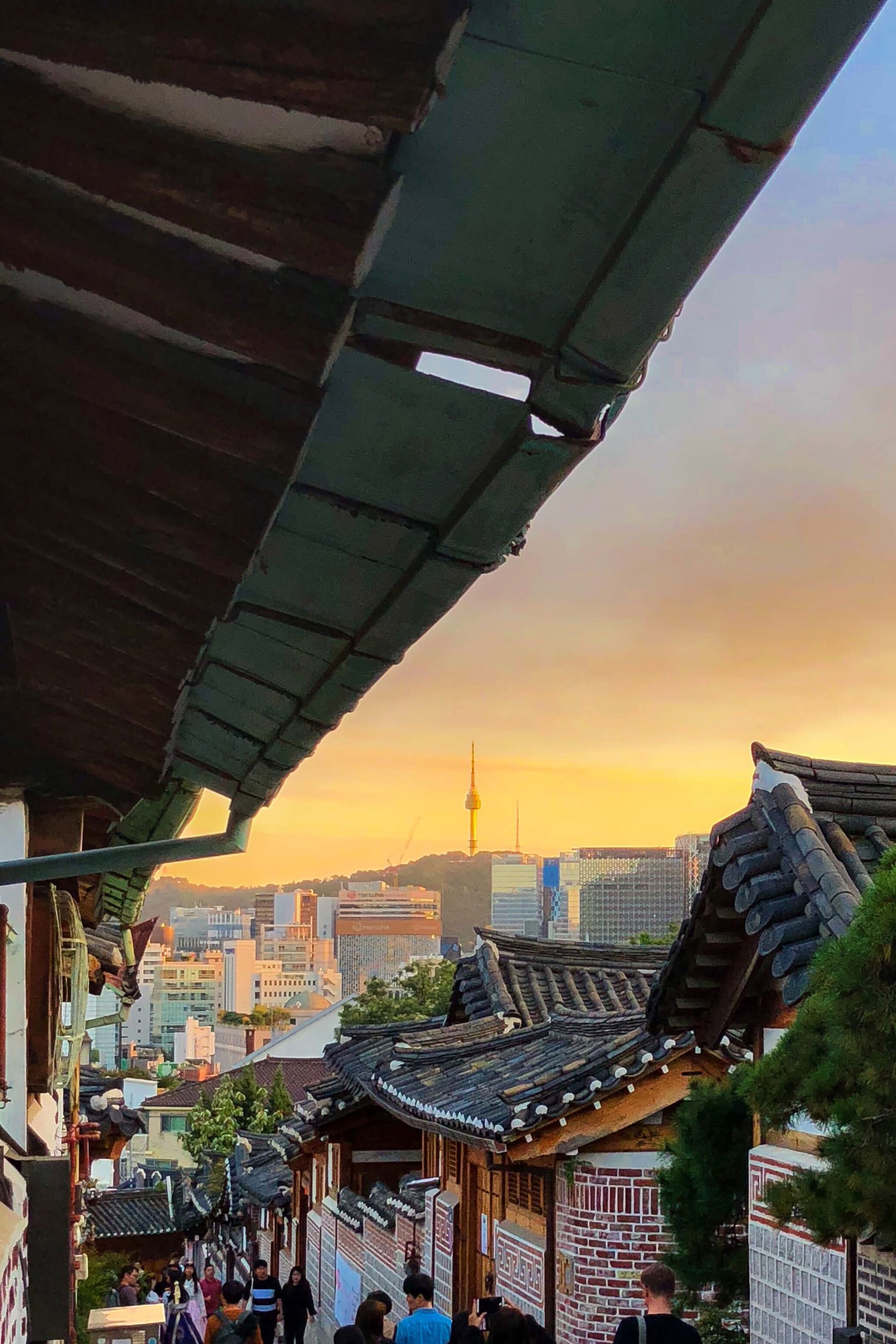
![Seoul at sundown - [BUY PRINT]](https://images.squarespace-cdn.com/content/v1/63f8b23b0626755198127ae3/1677509505672-9IU2LUULVQNNNKVAETOO/seoul-korea-lotte-world-seoul-05B.jpg)







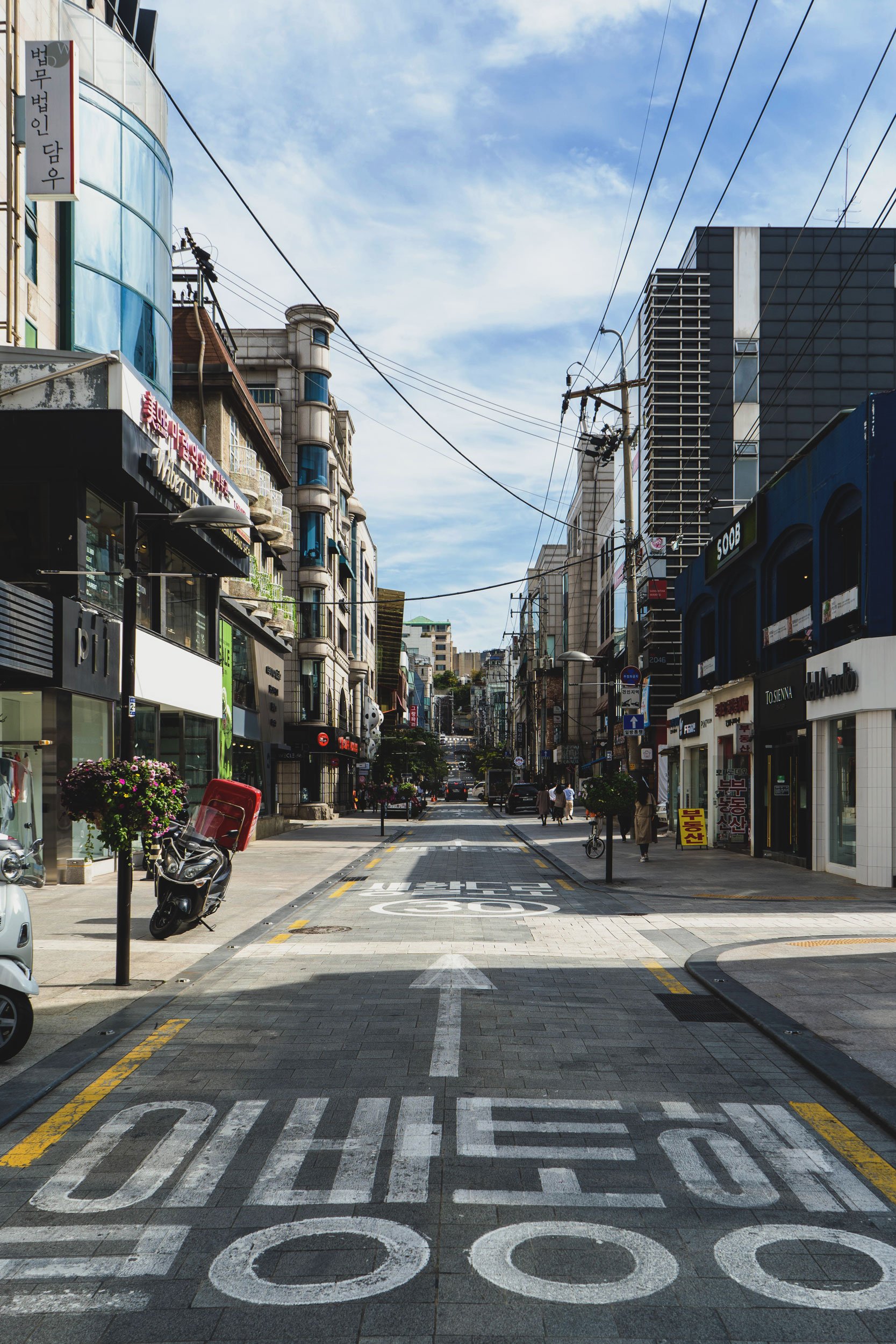

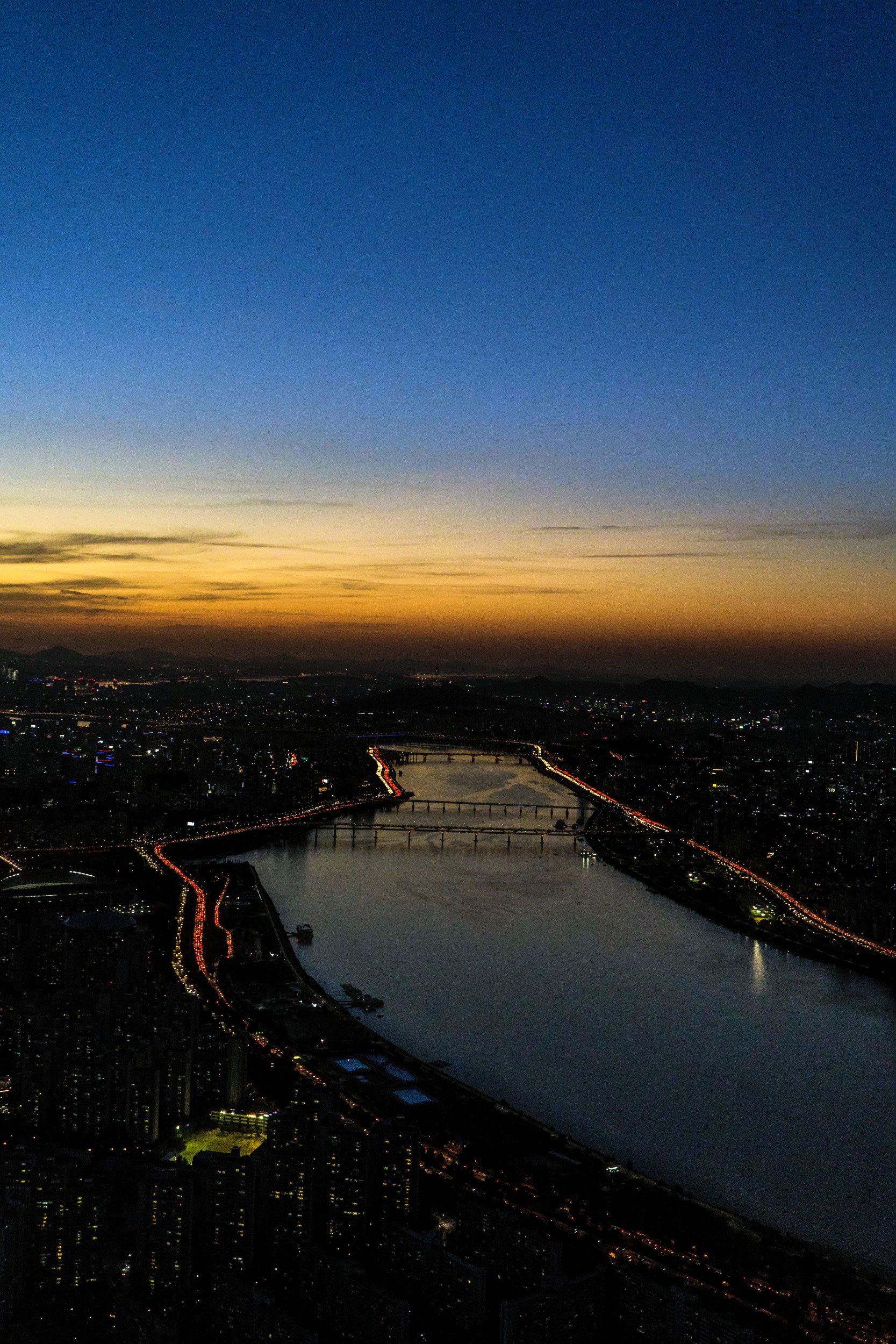




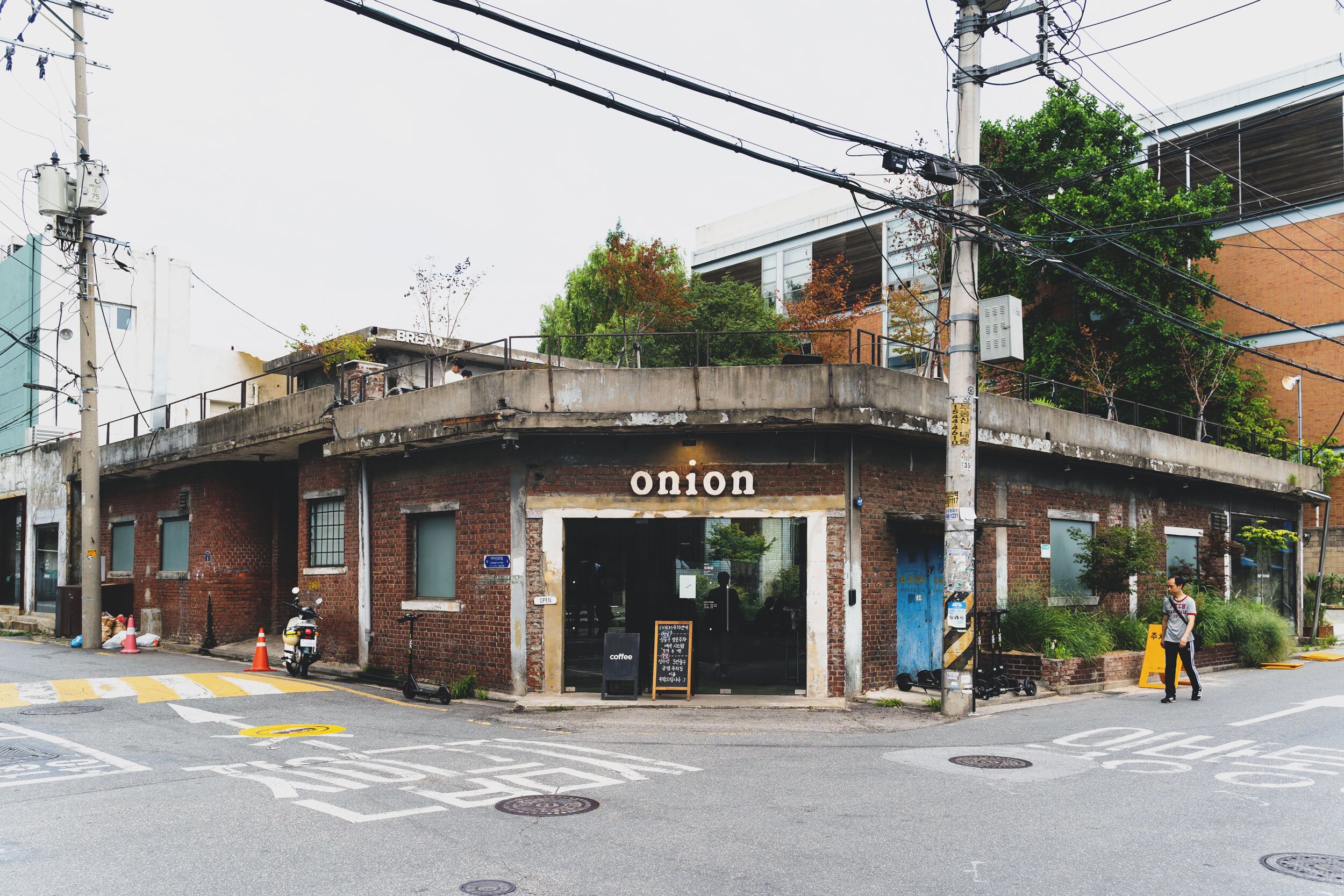















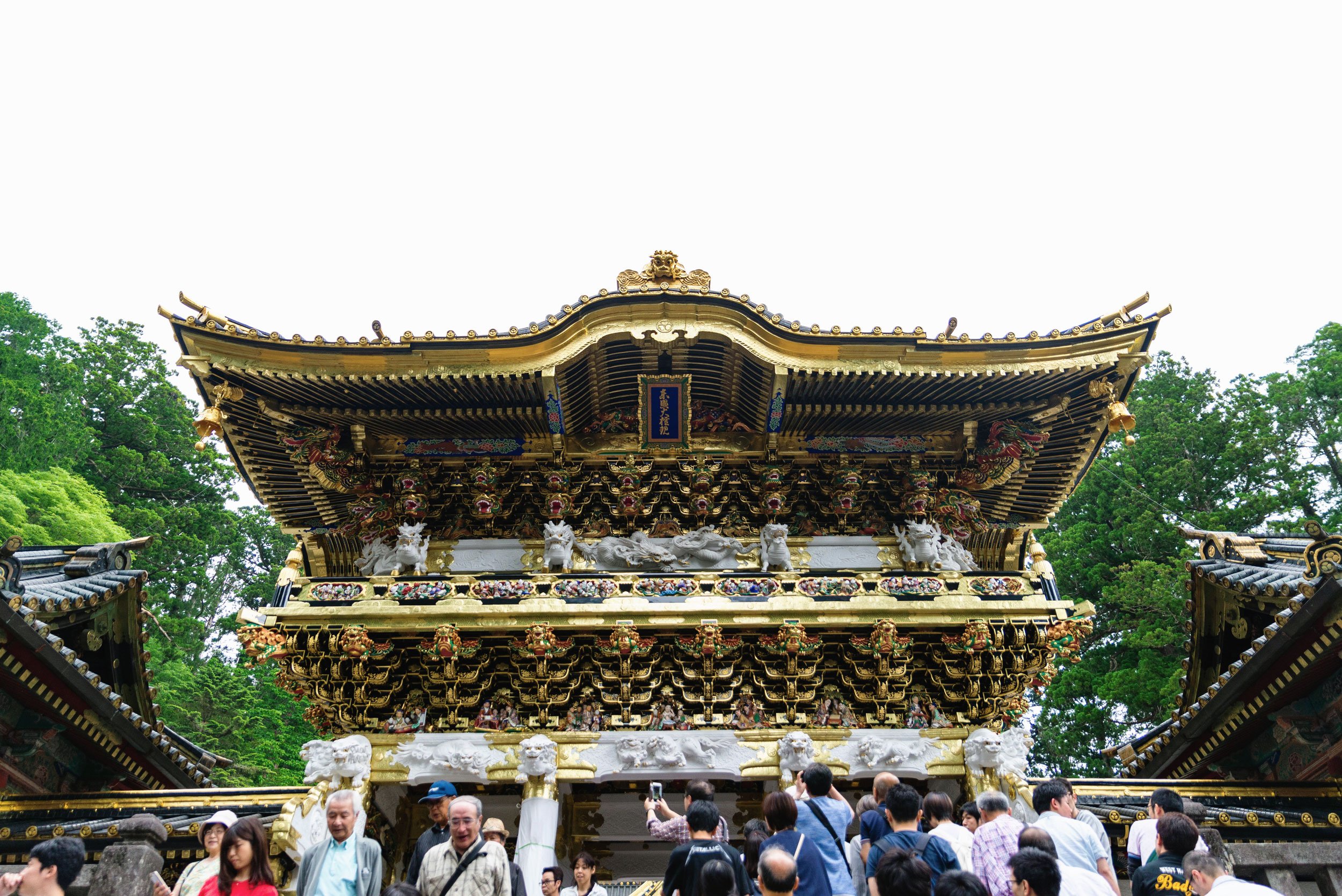
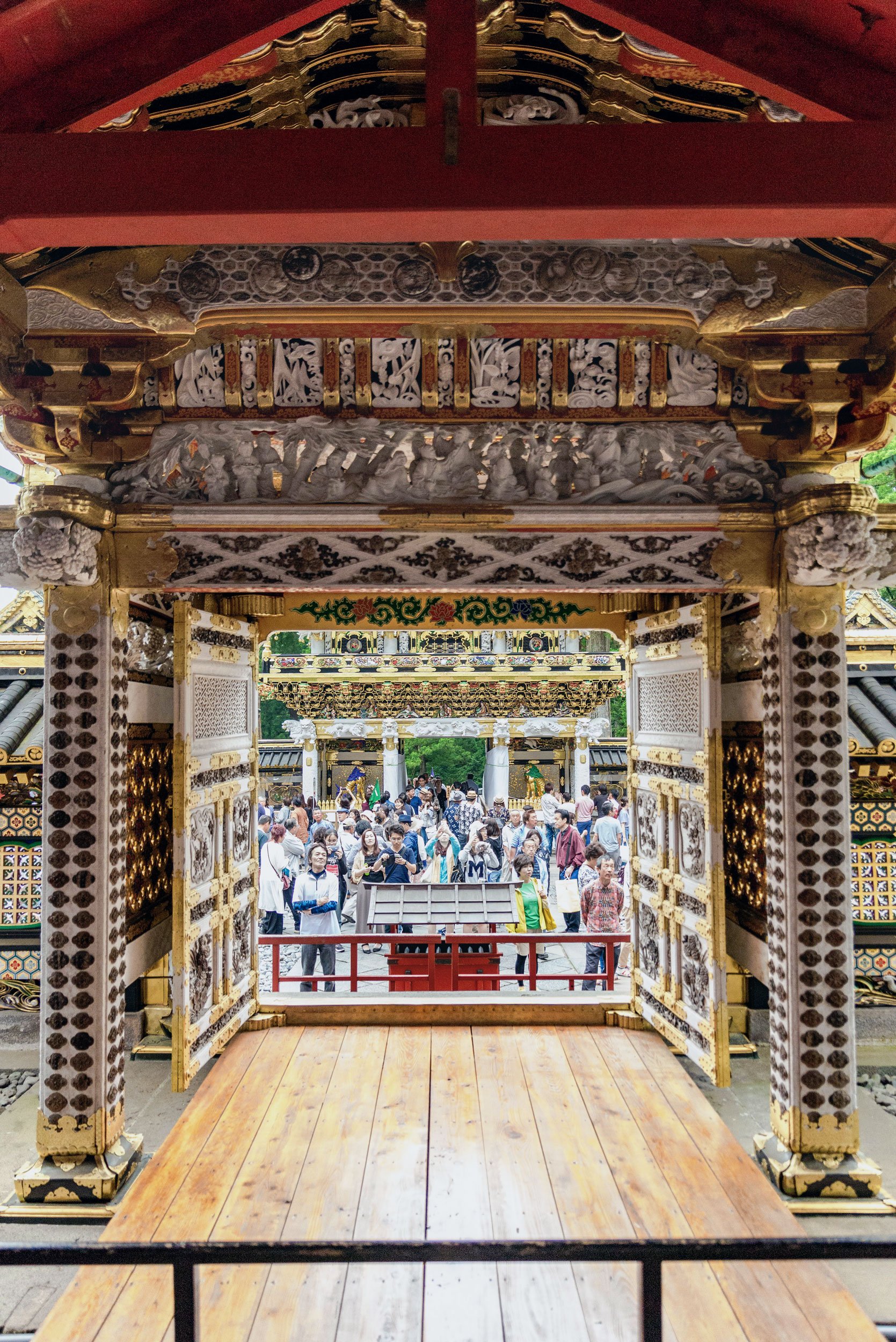








![The Enoden train in Kamakura - [BUY PRINT]](https://images.squarespace-cdn.com/content/v1/63f8b23b0626755198127ae3/1677512926334-I4EXJ5P58MS018ZI4T2S/kamakura-train-01.jpg)






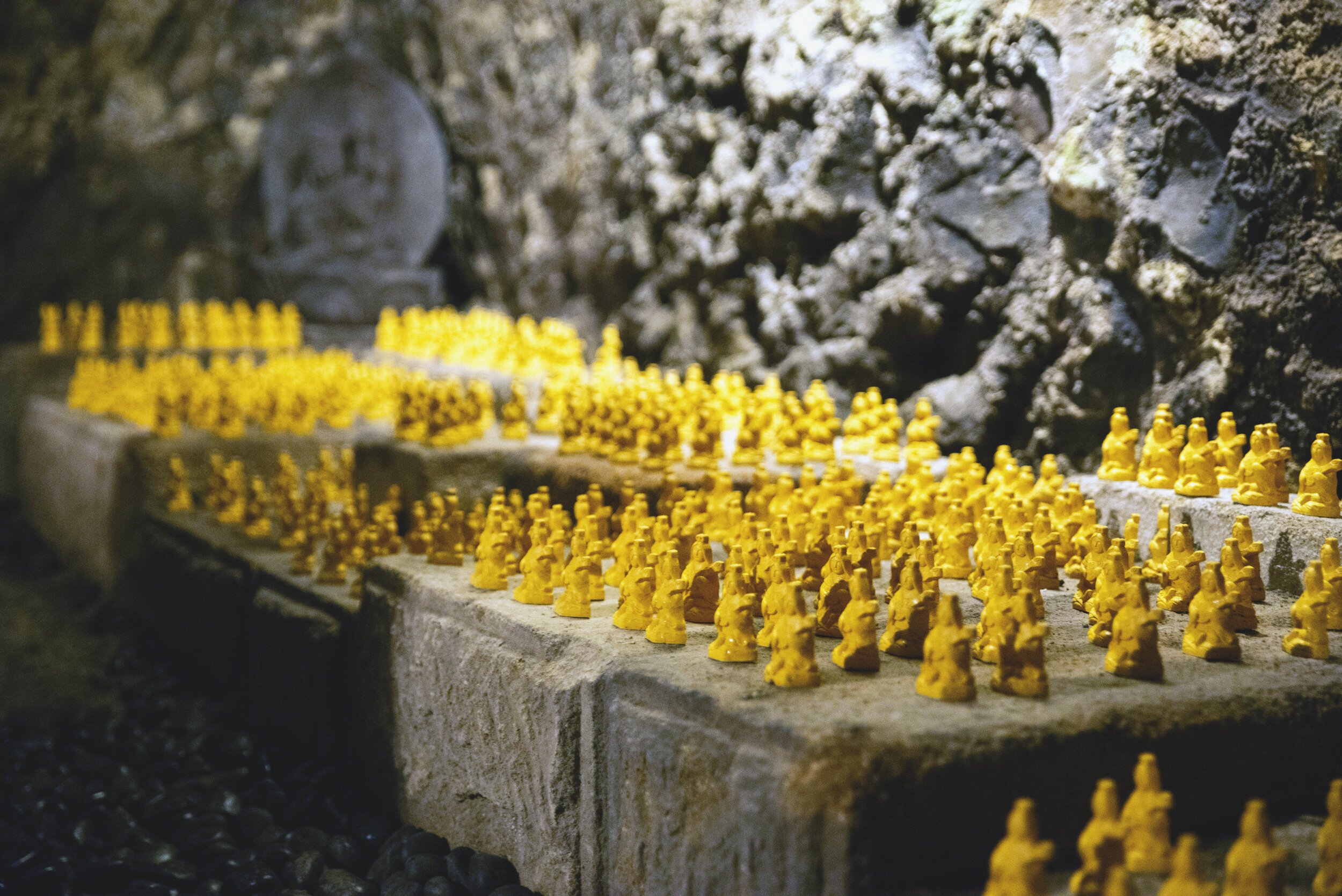
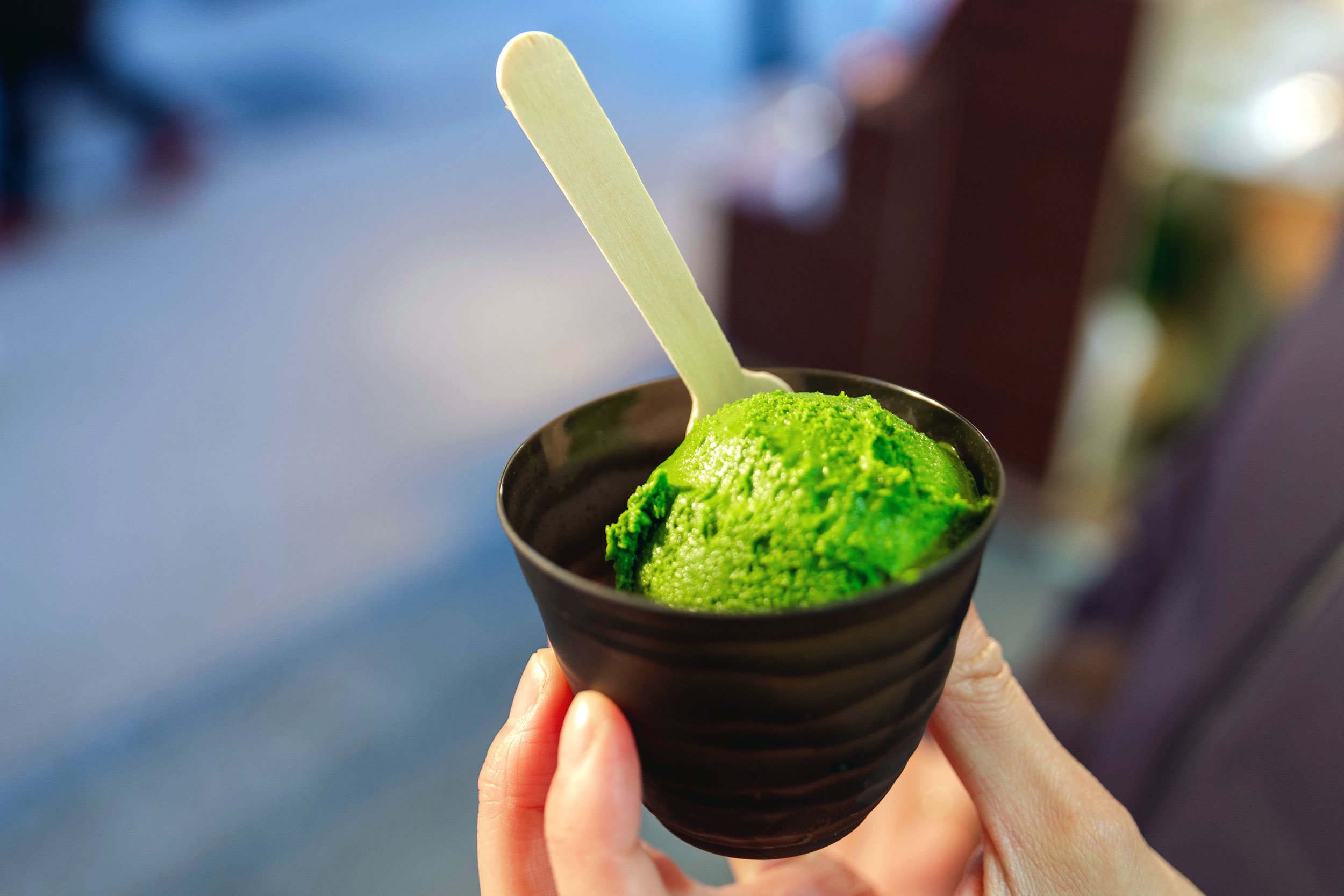




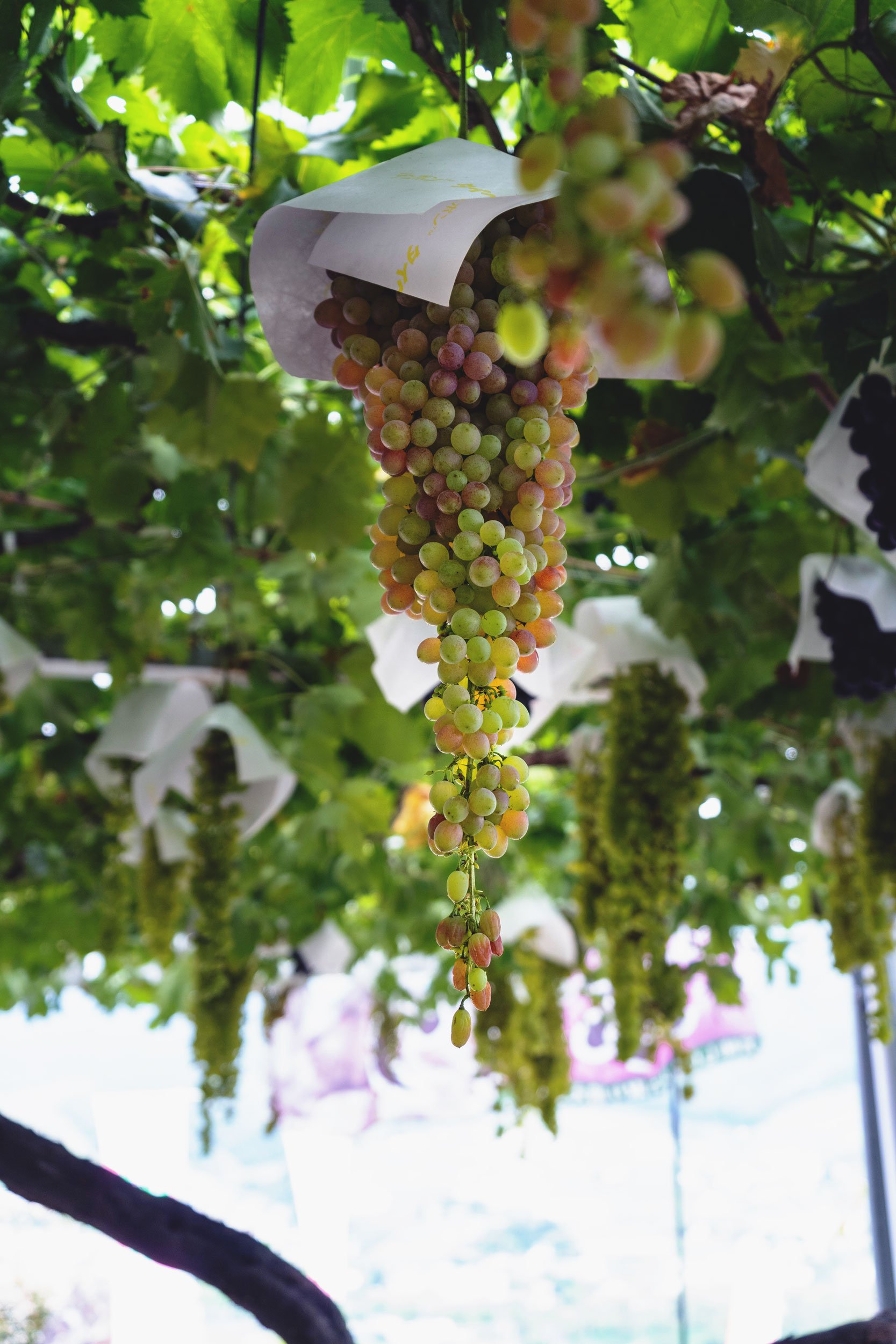


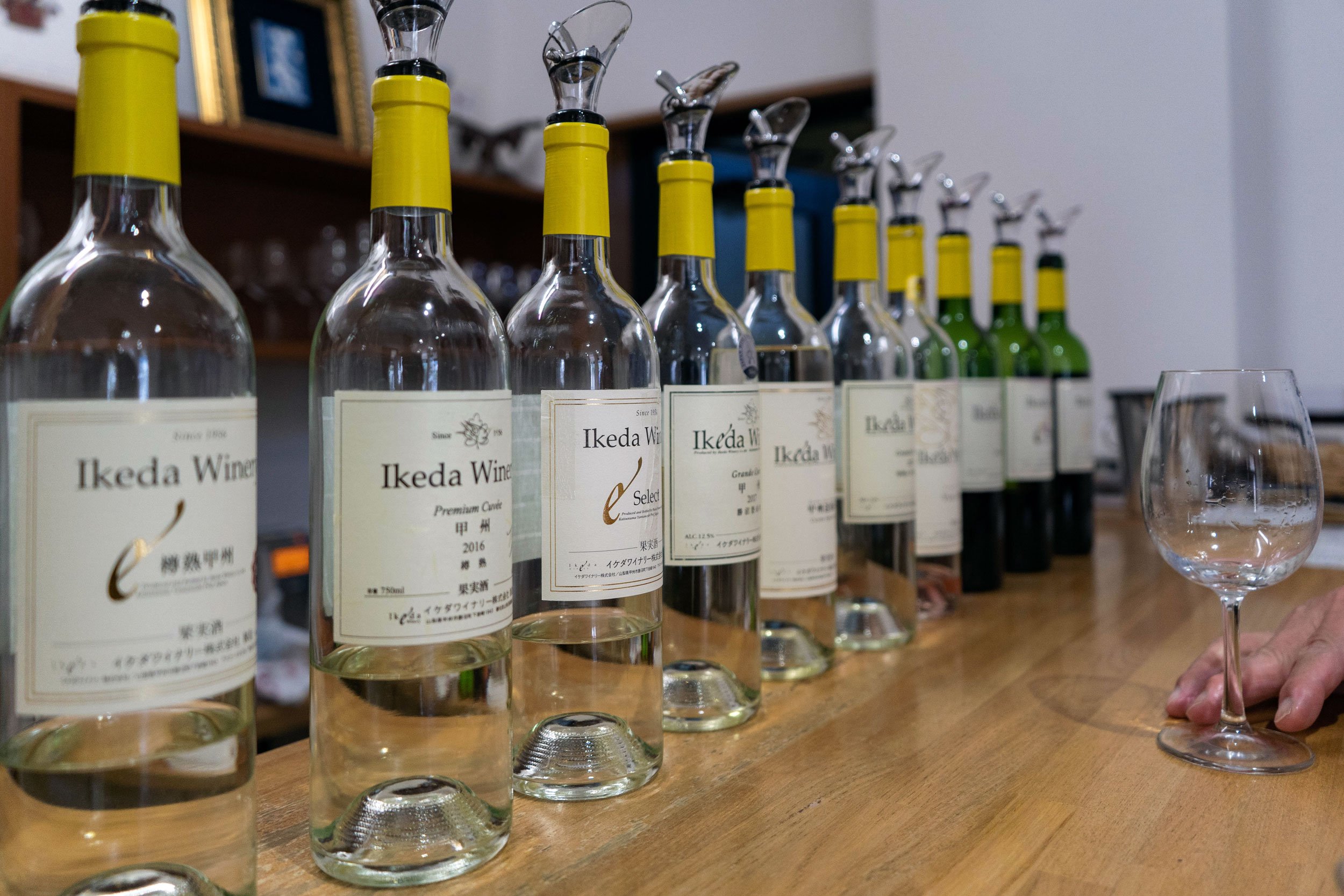

One of Seoul’s most trendy neighborhoods, nicknamed the “Brooklyn of Seoul”.